affirmative action
description: policies to improve opportunities for discriminated minority groups
413 results
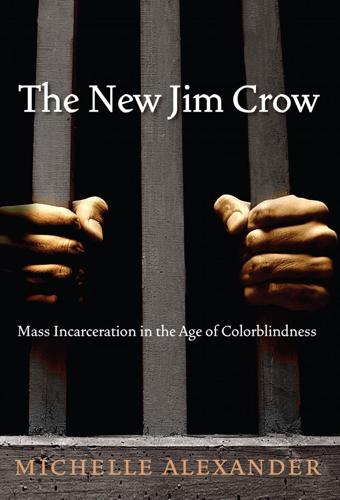
The New Jim Crow: Mass Incarceration in the Age of Colorblindness
by
Michelle Alexander
Published 24 Nov 2011
The attention of civil rights advocates has been largely devoted to other issues, such as affirmative action. During the past twenty years, virtually every progressive, national civil rights organization in the country has mobilized and rallied in defense of affirmative action. The struggle to preserve affirmative action in higher education, and thus maintain diversity in the nation’s most elite colleges and universities, has consumed much of the attention and resources of the civil rights community and dominated racial justice discourse in the mainstream media, leading the general public to believe that affirmative action is the main battlefront in U.S. race relations—even as our prisons fill with black and brown men.
…
In other words, the black middle class does not reflect a lowering of racist barriers in occupations so much as the opposite: racism is so entrenched that without government intervention there would be little ‘progress’ to boast about.”43 In view of all this, we must ask, to what extent has affirmative action helped us remain blind to, and in denial about, the existence of a racial undercaste? And to what extent have the battles over affirmative action distracted us and diverted crucial resources and energy away from dismantling the structures of racial inequality? The predictable response is that civil rights advocates are as committed to challenging mass incarceration and other forms of structural racism as they are to preserving affirmative action. But where is the evidence of this? Civil rights activists have created a national movement to save affirmative action, complete with the marches, organizing, and media campaigns, as well as incessant strategy meetings, conferences, and litigation.
…
The question posed here is whether affirmative action has functioned similarly, offering relatively meager material advantages but significant psychological benefits to people of color, in exchange for the abandonment of a more radical movement that promised to alter the nation’s economic and social structure. To be clear: This is not an argument that affirmative action policies conflict with King’s dream that we might one day be “judged by the content of our character, not the color of our skin.” King himself would have almost certainly endorsed affirmative action as a remedy, at least under some circumstances.
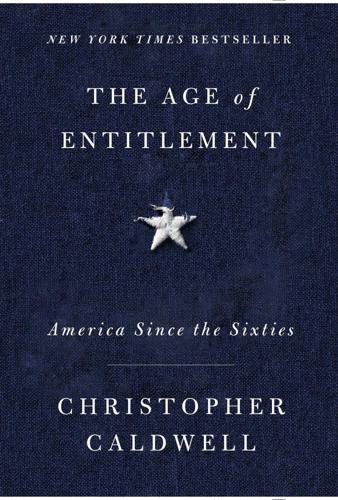
The Age of Entitlement: America Since the Sixties
by
Christopher Caldwell
Published 21 Jan 2020
It is a question that cannot be asked without arousing emotions so strong that one wonders just how far scholarship will be allowed to go on this issue. Truth was among the first casualties of the affirmative action regime. At the simplest level the term “affirmative action” meant discarding prevailing notions of neutrality in order to redistribute educational and employment chances on the basis of race. The idea that it could be a permanent solution to the problem of racial prejudice required doublethink. “Affirmative action requires the use of race as a socially significant category of perception and representation,” as Kimberlé Crenshaw and her colleagues put it, “but the deepest elements of mainstream civil rights ideology had come to identify such race-consciousness as racism itself.”
…
But he thought it would be okay for UC Davis to achieve the same result by filling its slots the way Harvard’s undergraduate admissions program did—not through quotas but through a “new definition of diversity” that allowed administrators to use race as a “plus factor.” Powell’s suggestion that Harvard College’s experience of affirmative action might serve as a model for provincial public professional schools was, to put it mildly, confused. The basic problem that affirmative action existed to solve was a shortage of blacks qualified to fill leadership positions. With its wealth and prestige, Harvard would have an easier time attracting and forming such people than any other institution in the world. Affirmative action’s most ingenious defender, the Anglo-American legal philosopher Ronald Dworkin, saw immediately that Powell had mistaken a constitutional question for an administrative one.
…
Republicans and others who may have been uneasy that the constitutional baby had been thrown out with the segregationist bathwater consoled themselves with a myth: The “good” civil rights movement that the martyred Martin Luther King, Jr., had pursued in the 1960s had, they said, been “hijacked” in the 1970s by a “radical” one of affirmative action, with its quotas and diktats. Once the country came to its senses and rejected this optional, radical regime, it could have the good civil rights regime back. None of that was true. Affirmative action and political correctness were the twin pillars of the second constitution. They were what civil rights was. They were not temporary. Affirmative action was deduced judicially from the curtailments on freedom of association that the Civil Rights Act itself had put in place.
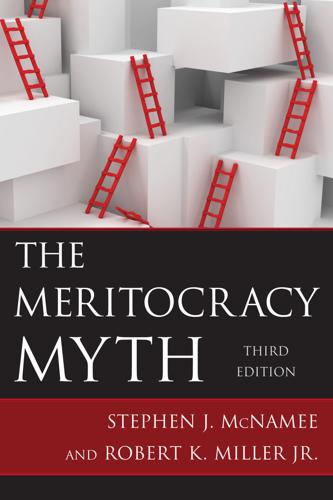
The Meritocracy Myth
by
Stephen J. McNamee
Published 17 Jul 2013
Such proactive measures generally fall under the label of what has become known as affirmative action. Like antidiscrimination laws, the goal of affirmative action policies is to make equal opportunity a reality for members of groups that have historically been the objects of discrimination. Unlike antidiscrimination laws, which provide remedies to which individuals can appeal after they have suffered discrimination, affirmative action policies aim to keep discrimination from occurring and compensate for injustices incurred in the past. Affirmative action can prevent discrimination by replacing practices that are discriminatory, either by intent or default, with practices that safeguard against discrimination.
…
Although a grateful nation may want to extend preference in hiring to veterans for prior service rendered, veteran status in itself does not qualify as a merit consideration. Although Americans are generally in favor of the ideal of equality of opportunity, they are often opposed to affirmative action attempts to achieve that outcome. The objection is not so much against affirmative action in principle but against specific provisions of some forms of affirmative action, especially those that target minorities and women. As a result, race- or sex-based affirmative action programs are a “hard sell” to the American public, especially during periods of economic slowdown or decline (Wilson 1987; Conley 1999). This is further complicated in the case of race-based programs by increasing rates of racial intermarriage, increasingly blurred racial boundaries, and increasing multiracial identities (Winant 2012).
…
Rather than a single policy that involves the same procedures, affirmative action comprises a complex set of policies and practices, including admission standards for schools and universities, guidelines for hiring practices, and procedures for the granting of government contracts. Affirmative action grew out of civil rights laws, presidential executive orders, court cases, federal implementation efforts, and voluntary human resource practices implemented by employers. Each has its own characteristics and complex history (Reskin 1998; Waters 2012). In a series of affirmative action cases, the U.S. Supreme Court has progressively limited affirmative action policies and practices.
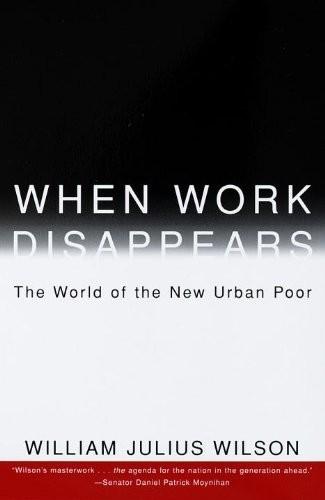
When Work Disappears: The World of the New Urban Poor
by
William Julius Wilson
Published 1 Jan 1996
These shifts have led to sharp increases in joblessness and the related problems of highly concentrated poverty, welfare dependency, and family breakup, despite the passage of antidiscrimination legislation to correct discriminatory patterns through litigation and the creation of affirmative action programs that mandate “goals and timetables” for the employment of minorities. Race-based programs have helped to bring about sharp increases in the number of blacks entering higher education and gaining professional and managerial positions. Moreover, as long as minorities are underrepresented in higher-paying and desirable positions in society, affirmative action programs will be needed. Nonetheless, in response to cries from conservatives to abolish affirmative action altogether, some liberals have argued for a shift from an affirmative action based on race to one based on economic class position or need.
…
Minority individuals from the most advantaged families tend to be disproportionately represented among those of their racial group most qualified for preferred status, such as college admissions, higher-paying jobs, and promotions. Thus, policies of affirmative action are likely to enhance opportunities for the more advantaged without adequately remedying the problems of the disadvantaged. To be sure, affirmative action was not intended solely to benefit the more advantaged minority individuals. As William L. Taylor, the former director of the United States Civil Rights Commission, has stated, “The focus of much of the [affirmative action] effort has been not just on white-collar jobs, but also on law enforcement, construction work, and craft and production in large companies—all areas in which the extension of new opportunities has provided upward mobility for less advantaged minority workers.”
…
Instead of seeking remedies only for individual complaints of discrimination, as specified in Title VII of the Civil Rights Act of 1964, they sought government-mandated affirmative action programs designed to ensure adequate minority representation in employment, education, and public programs. However, if the more advantaged members of minority groups benefit disproportionately from policies that embody the principle of equality of individual opportunity, they also profit disproportionately from affirmative action policies based solely on their racial group membership. Minority individuals from the most advantaged families tend to be disproportionately represented among those of their racial group most qualified for preferred status, such as college admissions, higher-paying jobs, and promotions.

Data Action: Using Data for Public Good
by
Sarah Williams
Published 14 Sep 2020
Eric Gordon and Paul Mihailidis (Cambridge, MA: MIT Press, 2016). 36 Ford Fessenden and Josh Keller, “How Minorities Have Fared in States with Affirmative Action Bans,” January 7, 2019, https://www.nytimes.com/interactive/2013/06/24/us/affirmative-action-bans.html. 37 Wilson Huhn, Schuette v. Coalition to Defend Affirmative Action, US Supreme Court, No. 572 U.S. 20142013, 2013. 38 Ibid. 39 “Do Affirmative Action Bans Hurt Minority Students?,” IVN.us, April 29, 2014, https://ivn.us/2014/04/29/affirmative-action-bans-hurt-minority-students-states-show-mixed-results/. 40 “Correcting the New York Times on College ‘Enrollment Gaps,’” AEI, June 25, 2013, http://www.aei.org/publication/correcting-the-new-york-times-on-college-enrollment-gaps/. 41 “New York Times Excludes Asian-Americans from Affirmative Action Study,” January 7, 2019, https://dailycaller.com/2014/04/23/new-york-times-excludes-asian-americans-from-affirmative-action-study/. 42 Jamiles Lartey, “US Police Killings Undercounted by Half, Study Using Guardian Data Finds,” Guardian, October 11, 2017, https://www.theguardian.com/us-news/2017/oct/11/police-killings-counted-harvard-study. 43 Jon Swaine, “Police Will Be Required to Report Officer-Involved Deaths under New US System,” Guardian, August 8, 2016, https://www.theguardian.com/us-news/2016/aug/08/police-officer-related-deaths-department-of-justice. 44 Jeanne Bourgault, “How the Global Open Data Movement Is Transforming Journalism,” Wired, 2013, https://www.wired.com/insights/2013/05/how-the-global-open-data-movement-is-transforming-journalism/; Brett Goldstein and Lauren Dyson, eds., Beyond Transparency: Open Data and the Future of Civic Innovation (San Francisco: Code for America Press, 2013). 45 Fagan notes in his study that stop-and-frisk policies stemmed from a form of policing that was focused on policing areas with suspicious for criminal behavior.
…
The resulting narratives help create a debate on civic topics.35 One notable case in which a New York Times interactive map generated public debate was an infographic titled “How Minorities Have Fared in States with Affirmative Action Bans,” to the point that the graphic appeared in documents used in the Supreme Court. The graphic, developed in April 2014, allowed readers to explore the percentage of Hispanic and black students accepted to state universities in Washington, Florida, Texas, California, and Michigan before and after affirmative action bans were established. At the time the graphic was published, the Supreme Court was set to hear the case of Schuette v. Coalition to Defend Affirmative Action (2014), which would decide whether to uphold the affirmative action ban that had been in place in Michigan since 2006.
…
The Times generated the visualization so readers could better understand the questions put before the Supreme Court. Overall, the charts and accompanying graphics showed decreases in minority enrollment after affirmative action bans were set in place.36 When Supreme Court Justice Sonia Sotomayor used the graphic as part of her official dissent to the ruling to uphold the affirmative action ban, the work became part of a historic debate. She used a screenshot of the New York Times visualization to support her position that the removal of affirmative action does, in fact, affect minority enrollment in college (figure 4.25). She stated: “The proportion of black students among those obtaining bachelor's degrees was 4.4 percent, the lowest since 1991.” 37 Using the graphs as evidence, she went on to say, “At UCLA, for example, the proportion of Hispanic freshman among those enrolled declined from 23 percent in 1995 to 17 percent in 2011, even though the proportion of Hispanic college-aged persons in California increased from 41 percent to 49 percent during that same period.” 38 Sotomayor has always been a supporter of affirmative action, so the graphic most likely did not inform her decision, but she hoped to persuade others by illustrating through data the relationship between policies and minority enrollment. 4.25 Screenshot from Justice Sonia Sotomayor's dissent in the Supreme Court case to uphold a Michigan ban on affirmative action.

The Color of Money: Black Banks and the Racial Wealth Gap
by
Mehrsa Baradaran
Published 14 Sep 2017
It did this across a variety of businesses that had government contracts, and it encouraged other businesses to prioritize hiring minorities. In supporting affirmative action, Nixon claimed that “jobs are more important to the Negroes than anything else." This was obviously not true, but while asking businesses to provide jobs was not politically popular, it was an acceptable compromise in a politically fraught climate. Nobody lobbied for affirmative action, and no one had demanded it. It was a weak compromise position meant to throw a bone to the black middle class and deal with black militants without spending too much politically or financially.105 According to historian John David Skrentny, “Affirmative action was legitimated very quickly, in a matter of a few years, in a very turbulent time, and by a variety of people pursuing very different goals."106 Affirmative action would be fiercely attacked by Nixon’s own Republican Party until it was almost fully dismantled.
…
Many black banks thus had noncompliant CRA ratings that then entail regulatory censure.102 The CRA still sits awkwardly between a group of people who believe it does not achieve nearly enough and another group that believe it requires too much.103 As a result, the resemblance to affirmative action in college admission is striking. Much like affirmative action, there is a perceived feeling that institutions are being forced to hire lower-quality employees or make lower-quality loans to appease “PC culture,” “social justice,” “community activism,” or some vague sense of social morality that is not meritocratic and poses unjustified social burdens on the bottom line. Schools should only select students based on academic merit, and banks should only lend based on profitability. Affirmative action and the CRA, their detractors claim, conflict with a natural meritocracy or an efficient market.
…
Historian Ira Katznelson explains that “the wide array of significant and far-reaching public policies that were shaped and administered during the New Deal and the Fair Deal era of the 1930s and 1940s were crafted and administered in a deeply discriminatory fashion." Ira Katznelson, When Affirmative Action Was White (New York: Norton, 2005), 17, 51. See also Ira Katznelson, Fear Itself: The New Deal and the Origins of Our Time (New York: Liveright Publishing, 2013). 2. Katznelson, When Affirmative Action Was White, 17-20. Manning Marable, Malcolm X: A Life of Reinvention (New York: Viking Press, 2011), 168. Mike Royko, Boss: Richard J. Daley of Chicago (New York: Penguin, 1988), chap. 7. 3. Katznelson, Fear Itself; Katznelson, When Affirmative Action Was White, 8-9; Robert Caro, Master of the Senate (New York: Random House, 2009), 215. 4.

The Quiet Coup: Neoliberalism and the Looting of America
by
Mehrsa Baradaran
Published 7 May 2024
After almost two centuries of enabling racial discrimination, followed by the largest racial uprisings in the nation’s history in the 1960s, the federal government scuttled any paths toward meaningful reforms with the red herring of affirmative action. Even so, affirmative action became the focal point of a white backlash, animated by accusations of “reverse discrimination.” The mandates had the doubly pernicious effect of providing nothing of substance to the intended recipients while giving the impression that special treatment was being granted on account of race. A perfect score on cost-benefit analysis, affirmative action cost the administration nothing, but gave it so much—in just a few years it would even be said to have caused “polarization and racial segregation.”5 “It is a paradox,” said a 1975 House Appropriations Committee report, that an agency charged with helping minorities “should follow essentially the same practices” that had created the problem, which was that the contract recipients “were picked mostly on the basis of race.”6 In an administration unwilling to change America’s racial order, Black capitalism became a surprising success—not for what it did for Black communities, but for what it did for Nixon’s activation of white resentment.
…
POWELL CREATED another constitutional shield in Bakke in 1978. The case, which concerned affirmative action, was brought by a white candidate who had been rejected from the UC Davis medical school, which reserved sixteen places each year for members of a “minority group” and the “economically disadvantaged.” Four members of the Court—Brennan, Marshall, White, and Blackmun—would have upheld affirmative action while Burger, Rehnquist, Stewart, and Stevens would have found it illegal. Powell was the swing justice who determined the case—and the future of affirmative action. The case resulted in eight separate opinions, with Powell writing for two different majorities.
…
The case resulted in eight separate opinions, with Powell writing for two different majorities. He joined the conservatives in holding that affirmative action violated the equal protection clause of the Constitution because only a “compelling state interest” justified “discrimination” based on race, and affirmative action didn’t meet that bar. In the other majority, Powell joined the liberals in upholding the affirmative action program but in a way quite different from what anyone, including UC Davis, his colleagues, or even former president Nixon, had contemplated. He decided that universities had a right to “educational diversity valued by the First Amendment”; they could not use quotas and must treat “each applicant as an individual,” but they could use race and other “plus” factors to achieve “beneficial educational pluralism.”48 Powell’s decision has been frequently characterized as an exception to the Burger Court’s retrenchment on civil rights.
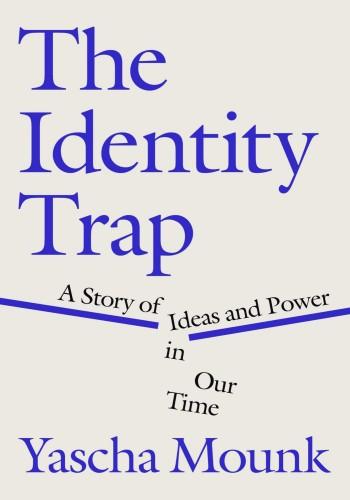
The Identity Trap: A Story of Ideas and Power in Our Time
by
Yascha Mounk
Published 26 Sep 2023
Some economists believe that affirmative action can undermine that signal. If employers know that the average SAT scores of Black students at elite colleges are significantly lower than those of students who belong to different demographic groups, they may discount their success—even when evaluating the application of a candidate who has not in any way benefitted from affirmative action. Policies that help some members of historically disadvantaged groups might simultaneously harm other members of that same group. See, for example, Bruce Wydick, “Affirmative Action in College Admissions: Examining Labor Market Effects of Four Alternative Policies,” Contemporary Economic Policy 20, no. 1 (2002): 12–24, doi.org/10.1093/cep/20.1.12; Bruce Wydick, “Do Race-Based Preferences Perpetuate Discrimination Against Marginalized Ethnic Groups?
…
GO TO NOTE REFERENCE IN TEXT key institutional players: Endorsers included Twitter, Wells Fargo, and Reddit. For a full list, see “California Proposition 16, Repeal Proposition 209 Affirmative Action Amendment (2020),” Ballotpedia, accessed Jan. 25, 2023, ballotpedia.org/California_Proposition_16,_Repeal_Proposition_209_Affirmative_Action_Amendment_(2020). GO TO NOTE REFERENCE IN TEXT they outspent opponents: Supporters garnered more than $25 million compared with approximately $1.75 million for opponents. “California Proposition 16, Repeal Proposition 209 Affirmative Action Amendment (2020).” GO TO NOTE REFERENCE IN TEXT maintain the ban: “Live Election Results: 2020 California Results,” Politico, accessed Mar. 24, 2023, www.politico.com/2020-election/results/california/.
…
Two years later, a majority of Californians voted to ban government entities and public universities in the state from engaging in affirmative action. Since then, California has undergone a profound political sea change. The state is now deeply liberal. A majority of its population is Black, Asian, or Hispanic. With the exception of an obscure insurance commissioner called Steve Poizner and a famous governor called Arnold Schwarzenegger, not a single Republican has won statewide office since 1994. A prominent group of activists saw this political transformation as an opportunity to repeal the state’s ban on affirmative action. They secured the support of key institutional players, from Kamala Harris to the major newspapers and many of the biggest corporations in the state.
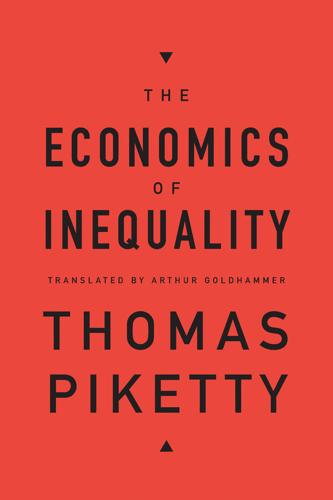
The Economics of Inequality
by
Thomas Piketty
and
Arthur Goldhammer
Published 7 Jan 2015
This economic theory of discrimination is similar in some ways to sociological theories that hold that inequality is often the result of a dominant discourse that becomes a self-fulfilling prophecy: if it is widely believed that the members of certain groups are unlikely to succeed, they will be discouraged from trying (Bourdieu and Passeron, 1964; 1970). Affirmative Action versus Fiscal Transfers The political implications of these theories are important. If a significant part of inequality is in fact due to perverse mechanisms of the sort described, then new redistributive instruments are needed. For example, the theory of discrimination suggests that employers should be prohibited by law from discriminating against minorities. One way to do this is to require employers to show that each hiring and promotion decision is based on unbiased objective criteria. Another is to impose affirmative action quotas, requiring employers to hire a certain percentage of minority workers, in order to break the vicious circle of self-fulfilling prophecies of failure.
…
Another is to impose affirmative action quotas, requiring employers to hire a certain percentage of minority workers, in order to break the vicious circle of self-fulfilling prophecies of failure. Such affirmative action policies became popular in the United States in the 1970s to protect African Americans, women, and other minorities. Affirmative action, which in some ways resembles earlier efforts to use labor law to limit employer discretion in hiring and promotion, is very different from the kinds of policies recommended by human capital theorists, who say that the best remedy for inequality is to make fiscal transfers to social groups whose human capital endowments are too low (within the limits imposed by the elasticity of the supply of human capital), while of course avoiding any interference in the process of production.
…
.* In short, inequalities based on rank discrimination, such as between people of color and whites or men and women, are much more susceptible to remedy by affirmative action and changes in mentality than by any kind of fiscal redistribution. Unfortunately, the fact that an inequality is based on discrimination does not always mean that it is easy to eliminate or even reduce. For example, most observers agree that the results of affirmative action in the United States have been mixed at best. Indeed, quotas requiring employers to hire a certain percentage of people of color can reinforce rather than weaken prejudices against African Americans, “who become employable only when we are forced to employ them,” while at the same time reducing their incentive to compete for jobs like other citizens, which is precisely the opposite of the intended goal (Coate and Loury, 1993).
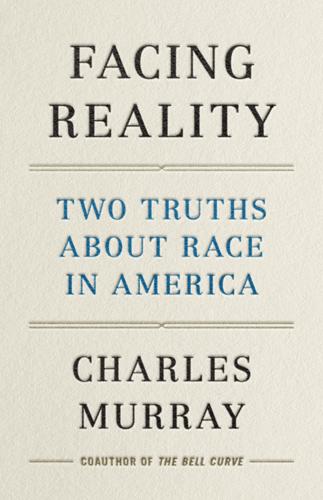
Facing Reality: Two Truths About Race in America
by
Charles Murray
Published 14 Jun 2021
THE SOLUTION THAT IS NOT WITHIN OUR GRASP I will briefly state my own sense of a root policy problem and the required solution. The solution is not politically within the realm of possibility, but I think it is useful to put it on the table. The problem. The phrase “affirmative action” originally referred to initiatives by colleges and corporations to seek out qualified Blacks who were being overlooked for educational and job opportunities. It was a needed policy in the mid-1960s and legally innocuous. But it soon morphed into aggressive affirmative action, meaning government-sponsored preferential treatment in determining who gets the educations and the jobs. Working-class and middle-class Whites who now see themselves as second-class citizens in the eyes of the government aren’t making it up.
…
Well-to-do Whites can find ways to circumvent this problem, but working-class and middle-class Whites cannot. It has long been my view, first expressed in these words long ago, that aggressive affirmative action is a poison leaking into the American experiment. We are now dealing with nearly sixty years of accumulated toxin. It is not the only cause of the present crisis, but it is a central one. It also has a side effect that I have never seen or heard discussed in public. Aggressive affirmative action is practiced most sweepingly for government jobs at all levels. At the city level, it affects the selection and promotion of police, prosecutors, public defenders, correctional officers, personnel in the social welfare bureaucracies, healthcare workers on the public payroll, and K–12 teachers in the public schools.
…
The presence of incompetent or marginally competent people in those jobs is only occasionally important to members of America’s upper middle class. Many of them live in places where affirmative action is not an issue because so few minorities live in their communities. For those who live in multiracial cities, incompetent police and prosecutors can be a problem. Incompetent teachers have driven many of them from the public schools. But upper-middle-class families in urban areas don’t have much to do with public defenders, correctional officers, or personnel in the social welfare bureaucracies. The burden of the substandard government services produced by aggressive affirmative action is borne overwhelmingly by America’s poorest and most vulnerable populations.
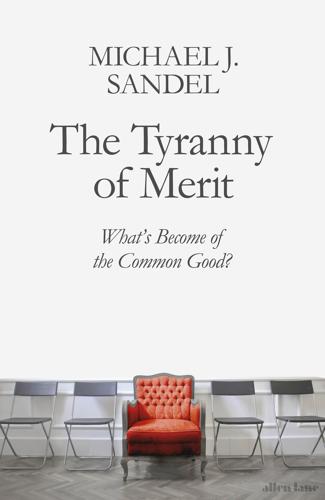
The Tyranny of Merit: What’s Become of the Common Good?
by
Michael J. Sandel
Published 9 Sep 2020
If this familiar view is right, then the problem with meritocracy is not with the principle but with our failure to live up to it. Political argument between conservatives and liberals bears this out. Our public debates are not about meritocracy itself but about how to achieve it. Conservatives argue, for example, that affirmative action policies that consider race and ethnicity as factors in admission amount to a betrayal of merit-based admission; liberals defend affirmative action as a way of remedying persisting unfairness and argue that a true meritocracy can be achieved only by leveling the playing field between the privileged and the disadvantaged. But this debate overlooks the possibility that the problem with meritocracy runs deeper.
…
At first, I assumed this was because they came of age during the era of Ronald Reagan and had absorbed the individualistic philosophy of the time. But these were not, for the most part, politically conservative students. Meritocratic intuitions reach across the political spectrum. They emerge with special intensity in discussions of affirmative action in college admissions. Whether students are for or against affirmative action policies, most voice the conviction that they worked hard to qualify for admission to Harvard and therefore merited their place. The suggestion that they were admitted due to luck or other factors beyond their control provokes strong resistance. It is not hard to understand the growing meritocratic sentiment among students in selective colleges.
…
Most of our debates about access to jobs, education, and public office proceed from the premise of equal opportunity. Our disagreements are less about the principle itself than about what it requires. For example, critics of affirmative action in hiring and college admissions argue that such policies are inconsistent with equality of opportunity, because they judge applicants on factors other than merit. Defenders of affirmative action reply that such policies are necessary to make equality of opportunity a reality for members of groups that have suffered discrimination or disadvantage. At the level of principle at least, and political rhetoric, meritocracy has won the day.
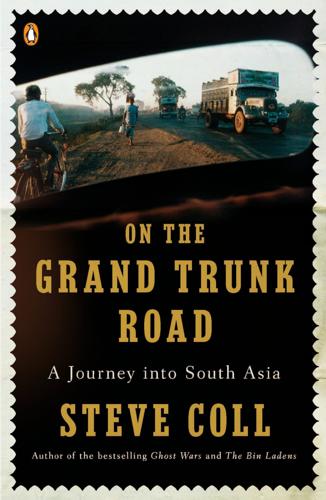
On the Grand Trunk Road: A Journey Into South Asia
by
Steve Coll
Published 29 Mar 2009
This lowest tier is designated by the government as “scheduled castes and tribes” and has been targeted in various affirmative action programs since just after independence. In the middle, some 65 percent of the population belong to what is known these days as the “other backward classes,” lower and lower-middle castes and minorities such as Muslims and Christians. Within this grouping are some clans that have done very well since independence, some that have done very poorly, and some that have simply remained in servitude to their landlords. It was a doomed attempt by India’s crusading prime minister V. P. Singh to initiate for these other backward classes a new, sweeping affirmative action plan in public employment that sparked the caste riots of 1990, including the upper-caste self-immolations that brought the fire-extinguisher salesman to my door.
…
On the grounds of capitalist egalitarianism, Sri Lanka also abandoned efforts to promote caste- or class-based affirmative action programs. Compared with the rest of South Asia, Sri Lanka is unusual in that the historically dominant caste group is in the numerical majority—the reverse of the situation in India. So even the best-intentioned programs of socialist democracy after independence did not promote a rise of lower castes, as in India. Instead, it reinforced the grip of dominant castes. More broadly, the Sri Lankan government rejected affirmative action during the capitalist boom because “we thought we were a much more enlightened society and ought not to acknowledge caste distinctions,” as Tiruchelvam put it.
…
South Asians themselves often use the term “elite” in broadbrush fashion to encompass strata of the socially or economically privileged who may have little in common or even be in fierce competition with one another. No single approach to defining or understanding the elites is satisfactory. There are, for example, millions of impoverished high-caste Brahmins in India and a significant number of millionaire “untouchables” made rich by the state’s various affirmative action plans. At the same time, wealth alone by no means guarantees status, except perhaps within the narrow band of one’s own community. One of the richest men in my New Delhi neighborhood earned a fortune by selling tobacco while squatting in a wooden booth. Yet it would be impossible to consider him part of the elite; few of the less wealthy Nehruvian bureaucrats who bought his wares would consider sharing a meal with him.

The Speech: The Story Behind Dr. Martin Luther King Jr. S Dream
by
Gary Younge
Published 11 Aug 2013
With the “problem solved,” white people could then be framed not as beneficiaries of racial inequality but as the victims of post–civil rights “social engineering” that, they claimed, sought to replicate the unfairness of Jim Crow. In 2009, when a white Connecticut firefighter blamed affirmative action for his failure to win promotion after he passed a qualifying test, he said: “I think we view discrimination as discrimination plain and simple. We were discriminated [against] based upon our race just like African Americans were in the past in other issues. So it’s just plain discrimination.” Similarly, when Jennifer Gratz was not given entrance to the University of Michigan, she sued the university, claiming that she was rejected because of affirmative action, in a case that eventually went to the Supreme Court. “They think it’s OK to discriminate against some of us in order to promote diversity on their campus,” she told me.
…
The misreading is most glaring today in discussions of affirmative action. King was a strong proponent of taking race and ethnicity into account in job appointments and college admissions, in order to redress historical imbalances. “It is impossible to create a formula for the future,” he wrote, “which does not take into account that our society has been doing something special against the Negro for hundreds of years.” Yet the Right has come to rely on the “content of their character” line in the speech to use King as an antiracist cover for their opposition to affirmative action. In 1986 Reagan said: “We are committed to a society in which all men and women have equal opportunities to succeed, and so we oppose the use of quotas.
…
In 2010, on the forty-seventh anniversary of the speech, media personality and Tea Party favorite Glenn Beck held the “Restoring Honor” rally at the Lincoln Memorial, telling a crowd of around ninety thousand that “the man who stood down on those stairs . . . gave his life for everyone’s right to have a dream.” Almost a year later Black Republican presidential candidate Herman Cain opened his speech to the Southern Republican Leadership Conference with the words “I have a dream.” Their embrace of the speech, particularly when using elements out of context to challenge affirmative action and civil rights legislation, has made some Black intellectuals and activists wary. “The speech is profoundly and willfully misunderstood,” King’s longtime friend Vincent Harding told me. “People take the parts that require the least inquiry, the least change, the least work.” Many fear that the speech can too easily be distorted in a manner that undermines the speaker’s legacy.
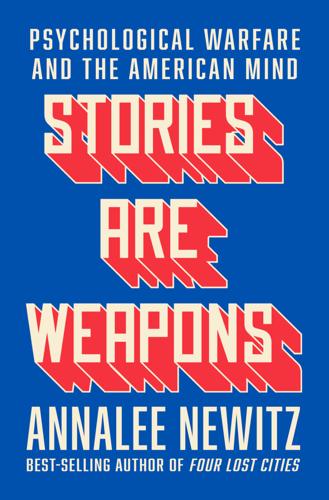
Stories Are Weapons: Psychological Warfare and the American Mind
by
Annalee Newitz
Published 3 Jun 2024
The Bell Curve was a gift to conservative policymakers, who used it to attack affirmative action programs. Pat Buchanan, a conservative adviser to Reagan who championed the idea of “culture war” in a 1992 speech, had been arguing against affirmative action programs since the 1970s by citing Herrnstein’s early research.11 Tech billionaire Peter Thiel, who became one of Trump’s main allies in Silicon Valley, mentioned The Bell Curve in a 1996 commentary on why affirmative action had failed.12 Armed with Herrnstein and Murray’s research, these powerful men helped persuade Americans to gut affirmative action. In 1996, Californians voted to end affirmative action programs in governmental institutions including higher education, and Texas followed suit;13 in 2023, a Supreme Court ruling banned these programs nationwide.
…
Broder, John M., “Clinton Rejects Racially Based Theory on IQs,” Los Angeles Times, October 22, 1994. 11. Hemmer, Nicole, Partisans: The Conservative Revolutionaries Who Remade American Politics in the 1990s (Basic Books, 2022). 12. Sacks, David, and Peter Thiel, “The Case against Affirmative Action,” Stanford Magazine, September/October 1996. 13. Watanabe, Teresa, “California Banned Affirmative Action in 1996. Inside the UC Struggle for Diversity,” Los Angeles Times, October 31, 2022. 14. Siegel, Eric, “The Real Problem with Charles Murray and ‘The Bell Curve,’ ” Voices (blog), Scientific American Blog Network, April 12, 2017. 15.
…
In a sense, the federal government had finally declared that Black and white minds were equal. But laws and history have never stopped culture warriors from recycling old psyops as if they were brand-new. Debates over Black intelligence reignited in the mid-1990s as part of a conservative push to end all affirmative action programs, including in higher education. During the ’90s “bell curve wars,” as they came to be called,3 social scientists suggested that Black people as a group were genetically incapable of achieving the same levels of intelligence that whites and other races could. This weaponized rhetorical strategy undermined Black people’s status in the eyes of their fellow Americans, while taking aim at Black people’s views of their own mental capabilities.
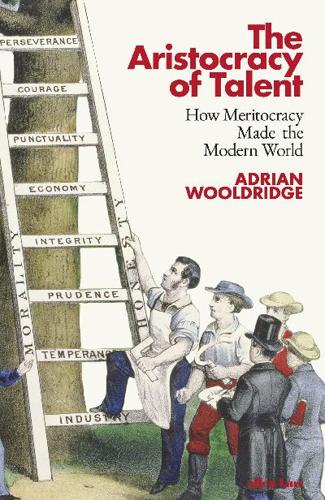
The Aristocracy of Talent: How Meritocracy Made the Modern World
by
Adrian Wooldridge
Published 2 Jun 2021
A majority of the American public consistently opposed the idea that some ethnic groups should be held to different standards than others. And the courts progressively narrowed the scope of affirmative action over the years: in Regents of the University of California v. Bakke (1978) the Supreme Court established that race could be considered in admissions decisions but only so long as ‘fixed quotas’ were not used. Other rulings, such as Hopwood v. State of Texas (1996), made it harder to take race into consideration. The practice of affirmative action also left much to be desired. Affirmative action had always been intended to be part of a wide range of programmes that universities used to address the problems of non-traditional students, such as mentoring and coaching.
…
POSITIVE DISCRIMINATION In Chapter Fourteen, I discussed Lyndon Johnson’s landmark speech at Howard University when he declared that you can’t take people who have been hobbled by chains for years, put them at the starting line of a race and then fire the starting pistol. You need a measure of affirmative action to prepare them for the race. Classical liberals have always had problems with affirmative action, worrying that it perpetuates the very racial categories that it’s designed to eliminate, but it’s hard to escape Johnson’s logic: equality of opportunity doesn’t work if some people start a long way behind others not because of their individual merits but because they happen to be born members of a certain group. Sometimes collective wrongs require collective solutions. The case for affirmative action is at its strongest for the group that LBJ was talking about at Howard: African-Americans.
…
Every attempt that America made to address the problem of racial disparities proved to be more frustrating than it had imagined. The most ambitious attempt was affirmative action, which was intended to compensate for past injustices and present inequalities by providing members of minorities – particularly African-Americans – with a leg-up in the form of preferential treatment in admission to universities and some jobs. Affirmative action certainly changed the face of elite America, as universities and companies enrolled or employed more minorities. It also produced a good deal of unease. A majority of the American public consistently opposed the idea that some ethnic groups should be held to different standards than others.
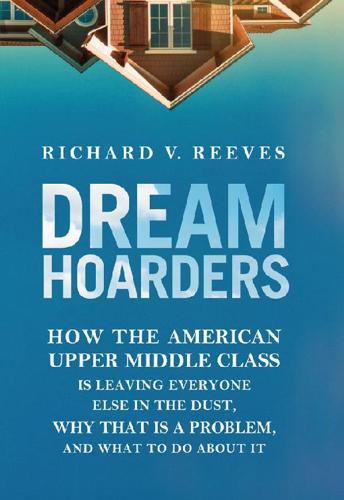
Dream Hoarders: How the American Upper Middle Class Is Leaving Everyone Else in the Dust, Why That Is a Problem, and What to Do About It
by
Richard V. Reeves
Published 22 May 2017
As a Brookings scholar, I am quite rightly prohibited from supporting a specific piece of legislation—but not from proposing my own. How about an Ending Hereditary Privilege in College Admissions Act? Some fear that killing legacy preferences will damage the argument for race-based affirmative action. There is an unavoidable tension inherent in affirmative action between the meritocratic principle that institutions should not discriminate on grounds of race or other categories and a desire for equality, especially for those from groups who have been subordinated in the past. But there is no such tension for legacy admissions, which are both antimeritocratic and antiequality.
…
Richard Kahlenberg, “10 Myths about Legacy Preferences in College Admissions,” Chronicle of Higher Education, September 22, 2010 (www.chronicle.com/article/10-Myths-About-Legacy/124561/). 51. Quoted in Richard Kahlenberg, Affirmative Action for the Rich (New York: The Century Foundation Press, 2010), p. 67. 52. Carlton Larson, “Titles of Nobility, Hereditary Privilege, and the Unconstitutionality of Legacy Preferences in Public School Admissions,” Washington University Law Review 84, no. 6 (2006): p. 1382 (http://openscholarship.wustl.edu/cgi/viewcontent.cgi?article=1215&context=law_lawreview). 53. Kahlenberg, Affirmative Action for the Rich, p. 15. 54. Darren Walker, “Internships Are Not a Privilege,” New York Times, July 5, 2016. 55.
…
Thanks also to Kim Giambattisto at Westchester Publishing and to Valentina Kalk, William Finan, Elliott Beard, and Carrie Engel at the Brookings Institution Press. If you find an error, please let me know and I’ll try to find someone to blame for it. INDEX Absolute vs. relative class mobility, 59–60 Adams, James Truslow, 15 Affirmative action, 91, 144 Affirmative Action for the Rich (Kahlenberg), 108 Affirmatively Furthering Fair Housing (AFFH) rule, 139 African Americans, 32. See also Race and ethnicity The Age of Reform (Hofstadter), 155–56 Alon, Sigal, 86–87 American Opportunity Tax Credit, 135, 137 Anderson, John W., 112 Apprenticeships, 136 Asian Americans, 32.
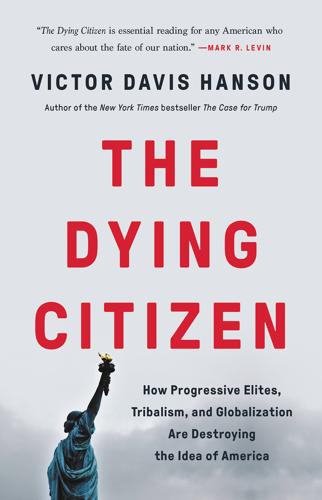
The Dying Citizen: How Progressive Elites, Tribalism, and Globalization Are Destroying the Idea of America
by
Victor Davis Hanson
Published 15 Nov 2021
Wood, Diversity Rules (New York: Encounter Books, 2020), 31–32. 39. “California Proposition 209, Affirmative Action Initiative (1996),” Ballotpedia, ballotpedia.org/California_Proposition_209,_Affirmative_Action_Initiative_(1996); cf. recent challenges: Alexei Koseff, “California’s Affirmative Action Ban, Proposition 209, Targeted for Repeal,” San Francisco Chronicle, March 10, 2020, www.sfchronicle.com/politics/article/California-s-affirmative-action-ban-15121025.php. Cf. the defeat of Proposition 16: David Lauter, “Failure to Bridge Divides of Age, Race Doomed Affirmative Action Proposition,” Los Angeles Times, November 24, 2020, www.latimes.com/politics/story/2020-11-24/age-race-divides-doomed-affirmative-action-proposition. 40.
…
Currently, however, Latinos make up the largest minority group in California, since 2014 comprising 39 percent of state residents. Only 37 percent of the population is white, with 15 percent Asian American, 6 percent African American, and smaller percentages for other groups and those of mixed race. The nomenclature of identity politics and affirmative action has not yet caught up with reality on the ground. Are Latinos now a minority/majority population or whites a majority/minority? Are reparatory set-asides now to be adjudicated by income and class rather than race or demography? Will neologisms arise such as belonging to a “privileged minority” that might encompass both whites and Asian Americans on the basis of average income?
…
But when suspected of committing a bad act—such as the shooting of Trayvon Martin by “white Hispanic” George Zimmerman, who was acquitted of second-degree murder—he is damned further by the inclusion of the adjective “white.” The addition is intended to negate what would otherwise be a positive and helpful racial ancestry. Will some working-class whites one day describe themselves as aggrieved minorities and thus demand affirmative action, encourage Viking-like names such as Ragnar or Odin, and insert umlauts and diereses into their names to hype their newfound minority European bona fides, seek segregated European American dorms, and set up Caucasian studies programs at universities, on the logic that the present generation, while not a beneficiary of past discrimination, was born into less privilege in hiring and admissions than other groups?
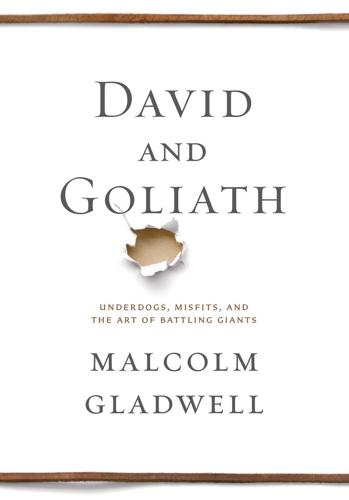
David and Goliath: Underdogs, Misfits, and the Art of Battling Giants
by
Malcolm Gladwell
Published 30 Sep 2013
If someone is going to be cannon fodder in the classroom, the theory goes, it’s probably best if that person has an alternative avenue of fulfillment on the football field. Exactly the same logic applies to the debate over affirmative action. In the United States, there is an enormous controversy over whether colleges and professional schools should have lower admissions standards for disadvantaged minorities. Supporters of affirmative action say helping minorities get into selective schools is justified given the long history of discrimination. Opponents say that access to selective schools is so important that it ought to be done purely on academic merit.
…
But Brown University made her feel stupid—and if she truly wanted to graduate with a science degree, the best thing for her to do would have been to go down a notch to Maryland. No sane person would say that the solution to her problems would be for her to go to an even more competitive school like Stanford or MIT. Yet when it comes to affirmative action, that’s exactly what we do. We take promising students like Caroline Sacks—but who happen to be black—and offer to bump them up a notch. And why do we do that? Because we think we’re helping them. That doesn’t mean affirmative action is wrong. It is something done with the best of intentions, and elite schools often have resources available to help poor students that other schools do not. But this does not change the fact that—as Herbert Marsh says—the blessings of the Big Pond are mixed, and it is strange how rarely the Big Pond’s downsides are mentioned.
…
In other words, their numbers aren’t measuring just how many articles an academic can turn out. They are measuring how many high-quality articles an academic can get published. 6 The law professor Richard Sander is the leading proponent of the Big Pond case against affirmative action. He has written with Stuart Taylor a fascinating book on the subject called Mismatch: How Affirmative Action Hurts Students It’s Intended to Help, and Why Universities Won’t Admit It. I’ve provided a summary of some of Sander’s argument in the notes at the back of this book. For example, one of the questions Sander looks at is this. It is harder for a minority student to become a lawyer if he or she goes to a better school.
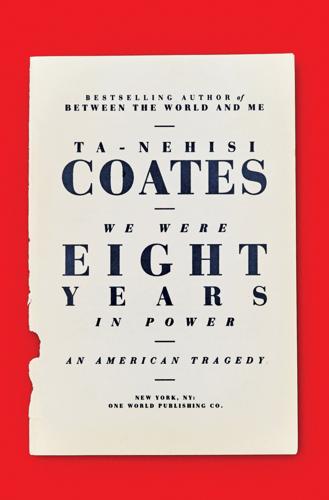
We Were Eight Years in Power: An American Tragedy
by
Ta-Nehisi Coates
Published 2 Oct 2017
If so, it only tangentially relates to the specific problems of black people—the problem of what America has taken from them over several centuries. This confusion about affirmative action’s aims, along with our inability to face up to the particular history of white-imposed black disadvantage, dates back to the policy’s origins. “There is no fixed and firm definition of affirmative action,” an appointee in Johnson’s Department of Labor declared. “Affirmative action is anything that you have to do to get results. But this does not necessarily include preferential treatment.” Yet America was built on the preferential treatment of white people—395 years of it.
…
The urge to use the moral force of the black struggle to address broader inequalities originates in both compassion and pragmatism. But it makes for ambiguous policy. Affirmative action’s precise aims, for instance, have always proved elusive. Is it meant to make amends for the crimes heaped upon black people? Not according to the Supreme Court. In its 1978 ruling in Regents of the University of California v. Bakke, the court rejected “societal discrimination” as “an amorphous concept of injury that may be ageless in its reach into the past.” Is affirmative action meant to increase “diversity”? If so, it only tangentially relates to the specific problems of black people—the problem of what America has taken from them over several centuries.
…
But in the collective sense, what this country really fears is black respectability, Good Negro Government. It applauds, even celebrates, Good Negro Government in the unthreatening abstract—The Cosby Show, for instance. But when it becomes clear that Good Negro Government might, in any way, empower actual Negroes over actual whites, then the fear sets in, the affirmative-action charges begin, and birtherism emerges. And this is because, at its core, those American myths have never been colorless. They cannot be extricated from the “whole theory of slavery,” which holds that an entire class of people carry peonage in their blood. That peon class provided the foundation on which all those myths and conceptions were built.
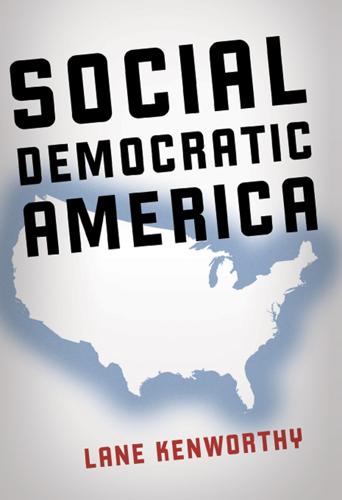
Social Democratic America
by
Lane Kenworthy
Published 3 Jan 2014
States that have reduced imprisonment, turning to alternative punishments such as fines and community corrections programs, have experienced drops in crime similar to those in states that have increased imprisonment.47 If more states followed suit, we could avoid needlessly undermining the employment opportunities of a significant number of young men from less advantaged homes. Third, since the late 1960s, affirmative action programs for university admissions and hiring have promoted opportunity for women and members of racial and ethnic minority groups.48 Affirmative action should continue, but with family background as the focal criterion.49 How to Ensure Shared Prosperity In chapter 2, I described the slow growth of income among lower-half American households since the 1970s. But what if there is no alternative?
…
Social assistance programs such as the Supplemental Nutrition Assistance Program (SNAP, or “food stamps”) and Temporary Assistance for Needy Families (TANF) insure against the risk that you will find yourself unable to get a job but ineligible for unemployment or disability compensation. Even affirmative action programs are a form of insurance; they insure against the risk of being in a group that is, or formerly was, discriminated against. Over the past century, the United States, like other rich nations, has created a number of public insurance programs. But we haven’t done enough. From our own experience and that of other affluent countries, we know there are significant risks we could insure against but currently don’t, and others for which the protection we now provide is inadequate.8 We need the following: • Universal health insurance • One-year paid parental leave • Universal early education • Increase in the Child Tax Credit • Sickness insurance • Eased eligibility criteria for unemployment insurance • Wage insurance • Supplemental defined-contribution pension plans with automatic enrollment • Extensive, personalized job-search and (re)training support • Government as employer of last resort • Minimum wage increased modestly and indexed to prices • EITC extended farther up the income ladder and indexed to average compensation or GDP per capita • Social assistance with a higher benefit level and more support for employment • Reduced incarceration of low-level drug offenders • Affirmative action shifted to focus on family background rather than race • Expanded government investment in infrastructure and public spaces • Increase in paid holidays and vacation time Now, to some, this will look like a predictable laundry list of left goals.
…
From our own experience and that of other affluent countries, we know there are significant risks we could insure against but currently don’t, and others for which the protection we now provide is inadequate.8 We need the following: • Universal health insurance • One-year paid parental leave • Universal early education • Increase in the Child Tax Credit • Sickness insurance • Eased eligibility criteria for unemployment insurance • Wage insurance • Supplemental defined-contribution pension plans with automatic enrollment • Extensive, personalized job-search and (re)training support • Government as employer of last resort • Minimum wage increased modestly and indexed to prices • EITC extended farther up the income ladder and indexed to average compensation or GDP per capita • Social assistance with a higher benefit level and more support for employment • Reduced incarceration of low-level drug offenders • Affirmative action shifted to focus on family background rather than race • Expanded government investment in infrastructure and public spaces • Increase in paid holidays and vacation time Now, to some, this will look like a predictable laundry list of left goals. Yet I’ve arrived at this list not by consulting the latest edition of the “Progressives’ Handbook,”9 but by examining the problems we face and the experiences of the world’s rich nations in addressing them.
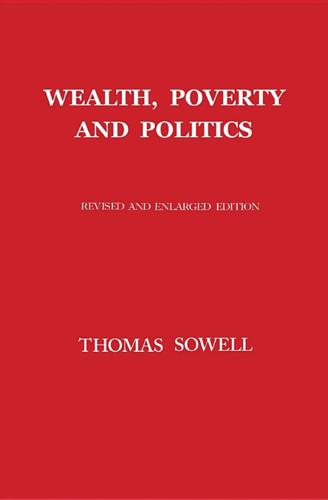
Wealth, Poverty and Politics
by
Thomas Sowell
Published 31 Aug 2015
These results confirmed what many critics of affirmative action in academia had been saying for years: Students mismatched with institutions whose standards they did not meet would either fail to graduate as often as others or would manage to graduate only by avoiding difficult subjects like science, technology, engineering, and mathematics. A widely acclaimed attempt to say otherwise, that affirmative action in college admissions was successful— The Shape of the River by former college presidents William Bowen and Derek Bok— had crucial defects: 1. Although the study purported to show that blacks admitted under affirmative action policies with lower academic qualifications did well, the actual samples in the statistics lumped together all black students— those who were admitted with the same qualifications as other students and those admitted under affirmative action with lower qualifications than the other students.56 The absence of data on the group specifically at issue— those particular black students who were admitted with lower qualifications— makes that study the statistical equivalent of Hamlet without the prince of Denmark. 2.
…
One of these current notions is that lagging groups require a lowering of existing standards, so that more of their members can advance via various forms of “affirmative action.” Yet the fields in which many lagging groups have had their greatest success— especially sports and entertainment— include fields notorious for severe competition, in which even star performers whose performances begin to decline are ruthlessly cast aside. In short, lagging minorities have flourished in endeavors whose conditions are the direct opposite of those of affirmative action. They have had real achievements against unsparing competition, rather than make-believe achievements based on affirmative action quotas. Against the background of British historian Arnold Toynbee’s “challenge and response” thesis, that the necessity to overcome obstacles has spurred human achievements, what income redistributionists propose, in the form of a welfare state guarantee of “basic necessities,” is to remove fundamental and long-standing challenges from the lives of some people by guaranteeing them a livelihood without their having to lift a finger— much less develop human capital, even in the form of common decency.
…
Poverty Status of Families, by Type of Family, Presence of Related Children, Race, and Hispanic Origin: 1959 to 2013,” downloaded on October 23, 2014: http://www.census.gov/hhes/www/poverty/data/historical/families.html 54. John H. Bunzel, “Affirmative-Action Admissions: How It ‘Works’ at UC Berkeley,” The Public Interest, Fall 1988, pp. 124, 125. 55. Richard Sander and Stuart Taylor, Jr., Mismatch: How Affirmative Action Hurts Students It’s Intended to Help, and Why Universities Won’t Admit It (New York: Basic Books, 2012), p. 154. 56. None of the book’s many tables separates black students who were admitted under the normal standards and those admitted under affirmative action standards. See William G. Bowen and Derek Bok, The Shape of the River: Long-Term Consequences of Considering Race in College and University Admissions (Princeton: Princeton University Press, 1998), pp. ix–xix. 57.

What's the Matter with White People
by
Joan Walsh
Published 19 Jul 2012
In Suicide of a Superpower, poor Pat Buchanan seemed to believe that the rapidly growing number of Asian Americans in the nation’s top schools had to do with affirmative action. I used to hear the same thing from clueless white people back before the passage of Ward Connerly’s Prop. 209 in 1997, which abolished affirmative action. Of course they were wrong—Asian American students were succeeding the old-fashioned way, with hard work. Since then, of course, the white proportion of UC students has continued to decline, even without affirmative action. Living in California it’s easy to see subtle and not so subtle signs of white status anxiety, real and imagined.
…
You do not take a person who, for years, has been hobbled by chains and liberate him, bring him up to the starting line of a race and then say, “you are free to compete with all the others,” and still justly believe that you have been completely fair. Thus it is not enough just to open the gates of opportunity. All our citizens must have the ability to walk through those gates. Working for Johnson, Moynihan proposed public works jobs and affirmative action measures, as well as a guaranteed national income, to lift black families, whether they were headed by one or two parents, out of poverty. The biggest problem with Moynihan’s report was its timing. Written before the Watts conflagration, it was leaked around the same time, and Washington pundits and politicians found in it an excuse to exonerate white America for the urban rebellions that would soon ignite coast to coast.
…
It would have created a nationwide guaranteed income and provided payments to families with a father at home, reversing the incentives for family split-up he saw in traditional welfare programs. No less a liberal than Ted Kennedy would eventually lament turning down Nixon’s proposals for national health-care reform, which were arguably more far-reaching than the law enacted under President Obama forty years later. The Nixon administration pioneered affirmative action, with its 1969 “Revised Philadelphia Plan,” a proposal to integrate the city’s white building trades while providing government contracts to minority businesses. George Meany’s plumbers and my grandfather’s steamfitters were among the most segregated unions, with “apprenticeships” passed from father to son, uncle to nephew, in an unbroken white chalk line.
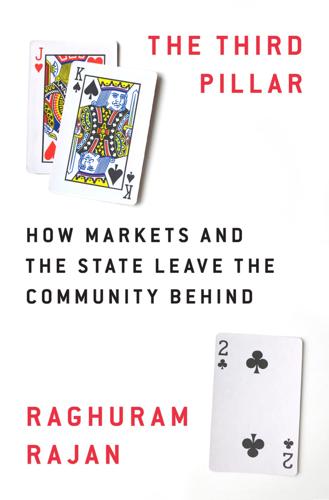
The Third Pillar: How Markets and the State Leave the Community Behind
by
Raghuram Rajan
Published 26 Feb 2019
It is hard to imagine this would have been possible without their father’s public-sector job. When there is a hunger to take advantage of opportunity, affirmative action seems to work. The problem, of course, is who should be allowed to take advantage of such preferences and for how long. From an economic perspective, it is not very helpful to see affirmative action as a righting of the historical wrongs suffered by an ethnic group. Instead, it is best seen as a way of righting current disabilities that hold groups back—and affirmative action should therefore also apply to subgroups within the majority group that are struggling economically and are socially unconnected to the elite.
…
If, however, an organization does not succeed over time in improving diversity at the top, it has to ask itself whether its systems and processes create blind spots that make it harder for it to nurture or recognize capabilities in others. Otherwise, it is all too easy for monocultures to maintain themselves by saying, “They just did not meet the bar.” In the interests of leveling the playing field, affirmative action for a minority group should eventually end. But when? Some early beneficiaries from affirmative action do well enough to put their children into good schools and colleges, as did our peons at the Reserve Bank. Should affirmative action end for their children (the peon’s grandchildren)? The answer, India has decided, turns on whether the grandchildren continue to be disadvantaged or discriminated against, and whether their parent’s higher incomes are sufficient to get them out of the trap of disadvantage.
…
ENABLING THE DISADVANTAGED Finally, what about affirmative action, a red rag to populist nationalist groups? Most large diverse countries have minority groups that have been discriminated against, are disadvantaged, and are underrepresented among the elite. Most such countries have scholarship and admission preferences in schools and colleges for these underprivileged minorities, as well as quotas for government jobs and preferences for government contracts. While not all these supports work well, in my previous job as the governor of the Reserve Bank in India, I had firsthand experience of the positive difference affirmative action could make.
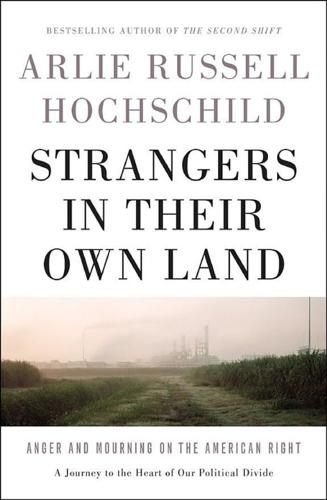
Strangers in Their Own Land: Anger and Mourning on the American Right
by
Arlie Russell Hochschild
Published 5 Sep 2016
And were he alive today, very few Louisianans would vote for Huey Long. When I ask Hardey about his political orientation—he was a moderate Republican—he immediately answers, “I’ve had enough of poor me.” As he explains, “I don’t like the government paying unwed mothers to have a lot of kids, and I don’t go for affirmative action. I met this one black guy who complained he couldn’t get a job. Come to find out he’d been to private school. I went to a local public school like everyone else I know. No one should be getting a job to fill some mandated racial quota or getting state money not to work.” Jindal had reduced state money for “poor me’s.”
…
The plants allowed him to gather his entire family around him and, on a generous supervisor’s salary, keep them in high comfort. Wherever the top brass of Sasol and other incoming plants lived, Bob Hardey’s large, loving family, his church, his neighbors were all right there in Westlake. Hardey didn’t see how the federal government had helped him; if anything its affirmative action policies had almost gotten in his way. But industry had been hard on Hardey too. “Four generations of Hardeys have lived in Westlake. And now with Sasol expanding,” he tells me, “a lot of my family is forced to move. My brother has already moved. My son and his wife were finished building their dream house, and now they’re moving out.”
…
I was glad to see him,” Mike said, adding, “He did check if we had safety vests which I guess is okay.” What image of the government was at play? Was it a nosy big brother (the Coast Guard had checked for safety vests)? Was it a remote-controlling big brother (a federal instead of state Department of Education)? A bad parent playing favorites (affirmative action)? An insistent beggar at the door (taxes)? It was all of these, but something else too. Just as Berkeley hippies of the 1960s felt proud to be “above consumerism,” to demonstrate their higher ideals of love and world harmony—even though they often depended on the parental money they were “above”—so too Mike Schaff and other Tea Party advocates seemed to be saying, “I’m above the government and all its services” to show the world their higher ideals, even though they used a host of them.

Wealth and Poverty: A New Edition for the Twenty-First Century
by
George Gilder
Published 30 Apr 1981
What the EEOC implicitly demands is carte blanche powers over the entire job market and thus the destruction of the vital freedom of workers to choose their own jobs from among the competing offers of employers.2 An equal rights effort—even an affirmative action program—was feasible when concentrated on the 10 percent of the American people with real grievances. But affirmative action that potentially involves more than half the workforce is necessarily an exercise in futility regardless of whether thousands of women and lawyers are gratified. The victims of this growing mockery are black men who might have benefited from a disciplined program but are now forced to join an undignified queue with such improbable victims as Yale coeds molested by their tutors, ex-addicts denied re-employment, assistant professors at Smith rejected for tenure, and telephone operators who discover, years later, that what they had always wanted was to climb a pole.
…
So new approaches emerged, allegedly more enlightened, but with implications equally far-fetched. Slavery, discrimination, and deprivation, it was said, have so abused the black psyche that all sorts of new ministrations and therapies are needed to redeem it; racism and unemployment still inflict such liabilities that vast new programs of public employment and affirmative action are required to overcome them. The reasonable inference arises that even though blacks are not genetically inferior, science proves them to be so damaged by racism and poverty that they are inferior now. Not only do these notions cause serious strain to the spirit of liberalism when confronting specific specimens of this maimed but deserving race, but such attitudes also perpetuate the idea that the poor, for whatever reason, are still very different from us.
…
But the poor and their children are assumed to be relatively unshaken by a plague of family breakdowns; at least any resulting lower income and employment levels are said to be due to discrimination, and the behavior of the children is regarded to be little influenced by the absence of fathers. Most American men earn more money than their wives; men that don’t tend to leave, or be left, in large numbers. Yet poor men are assumed to be unaffected by the higher relative incomes available to their wives from welfare and affirmative action, which are alleged to have no relationship to high rates of unemployment and illegitimacy. Perhaps most important of all, every successful ethnic group in our history rose up by working harder than other classes, in low-paid jobs, with a vanguard of men in entrepreneurial roles. But the current poor, so it is supposed, can leapfrog drudgery by education and credentials, or be led as a group from poverty, perhaps by welfare mothers trained for government jobs.
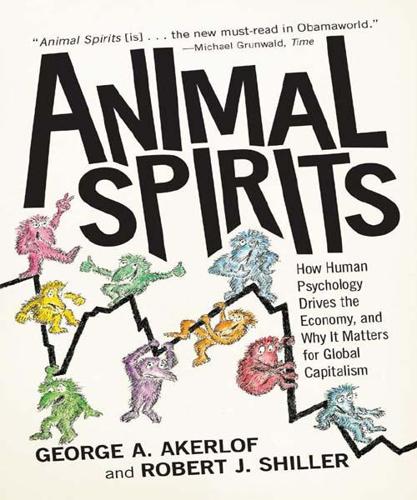
Animal Spirits: How Human Psychology Drives the Economy, and Why It Matters for Global Capitalism
by
George A. Akerlof
and
Robert J. Shiller
Published 1 Jan 2009
They could not account for the emotions that are revealed in the ethnographies. And it is these emotions, which are unavoidable, that underlie the special case for affirmative action. In contrast, in A Country of Strangers: Blacks and Whites in America, reporter David Shipler sought out what African Americans say about themselves and about America.17 In his view there is a real divide. There is a we and a they. And affirmative action can play a significant role in breaking down this barrier between the two Americas. First and foremost is its symbolism. Affirmative action indicates that whites care about blacks. Acceptance by whites of this responsibility defuses the view that America is really two countries, with the white majority uncaring about the black minority.
…
Acceptance by whites of this responsibility defuses the view that America is really two countries, with the white majority uncaring about the black minority. We appreciate that there are objections: that affirmative action is difficult to administer, that it brings up important issues of fairness, and so on. But we view these issues as secondary relative to the role of affirmative action in conveying to African Americans the message “Yes, we can. Yes, we care.”18 The naysayers, like the Thernstroms, declare that affirmative action is wrong, that there is a growing African-American middle class, that government measures are ineffective, that the problem of black-white difference should be left to the market.
…
This very notion is part of daily reality. This notion —as much as low financial assets and low skill levels—is responsible for the continued poverty of African Americans. So what is to be done? In the 1990s there was a great debate about affirmative action. Two important books appeared at about the same time but reached radically different conclusions. Abigail and Stephan Thernstrom wrote an exhaustive history of affirmative action and how it grew out of the civil rights movement.16 They prided themselves on both their factual history and their statistical analysis. But the Thernstroms never came to grips with what the ethnographies reveal.
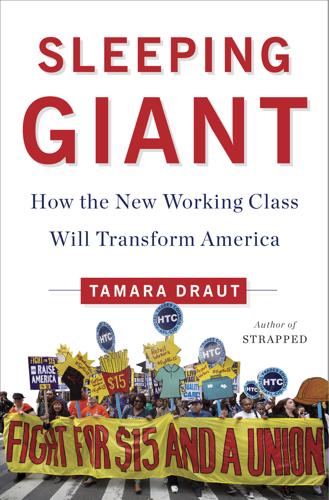
Sleeping Giant: How the New Working Class Will Transform America
by
Tamara Draut
Published 4 Apr 2016
By 1980, sixteen years of organized activism and formal federal oversight had resulted in remarkable gains for black women, black men, and white women. But progress ground to a halt in the 1980s, with only white women advancing over the next three decades. At the national level, our political debate became increasingly racialized, particularly around the issue of affirmative action. Conservatives successfully recast affirmative action as “reverse discrimination,” and when they secured electoral advantage, they were able to transform this rhetoric into action. Upon winning the presidency, Ronald Reagan quickly knocked the teeth out of federal enforcement, slashing the budget of the EEOC and the office responsible for federal contracting.17 He appointed Clarence Thomas (now a Supreme Court justice) to head the EEOC and ordered a near stoppage to enforcement of the law.
…
On the other hand, most affluent whites lived in communities so far from either black or white working-class people that their children were rarely affected by busing orders.46 The Republican Party used the detachment of white elites from the implementation of integration to charge the Democratic Party with liberal elitism: championing the rights of minorities from a lofty perch on which they remain unaffected. In addition, the Republican Party cleverly began describing affirmative action as “reverse discrimination,” arguing that better-qualified whites were losing jobs to less-qualified minorities. It was a cynical and ugly ploy, but it worked. And it’s still working. Charges of reverse discrimination have resulted in Supreme Court rulings that have all but ended affirmative action. The Republicans pursued a narrative of “color blindness,” arguing that the way to overcome past and current discrimination was to bar government from considering a person’s race at all, often co-opting and distorting Martin Luther King’s famous statement that “we should judge people on the content of their character, not the color of their skin.”
…
Meany became a vociferous advocate for the inclusion of the equal employment opportunity section of the 1964 Civil Rights Act, testifying before the House in 1963 that “we need a federal law to help us do what we want to do: mop up those areas of discrimination which still persist in our own ranks.”24 But as I discuss more in the next chapter, racial tensions and discrimination remained deep problems in the labor movement, with many white union members abandoning the Democratic Party as policies around affirmative action and housing integration were implemented. The 1960s were a high-water mark for what is referred to as social movement unionism. Labor was an advocate not just for its members but for the entirety of the working class. In 1967, 25 percent of all political activity, such as voting and contacting legislators, was performed by union members.25 The working class was political, and its voice reverberated through state capitals across the country and through the halls of Congress.
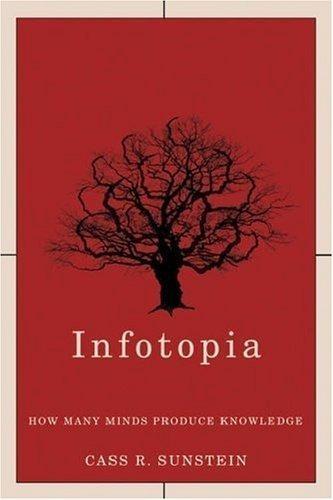
Infotopia: How Many Minds Produce Knowledge
by
Cass R. Sunstein
Published 23 Aug 2006
Liberals favored an international treaty to control global warming before discussion; they favored it more strongly after discussion. Conservatives were neutral on that treaty before discussion; they strongly opposed it after discussion. Mildly favorable toward affirmative action before discussion, liberals became strongly favorable toward affirmative action after discussion. Firmly negative about affirmative action before discussion, conservatives became even more negative about affirmative action after discussion. Aside from increasing extremism, the experiment had an independent effect: It made both liberal groups and conservative groups significantly more homogeneous—and thus squelched diversity.
…
In the summer of 2005, a small experiment in democracy was held in Colorado.1 Sixty American citizens were brought together and assembled into ten groups, each consisting of five to seven people. Members of each group were asked to deliberate on three of the most controversial issues of the day: Should states allow same-sex couples to enter into civil unions? Should employers engage in “affirmative action” by giving a preference to members of traditionally disadvantaged groups? Should the United States sign an international treaty to combat global warming? As the experiment was designed, the groups consisted of either “liberal” and “conservative” members, the former from Boulder, the latter from Colorado Springs.
…
Second, deliberation usually promotes uniformity by decreasing the range of views within groups.17 After talking together, group members come into greater accord with one another.18 Recall the Colorado experiment discussed earlier; both liberal and conservative group members showed greater homogeneity on global warming, affirmative action, and civil unions for same-sex couples. A central effect of deliberation is to reduce (squelch?) the range of opinions. It is for this reason that statistical groups show far more diversity of opinion than deliberating groups. The Surprising Failures of Deliberating Groups / 55 How should we evaluate these increases in confidence and unity?
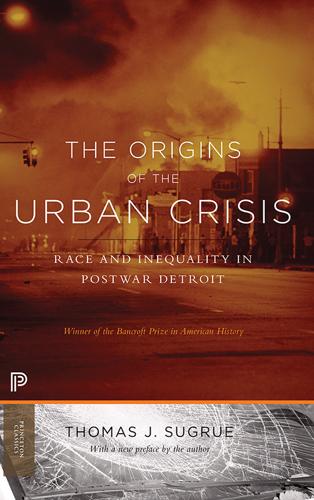
The Origins of the Urban Crisis
by
Sugrue, Thomas J.
Brown, Race, Money, and the American Welfare State (Ithaca, N.Y.: Cornell University Press, 1998); Anthony S. Chen, “From Fair Employment to Equal Opportunity Employment and Beyond: Affirmative Action and Civil Rights Politics in the New Deal Order, 19411972” (Ph.D. diss., University of California, Berkeley, 2002); Philip A. Klinkner with Rogers M. Smith, The Unsteady March: The Rise and Decline of Racial Equality in America (Chicago: University of Chicago Press, 1999); John David Skrentny, The Ironies of Affirmative Action (Chicago: University of Chicago Press, 1996); Paul Frymer, “Race, Labor, and the Twentieth-Century American State,” Politics and Society 32 (2004): 475–509. 6.
…
Employers, as a 1993 survey pointed out, continue to use race to screen prospective employees. Remedies for systematic discrimination have met with limited success, primarily in the governmental sector (a part of the economy that was already opening to blacks after World War II) and in clerical employment. In other sectors, affirmative action has had little impact. Government-enforced affirmative action programs continued the trajectory of the antidiscrimination efforts of the Urban League and the NAACP in the 1950s. They played an important role in opening employment to middle-class blacks, and in breaking the deeply rooted barriers of discrimination in the city’s police and fire departments.
…
Detroit’s first African American mayor, Coleman Young, much like his white predecessors, used city employment and city contracts to reward loyal supporters over the course of his twenty-year mayoralty (1974–1994). But in the private sector, companies and workers continued to resist affirmative action programs, and blacks have remained underrepresented in skilled and white collar work throughout the post-riot years. By and large untouched by affirmative action programs have been the displaced working-class and poor black Detroiters most in need of assistance.22 Detroit has also remained intensely segregated by race and by class. Open housing and antidiscrimination efforts had little effect on metropolitan Detroit’s housing market.
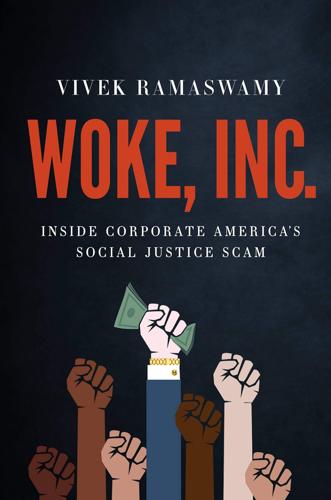
Woke, Inc: Inside Corporate America's Social Justice Scam
by
Vivek Ramaswamy
Published 16 Aug 2021
“Our diversity is our strength” became a truism not just in universities but across American institutions. And the kind of diversity universities and businesses value happens to be the same narrow kind of diversity that was at issue in the affirmative action cases—in theory, it’s diversity of thought that matters, but in practice, Diversity is all about skin-deep factors like race and sex. Race-based affirmative action has left the incubation chamber of the university and spread to the corporate world, even to my home turf in the biotech industry. When I was a biotech CEO, I was called on by BIO, the industry lobbying group, to support the BIOEquality Agenda, “a national effort… that aims to counteract the systemic inequality, injustice, and unfair treatment of underserved communities.”18 Some of the agenda’s goals are reasonable enough, such as ensuring that racial minorities are adequately represented in clinical trials and making sure underserved populations have access to vaccines and therapeutics—these are certainly pressing needs.
…
But for a single moment where America’s interest in diversity began to become a formalized obsession, take a look at Justice Powell’s famous concurrence in Regents of the University of California v. Bakke. It was here, in an opinion about the constitutionality of racial quotas in university admissions, that American law began to really acknowledge the value of diversity. Over the years, as the Supreme Court’s affirmative action doctrine flourished and gave diversity more weight, Diversity grew strong too, first entrenching itself in universities and soon after that in all companies and institutions. Once we carved the value of Diversity into the Constitution, it became easy for it to spread to the rest of our culture.
…
Powell argued that the state of California did have a compelling interest in constructing a diverse class of students: “The atmosphere of ‘speculation, experiment and creation’—so essential to the quality of higher education—is widely believed to be promoted by a diverse student body.” The problem was just that a quota system was too crude. He held up Harvard University’s affirmative action program as an example of one that pursued diversity in an appropriately flexible way. Harvard used a policy called “holistic review,” where an applicant’s race was one kind of diversity out of many that could count in their favor.14 Decades later, in the landmark cases Grutter v. Bollinger and Gratz v.
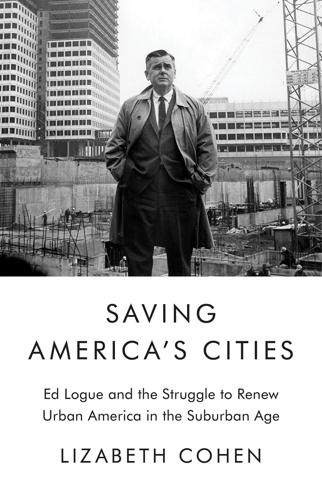
Saving America's Cities: Ed Logue and the Struggle to Renew Urban America in the Suburban Age
by
Lizabeth Cohen
Published 30 Sep 2019
The UDC contracted with a minority-run operation called the Recruitment and Training Program (R-T-P, formerly the Workers Defense League) to offer technical assistance and job counseling to minority workers on many project sites and with the Contractors’ Training and Development Office to help minority-owned contracting firms acquire skills including bookkeeping, writing proposals, and securing bank loans, all required when working with a state agency like the UDC.145 That Logue made affirmative action a UDC priority was clear in his instructions to Donald Cogsville, the UDC’s African American affirmative action officer. “I want you to go out and look at those sites and make a judgment about whether there are enough minorities on these jobs. If there aren’t, complain … tell him you’ll be back in four weeks more and if you don’t see improvement, the contractor’s not going to get paid.”146 Cogsville indeed credited the agency’s well-recognized success with affirmative action to having “a guy at the head of the organization who says ‘God damn, it’s going to be done,’ and then gives the freedom to do whatever is necessary to get things done.”147 Other developers and even a black activist in fact complained that the UDC was monopolizing the state’s very small number of minority subcontractors and black construction workers.
…
And in its worst moments, particularly in the years after the UDC collapsed and the HUDC continued to exist as an autonomous community development corporation, it made reckless decisions and often operated as a patronage machine for board members pursuing their own self-interest, taking advantage of HUDC’s access to public and private investment dollars.139 The UDC’s effort to mount a robust affirmative action program proved less controversial and brought more acclaim than the Harlem project. Not only did it fit better with Logue’s integrationist orientation, but he could control it fully through his power as UDC president rather than having to negotiate with a politically complex set of actors, as in Harlem. Governor Rockefeller had sent a strong message that New York State was committed to affirmative action, but Logue—more than most agency heads—took that charge to heart. Of the UDC’s 500 employees, 23 percent were minority, including 15 percent of the 330 professional and technical staffers.140 As early as 1970, nine of the UDC’s fifty-four projects had been designed by minority architects, although only 1 percent of New York State’s architects were black or Puerto Rican.141 By 1973, 16 percent of the UDC’s total construction contracts, worth more than $55.5 million, had gone to minority builders.
…
At this cornerstone ceremony in 1973, the Clarks are flanked to the right by Logue and William H. Hayden, director of the UDC’s New York City Region field office. A subsidiary, the Harlem Urban Development Corporation, initiated other projects nearby. (URBAN DEVELOPMENT CORPORATION) PROMOTING AFFIRMATIVE ACTION. Logue made a strong commitment to affirmative action, requiring that minorities’ participation in all aspects of UDC projects be proportional to their presence in a local area. UDC-sponsored loans and technical assistance programs helped minorities compete. Here, the architectural firm Castro-Blanco, Piscioneri & Feder is working with Gruzen & Partners on Schomburg Plaza.
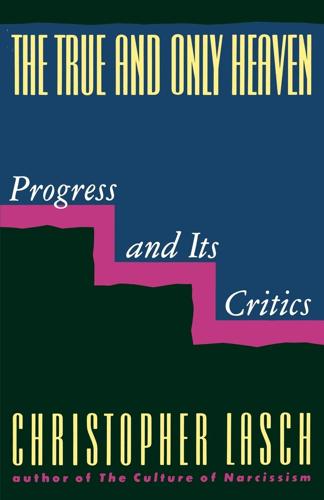
The True and Only Heaven: Progress and Its Critics
by
Christopher Lasch
Published 16 Sep 1991
Their history of victimization, they argued, entitled them to revenge, although they indicated a willingness to settle for reparations. For obvious reasons, liberals could agree to reparations in order to escape reprisals; but their sponsorship of busing and affirmative action carried no moral weight as gestures of "compassion." Those who supported busing and affirmative action—comfortable members of the professional and managerial classes, for the most part—did not have to live with the consequences of their actions. The burden of busing notoriously fell on ethnic neighborhoods in the cities, not on suburban liberals whose schools remained effectively segregated or on wealthy practitioners of "compassion" whose children did not attend public schools at all.
…
Not only did it not solve the problem of black poverty; it did not even address the deeper problem of self-respect. If anything, affirmative action undermined self-respect by creating the impression that black people had to be judged by standards lower than the ones applied to whites. At best, compensatory programs made it possible for talented individuals to escape from the ghetto, widen -409- ing the gap between the black middle class and the poor. The politics of resentment and reparation also widened the gap between liberals and the American public, which supported laws against segregation and disfranchisement but drew the line at busing and affirmative action. In the absence of a public consensus in favor of reverse discrimination, as it came to be called, liberals had to rely more and more on the courts, which proceeded to create a new category of prescriptive rights and to expand their own authority into the field of social engineering.
…
The conviction that most Americans remained politically incorrigible—ultranationalistic in foreign policy, racist in their dealings with blacks and other minorities, authoritarian in their attitudes toward women and children—helps to explain why liberals relied so heavily on the courts and the federal bureaucracy to engineer reforms that might have failed to command popular support if they had been openly debated. The great liberal victories—desegregation, affirmative action, legislative reapportionment, legalized abortion— were won largely in the courts, not in Congress, in the state legislatures, or at the polls. Instead of seeking to create a popular consensus behind these reforms, liberals pursued their objectives by indirect methods, fearing that popular attitudes remained unreconstructed.
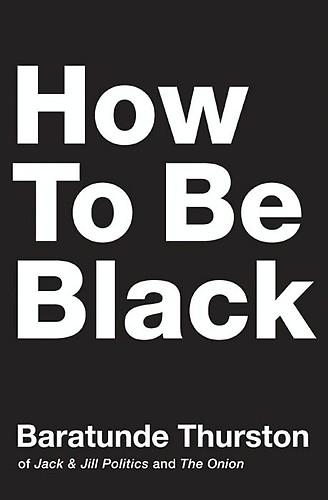
How to Be Black
by
Baratunde Thurston
Published 31 Jan 2012
This is a book about the ideas of blackness, how those ideas are changing, and how they differ from the popular ideas promoted in mainstream media and often in the black community itself. You’re probably familiar with the popular concept of blackness: hip-hop, crime and prison, fatherless homes, high blood pressure, school dropouts, drugs, athleticism, musical talent, The Wire, affirmative action, poverty, diabetes, the Civil Rights Movement, and, recently, the U.S. presidency. Some of these concepts are stereotypes. Some are true. Most are negative. But in the age of President Barack Obama, all of them are limiting and simply inadequate to the task of capturing the reality of blackness.
…
Thanks for joining us, Joe . . . Part 3—Black Issues There are two types of issues: those that have to do with black people and everything else. You must be prepared to comment on both. The following is a media-approved list of official black issues: • Crime. Why do black people do so much? • Affirmative action. Why do black people take jobs from white people? • Poverty. Why are black people poor? • Racism. Why haven’t black people gotten over it already? • Drugs. Why do black people do them? • Sunflower seeds. Why do black people love them? • Welfare. Why are black people on it? • Hip-hop. Why can’t black people just let us have it already?
…
If you find yourself running out of ways to blame black people, use any of the following tactics to distract your host: • Invoke the success of minority immigrants who came here voluntarily. • Cite the number of decades since the end of slavery. • Blame hip-hop. • Point to the example of Barack Obama. • Blame hip-hop again. This technique works whether for anti–affirmative action crusaders of the 1990s or black Tea Party members of the 2010s. Whichever black spokesperson path you choose, conservative or traditional, take pride in the fact that both can be equally unhelpful to your people. Beyond the Media In all likelihood, you won’t be called to perform such a high-profile task as representing all black people in the media, but you can still use this training in your everyday life.
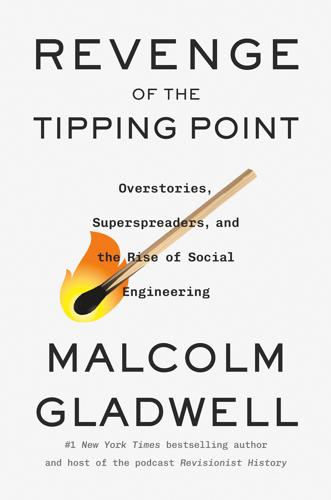
Revenge of the Tipping Point: Overstories, Superspreaders, and the Rise of Social Engineering
by
Malcolm Gladwell
Published 1 Oct 2024
In 2022, the Supreme Court heard another affirmative-action case, Students for Fair Admissions v. President and Fellows of Harvard College. By this point the Court had lost patience with American colleges and their pretense that a number they refused to specify could serve as the basis for an entire admissions system. So the Court threw up its hands and ruled all race-based affirmative-action programs unconstitutional. Can you blame them? The irony here is overwhelming. The game that Harvard is playing with rugby and that Georgetown is playing with tennis is, of course, also affirmative action. Except that instead of admitting underprivileged students with lower academic credentials, athletic affirmative action admits privileged students with lower academic credentials.
…
Except that instead of admitting underprivileged students with lower academic credentials, athletic affirmative action admits privileged students with lower academic credentials. It is only the first kind of affirmative action, however, that universities were unwilling to defend. And only the first kind that was considered so controversial that it ended up before the Supreme Court. The United States decided that it had no place for a special deal intended to benefit people who have been subjected to discrimination and hardship. But it was fine with a special deal intended to benefit people who can afford to spend hundreds of thousands of dollars on their children’s ground strokes.
…
The university needed to enroll enough minorities so that those groups could contribute meaningfully to the school’s diversity. It needed to reach a “critical mass” of blacks and Hispanics—and it could not achieve that, it said, if it admitted students like Abigail Fisher. Fisher was one of the most serious legal challenges to the practice of affirmative action that had been in place in many American schools for decades. The courtroom was packed. Fisher’s lawyer spoke first. He barely got a sentence out before the justices interrupted him with question after question. The stakes in the case were huge. Then it was the university’s turn. The school’s attorney was Gregory Garre.
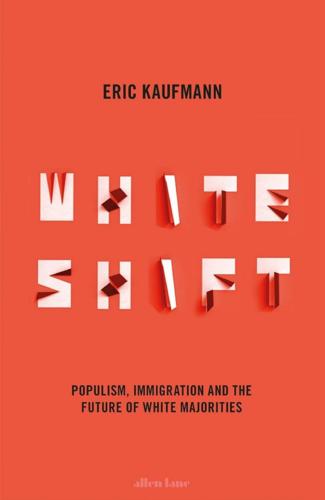
Whiteshift: Populism, Immigration and the Future of White Majorities
by
Eric Kaufmann
Published 24 Oct 2018
This is why the attempt by the Law Society of Upper Canada in 2017 to force its members to promote diversity is being challenged in the courts.34 In the 1960s, resistance to left-modernism came from formerly socialist, primarily Jewish, intellectuals like Bell, Nathan Glazer and others. Glazer was an especially influential critic of the multicultural resurgence of the 1990s.35 These criticisms shaped intellectual life on the centre-right and informed opposition to bilingualism and affirmative action in the United States. Even so, the multicultural narrative continued in the media while affirmative action was upheld by the courts and practised in elite universities. Events moved more quickly in Europe in the 1990s, where populist-right gains in countries such as France, Italy and Austria prompted mainstream politicians to abandon the rhetoric of multiculturalism.
…
There is also a question of collective dignity: if my group is not treated fairly and experiences poverty, even if I am rich and experience no discrimination, the group’s subaltern condition affects me. I share its pain. Whites generally are not discriminated against, but there are exceptions, such as affirmative action, which could be a source of legitimate white grievance. Here it’s noteworthy that Asian opposition to affirmative action in California is considered legitimate whereas white opposition is not. This is inconsistent. Whites may also lack community structures akin to those for minority groups when they experience failure, depression or loneliness. This is partly the legacy of their individualism and partly because they have not had to develop group institutions in the past to protect themselves.
…
One often sees this among, say, outsiders who have moved to ethnically distinctive regions like Cajun country or Cornwall and oppose rapid erosion of the Cajun/Cornish share of the local population. At the national level, this means some ethnic minorities – especially Hispanics and Asians in America – have a vicarious attachment to the white majority and support majority ethnic aims like reducing immigration or resisting affirmative action. As minorities increase in size, an important question for electoral politics is whether they will incline towards ethno-traditional nationalism or multiculturalism. MIGRATION AND ETHNIC GROUPS IN WORLD HISTORY In order to understand today’s populist upsurge we must stand back to take in a larger historical drama: the evolution of white-majority ethnic groups in the West.
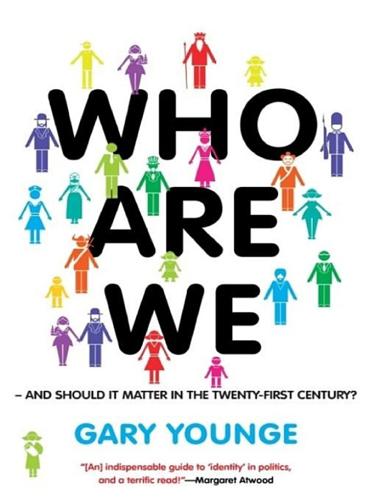
Who Are We—And Should It Matter in the 21st Century?
by
Gary Younge
Published 27 Jun 2011
However, as another story about affirmative action—the move to redress gender, racial and ethnic inequality—illustrates, the target of grievance is rarely the source of the resentment. In 1995, Jennifer Gratz, a working-class girl who finished in the top 5 percent of her high school class, was rejected by the University of Michigan in Ann Arbor. Gratz assumed she had been denied the place because of something she could not help—her race. The university used a points system when selecting applicants, and those from under-represented minorities automatically received extra points. Concluding that affirmative action had handed her place to a less qualified black student, Gratz turned, crying, to her father, her rejection letter in her hand, and asked, “Dad, can we sue?”
…
Rather than change the material realities that give the constructs of race and racism their meaning, the tortured logic went that, if you constructed race differently on a form, then maybe those realities and our understanding of them would change. Others, on the Right, saw the introduction of the category as a Trojan horse for the elimination of affirmative action. “The main effect of the multiracial check-off is that it will doom affirmative action, already on the run,” argued James Glassman in the Washington Post. For that very reason, many civil rights leaders argued against the multiracial box, viewing it as a direct assault on their ability to redress racial inequality that would dilute resources earmarked for minorities.
…
“When a white judge sits on a panel with at least one African-American judge,” the study, conducted by Adam B. Cox and Thomas J. Miles, concluded, “she becomes roughly 20 percentage points more likely to find” a voting-rights violation. One of the most right-wing voices on the court, and a firm opponent of affirmative action, Antonin Scalia effectively confirmed this from his own experience. Referring to the presence of the first black justice, Thurgood Marshall, Scalia recalled: “[He] could be a persuasive force just by sitting there ... He wouldn’t have to open his mouth to affect the nature of the conference and how seriously the conference would take matters of race.”

Good Economics for Hard Times: Better Answers to Our Biggest Problems
by
Abhijit V. Banerjee
and
Esther Duflo
Published 12 Nov 2019
But we need a more transparent social conversation about the design of affirmative action. The current implementation of affirmative action policies, which dances around the concept of race instead of directly confronting it, is probably not anywhere close to ideal. The Harvard challenge is both inevitable and perhaps desirable in that it makes society confront its own inconsistencies. From the perspective of the narrow objective of affecting preferences by increasing contact between social groups, the growing resentment of affirmative action poses a problem. Allport’s original hypothesis was that contact would reduce prejudice, but only if some conditions were satisfied.
…
HARVARD One implication of this evidence is that diversity in the student body of educational institutions is valuable in and of itself, because it durably affects preferences. Affirmative action was originally envisioned in the United States partly as compensation for historical injustice, and partly as a way to level the playing field between the whites, who had the advantage of many generations of advanced education, and the rest. But it goes much beyond that. What the twenty-seven RCTs on the effect of contact on tolerance imply is that this mixing is one of the most powerful instruments we have for making society more tolerant and more inclusive. The problem is that affirmative action itself is now a polarizing idea. In the spring of 2018, New York City struggled with the redesign of the admission system for its elite public schools, which is currently based on an exam and lets in very few Latinos and African Americans.
…
For example, the wage gap between the traditionally disadvantaged castes (SC/STs) and others dropped from 35 percent in 1983 to 29 percent in 2004.14 This does not look so spectacular, but is more than the improvement in the wage gap between blacks and whites in the United States over a similar time period. In part this is the result of the affirmative action policies Ambedkar put into place, which gave historically discriminated groups privileged access to educational institutions, government jobs, and the various legislatures. Economic transformation also helped. Urbanization, by making people more anonymous and less dependent on their village networks, has permitted greater mixing of the castes.
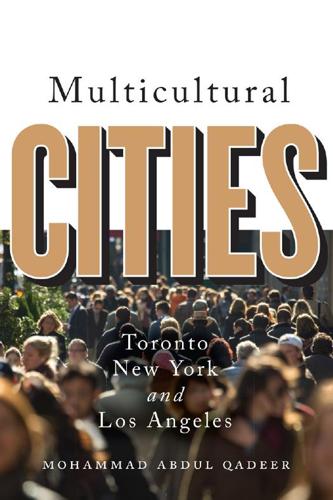
Multicultural Cities: Toronto, New York, and Los Angeles
by
Mohammed Abdul Qadeer
Published 10 Mar 2016
They advocate for colour- and culture-blind access for all, while overlooking the built-in structural biases of service systems. The charge of preferential treatment of minorities flies around and feeds a political backlash. Recently, the tide has been turning against affirmative-action policies. The US Supreme Court in 2014 restricted affirmative action in admissions to schools.24 In 2009 the Supreme Court invalidated New Haven, Connecticut’s preferential promotion of non-White firemen over twenty White applicants.25 Canadian human rights tribunals are inundated with claims and counterclaims of discrimination by persons of both the minority and majority The Pluralism of Urban Services 213 backgrounds.
…
See Michael Ornstein, Ethno-racial Groups in Toronto 1971–2001: A Demographic and Social-economic Profile (Toronto: Institute for Social Research, York University, 2006) and Camille Zubrinsky Charles, Won’t You Be My Neighbor? (New York: Russell Sage Foundation, 2006). 300 Notes to pages 212–18 24 Bill Mears, “Michigan’s Ban on Affirmative Action Upheld by Supreme Court,” CNN News, 22 April 2014, www.cnn.com/2014/04/22/justice/ scotus-michigan-affirmative-action/. 25 Adam Liptak, “Supreme Court Finds Bias against White Firefighters,” New York Times, 29 June 2009, www.nytimes.com/2009/06/30/us/30scotus .html. 10. Urban Planning for Cultural Diversity 1 These goals of planning are not always compatible in all situations.
…
Although there are some disquieting questions about the segregationist consequences of ethnic agencies, they are particularly useful in the delivery of services to new immigrants and marginalized communities.15 By providing culturally and religiously appropriate services, ethnic agencies empower these groups and enhance the adequacy of services for them. 206 Multicultural Cities Yet it is the induction of minorities and excluded groups into decision making that consolidates the cultural responsiveness of service organizations. On this score, the past fifty years have witnessed steady progress in the enactment of anti-racism laws, human rights legislation, affirmative action policies, and employment equity programs. Minorities have not achieved full equality, but the barriers to their inclusion have come down. The City of Toronto undertook a comprehensive exercise in instituting access and equity policies in its municipal operations in 1998. Not that, before this exercise, Toronto was a city of indifference to racial and ethnic inequities.
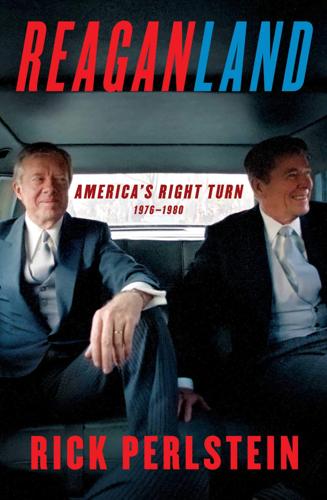
Reaganland: America's Right Turn 1976-1980
by
Rick Perlstein
Published 17 Aug 2020
Robert, 139 Abourezk, James, 168, 258, 382, 395 Abrams, Morris, 883 Abscam sting, 729, 769, 814 Abzug, Bella, 84, 92, 99, 131–132, 133, 148, 150, 156, 173, 175, 178, 182, 265, 820, 821 academic academics, 286, 287 Accelerated Christian Education (ACE) program, 350 Accuracy in Media, 857 Ackley, Gardner, 292 The Act of Marriage: The Beauty of Sexual Love (Tim & Beverly LaHaye), 155 ACTION (agency), 264–265 Action Committee for Long Island, 753 Adams, Brock, 588 Adrian, Ron, 236 Advocacy for Children’s Television, 463 Advocate (newspaper), 92 affirmative action, Bakke case, 164–167 affirmative action tests, 354 Affirmative Discrimination (Glazer), 165 Afghanistan, 696–701, 700, 710–711, 711, 719 Africa Dan Crane on, 384 Reagan on racial issues, 221–222 African Americans affirmative action tests, 354 Bakke affirmative action case, 164–167, 482 Black Woman’s Agenda, 183 California anti-smoking proposition, 399 California Propositions 8 and 13, 324 Carter and, 214 Ku Klux Klan, 830–832, 851–852, 858–859 Reagan and, 368, 522, 884–885, 909 RNC recruiting black Republicans, 220 Roots miniseries, 66, 165–167 segregation academies, 349 women’s conference, 183 Agee, William, 801–802 Agent Orange, 556 Agnew, Spiro, 454, 455 agriculture, 428–431 Ahearn, Rick, 735 Ailes, Roger, 754 AIPAC.
…
Reported the Washington Post in its article on the amicus arguments in Bakke, “What potentially is the most influential brief has yet to be filed by the Justice Department, which has been struggling with the language of its arguments under intense pressure from civil rights leaders and the administrators of affirmative action plans in a number of federal departments.” Affirmative action was the perfect issue to keep the Democratic Party divided—which was why Richard Nixon had advocated expanding the Johnson administration’s Philadelphia Plan. On Monday, September 19, the Justice Department released its seventy-four-page Bakke brief. It was another hedging Carter administration performance. It endorsed the principle of “reasonable goals or targets,” but rejected “rigid exclusionary quotas”—without which, civil rights groups protested, the principle of affirmative action was moot. The argument was considerably to the left of an earlier, leaked draft.
…
Senator Helms convened Thomson, The Price of LIBerty; Marjorie Spruill, “Gender and America’s Right Turn,” Rightward Bound: Making America Conservative in the 1970s (Cambridge, MA: Harvard University Press, 2008), 84. Allan Bakke Matthew Frye Jacobson, Roots Too: White Ethnic Revival in Post–Civil Rights America (Cambridge: Harvard University Press, 2006), 98–100. more friend-of-the-court briefs “57 Law Briefs on Bakke,” WP, September 17, 1977. Supporters of affirmative action For overview see John David Skrtenty, The Ironies of Affirmative Action: Politics, Culture, and Justice in America (Chicago: University of Chicago Press, 1996). World of Our Fathers Jacobson, Roots Too, 18, 79, 269. “Everyone wants a ghetto” Ibid., 18. Jews, themselves victims “Rights Groups Divide Over Quotas,” NYT, June 12, 1977.
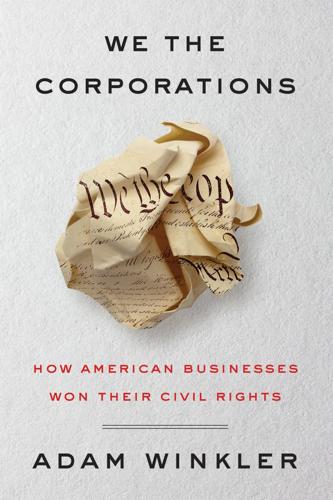
We the Corporations: How American Businesses Won Their Civil Rights
by
Adam Winkler
Published 27 Feb 2018
Beginning with a 1978 case, University of California v. Bakke, the court began to insist that affirmative action policies, such as minority set-aside programs, satisfy constitutional law’s hardest test, “strict scrutiny.” Bakke suggested strict scrutiny was necessary because race-based affirmative action was another form of racial discrimination, raising the same concerns as Jim Crow laws. The effect of Bakke was to make it easier to challenge affirmative action polices as unconstitutional.27 Although strict scrutiny for affirmative action grew out of Bakke, that case split the justices and, as a result, there was no controlling majority opinion.
…
Stone’s justification for stricter judicial review of laws burdening minorities was grounded in political power: minority groups were easily victimized by the majority. Yet in the affirmative action cases, the justices abandoned that rationale, giving special judicial protection to the white majority. It was another example of reform adopted to help the powerless that was exploited and transformed by corporations to benefit the powerful. The Supreme Court justice who first suggested that race-based affirmative action be subject to strict scrutiny was Lewis F. Powell Jr., a Nixon appointee who authored the Bakke opinion. Another area of constitutional law in which Powell would have a tremendous influence was corporate rights.
…
And he did it because the company was owned and operated by Sikhs. As a result, the court said, “Flying B undoubtedly acquired an imputed racial identity.” Here, ascribing a racial identity to a corporation was necessary to give teeth to antidiscrimination law. Corporations today can also have a legally recognized racial identity under affirmative action policies. Federal law provides that companies with 51 percent minority control and ownership can be certified as “Minority Business Enterprises,” which qualifies them for a variety of contracting, banking, and training programs for economically and socially disadvantaged groups. States have similar programs, the result of which is effectively to classify particular companies as African American, Hispanic American, or Native American.
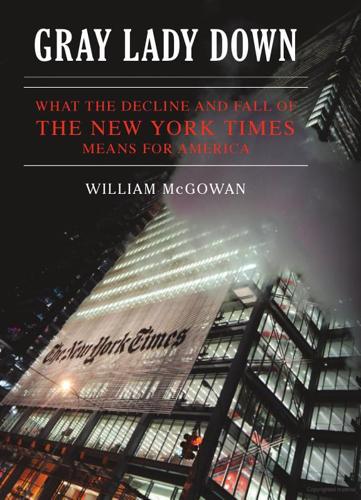
Gray Lady Down: What the Decline and Fall of the New York Times Means for America
by
William McGowan
Published 16 Nov 2010
Indeed, an official report on the Jayson Blair episode included “A Note on Affirmative Action,” an appendix by Roger Wilkins, an activist who had become an urban affairs columnist and a member of the editorial board. Wilkins maintained that staff recruitment occurred within a culture where it was taught that “white men were the only people qualified to carry out the serious business of the world.” Thirty-five years of affirmative action had “blunted” but not eradicated “the preferences and prejudices that produced such results,” he argued, and therefore, “The countercultural forces of affirmative action and diversity programs are still necessary to assemble the kind of news gathering staff required to produce excellent journalism.”
…
Instead, he displayed a righteous, even sanctimonious insistence that he was “setting a moral standard.” Not surprisingly, the diversity dissidents in the newsroom—and there were quite a few—became skittish. As John Leo of U.S. News and World Report put it, the paper’s “hardening line on racial issues, built around affirmative action, group representation and government intervention,” was difficult for staffers to buck. “Reporters do not thrive by resisting the deeply held views of their publisher.... When opinionated publishers are heavily committed to any cause, the staff usually responds by avoiding coverage that casts that cause in a bad light.”
…
Touching on the combustible issue of racial preferences as a factor in Blair’s rise, the report explained that he had joined the Times through a minority-only internship and then was promoted to full-time reporter in January 2001, and that his immediate supervisor, Jonathan Landman, the Metro editor, objected but ultimately deferred to the paper’s “commitment to diversity.” Landman did warn his higher-ups that editors had to “stop Jayson from writing for the Times,” but that memo had little effect. Although the Times denied any connection between Blair and the broader issue of affirmative action, such a conclusion was hard to get around. The recently retired Times columnist William Safire said, “Apparently, this 27-year-old was given too many second chances by editors eager for this ambitious black journalist to succeed.” As part of its lacerating self-inquiry, the paper held a special off-site “town meeting” of newsroom employees to address the worsening staff morale and many still-unanswered questions.
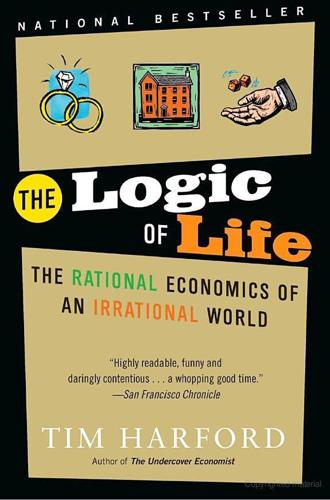
The Logic of Life: The Rational Economics of an Irrational World
by
Tim Harford
Published 1 Jan 2008
Since blacks are locked into a spiral of negative incentives, we need to work out how to change those incentives. Affirmative action programs are often thought to dampen the incentives of minority groups to work hard. If you’re going to get the job anyway through some affirmative action program, why work? A badly designed program certainly could have that effect, but it doesn’t have to. Instead, affirmative action could make the difference between a young black kid giving up because he thinks he has no chance and striving on because he realizes that he does have a chance if he studies. Not all affirmative action programs are alike; what matters is what impact the program has on incentives.
…
Fryer instead used a survey: Roland Fryer, with David Austen-Smith, “An Economic Analysis of ‘Acting White,’” Quarterly Journal of Economics 120 (May 2005): 551–83, post.economics.harvard.edu/faculty/fryer/ papers/as_fryer_qje.pdf, and Fryer, “Acting White.” Fryer points to analogues: Roland Fryer, “A Model of Social Interactions and Endogenous Poverty Traps,” NBER Working Paper W12364, post.economics.harvard.edu/faculty/fryer/papers/cultural_capital_final.pdf, forthcoming in Rationality and Society. Not all affirmative action programs: Roland Fryer and Glenn Loury, “Affirmative Action and Its Mythology,” Journal of Economic Perspectives 19, no. 3(Summer 2005): 147–62. Roland Fryer, who was recently: On Fryer’s randomized trial, interview with Roland Fryer, January 2007. On his appointment by the New York City education department, see Jennifer Medina, “His Charge: Find a Key to Students’ Success,” The New York Times, June 21, 2007.
…
Not all affirmative action programs are alike; what matters is what impact the program has on incentives. Given the complexities, I am not sure what a successful affirmative action program would look like, but I am sure that randomized trials, “Moving to Opportunity”–style, could pick out some success stories. Roland Fryer, who was recently appointed “chief equality officer” of New York City’s education department, has also been thinking about more direct incentives. What about paying kids to read? Or paying them more if they get better grades? He has secured the funding to run a big randomized trial with tens of thousands of kids, of all races. Some kids will be paid for their own achievements—say, two dollars to read a book.
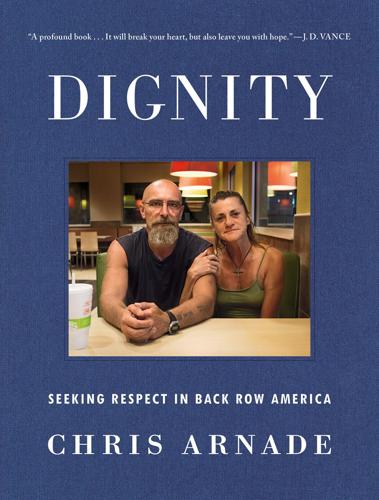
Dignity: Seeking Respect in Back Row America
by
Chris Arnade
Published 3 Jun 2019
It is also something many don’t care to do anyway—and for good reason. The direct solution we offer for minorities is affirmative action, an accelerated boost to the front row for a lucky few, and although justifiable in the short term, it is a Band-Aid for a system needing surgery. For one thing, it still presumes that the main problem is a lack of education or credentialed achievement, implying that people who value less measurable forms of meaning get what’s coming to them. For another, affirmative action inflames racial tensions as it drives another wedge between the white and black members of the back row.
…
In the back row, it can feel as though everyone is sinking, making it the perfect environment for the politics of blame. That all anyone does is throw out a few lifesavers, providing an escape to a small group, makes it even more appealing. That the lifesavers are seen to unfairly go to minorities via affirmative action makes it even easier. Affirmative action is the right short-term way to try to deal with the long history of structural racism, yet if everyone—black, white, Hispanic—is sinking, it can feel unfair. If it is more about getting a larger share of a shrinking pie than a larger share of a growing pie, then it can inflame hate.
…
I could point to my childhood and say I was different from the rest of the whites in the front row, a more nuanced version of “I have black friends.” And I could tell myself I was doing everything I could for minorities. I voted for and argued for policies I saw as fighting the remaining problems—I supported criminal justice reform, I supported affirmative action, I supported expanding the social safety net, and I supported increasing my own taxes for all of this. Then I did more than drive through the Bronx or East New York. I spent time in each, and I listened, and I saw it wasn’t any better. It was just the same ol’ thing, dressed up differently.
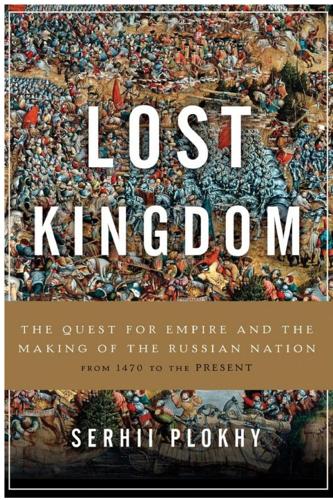
Lost Kingdom: The Quest for Empire and the Making of the Russian Nation
by
Serhii Plokhy
Published 9 Oct 2017
Vakar, Belorussia: The Making of a Nation: A Case Study (Cambridge, MA, 1956). CHAPTER 13: LENIN’S VICTORY Francine Hirsch, Empire of Nations: Ethnographic Knowledge and the Making of the Soviet Union (Ithaca, NY, 2005); Terry Martin, The Affirmative Action Empire: Nations and Nationalism in the Soviet Union, 1923–1939 (Ithaca, NY, 2001); idem, “An Affirmative Action Empire: The Soviet Union as the Highest Form of Imperialism,” in A State of Nations: Empire and Nation-Making in the Age of Lenin and Stalin, ed. Ronald Grigor Sunny and Terry Martin (Oxford, 2001), 67–92; Liliana Riga, The Bolsheviks and the Russian Empire (New York, 2012); Vasyl Shakhrai and Serhii Mazlakh, On the Current Situation in the Ukraine, ed.
…
“In departing from us, Comrade Lenin enjoined us to strengthen and expand the Union of Republics,” declared Stalin. “We swear to you, Comrade Lenin, that we shall fulfill that commandment of yours with honor!” Lenin’s vision of Great Russian chauvinism as the main threat in domestic politics, countered by the affirmative action for non-Russians, would characterize Stalin’s nationality policy for the rest of the decade. Stalin was loyal to some of Lenin’s ideas but not to others. Stalin adopted Lenin’s model of the Union but adapted it to his needs. His policy of “autonomization” of the republics was now dressed up as a federal union.
…
Adopted by the Twelfth Party Congress in April 1923, when Lenin had already left the political scene, the policy was rooted in Lenin’s writings on the Ukrainian question, particularly his texts of December 1919, when the Red Army had recaptured Ukraine from the armies of Denikin and the troops of the Ukrainian People’s Republic led by Symon Petliura. Back then, Lenin had argued for bringing local cadres into Soviet institutions. Now the party launched an affirmative-action program to staff party and government structures with non-Russians, thereby creating local elites loyal to the regime in faraway Moscow. The cultural component called for the promotion of local languages and cultures, which began with support for education, publishing, and theatrical performances in those languages and ended with the obligatory Ukrainization, Belarusization, and so on of the party and government apparatus, first on the local level and then in the major cities and capitals as well.
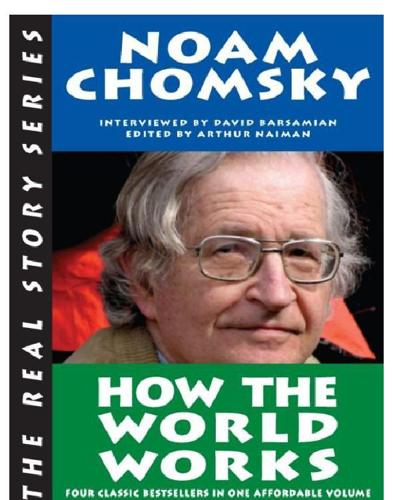
How the World Works
by
Noam Chomsky
,
Arthur Naiman
and
David Barsamian
Published 13 Sep 2011
How it works as a practical matter can be tricky. I don’t think there are any simple mechanical rules for it. The attack on affirmative action is, to a large extent, an attempt to justify the oppressive, discriminatory patterns that existed in the past. On the other hand, affirmative action should certainly be designed so that it doesn’t harm poor people who don’t happen to be in the categories designated for support. That can be done. There have been very effective applications of affirmative action—in the universities, the construction industry, the public service field and elsewhere. If you look in detail, you find plenty of things to criticize, but the main thrust of the program is humane and appropriate.
…
Suppose you have two runners who start at exactly the same point, have the same sneakers, and so on. One finishes first and gets everything he wants; the other finishes second and starves to death. One of the mechanisms to address inequality is affirmative action. What do you think of it? Many societies just take it for granted. In India, for example, a sort of affirmative action system called reservations was instituted back in the late 1940s, at the time of independence, in an effort to try to overcome very long-standing and deep-seated caste and gender differences. Any such system is going to impose hardships on some people, in order (one hopes) to develop a more equitable and just society for the future.
…
Italics indicate brief identifications of people and organizations (often supple mented by other information as well). abortion Abrams, Elliott Acheson, Dean ACLU (American Civil Liberties Union) Adams, John Quincy ADM (Archer Daniels Midland) aerospace industry, socialization of Aetna Life Insurance affirmative action Afghanistan Africa catastrophe of capitalism in deaths due to debt service in devastation by slave trade racist atrocities in African-American mortality rateSee also racism Africa Watch agro-export model of development Ahmad, Eqbal AIDS AIPAC Alabama Albanians Albright, Madeline alcohol Algeria Al Haq Allende, Salvador “alliance capitalism,” Alliance for Progress Alliance, the Allon plan alternative media.
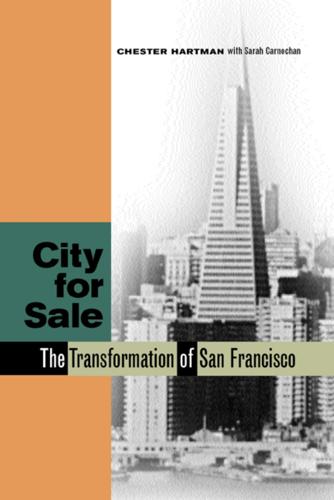
City for Sale: The Transformation of San Francisco
by
Chester W. Hartman
and
Sarah Carnochan
Published 15 Feb 2002
First . . . all construction and permanent jobs in the project area, both public and private, must go, wherever possible, to qualified residents of San Francisco—and half of these jobs must go to minority residents of San Francisco through an affirmative action program. All parties must agree that the San Francisco Coalition, backed by an adequate budget, will set up and monitor the affirmative action program for the jobs and contracts in the public and private blocks of YBC. . . . Second, the City must guarantee that the 400 or more units of lowincome housing struggled for and won by the people of South of Market will be built. . . .
…
The most concrete issue—regarding TOOR’s housing—was whittled down to a commitment to release only one hundred of the four hundred units from the tie-in to construction of the convention center. The affirmative action hiring demand rapidly boiled down to how much money the San Francisco Coalition would get to undertake recruitment and monitoring activities. The squeeze the City and agency faced was that the construction trade unions were not wild about affirmative action demands to begin with; as the April 17, 1975, Chronicle noted, “Labor unions have resisted giving the group [the S.F. Coalition] that much power over jobs. . . . ” A buy-off of the coali- The Redevelopment Agency Flounders / 125 tion seemed the easiest way out, and, according to the April 21, 1975, Chronicle, “The proposed agreement would give the coalition the money it had been seeking, but would not otherwise change the programs the unions have agreed to for minority workers on the project.”
…
The coalition’s original demand for an annual budget of $369,000 dropped to $251,000, and they finally settled for $180,000 annually for five years—$40,000 in cash and fourteen CETA positions worth $140,000. (Up through the time the agency ended its contract with the San Francisco Coalition, in January 1981, payments totaled $459,469. The actual number of placements was minuscule;22 few community organizations participated in coalition activities, and the more important ones—Chinese for Affirmative Action, the Mission Hiring Hall, Women in Apprenticeship— had resigned; board membership was constantly changing, and there was no board control of staff;23 funds were egregiously mishandled; and some of the key figures had been convicted of various crimes.24 It was a sad story: In its eagerness to build support for and remove obstacles to the YBC project, the agency, where African Americans and other minorities had played a major role as commissioners and staff, set up a sham response to a legitimate community demand for minority jobs.)

The Rise and Fall of the Neoliberal Order: America and the World in the Free Market Era
by
Gary Gerstle
Published 14 Oct 2022
Arguably the most skillful parliamentarian in American politics since Woodrow Wilson, LBJ pushed one initiative after another through a Congress disoriented by the scale of civil rights protests, on the one hand, and the assassination of President Kennedy, on the other.8 A believer in the Keynesian principles of the New Deal order, LBJ was confident that he could use government to correct the ills of the American economy and society. LBJ also understood that he would need to attack and remedy racial inequality, a task that FDR had scrupulously evaded. Indeed, Johnson’s Great Society committed itself both to dismantling Jim Crow and to remedying through affirmative action the institutional racism that coursed its way through so many American institutions, private and public, North as well as South. In two landmark pieces of legislation, the Civil Rights Act of 1964 and the Voting Rights Act of 1965, Johnson delivered the strongest measures of their kind since Reconstruction.
…
His executive order 11246 committed his administration and subsequent ones to a vast project of social engineering: the elimination of racial, religious, and sexual bias from all institutions, public and private, that received significant amounts of federal funds. This program came to be known as affirmative action. Johnson did all this knowing that such an ambitious program of racial remediation, entirely deserving of the name “Second Reconstruction,” would probably cost the Democratic Party the white South, one of the key constituencies on which the New Deal order had built its power. That constituency included Democrats in Johnson’s home state, Texas, who had propelled him into public life and had facilitated his ascent to the presidency.9 If he perceived this outcome presciently, Johnson was also distracted from thinking about it by a war in Vietnam that he inherited from Eisenhower and Kennedy.
…
The crucial initiative in this regard was President Lyndon Johnson’s executive order 11246, little noticed when it was issued in 1965, which barred employers from “discrimination in employment decisions . . . on the basis of race, color, religion, sex, or national origin.” The executive order affected contractors with fifty-one or more employees and doing business with the federal government worth more than $50,000 per year; they were required to develop affirmative action plans, based on whether analysis of their hiring practices showed disparities between the percentages of qualified minority and female applicants and the percentages actually hired. These new rules applied to thousands of employers who together (in the 1960s) employed 23 million workers spread out among 73,000 work sites.

The Case for Israel
by
Alan Dershowitz
Published 31 Jul 2003
As the London Times c07.qxd 6/25/03 62 8:17 AM Page 62 THE CASE FOR ISRAEL editorialized at the time, “It is hard to see how the Arab world, still less the Arabs of Palestine, will suffer from what is mere recognition of accomplished fact—the presence in Palestine of a compact, well organized, and virtually autonomous Jewish community.”24 Even for those who reject any blameworthiness on the part of Palestinians and Arabs for the plight of the Jewish refugees from Nazism and Islamic apartheid—an untenable position in light of the history of widespread Palestinian support for Nazism—the case for some affirmative action for a people who suffered so grievously at the hands of others is powerful. Those of us who support affirmative action with regard to African Americans do so, at least in part, on a theory of reparation for past wrongs. Although our own forebearers may bear none of the responsibility for slavery, since they were not even in the country, we must all be willing to share some of the burdens of reparation.
…
Certainly those who directly benefited from slavery bear a special responsibility for making reparations, just as those who benefited from the Holocaust bear special responsibility to those who were its victims. But in a larger sense, the entire world owes the victims of slavery, the Holocaust, and other humanly imposed genocides a special form of affirmative action. Even the Peel Commission seemed to recognize an affirmative action component in its decision to recognize the existence of a Jewish national home: It is impossible, we believe, for any unprejudiced observer to see the National Home and not wish it well. It has meant so much for the relief of unmerited suffering. It displays so much energy and enterprise and devotion to a common cause.
…
In so far as Britain has helped towards its creation, we would claim, with Lord Balfour, that to that extent, at any rate, Christendom has shown itself “not oblivious of all the wrong it has done.”25 The Muslim world too should recognize all the wrong it has done to the Jews it historically treated as second-class noncitizens (Dhimmi). Even for those who did not believe in 1947 that partition of Palestine was just to the Palestinians, when the partition is viewed as a form of international affirmative action it seems more than fair. For those who support affirmative action based on the need for diversity, a Jewish state certainly adds considerable diversity to a world with more than forty Muslim states and numerous Christian, Hindu and Buddhist states. Although there already exists a state with a majority of Palestinians in Jordan, a new Palestinian state in the West Bank and Gaza, governed by Palestinians, would also add an element of diversity.
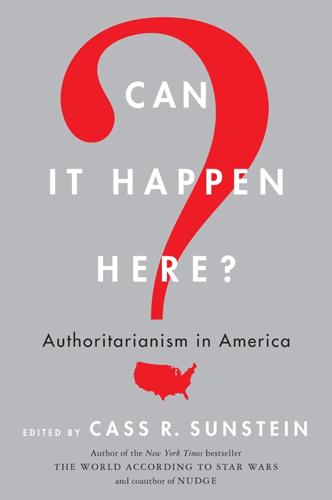
Can It Happen Here?: Authoritarianism in America
by
Cass R. Sunstein
Published 6 Mar 2018
These groups are ostensibly committed, sometimes subconsciously, to safeguarding privileges rooted in history. The identitarian alliance makes itself felt most prominently on college campuses and in entertainment. Its causes include multiculturalism, the sexual revolution, curriculum diversification, and affirmative action based on identity rather than economic status. Such causes face opposition, which identitarians struggle to silence through political correctness. As they see it, policing speech and behaviors offensive to their constituents enhances study and work environments; it levels an economic, social, and intellectual playing field that has long been tilted in favor of whites, men, and heterosexuals.8 In the 2010s, political correctness shifted emphasis from suppressing hate speech targeted at its constituents to creating safe spaces that shelter them from discomforting acts and expressions.
…
Loose-knit coalitions opposed to identitarian causes were forming, many centered in conservative churches. Televangelists such as Oral Roberts, Jerry Falwell, and Pat Robertson and talk-radio hosts such as Rush Limbaugh and Glenn Beck were ringing alarm bells about the prevailing social and political trends. The most worrying transformations involved feminism, abortion, affirmative action, drug abuse, growth in government, environmental regulation, and restrictions on religious practices. On these issues, TV networks, leading newspapers, government agencies, career politicians in Washington and state capitals, the higher-education community, Hollywood, and labor unions all tended to be on the wrong side.
…
The internal exchanges of political communities hide complexities, nuances, and variations. They tend to turn ranges of similar views into a single position immune to compromise. Just as a gun rights advocate may also believe in banning the private ownership of assault rifles, so a supporter of affirmative action may believe that without income thresholds, its benefits will go primarily to already privileged applicants. However, for fear of reprisals from their own political soul mates, both will self-censor. Hiding their private preferences and private knowledge about their group’s agenda, they will pretend to share its public consensus.
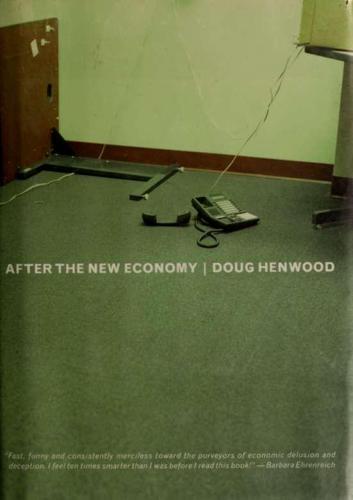
After the New Economy: The Binge . . . And the Hangover That Won't Go Away
by
Doug Henwood
Published 9 May 2005
Sam's unfortunate position, considered to be emblematic of his race, wasn't the result of "white racism," which "was not a significant problem of American blacks in 1978, and white racism had nothing to do with the problems of my lumpen-hero Mitchell 'Sam' Brewer. To the contrary, his problem was the fantasy world of bizarre expectations and entitlements fostered by constant state indulgence and favoritism towards him" (ibid, pp. xiv, xv). It was "affirmative action and Marxist teaching" that did black Americans vvTX)ng. Those and the welfare state, which Gilder found irrationally generous, and fatal to the male authority necessary to keep social discipline, since it provided a check to women independent of husbands. Gilder never repudiated any of his early positions.
…
Since 1993, even the poorest fifth of black households have enjoyed stronger income gains than whites. The gap remains huge, with average black incomes just 64% of non-Hispanic whites in 2001, but there's no denying progress over the past decade. (It remains to be seen whether this progress will survive the attack on affirmative action.) For "Hispanic" households—a Census Bureau name and classification that many people object to, since it lumps together a highly diverse population into a single category—the news is mixed, with a bounce in recent years only partly compensating for a long earUer sHde. That sHde is the result of recent immigrants, many of them quite poor, bringing down the "Hispanic" average.
…
Until recently, women had been entering the labor force at progressively higher wage rates relative to men. Women aged 20—24 earned 76% as much as men the same age in 1979, and 96% in 1993; those between 25 and 34 went from 67% to 83%—but by 1999, both numbers had slipped a bit. It may be that weakened affirmative action programs and the male bias of the higher paying new jobs are responsible, or it may be that the predominant maleness of higher-paying jobs in high tech are the culprits, but we don't know for sure yet. Putting race and sex together, we discover that white men, though still the best paid demographic group on average, have been sHpping over the last two decades; white women have been gaining; some black men have been entering high-wage work, while others have been sHpping into 94 After the New Economy low-wage work, chronic unemployment, and prison (though the tight labor markets of the late 1990s helped narrow the racial/ethnic gap in male earnings rather sharply); some black women have been trickling into high-wage employment, though most remain concentrated in low-wage sectors; and Latino men and women have been entering the workforce in large numbers, though mostly at the poorly-paid end, with minimal penetration of higher-wage sectors (Williams 1999).
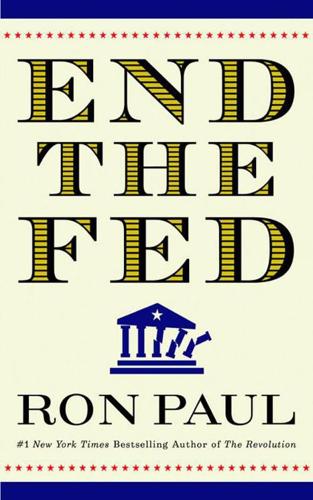
End the Fed
by
Ron Paul
Published 5 Feb 2011
The flawed concept of economic equality through force, a socialist notion, prompted legislation like the Community Reinvestment Act, which was really a way of institutionalizing affirmative action in the financial sector, since the borrowers who temporarily benefited (or were exploited) were disproportionately minorities. The very most one might concede is that affirmative action in making loans is based on the good intentions of many who support the programs. But as with all government actions, unintended consequences and new problems result. The problem is that, in the early stages, government economic planning and affirmative action lending look appealing. More homes are built and more people purchase homes that they otherwise would not have qualified for.
…
The process of monetary debasement, by inflating the money supply, redistributes wealth unfairly and dangerously from the middle class to the wealthy. It’s based on the principles of fraud and is equivalent to counterfeiting. Its goals are achieved through stealth and are difficult for the masses to recognize. Instead, the people are conditioned to believe that easy credit, monetizing debt, and affirmative action loans are reflective of good economic policy and are morally motivated. The tragedy is only recognized when the fraud of an immoral, unsustainable monetary inflation comes to an end. That is what we’re suffering from today. When arguing for sound money, the great concern I hear from the Keynesians is for the loss of the “benefits” of inflation; the people and the special interests argue that more of the same is needed.

Mindwise: Why We Misunderstand What Others Think, Believe, Feel, and Want
by
Nicholas Epley
Published 11 Feb 2014
The most compelling evidence, however, comes from experiments in which we manipulated people’s own beliefs and measured how it affected what people think God and others believe. In one, we showed volunteers persuasive arguments either in favor of or opposed to affirmative action. The arguments worked: those who read the pro–affirmative action information became more in favor, whereas those who read the anti–affirmative action arguments became more opposed. More important, our manipulation moved our volunteers’ estimates of God’s beliefs in lockstep with their own, whereas estimates of other people’s beliefs were unaffected by the arguments the volunteers read.
…
The American electorate has also exaggerated the magnitude of these differences, particularly in recent years, as elected officials have become more polarized in their own behavior.30 Graphical depictions that highlight the differences between “red states” and “blue states” only make matters worse, according to research, increasing the perceived differences between groups rather than merely reflecting them.31 And on specific issues ranging from affirmative action to welfare policies, people on opposing sides of each issue consistently assume that the other side is more extreme than it actually is.32 The sad fact is that real partisanship increases partly because of imagined partisanship on the other side. Disputes about abortion rights, for instance, focus both on the rights of the mother and on the rights of the unborn.
…
Journal of Personality and Social Psychology 68: 404–17; Farwell, L., and B. Weiner (2000). Bleeding hearts and the heartless: Popular perceptions of liberal and conservative ideologies. Personality and Social Psychology Bulletin 26: 845–52; Sherman, D. K., L. D. Nelson, and L.D. Ross (2003). Naive realism and affirmative action: Adversaries are more similar than they think. Basic and Applied Social Psychology 25: 275–89. 33. Fiorina, M. P., and S. J. Abrams (2008). Political polarization in the American public. Annual Review of Political Science 11: 563–88; Seyle, D. C., and M. L. Newman (2006). A house divided? The psychology of red and blue America.
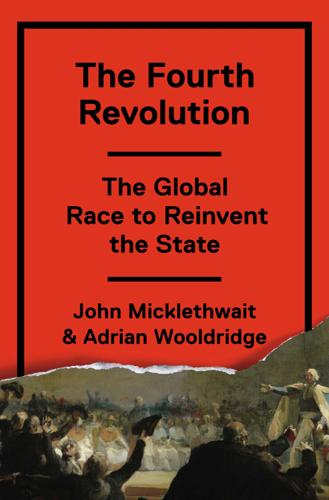
The Fourth Revolution: The Global Race to Reinvent the State
by
John Micklethwait
and
Adrian Wooldridge
Published 14 May 2014
When Martin Luther King Jr. argued that people should not be judged “by the color of their skin but by the content of their character,” he was asking to be judged. But other progressives took a more utopian approach, demanding “equality of result.” This unleashed a huge amount of state activity. The British replaced grammar schools with comprehensives and decreased streaming by ability. The Americans introduced an increasingly aggressive form of affirmative action. Fighting discrimination no longer meant just getting rid of restrictions on people’s ability to express their talents. It meant ensuring proportionality: Blacks and other ethnic minorities needed to be awarded places in universities and government contracts in line with their overall numbers.
…
Tawney had promised that, under the welfare state, Britain “would cease to be the rule for the rich to be rewarded, not only with riches, but with a preferential share of health and life, and for the penalty of the poor to be not merely poverty, but ignorance, sickness and premature death.”13 Yet in the 1970s the gap between Britain’s upper and lower social classes in terms of age-adjusted mortality was more than twice as large as it had been in the 1930s.14 The upper classes continued to be fitter and taller than the lower classes—3.2 centimeters taller, to be exact—as well as richer.15 In America even the architects of the “war on poverty” admitted that “unprecedented generosity . . . had not made much of a dent in the poverty, dependency, delinquency, or despair against which the 1964 war had been declared.”16 Many of the 1960s reforms aimed at producing equality of results, rather than just equality of opportunity, were producing very unegalitarian results, especially in education. Britain’s decision to abolish the grammar schools reduced social mobility. America’s enthusiasm for affirmative action increased the number of academic dropouts, as minority students who might have done perfectly well in less-demanding colleges struggled in elite institutions.17 A. H. Halsey, one of the leaders of the educational Left, was forced to declare in 1972 that “the essential fact of twentieth century educational history is that egalitarian policies have failed.”18 By the time Ronald Reagan and Margaret Thatcher came to power, Friedman’s barbs about big government no longer seemed far-fetched.
…
Paul Addison, No Turning Back: The Peacetime Revolutions of Post-War Britain (Oxford: Oxford University Press, 2010), p. 38. 16. Quoted in John Samples, The Struggle to Limit Government (Washington, D.C.: Cato Institute, 2010), p. 54. 17. Richard Sander and Stuart Taylor, Mismatch: How Affirmative Action Hurts Students It’s Intended to Help, and Why Universities Won’t Admit It (New York: Basic Books, 2012). 18. A. H. Halsey, ed., Department of Education and Science, Education Priority, vol. 1, Problems and Policies (London: HMSO, 1972), p. 6. Cf. A. H. Halsey, “Sociology and the Equality Debate,” Oxford Review of Education 1, no. 1 (1975), pp. 9–26. 19.
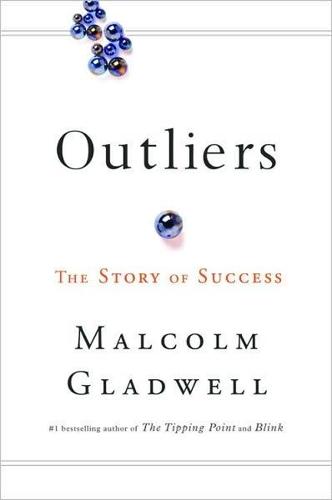
Outliers
by
Malcolm Gladwell
Published 29 May 2017
law school, we see that the white students do better. That's not surprising: if one group has higher undergraduate grades and test scores than the other, it's almost certainly going to have higher grades in law school as well. This is one reason that affirmative action programs are so controversial. In fact, an attack on the University of Michigan's affirmative action program recently went all the way to the US Supreme Court. For many people it is troubling that an elite educational institution lets in students who are less qualified than their peers. A few years ago, however, the University of Michigan decided to look closely at how the law school's minority students had fared after they graduated.
…
A s Hudson writes (and keep in mind that he did his research at elite all-male English boarding schools in the 1950s and 1960s), “Knowledge of a boy's IQ is of little help if you are faced with aformful of clever boys.”'' Let me give you an example of the threshold effect in action. The University of Michigan law school, like many elite US educational institutions, uses a policy of affirmative action when it comes to applicants from disadvantaged backgrounds. Around 10 percent of the students Michigan enrolls each fall are members of racial minorities, and if the law school did not significantly relax its entry requirements for those studentsadmitting them with lower undergraduate grades and lower standardized-test scores than everyone elseit estimates that percentage would be less than 3 percent.
…
That's the second reason Nobel Prize winners come from Holy Cross as well as Harvard, because Harvard isn't selecting its students on the basis of how well they do on the “uses of a brick” testand maybe “uses of a brick” is a better predictor of Nobel Prize ability. It's also the second reason Michigan Law School couldn't find a difference between its affirmative action graduates and the rest of its alumni. Being a successful lawyer is about a lot more than IQ. It involves having the kind of fertile mind that Poole had. And just because Michigan's minority students have lower scores on convergence tests doesn't mean they don't have that other critical trait in abundance.
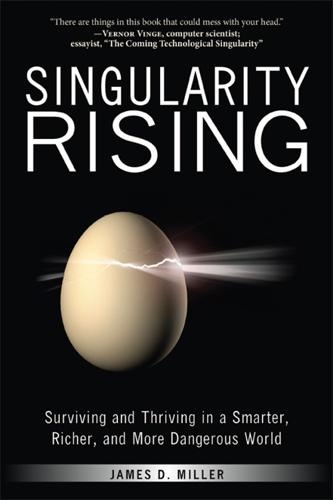
Singularity Rising: Surviving and Thriving in a Smarter, Richer, and More Dangerous World
by
James D. Miller
Published 14 Jun 2012
Furthermore, all else being equal, attractive high school girls probably receive more favorable treatment from many of their male teachers; to think otherwise is to come close to basically rejecting evolution. Elite colleges also use affirmative action to guarantee that their schools have an “acceptable” number of minority students. Since most couples probably want an egg donor of their own race, an egg-desirability-maximizing college would also use affirmative action as part of their admissions criteria so that they could serve minority egg buyers. Colleges often justify affirmative action by explaining that it “levels the playing field,” making up for the discrimination and inferior education that unjustly handicaps many minority applicants.
…
But a college genuinely interested in helping high school students who have faced unfair disadvantages would give admissions preferences to unattractive, autistic, or low-IQ applicants—all traits which, coincidentally, egg buyers would find undesirable. Yet, to the best of my knowledge, colleges never give students with these traits affirmative-action consideration. Colleges claim that they give admission preferences to poor students, but a study by a Princeton sociologist found that “whites from lower-class backgrounds incurred a huge admissions disadvantage . . . compared to whites from middle-class and upper-middle-class backgrounds.”201 Egg buyers would probably not consider an impoverished background an attractive feature and might even find it undesirable if it meant that the donor was raised in an unhealthy environment in which she received suboptimal nutrition.
…
See also amphetamines; cognitive-enhancement drugs author’s use of, 104–5, 112 black market for, 102, 163, 212 focus-improving drug, xv high achievers and grade grubbers benefit from, 163 SAT tests and, 102, 162–63 at Smith College, 102–7, 112, 163 ADHD. See Attention Deficit Hyperactivity Disorder (ADHD) Advanced Micro Devices, 122 affirmative action, 87 Africa, 117 African Americans, 173 Age of Enlightenment, 165 aging populations, 177 agricultural jobs, 132 agricultural technology, 132 AI. See artificial intelligence (AI) air conditioning, 166 akrasia, 106–7 Alcor, Arizona (cryonics), 212, 214–216, 221 Alexander the Great, xv alien life, intelligent, 200 alien workers, 135 allele, 20 Allen, Paul, 11 Allen Institute for Brain Science, 11 Alzheimer’s, 17, 108, 169, 181, 221.
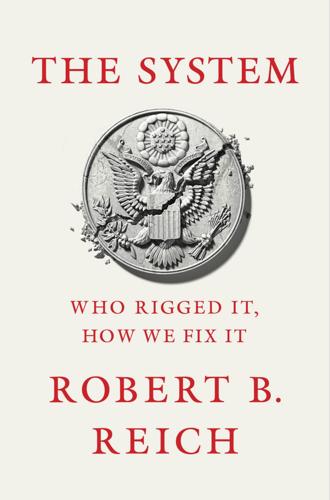
The System: Who Rigged It, How We Fix It
by
Robert B. Reich
Published 24 Mar 2020
At a time when the courts have all but ended affirmative action for black children seeking college admission, high-end universities provide preferential admission to the children of wealthy alumni—legacies, as they’re delicately called. Some prestigious colleges have even been known to make quiet deals with wealthy non-alums—admission for their kids with the expectation of a large donation to follow. Jared Kushner’s father reportedly pledged $2.5 million to Harvard just as Jared was applying. The young man gained admission despite rather mediocre grades. The most brazen affirmative-action program for children of the wealthy is the preference baked into elite admissions for graduates from private prep schools.
…
You are white, Christian, of modest means, and getting along in years. You are male. There are people of color behind you, and in principle you wish them well. But you’ve waited long, worked hard, and the line is barely moving. Then you see people cutting in line ahead of you. Who are these interlopers? Some are black, others immigrants, refugees. They get affirmative action, sympathy, and welfare—checks for the listless and idle. The government wants you to feel sorry for them. The liberal media mocks you as racist or homophobic. Everywhere you look, you feel betrayed. While Hochschild finds that “race is an essential part of this story,” the other essential parts are feelings of declining social status and betrayal.
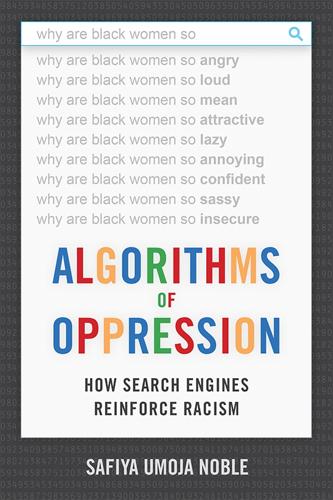
Algorithms of Oppression: How Search Engines Reinforce Racism
by
Safiya Umoja Noble
Published 8 Jan 2018
I look at the “colorblind” organizing logic of Yelp and how business owners are revolting due to loss of control over how they are represented and the impact of how the public finds them. Here, I share an interview with Kandis from New York,10 whose livelihood has been dramatically affected by public-policy changes such as the dismantling of affirmative action on college campuses, which have hurt her local Black-hair-care business in a prestigious college town. Her story brings to light the power that algorithms have on her everyday life and leaves us with more to think about in the ecosystem of algorithmic power. The book closes with a call to recognize the importance of how algorithms are shifting social relations in many ways—more ways than this book can cover—and should be regulated with more impactful public policy in the United States than we currently have.
…
This is evident in the past thirty years of active antilabor policies put forward by several administrations47 and in increasing hostility toward unions and twenty-first-century civil rights organizations such as Black Lives Matter. These proindividual, anticommunity ideologies have been central to the antidemocratic, anti-affirmative-action, antiwelfare, antichoice, and antirace discourses that place culpability for individual failure on moral failings of the individual, not policy decisions and social systems.48 Discussions of institutional discrimination and systemic marginalization of whole classes and sectors of society have been shunted from public discourse for remediation and have given rise to viable presidential candidates such as Donald Trump, someone with a history of misogynistic violence toward women and anti-immigrant schemes.
…
I mean, other students can go down the street to anyone, but the Black students have to have a car to travel thirty minutes across town? Why are they required have to have a car or transportation when no one else needs that to get their hair done? Kandis was directly impacted by the shifts away from affirmative action that decimated the admission of African Americans to colleges and universities over the past twenty years: Sometimes people are in a highly competitive arena, and they need to go to a nonjudgmental place where they can be themselves and where they don’t have to apologize for the way they speak or their culture or wonder if they go to a Caucasian hair stylist, if they can handle their hair.
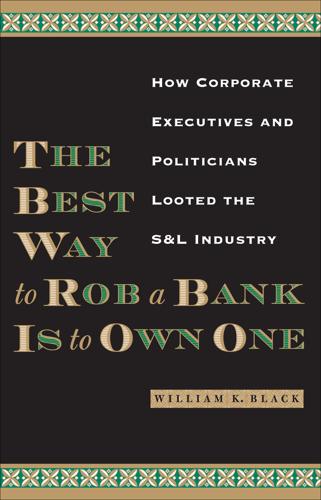
The Best Way to Rob a Bank Is to Own One: How Corporate Executives and Politicians Looted the S&L Industry
by
William K. Black
Published 31 Mar 2005
So, in an indirect way, [the ERC’s recommendations] address those illegal leaks of information and the harm to Lincoln. Much like Affirmative Action addresses discrimination, it’s not directly in response, and yet it seems to be a fair way to deal with what we have on the table. (423–424) This may be the single most muddleheaded analogy in regulatory history. It was not spontaneous: Stewart had been trying it out on others for months. The irony of Stewart calling for “Affirmative Action” for Keating, one of the most privileged human beings on the planet, was rich. She was probably not aware that he was a racist and sexist bigot of truly epic proportions and that he despised affirmative action (Binstein and Bowden 1993, 236, 248, 380).
…
The larger point, however, is that Stewart refused to bring any enforcement action against ACC and Lincoln Savings; indeed, she declined even to investigate, Stewart knew that any enforcement action would have the same effect as ordering a halt to the junk bond sales to the widows: it would expose the failure of ACC and Lincoln Savings as well as her leadership role in the Bank Board’s acquiescence in Keating’s demands. Stewart had championed affirmative action for Keating on the grounds that newspaper articles had (accurately) exposed his misdeeds. She now decided that the Bank Board should take no meaningful affirmative action on behalf of the widows or the taxpayers. Dochow, shorn of any enforcement support, issued an unenforceable “directive” to Lincoln Savings to stop a significant number of acts, but he had issued no directive to ACC to stop the bond sales in 1988.
…
They represent the only time in history that a financial regulatory agency consented to what was, in substance, a cease-and-desist order against the agency and permitted an institution that it had found to be in massive violation of its rules to increase those violations. The Bank Board got no meaningful restrictions on Lincoln Savings; instead it surrendered unconditionally and provided reparations (“affirmative action,” in Stewart’s parlance). There were three documents signed on May 20, 1988. The Bank Board eventually gave copies of two of them to the CDSL, which gave us copies. The third document was not disclosed outside a small group at headquarters (and Lincoln Savings). The Bank Board got two things in the agreement: ACC agreed to contribute $10 million to Lincoln Savings to increase its capital, and Lincoln Savings agreed to recognize a relatively small number of accounting adjustments that would have the effect of reducing its capital.
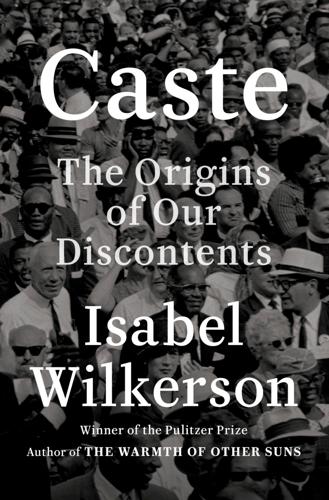
Caste: The Origins of Our Discontents
by
Isabel Wilkerson
Published 14 Sep 2020
“Whites were unified in seeing”: Myrdal, American Dilemma, vol. 2, p. 598. it is white women, and thus white families: Kimberlé W. Crenshaw, “Framing Affirmative Action,” 105 Michigan Law Review First Impressions 123 (2007), https://repository.law.umich.edu/mlr_fi/vol105/iss1/4/; Victoria M. Massie, “White Women Benefit Most from Affirmative Action—and Are Among Its Fiercest Opponents,” Vox, May 25, 2016, https://www.vox.com/2016/5/25/11682950/fisher-supreme-court-white-women-affirmative-action. “for structural economic problems”: Ashley Crossman, “Definition of Scapegoat, Scapegoating, and Scapegoat Theory,” ThoughtCo., August 2, 2019, https://www.thoughtco.com/scapegoat-definition-3026572.
…
Both have been “particularly singled out from other groups” based on characteristics ascribed to them. While doors have opened to the subordinated castes in India and in America in the decades since discrimination was officially prohibited, the same spasms of resistance have afflicted both countries. What is called “affirmative action” in the United States is called “reservations” in India, and they are equally unpopular with the upper castes in both countries, language tracking in lockstep, with complaints of reverse discrimination in one and reverse casteism in the other. There are many overarching similarities but they are not the same in how they are structured or operate.
…
In the United States and in India, people in the dominant caste have blamed stagnant careers or rejections in college admissions on marginalized people in the lower caste, even though African-Americans in the United States and Dalits in India are rarely in positions to decide who will get hired at corporations or admitted to universities. In the United States, it is a numerical impossibility for African-Americans to wreak such havoc in employment and higher education: there are simply not enough African-Americans to take the positions that every member of the dominant caste dreams of holding. Notably, while affirmative action grew out of the civil rights movement fought by lowest-caste people and their white allies, decades of analysis show that it is white women, and thus white families, rather than African-Americans, who became the prime beneficiaries of a plan intended to redress centuries of injustice against the lowest-caste people.
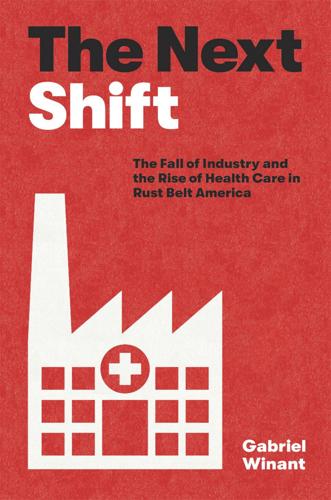
The Next Shift: The Fall of Industry and the Rise of Health Care in Rust Belt America
by
Gabriel Winant
Published 23 Mar 2021
Black men worked in the mills already but were trapped in undesirable and vulnerable departments because workplace seniority operated at the departmental level rather than plant-wide. In this context, the NAACP and groups of organized Black steelworkers intensified their campaign against discrimination by both management and the union. This action, which helped lead to a 1974 federal consent decree mandating affirmative action hiring and integration of seniority lines at the plant-wide level, is generally seen as a workplace spillover of the struggle for civil rights or even a program initiated from above by liberal bureaucrats. Certainly it required the new movement context and state capacity of the 1960s. But the movement for equal employment in steel was also a form of grassroots action, which is better understood in the context of the rapid downturn in the economic fortunes of Black steelworkers over the course of the 1960s.66 It was only in the second half of the decade—amid the steep decline in Black steel employment—that movement activity picked up, in the form of the national organization by Black workers of the Ad Hoc Committee, which enjoyed significant participation and leadership in Pittsburgh-area mills.
…
Because of weak demand, the blast furnace was shut down, which meant that most African Americans had been furloughed. The confinement of Black workers to seniority lines in the hottest, dirtiest departments led to a set of lawsuits aggregated and settled in a 1974 consent decree. Under this settlement, steel mills and the union began affirmative action hiring of women and African Americans and to shift to a plant-wide rather than departmental seniority system. In theory, this gave Black workers the chance to rise out of the coke ovens, blast furnaces, and open hearths.9 In retrospect, the consent decree appears more as a diagnosis of the industry’s discriminatory practices than a prescription to correct them.
…
In the longer view, the confrontation eventually played a key role in the conception of the nationwide Justice for Janitors campaign, a rare labor success story of the 1990s.83 As a general rule, the struggles of the postindustrial working class originated in such defensive episodes, as the labor market surplus brought about by the collapse of manufacturing worsened competition for work, drove down wages, and emboldened employers. This was the economic minefield individual workers had to cross. Mary Washington graduated from Steel Valley High in 1976. Soon thereafter she got a job at US Steel hooking structural steel beams to cranes—thanks, no doubt, to the 1974 affirmative action consent decree. But she lost the job in 1982. After a few years without work, she got hired as a nurse’s aide—near minimum-wage work. From her work history, it is clear that she had no formal experience in the field, but the racial and gender structures of the labor market knew where to put her.84 Sharon Browning, a white woman, was the daughter of a steelworker, and she had not anticipated a wage-earning life.
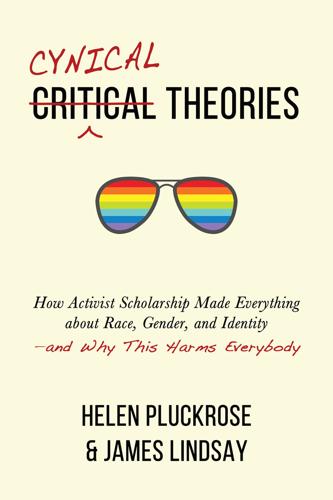
Cynical Theories: How Activist Scholarship Made Everything About Race, Gender, and Identity―and Why This Harms Everybody
by
Helen Pluckrose
and
James A. Lindsay
Published 14 Jul 2020
As Delgado and Stefancic observe, Although CRT [critical race Theory] began as a movement in the law, it has rapidly spread beyond that discipline. Today, many scholars in the field of education consider themselves critical race theorists who use CRT’s ideas to understand issues of school discipline and hierarchy, tracking, affirmative action, high-stakes testing, controversies over curriculum and history, bilingual and multicultural education, and alternative and charter schools.26 They list critical race Theory’s strongest footholds, indicating how effectively it can embed itself in other disciplines: Political scientists ponder voting strategies coined by critical race theorists, while women’s studies professors teach about intersectionality—the predicament of women of color and others who sit at the intersection of two or more categories.
…
Delgado and Stefancic regard this as positive: As this book went to press, students on several dozen campuses were demonstrating for “safe spaces” and protection from racially hostile climates with daily insults, epithets, slurs, and displays of Confederate symbols and flags. These “campus climate” issues are prompting serious reconsideration among university administrators, and for good reason. With affirmative action under sharp attack, universities need to assure that their campuses are as welcoming as possible. At the same time, a new generation of millennials seems to be demonstrating a renewed willingness to confront illegitimate authority.29 Critical race Theory has become very much a part of campus culture in many universities and, interestingly, is most evident at the most elite institutions.
…
Theory insists that only by understanding the various groups and the social constructions around those groups can one truly understand society, people, and their experiences. This conceptual shift facilitates group identity and thus identity politics, which are often radical. Because of intersectionality’s sheer versatility as a tool, it appeals to those involved in many different forms of engagement, ranging from legal activism and academic analysis to affirmative action and educational theory.52 Mainstream activism has also eagerly embraced intersectionality—especially its concept of privilege, an idea that is vigorously insisted upon, often to the point of bullying and browbeating. THE MEME OF SOCIAL JUSTICE The expansion of intersectionality’s sphere of influence has been considerable and perhaps unavoidable.
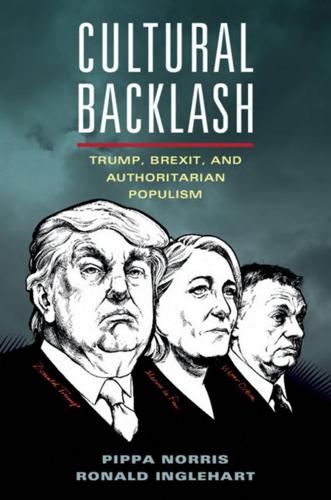
Cultural Backlash: Trump, Brexit, and Authoritarian Populism
by
Pippa Norris
and
Ronald Inglehart
Published 31 Dec 2018
A second item also codes favorable references to ‘under-privileged minorities’ – specified as ‘handicapped, homosexuals, immigrants, and indigenous populations.’ But there is no explicit reference to coding the range of contemporary policy issues revolving around the politics of sexuality and gender, including sex equality, affirmative action, and equal opportunities policies, women’s rights, equal pay laws, feminism, maternity or paternity Part III From Values to Votes 229 leave, maternity health and childcare, gender and sexual identities, gay and transsexual rights, affirmative action in the workplace and public sphere, rights to same sex marriage and civil unions, gender quotas in elected bodies, sexual harassment, domestic violence, women serving in the military, and so on.
…
In foreign affairs, this viewpoint favors the protection of national sovereignty, secure borders, a strong military, and trade protectionism (‘America First’), rather than membership of the European Union, diplomatic alliances, human rights, international engagement, and multilateral cooperation within the G7, NATO, and United Nations. Moreover, Authoritarian Populism favors policies where the state actively intervenes to restrict non-traditional lifestyles, typically by limiting same sex marriage, LGBTQ rights and gender equality, access to contraception and abortion, and affirmative action or quotas – unless, in some cases, these types of liberal policies are framed as a defense of national cultures against attacks by ‘others.’ Finally, in the public sphere, since liberal democracy has been delegitimized, authoritarian populists favor strong governance preserving order and security against perceived threat (‘They are sending rapists’ ‘radical Islamic terrorists’), even at the expense of democratic norms protecting judicial independence, freedom of the media, human rights and civil liberties, the oversight role of representative assemblies, and standards of electoral integrity.
…
Such self-censorship seems to underlie resentment against ‘political correctness.’ If this argument is correct, a snowball or band-wagon effect should be observable in the public square as socially liberal values are seen to gain acceptance in society, such as support for non-traditional families, gay marriage, affirmative action for women and minorities, legalizing recreational drugs, animal rights movements, environmental protection, and transgender rights. This reaction depends on whether people are aware of changing social norms – which may not happen – for example where distinctive sub- cultures persist within isolated communities, or if the cues about what is socially acceptable come from media bubbles or dominant opinion leaders, or during periods of rapid transition and intense polarized debate where it may be unclear what social norms should guide acceptable ideas and behavior.44 Moreover, conservatives who perceive that orthodox moral beliefs are slipping to marginal status within their societies are likely to feel threatened by the loss of respect for their values.
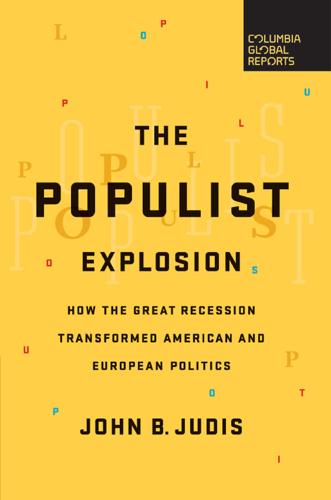
The Populist Explosion: How the Great Recession Transformed American and European Politics
by
John B. Judis
Published 11 Sep 2016
In other words, Wallace’s base was among voters who saw themselves as “middle class”—the American equivalent of “the people”—and who saw themselves locked in conflict with those below and above. Like Wallace, they remained New Deal liberals in many of their views, but not on matters that bore on race or law and order. In these cases, they adamantly rejected the welfare and busing and affirmative action policies that 1972 Democratic presidential candidate George McGovern and many liberal Democrats favored. They had begun the political journey from Democrat to Independent to Republican that would finally conclude in the 1994 congressional elections. Wallace, like Long, was a movement unto himself.
…
He would end his career much as he began—as a New Deal Democrat. But Wallace and his followers had already had a profound influence on the two-party system. Wallace’s campaigns were the opening wedge in the realignment of the parties in the South. The Republicans would subsequently accommodate Wallace’s positions on big government, welfare, busing, and affirmative action. And Nixon had already begun to do that. As Kevin Phillips understood in his prescient 1969 book, The Emerging Republican Majority, Wallace’s votes would migrate to the Republican Party. In 1972, Nixon’s percentage vote against McGovern closely resembled the total of Nixon and Wallace’s votes in 1968 in 45 of 50 states.
…
Operatives crafted a majority coalition that was composed of the traditional Republican business class, small businesses and farmers, and white working-class voters who had began fleeing the Democratic Party because of its support for civil rights, feminism, and the secular counterculture. There was an implicit arrangement by which the major business lobbies would acquiesce in Republican opposition to abortion, gun control, or affirmative action in exchange for working-class support for reductions in regulations and taxes. The one area in which Republican business and the new white working-class Republicans could wholeheartedly agree was cutting social spending. Businesses generally favored any spending cuts that would lower pressure to raise taxes on them and their stockholders.
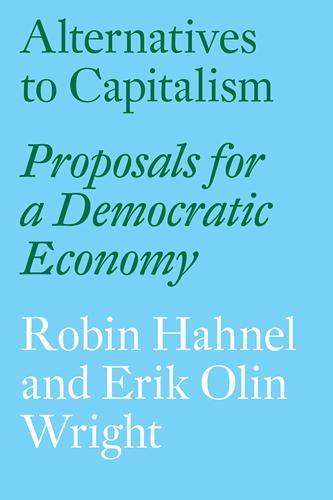
Alternatives to Capitalism
by
Robin Hahnel
and
Erik Olin Wright
Real utopias, in contrast, envision the contours of an alternative social world that embodies emancipatory ideals and then look for social innovations we can create in the world as it is that move us towards that destination. Now sometimes this turns out to be the same as an ameliorative reform, but often ameliorative reforms do not constitute building blocks of an emancipatory alternative. Consider, for example, affirmative action policies around race. Affirmative action is one of the critical policies for combating the pernicious effects of ongoing racism, not merely the legacies of racism in the past. But affirmative action is not itself a building block of a world of racial justice and emancipation. It is a necessary means to neutralize severe harms of racism in the world as it exists, but it is not itself a constitutive element of the alternative that we seek.
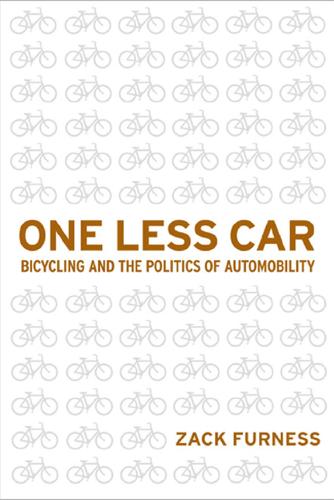
One Less Car: Bicycling and the Politics of Automobility
by
Zack Furness
and
Zachary Mooradian Furness
Published 28 Mar 2010
Surely there are some black Basque lesbian quadriplegic pro-life vehicular cyclists you can have on the committee.”129 perhaps the most disingenuous aspect of vehicular cyclists mocking the issues of diversity and affirmative action is the total lack of reservation shown in formulating advocacy strategies that appropriate such terms to manipulate public opinion. a brief dialogue about advocacy strategies illustrates this point: Might it be possible to rally an adequate number of pedestrian advocates and bicyclist advocates behind the non-prejudicial “universal access” cause, and away from the anti-car affirmative-action campaigns that ensure prolonged friction between user groups, in order to speed the adoption of constructive public policy?
…
Shouldn’t the audience that could be infected by such a meme be larger than the population that simply hates cars and the people who drive them? —Steven Goodridge your Universal access paradigm is excellent. The only problems are overcoming current inertia and getting its message out to a critical mass. Exponential numbers of people must be infected by the meme. affirmative action for bicyclists has a huge following. affirmative action in civil rights does too. it may be a better strategy to couch it as segregationist vs. integrationist. it’s harsher, which i think is necessary to convert/enlighten bike lane and path devotees. —Wayne pein130 resorting to such convoluted measures to convert people away from simply having their own opinion, or preference, for travel shows how little credence most vC advocates actually give to those who either lack their cycling instructor credentials or deviate from a hard-line stance that effectively shields automobility from any and all forms of criticism.
…
On the basis of self-interest, the roadway users—cyclists and motorists—should be in one corner and the anti-traffic forces—political bicyclists, residentialists, and environmentalists—in the other. . . . assume, until you know otherwise, that those who have initiated contact with you are political bicyclists, and that real cyclists have seen no useful reason to contact government.124 instead of praising cyclists for taking an active role in the political process or working toward a more egalitarian vision of mobility, Forester and his supporters frame government-funded bicycle facilities as restrictive, choosing to champion equality as a reaganite ethos of every man for himself: “Same roads—Same rights—Same rules.”125 Equality, in this sense of sameness, is conceived not as the rectification of a national problem whereby one form of mobility (auto transportation) dominates public thoroughfares, receives a grossly disproportionate amount of government subsidies, and poses undue physical threats to pedestrians, cyclists, the elderly, children, and people of color. rather, it functions as an ideological and political rationale for voluntary cyclists (those who ride out of choice as opposed to low income) to legitimize their participation in an already unequal matrix of public spaces.126 The idea that the street is somehow a space of equality, or neutrality, that one accesses by simply disciplining and ultimately demonstrating one’s cycling skill is a premise that holds true only if one decontextualizes, if not totally ignores, all the relevant socioeconomic, physical, material, and cultural factors that influence—and in most cases dictate—everyday transportation choices. it virtually mirrors the claims of cyclists in the nineteenth century who, by virtue of their socioeconomic and/or racial status, could easily ignore the cultural restraints on public mobility because they were never subject to them in the first place. not coincidentally, it is a group of mainly white, middle- to upper-class men who now reproduce this same ideology with recourse to similar vulgar psychological explanations. The main difference now is the brazen manner in which vC proponents use racially loaded terms like segregationists (bikeway advocates) and ghettoization (being forced into bike lanes) while they promote a paradigm that explicitly, and openly, condemns what they see as “affirmative action” policies.127 One can peruse the archives of the Chain Guard, an online discussion list for vC advocates, to see just how pointedly the issue of bicycle transportation is framed in such terms. One person writes: i despair of responding at length to all the unending preferences for prioritizing the “special needs” of all the presumed incapable bike riders while we continue to ignore the development of informed, intelligent, safe, enjoyable, efficient transportation by driving a bicycle on normal roads with normal training and education easily achieved by almost all of us, while we promote equal rights.128 The lip service given to equal rights is nicely highlighted in later discussion about the formation of Bicycle advisory Committees, which are groups that recommend localized policies for cycling.
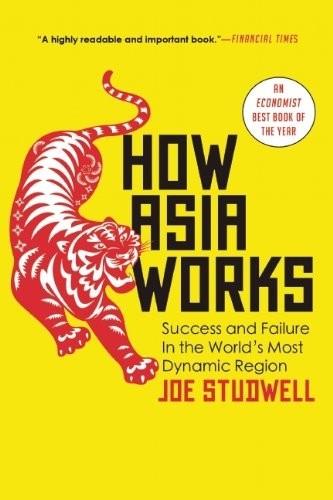
How Asia Works
by
Joe Studwell
Published 1 Jul 2013
A third complication was that Mahathir mixed up industrial policy with affirmative action. He came to power promising to raise up the indigenous bumiputera150 population. In so doing, he painted himself into a racial corner where he decided he could not use Malaysia’s mostly ethnic Chinese and Tamil established entrepreneurs to run his new heavy industrial investments. Instead, he tried to implement effective industrial policy and create a new generation of Malay entrepreneurs at the same time. This was always going to be difficult. In the absence of export discipline and private sector competition, it was impossible. Affirmative action led to the cruellest irony of Mahathir’s industrialisation programme.
…
His best-known book, The Malay Dilemma, is a rambling discourse on the plight of the Malays that contrasts powerfully with Park Chung Hee’s two books of the early 1960s, which contained much more practical analysis of what Korea needed to do to in order to ascend the industrial learning curve.135 Mahathir had had his political reckoning with the Tunku after the anti-Chinese riots in Kuala Lumpur in May 1969 left around 200 people dead.136 He wrote an open letter to the prime minister blaming his witless premiership for the killings and suggesting he was likely playing poker – the Tunku, like many members of the Malaysian upper class, was fond of gambling – while KL burned. As a result Mahathir was expelled from UMNO. The Tunku, however, had become a political liability and was eased out of power by other senior politicians. In 1971, Malaysia introduced an affirmative action plan called the New Economic Policy to ease racial tensions. With the Tunku gone, Mahathir was readmitted to UMNO after only three years, and a year after that he became Minister of Education. When the second prime minister, Razak, and his deputy both died prematurely of natural causes, Hussein Onn took over and in 1976 turned, quite unexpectedly, to Mahathir to be his deputy.
…
The choice of the east coast was also commercially dubious because most steel in Malaysia is consumed on the much more populous and industrialised west coast. It would have made more business sense to pipe the gas fuel supply from the nearby offshore fields to the west side of the peninsula and to make steel where it is needed. None the less, Mahathir’s determination to marry affirmative action – by building the plant in what is called ‘the Malay heartland’ – with industrial policy was not of itself enough to wreck this project. Instead, he made a series of compounding errors. The most egregious of these were to have no export requirement and to fail to critique the project recommended by Perwaja’s Japanese partner, a consortium led by Nippon Steel (the same partner the Koreans had).
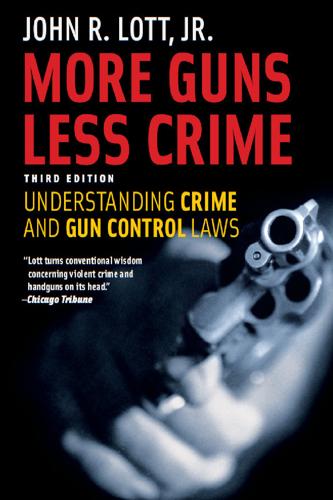
More Guns, Less Crime: Understanding Crime and Gun-Control Laws
by
John R. Lott
Published 15 May 2010
The Texas Gun Owner’s Guide. Phoenix: Bloomfield Press, 1998. Leamer, Edward E. “Let’s Take the Con Out of Econometrics.” American Economic Review 73 (Mar. 1983): 31–43. Lott, John R., Jr. “Does a Helping Hand Put Others at Risk? Affirmative Action, Police Departments, and Crime.” Economic Inquiry, vol. 38 (April 2000), forthcoming. ———. “Who Is Really Hurt by Affirmative Action?” Subject to Debate, May 1998, pp. 1, 3. Lott, John R., Jr., and John E. Whitley. “Safe Storage Gun Laws: Accidental Deaths, Suicides, and Crime.” Yale Law School working paper, October 1, 1999. Ludwig, Jens. “Concealed-Gun-Carrying Law and Violent Crime: Evidence from State Panel Data.”
…
Handgun Control and the Violence Policy Center spread claims such as “Lott has argued that the hiring of more 204 | CHAPTER NINE women and minorities in law enforcement has actually increased crime rates.”48 They have made this claim on their Web sites, in debates, and on radio programs.49 In fact, I had stated that this would be the wrong conclusion to reach. The paper argued: “But it would be a serious mistake not to realize that this simple relationship is masking that the new rules reduce the quality of new hires from other groups.”50 The affirmative action rules which changed the testing standards lowered the quality of new police hires across the board, and that was showing itself in the simple relationship between minority hires and crime.51 On the upside, many have come to my defense. One academic review of my book noted, “The personal (and, to those who know him, completely unfounded) attacks on John Lott’s integrity were made with such ferocity and in so many media outlets nationwide that one can only conclude that Lott was, with apologies to our gracious First Lady [Hillary Clinton], the target of a vast left-wing conspiracy to discredit his politically incorrect findings.”52 Another academic review wrote: “the ease with which guncontrol advocates could get misleading and even false claims published by the press raises important public choice questions.
…
Other work that I have done indicates that while hiring certain types of police officers can be quite effective in reducing crime rates, the net benefit from hiring an additional police officer is about a quarter of the benefit from spending an equivalent amount on concealed handguns. See John R. Lott, Jr., “Does a Helping Hand Put Others At Risk? Affirmative Action, Police Departments, and Crime,” University of Chicago working paper (July 1997). 4. The cost of public prisons runs about twice this rate; see Mike Flaherty, “Prisons for Profit; Can Texas System Work for Wisconsin’s Overflowing System,” Wisconsin State Journal, Feb. 16, 1997, p. Al. 5. Fox Butterfield, “Serious Crime Decreased for Fifth Year in a Row,” New York Times, Jan. 5, 1997, p. 10. 396 | N OT E S TO PA G E S 1 6 6 – 1 6 9 6.
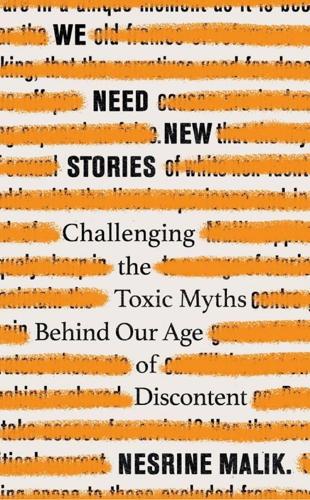
We Need New Stories: Challenging the Toxic Myths Behind Our Age of Discontent
by
Nesrine Malik
Published 4 Sep 2019
The time that I have spent writing these words is, ironically, a triumph of Frequency Scrambling, in that this chapter is dedicated to rebutting false allegations of political correctness, but the myth is so deeply ingrained that first it must be dispelled, before the facts can be argued. Every time an issue is presented as one of PC, the air is sucked out of it and it cannot catch fire. If minorities demand some form of affirmative action, we end up discussing the non-minorities who might be victimised as a result, as opposed to why affirmative action is needed in the first place. If women demand that there be a new way of speaking to and about them in the workplace, we end up discussing the men who will be bewildered and prone to victimisation, rather than why women have made the demand in the first place.
…
Its stated mission is to ‘formulate and promote conservative public policies based on the principles of free enterprise, limited government, individual freedom, traditional American values, and a strong national defense’. It is particularly obsessed with political correctness and has been since its inception. In 1991, the foundation published a report entitled ‘Political Correctness and the Suicide of the Intellect’ which criticises affirmative action because ‘two wrongs don’t make a right’. ‘We mustn’t let things get by that we know are wrong,’ it concludes, ‘we must start to raise a little hell.’ Searching the foundation’s site for articles containing the phrase ‘political correctness’ throws up 13,839 results. That’s an average of 512 posts a year, or 1.4 a day.
…
Dinesh D’Souza, one of the most successful far-right conservative commentators in the US, was positively incubated by them. He started his career as editor of the Dartmouth Review in the early 1980s. At the time, the paper harassed an African-American faculty member and published a criticism of affirmative action that was so racist in tone that it pierced the niche academic discourse to capture nationwide attention. The Review was receiving thousands of dollars from the rightist Olin Foundation, which also sponsored D’Souza during a stint at the American Enterprise Institute, the end result of which was a book about illiberalism.
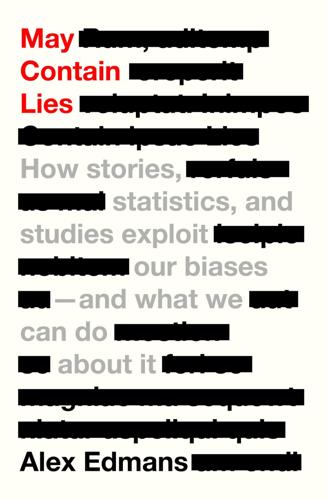
May Contain Lies: How Stories, Statistics, and Studies Exploit Our Biases—And What We Can Do About It
by
Alex Edmans
Published 13 May 2024
Knowledge doesn’t make you more aware of the need to consider both sides; instead, you engage even more in biased search. The second part of the experiment turned to biased interpretation. The subjects were now given four views on affirmative action, two on each side, and asked to comment on how convincing they were.§ For arguments that supported their own stance on affirmative action, less informed students gave an average of two favourable and one unfavourable remark (2–1); for opposing arguments it was 1–2. The differences were much starker for more informed students: they gave 3–0 for views they liked but 0–6 for those they disliked.
…
‡ As a result, the evidence we cite in this book will predominantly be from papers published in the top peer-reviewed journals, a point we’ll highlight in Chapter 9. § For half the undergraduates, the first part of the experiment (selecting arguments) was on gun control and the second (evaluating arguments) on affirmative action, as we’ve described. For the other half, the first part was on affirmative action and the second on gun control. 1 Belle was actually seventeen in 2009 but claimed to be twenty. 2 Gibson, Belle (2014): The Whole Pantry: Over 80 Original Gluten, Refined Sugar and Dairy-free Recipes to Nourish Your Body and Mind. Penguin, Retrieved from https://books.google.co.uk/books?
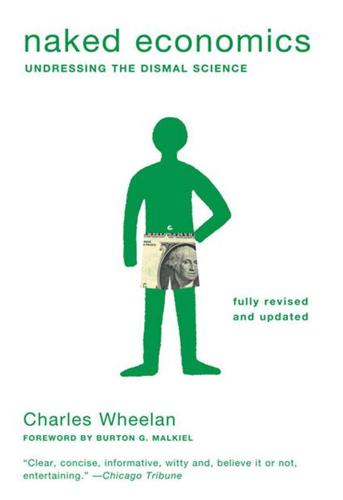
Naked Economics: Undressing the Dismal Science (Fully Revised and Updated)
by
Charles Wheelan
Published 18 Apr 2010
Consider a thought exercise proposed by Glenn Loury, a theoretical economist at Boston University: Suppose that ten job applicants are vying for a single position. Nine of the job candidates are white and one is black. The hiring company has an affirmative action policy stipulating that when minority and nonminority candidates are of equal merit, the minority candidate will be hired. Further suppose that there are two top candidates; one is white, the other is black. True to policy, the firm hires the black candidate. Loury (who is black) makes this subtle but simple point: Only one of the white candidates has suffered from affirmative action; the other eight wouldn’t have gotten the job anyway. Yet all nine white candidates go away angry, feeling that they have been discriminated against.
…
Yet all nine white candidates go away angry, feeling that they have been discriminated against. Loury is not necessarily a foe of affirmative action. He merely adds nuance to a discussion that usually has none. Affirmative action can harm the very race relations that it seeks to heal. Or consider the periodic campaign to mandate that insurance companies cover the cost of two nights in the hospital for women who have delivered babies, rather than just one. President Bill Clinton found this issue sufficiently important that he vowed in his 1998 State of the Union address to end “drive-by deliveries.” But there is a cost to such a plan that should be made explicit.
…
And, of course, a lot of bright students avoid the course in the first place. This is a shame on two levels. First, many intellectually curious people are missing a subject that is provocative, powerful, and highly relevant to almost every aspect of our lives. Economics offers insight into policy problems ranging from organ donation to affirmative action. The discipline is intuitive at times and delightfully counterintuitive at others. It is peppered with great thinkers. Some, such as Adam Smith and Milton Friedman, have captured mainstream attention. But others, such as Gary Becker and George Akerlof, have not gotten the recognition outside of academe that they deserve.
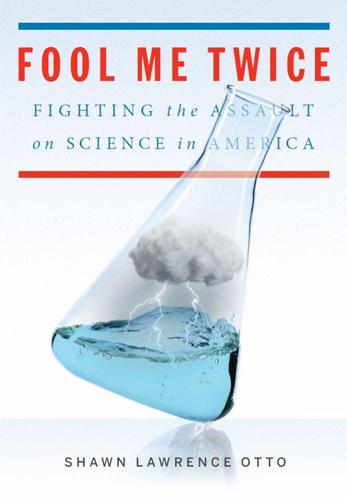
Fool Me Twice: Fighting the Assault on Science in America
by
Shawn Lawrence Otto
Published 10 Oct 2011
In politics, this thinking became entwined with the goals of the civil rights movement: examination of power structures, discovery of voices not valued by history, cultural tolerance, acceptance of diverse viewpoints, affirmative action, mindfulness of the biases of the speaker, a pullback from Western exceptionalism and white supremacy, and the celebration of the self-evident truth that lies at the foundation of the nation—that all people are created equal. If science was the voice of the Western white male culture, then it was not the voice of other, discounted cultures. Academics, writers, politicians, and teachers, in a sort of intellectual affirmative action, took the idea to its logical conclusion: from all people being created equal to the notion that all cultures are created equal and from that to the idea that all ideas are created equal.
…
In the American humanities, and subsequently in American politics and education, this came to mean that all systems of thought had equal merit and only had to be internally consistent. They were all just different “languages” or “constructs” for assembling our experience of reality. Thus, postmodernists thought of themselves as tolerant and nonjudgmental. In America, this thinking merged with new political ideas about affirmative action and became widespread. Postmodernism provided a secular, progressive, inclusive interpretation of reality for those who felt that there were many worthy groups like African Americans, women, Native Americans, gays, lesbians, bisexuals, transgendered persons, and others who had been disenfranchised by the Western white male dominant culture, of which science was a powerful part.
…
Scientists (“the Man”) resist new (baby boomer) ideas, clinging to old (Western white male), outdated theories even as the evidence they are being willfully blind to accumulates (discrimination) like energy in an electron until it finally becomes overwhelming (the civil rights movement). Then, suddenly, in a crystallizing moment (revelation), the ruling order is displaced (comeuppance) and the intellectual understanding of the old (bigoted) paradigm (attitude) shifts to a new, wider-orbiting (more tolerant and inclusive) paradigm that incorporates (affirmative action) previously discounted outliers (disempowered groups). Kuhn was striving to describe science not as we think it is, but as it really is, and so was likely strongly influenced by his times. He pointed to several past scientific revolutions as examples and argued that they had not been intellectual so much as sociological upheavals.
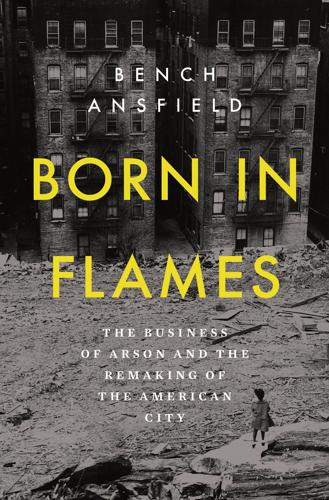
Born in Flames
by
Bench Ansfield
Published 15 Aug 2025
A grand bargain was struck: property insurers purportedly agreed to cease redlining “riot-affected areas” in exchange for federal reinsurance for the uprisings. As Governor Hughes articulated the compromise, “Only after the industry and states have initiated affirmative action to solve the first problem of making adequate insurance available, should the possibility of federal government financial backup be considered with respect to the second problem.” Hughes’s use of the term “affirmative action” was intentional—the concept had been popularized by JFK in a 1961 executive order establishing the forerunner to the Equal Employment Opportunity Commission. But the industry’s acquiescence to anti-redlining legislation was in fact an attempt to neutralize the redlining debate before public outcry might provoke more dramatic change.41 Thus the Hughes Panel became the means for warding off more stringent legislation, by setting the terms through which the industry would formally renounce its redlining practices.
…
The Urban Property Protection and Reinsurance Act, which one analyst deemed “the most significant insurance legislation adopted in this century,” was designed to end redlining by requiring insurers to assess each risk individually, without regard to location. FAIR plans were forbidden from considering conditions extrinsic to the property in question, such as “past area riots, general neighborhood decay, or the atmosphere of unrest.” Essentially, the FAIR plan was fashioned as an actuarial “affirmative action” for properties that had been relegated to the residual market and thus disqualified from accessing insurance at reasonable rates. What the FAIR plan did not do was eliminate the residual market itself; FAIR plans’ high-cost, low-coverage policies were most affordable to absentee landlords with sizable capital reserves.
…
Calls to introduce federal flood insurance had echoed around the halls of Congress since the days of the Truman administration, but the proposed legislation had proven too divisive. The NFIP passed in 1968 only due to the Hughes Panel’s legislative momentum. As Bernstein reflected, “The flood insurance program would never have been enacted without riot reinsurance.” Though the FAIR plan had been branded as an “affirmative action” to end redlining, the National Flood Insurance Program was in fact a much more generous government subsidy. As of 2022, the program’s debt was $20 billion and counting, a burden shouldered by taxpayers and produced by unsustainable, often luxury coastal development.58 The birth of the NFIP roughly coincided with the emerging scientific consensus that anthropogenic climate change poses an existential risk to low-lying coastlines and floodplains worldwide.
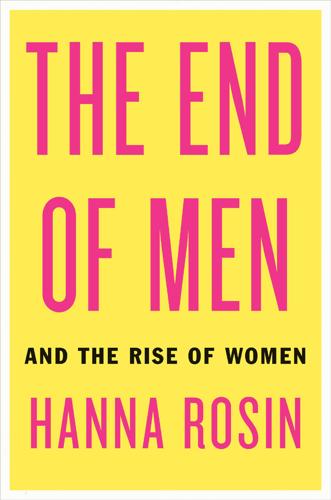
The End of Men: And the Rise of Women
by
Hanna Rosin
Published 31 Aug 2012
From the chart it looked as if a vastly greater percentage of female than male applicants was being turned away from these schools, meaning that it was much harder for the average woman to get in than it was for the average man. The implication was that bright female applicants might be turned away in favor of less qualified men. In other words, if Heriot was reading the chart correctly, American private colleges had quietly begun to practice affirmative action . . . for men. The quotes that follow in the accompanying story seemed to confirm Heriot’s suspicion. Men should be given some extra allowance because they “have perspectives to offer that a woman doesn’t have,” one student suggested. A college counselor advised that they should “emphasize their maleness.”
…
If they happened to have a gender-ambiguous name like Alex or Madison, they should not hesitate to send in a picture or brag about sports in order to “catch an admission officer’s eye.” Different perspectives to offer. A distinct admissions advantage. Send in a picture. These are the kinds of euphemisms admissions officers have historically offered up to minorities and women. How could it be that affirmative action, an institution set up to break white men’s exclusive hold on power, was now the crutch they needed to get by? And at the University of Richmond, no less? And how had it come to pass that women now found themselves in the same spot as the angry white males of the 1990s, frustrated at getting shut out despite their qualifications?
…
For private universities, sex discrimination in admissions is perfectly legal; unlike public universities they are not bound by Title IX. But Heriot thought this issue was serious enough that it might be covered by a more general statute against discrimination. And because she seems inclined against affirmative action anyway, she wanted to force the education establishment into a confession so that they could begin to figure out why men weren’t succeeding, rather than to continue just shuffling them among institutions. The commissioners picked nineteen colleges randomly with the aim of covering the basic categories—big, small, religiously affiliated, selective, less selective, and historically African-American.
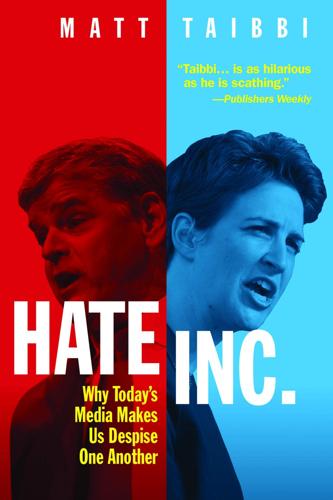
Hate Inc.: Why Today’s Media Makes Us Despise One Another
by
Matt Taibbi
Published 7 Oct 2019
The segment producer wants to ensure lively crosstalk, so the “pre-interview” is designed to make sure you’ll say exactly what the producer expects you to say. They usually don’t need to ask. If Chris Matthews has proudly liberal Joan Walsh on to talk affirmative action with Pat Buchanan, he knows he can sleepwalk through that player-piano setup: Walsh is automatically going to find a way to argue for affirmative action and denounce white privilege, and Buchanan is going to hit back by bleating about reverse racism. But stations still usually make sure there’s no off-the-reservation opinion on the horizon. If you’re brought on to play the Democrat, they make sure in advance you’ll stay in that lane.
…
Goldberg, whose path to journalism was similar to my father’s—he went to Rutgers in the sixties—regularly comments on the upper-crust schools his colleagues favor. So, for instance, onetime CBS executive vice president Jon Klein is “an Ivy Leaguer, he went to Brown.” It’s regularly part of his quips about political hypocrisy. “They love affirmative action schools, as long as their own kids get into Ivy League schools,” he snaps. The news business is absolutely different in a class sense than it once was, particularly at the national level. These days it’s almost exclusively the preserve of graduates from expensive colleges, when it was once a job for working-class types who started as paper-kids or printers.
…
Take this sentence, for instance, about the New York Times and its invidious failure to cover his first “liberal bias” editorial: The world’s most important newspaper, which would make room on page one for a story about the economy of Upper Volta or about the election of a lesbian dogcatcher in Azerbaijan or about affirmative action in Fiji, didn’t think a story about media bias, leveled by a network news correspondent, was worth even a few paragraphs. Actually, Bernard, we basically don’t cover Africa at all. Also, Upper Volta was renamed Burkina Faso about fifteen years before you wrote Bias. I’m not sure exactly where things stand today, but by 2007, the only American news network to have a bureau in Africa was ABC.
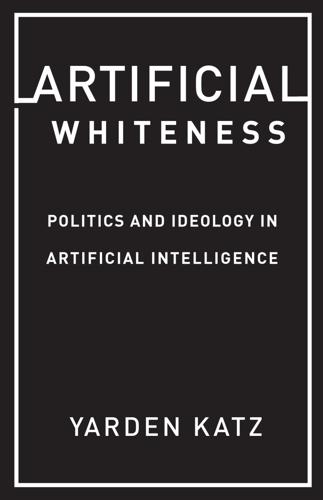
Artificial Whiteness
by
Yarden Katz
These include the expectation of certain futures and the right to one’s reputation as a white person: in court rulings from as late as the 1950s, calling a “white” person “black” was considered defamation; the reverse clearly not.30 By protecting these rights and expectations, American law has reinstated whites’ “property interest” in whiteness—an interest predicated on the right to exclude others.31 How American law deals with whiteness has changed in response to popular struggle, but as Harris notes, “property interest in whiteness has proven to be resilient and adaptive to new conditions.” Calls for affirmative action, for example, have challenged the notion that societies built on white supremacy can be made just by simply removing the most overt forms of discrimination. These efforts were contested in court by whites who saw affirmative action as “reverse discrimination.” As Harris has argued, by siding with white plaintiffs and rejecting affirmative action in key instances, the courts have effectively defended white privilege. For instance, in admission to graduate schools, courts have defended the expectation of whites to be privileged over nonwhites by identifying certain criteria of “merit,” such as standardized test scores, as neutral while ignoring alternatives.32 These moves cement the notion that the law must protect the expectation of whites, as a group, to dominate educational institutions.
…
For instance, in admission to graduate schools, courts have defended the expectation of whites to be privileged over nonwhites by identifying certain criteria of “merit,” such as standardized test scores, as neutral while ignoring alternatives.32 These moves cement the notion that the law must protect the expectation of whites, as a group, to dominate educational institutions. White supremacy can therefore be defended by adopting more abstract, ostensibly nonracialized, criteria of “merit.” Indeed, while the right to exclude persists in all of forms of white supremacy—from colonial America to affirmative action cases in the 1970s—the manifestations of this right and its justifications have changed. As many have recognized, then, whiteness as an ideology cannot be stably grounded in any specific racial account because whiteness is empty. “Whiteness, alone,” Toni Morrison wrote, “is mute, meaningless, unfathomable, pointless, frozen, veiled, curtained, dreaded, senseless, implacable.”33 Whiteness gets its significance, and its changing shape, only from the need to maintain relations of power.
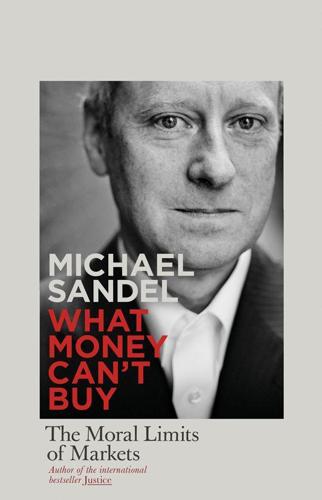
What Money Can't Buy: The Moral Limits of Markets
by
Michael Sandel
Published 26 Apr 2012
Under conditions such as these, universities could sell some places to wealthy donors without undermining the honor that people associate with admission to a top school. Critics of higher education claim that this scenario comes close to describing what actually goes on at many colleges and universities today. They describe “legacy preferences,” the admissions edge given to children of alumni, as a form of affirmative action for the affluent. And they point to cases in which universities have relaxed their admissions standards for less than outstanding applicants whose parents, though not alumni, are wealthy and likely to make a substantial contribution to the school.21 Defenders of these practices argue that private universities depend heavily on financial contributions from alumni and wealthy donors, and that such contributions enable universities to provide scholarships and financial aid to less affluent students.22 So, unlike the Nobel Prize, college admission is a good that can be bought and sold, provided the buying and selling take place discreetly.
…
Tom Murphy, “Patients Paying for Extra Time with Doctor: ‘Concierge’ Practices, Growing in Popularity, Raise Access Concerns,” Washington Post, January 24, 2010; Paul Sullivan, “Putting Your Doctor, or a Whole Team of Them, on Retainer,” New York Times, April 30, 2011. 7. The current price in euros can be found at www.pointcarbon.com. 8. Daniel Golden, “At Many Colleges, the Rich Kids Get Affirmative Action: Seeking Donors, Duke Courts ‘Development Admits,’” Wall Street Journal, February 20, 2003. 9. Andrew Adam Newman, “The Body as Billboard: Your Ad Here,” New York Times, February 18, 2009. 10. Carl Elliott, “Guinea-Pigging,” New Yorker, January 7, 2008. 11. Matthew Quirk, “Private Military Contractors: A Buyer’s Guide,” Atlantic, September 2004, p. 39, quoting P.
…
Sabra Chartrand, “How to Send an Unwanted Present on Its Merry Way, Online and Untouched,” New York Times, December 8, 2003; Wesley Morris, “Regifter’s Delight: New Software Promises to Solve a Holiday Dilemma,” Boston Globe, December 28, 2003. 21. See Daniel Golden, The Price of Admission (New York: Crown, 2006); Richard D. Kahlenberg, ed., Affirmative Action for the Rich (New York: Century Foundation Press, 2010). 22. See comments by Yale president Rick Levin, in Kathrin Lassila, “Why Yale Favors Its Own,” Yale Alumni Magazine, November/December 2004, www.yalealumnimagazine.com/issues/2004_11/q_a/html; and comments by Prince ton president Shirley Tilghman, in John Hechinger, “The Tiger Roars: Under Tilghman, Prince ton Adds Students, Battles Suits, Takes on the Eating Clubs,” Wall Street Journal, July 17, 2006. 23.

#Republic: Divided Democracy in the Age of Social Media
by
Cass R. Sunstein
Published 7 Mar 2017
Liberals favored an international treaty to control global warming before discussion; they favored it more strongly after discussion. Conservatives were neutral on that treaty before discussion; they strongly opposed it after discussion. Mildly favorable toward affirmative action before discussion, liberals became strongly favorable toward it after discussion. Firmly negative about affirmative action before discussion, conservatives became even more negative about it afterward. Aside from increasing extremism, the experiment had an independent effect: it made both liberal and conservative groups significantly more homogeneous—and thus squelched diversity.
…
For an initial glimpse of the problem, let us put the Internet to one side and consider a small experiment in democracy that was held in Colorado in 2005.6 About sixty US citizens were brought together and assembled into ten groups, each consisting of six people. Members of each group were asked to deliberate on three of the most controversial issues of the day: Should states allow same-sex couples to enter into civil unions? Should employers engage in “affirmative action” by giving a preference to members of traditionally disadvantaged groups? Should the United States sign an international treaty to combat global warming? As the experiment was designed, the groups consisted of “liberal” and “conservative” members—the former from Boulder, the latter from Colorado Springs.
…
IDENTITY AND CULTURE A revealing body of research, coming largely from Yale Law School professor Dan Kahan, finds that “cultural cognition” shapes our reactions to science—and that our values affect our assessment of purely factual claims, even in highly technical areas.60 As a result, Americans predictably polarize on factual questions involving, for example, gun control, climate change, nuclear waste disposal, and nanotechnology. Kahan’s striking claim is that people’s judgments stem, in large part, from their sense of identity—of what kind of person they consider themselves to be. As a result, seemingly disparate views cluster. Among conservatives, for instance, gun control is a bad idea, and so is affirmative action; climate change is not a big problem; the Supreme Court should not have recognized same-sex marriage; and the minimum wage should not be increased. In principle, it might be possible to identify specific values that link these apparently diverse conclusions. But Kahan’s claim is that the real source of people’s views, at least on certain controversial questions, is their understanding of their identity, and their effort to protect it.

Brotopia: Breaking Up the Boys' Club of Silicon Valley
by
Emily Chang
Published 6 Feb 2018
Thiel himself told me: Peter Thiel, “Venture Capitalist Peter Thiel: Studio 1.0 (12/18) Bloomberg, Dec. 18, 2014, video, 27:34, https://www.bloomberg.com/news/videos/2014-12-19/venture-capitalist-peter-thiel-studio-10-1218. Stanford began by instituting: News release, Stanford News Service, April 22, 1991, https://web.stanford.edu/dept/news/pr/91/910422Arc1416.html. lawsuit against Harvard: Anemona Hartocollis and Stephanie Saul, “Affirmative Action Battle Has a New Focus: Asian-Americans,” New York Times, Aug. 2, 2017, https://www.nytimes.com/2017/08/02/us/affirmative-action-battle-has-a-new-focus-asian-americans.html?_r=0. The Stanford Review also targeted feminism: Lisa Koven and David Sacks, “Rape at Stanford,” Stanford Review, Jan. 21, 1992. The word “RAPE”: Ibid., 1. “If you’re male and heterosexual at Stanford”: Ibid., 4.
…
Whites and Asians should not lose academic posts to candidates from more underrepresented groups. Only measurable achievement and academic merit should matter. They also questioned the value of diversity and the idea that universities, companies, and governments function better when a broad range of people participate. “We were pretty critical of affirmative action. We forecast how it was going to play out, saying it’s going to really, really penalize Asians, and that’s exactly what happened,” Rabois told me, referencing a recent lawsuit against Harvard University that alleges Asian Americans are discriminated against in the admissions process. The Stanford Review also targeted feminism.
…
“We’re working hard to find them and would be ecstatic if more joined Sequoia or other firms.” Sequoia Capital followed up with a tweet from its official account: “We need to do better.” A few months later, Moritz managed to give new life to the controversy while taking questions from journalists at the San Francisco Exploratorium, saying, “We’re not going to run an affirmative action [program]. And I happen to think it’s an insult to a woman we hire, a black we hire, or a Hispanic we hire, to feel like they’re coming to work at Sequoia because of their gender or their race. The people who want to come to work for us want to be the very best.” He again mentioned the “spectacular” female analyst Sequoia had recently hired: “If she had five sisters we’d hire them all!”
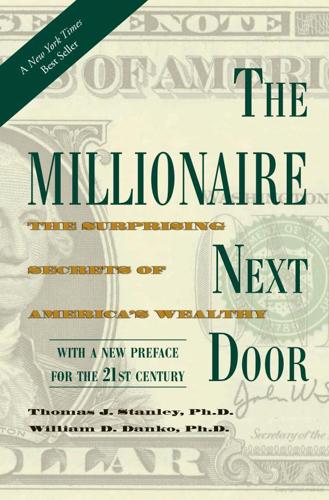
The Millionaire Next Door: The Surprising Secrets of America's Wealthy
by
Thomas Stanley
and
William Danko
Published 15 Nov 2010
They also contend that their sons-in-law “can never be fully trusted … to remain loyal … [to] support [and] protect” their daughters. Actually, the affluent are rather perceptive in this regard. Our data indicate that more than four in ten of their daughters who marry will be divorced at least once. AFFIRMATIVE ACTION FOR WOMEN Affluent parents understand that the income-generating opportunities facing men and women in this country are very different. These parents tend to have their own form of economic affirmative action. Consider the following facts: ♦ Women account for 46 percent of the workers in this country but represent fewer than 20 percent of the individuals who earn $100,000 or more annually. In 1980, fewer than 40,000 women had annualincomes of $100,000 or more.
…
Stanley For my loving wife, Connie, and my dear children, Christy, Todd, and David –W. D. Danko Contents Tables Preface Introduction 1: Meet the Millionaire Next Door 2: Frugal Frugal Frugal 3: Time, Energy, and Money 4: You Aren’t What You Drive 5: Economic Outpatient Care 6: Affirmative Action, Family Style 7: Find Your Niche 8: Jobs: Millionaires versus Heirs Acknowledgments Appendix 1 Appendix 2 Appendix 3 Tables 1-1: The Top Ten Ancestry Groups of American Millionaires 1-2: The Top Fifteen Economically Productive Small Population Ancestry Groups 2-1: Prices Paid by Millionaires for Clothing and Accessories 2-2: Credit Cards of Millionaire Household Members 2-3: Contrasts among American Taxpayers 3-1: Concerns, Fears, and Worries: Dr.
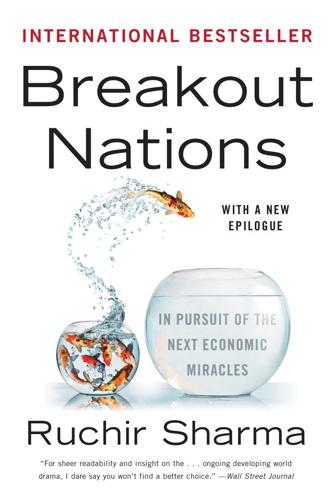
Breakout Nations: In Pursuit of the Next Economic Miracles
by
Ruchir Sharma
Published 8 Apr 2012
Malaysia’s problems go beyond race and old rivalries. Every nation in Southeast Asia has seen protests against the Chinese business class at some point in the postcolonial period, but only Malaysia keeps the fires burning as a matter of public policy. Even before Mahathir took power in 1981, Malaysia had created a program of affirmative action to give Bumiputeras greater ownership stakes in companies. Mahathir built that program into a sprawling system of racial quotas and subsidies for all walks of life, from schools to government posts. Even today the 60 percent Malay majority feels they do not have a fair share of the economic pie, but the 30 percent Chinese minority feels just as marginalized, trying to compete against favored Malay tycoons.
…
Officials greet visitors with a blizzard of acronyms, describing their many schemes to recapture growth, and as a whole they get the problems pretty much right. With manufacturing flagging, and corporations moving abroad, they understand the need to regain competitiveness, restart investment, raise the skill level of the workforce, even to make the ubiquitous affirmative action system more transparent and market friendly. These goals are all built into the NEM (new economic model), which was unveiled in March 2010 and aims to double Malaysia’s per capita income by 2020. The NEM includes both an ETP (economic transformation program) and a GTP (government transformation program), which have targeted dozens of NKEAs (national key economic areas) for reform, and launched no fewer than 131 EPPs (entry point projects) to fix those targets.
…
When it first came to power, the ANC created a modicum of upward mobility for some black South Africans, helping to ease discontent, at least for a time. Normally a rising middle class is the natural by-product of an expanding economic pie, but in South Africa the growth was mainly the product of an affirmative-action program launched in the most fortuitous possible circumstances. The Black Economic Empowerment (BEE) set specific targets for all but the smallest companies to increase the role of black owners, managers, and workers, and tried to create a new class of black-owned companies as well. The program came into effect in 2003, the same year that the flood of easy money pouring out of the United States triggered a boom across all the emerging markets.

The Ultimate Engineer: The Remarkable Life of NASA's Visionary Leader George M. Low
by
Richard Jurek
Published 2 Dec 2019
Included among them were the needs to provide an up-to-date computing system that would put RPI in the lead among schools in the nation; to hire in key open positions, such as a vice president for administration and budget and a vice president of student affairs; to revamp the engineering curriculum; and to successfully complete the new campus facilities, as well as a very real need to support affirmative action. “We have been giving lip service in this area, with no real action,” he noted. “It is an area where I am going to start to get tough.” He underscored the need for more minorities and women on the faculty and staff, as well as a need for more minority and women students. “Not one of you is doing your job as faculty, staff, or administrators, if you are not doing your best in affirmative action,” he warned. “I will consider your performance in this regard as much as I will consider your performance in other areas.”42 Low’s philosophy for the future of RPI was inspired and informed by the work of Frederick Terman at Stanford.43 A trained chemist and engineer who did his undergraduate work at Stanford and his graduate work in engineering at MIT, Terman is widely credited with being the father of Silicon Valley.
…
Acknowledging that there is no better form of government than the one in the United States, he warned—based on his experience of trying to save NASA in a post-Apollo world—that “the elected leadership can no longer establish a strong sense of direction, nor can it impose the discipline to follow the course promised by its political party. . . . The result is disorder and confusion, wherein the special interest wins at the expense of the general interest.” He did not, however, want to be misunderstood: I strongly support the need to make continued progress toward our societal goals. I will fight for affirmative action, for protection of health and safety on the job, for clean air and water, for human rights and human liberties. But I also know that to achieve these goals, we need the underpinning of a stable economy. Without regaining that, as a first priority, our progress in all other areas will not only come to a halt—we will lose ground.
…
New York: Four Walls Eight Windows, 1998. Index Page numbers refer to the print edition. Abbey, George W. S., 37, 104–5, 107, 120–21, 200, 226–27 Advanced Applications Program (AAP), 84, 85, 86, 147 Advanced Research Project Agency (ARPA), 29, 30 aeronautical engineering and research, 11, 12, 15–17, 31, 235 affirmative action, 213, 219 Allen, Joe, 206 all-up testing, 84 Always Another Dawn (Crossfield), 16 American Institute of Aeronautics and Astronautics, 157, 189, 236 Anders, Bill, 139, 158–60, 192, 201, 231, 233 Anderson, Clinton P., 185, 187 Angern Castle, 4, 5, 6 animal-testing approach, 51, 55, 56 Apollo 1 fire: about, xi, 1, 17; and astronauts, 92, 99; causes of, 93; and insulation problem, 114; and spacecraft testing, 91; and space program, 93 Apollo 4, 120, 125 Apollo 6, 125, 135 Apollo 7, 124–28, 130–31, 133–35, 147 Apollo 8: about, 1, 12; as astounding flight of firsts, 133; and Bob Gilruth, 130, 132; decision related to, 127–31; launch of, 138; into lunar missions, 125–27; meeting about, 134–35; planning state of, 131; reading from Genesis on, 144; success of, 138–39; and toggle switch issue, 1, 136, 137, 138, 216 Apollo 9, 112, 120, 126 Apollo 11, 84, 112, 141–43, 145–47, 183, 227 Apollo 13, 123, 179–81, 186 Apollo 14, 154, 170, 173, 181, 183 Apollo 15, 181–83, 185–86, 188 Apollo 17, 121, 154, 170, 186, 225, 226 Apollo missions, 120, 133, 147, 151–52, 154, 181 Apollo-Soyuz Test Project (ASTP), 49, 186, 191, 193, 196–97, 236 Apollo spacecraft: about, 1; anecdote about, 140; CCB meetings for, 117–18; design philosophy of, 117–18; and hatch issue, 99–100; industry studies of, 55; and parachute system, 117; rework of, 123; software for, 115–17; testing of, 118.
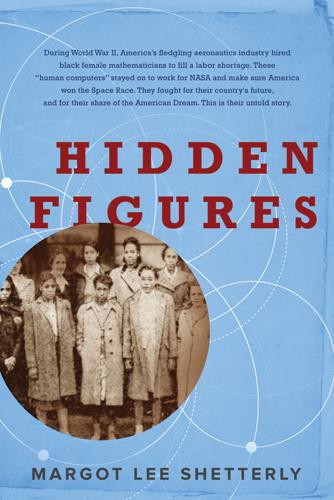
Hidden Figures
by
Margot Lee Shetterly
Published 11 Aug 2016
President Dwight Eisenhower, in his farewell speech in January 1961, railed against the United States’ growing military-industrial complex. On March 6, 1961, President John F. Kennedy, newly inaugurated, announced Executive Order 10925, ordering the federal government and its contractors to take “affirmative action” to ensure equal opportunity for all of their employees and applicants, regardless of race, creed, color, or national origin. Through it all, the Space Task Group, the Langley Research Group, the other NASA centers, and thousands of NASA contractors pressed forward on their aerodynamic, structural, materials, and component tests, closing in on a target launch date in May.
…
Our Monongalia: A History of African Americans in Monongalia County, West Virginia. Terra Alta, WV: Headline Books, 1999. Roland, Alex. Model Research: The National Advisory Committee for Aeronautics, 1915–1958. Washington, DC: National Aeronautics and Space Administration, 1985. Rossiter, Margaret W. Women Scientists in America: Before Affirmative Action 1940–1972. Baltimore: Johns Hopkins University Press, 1995. Rouse, Jr. Parke S. The Good Old Days in Hampton and Newport News. Petersburg, VA: Dietz Press, 2001. Smith, Bob. They Closed Their Schools: Prince Edward County, Virginia, 1951–1964. Chapel Hill: University of North Carolina Press. 1965.
…
Dubois, “The Negro Scientist,” The American Scholar 8, no. 3 (Summer 1939): 316. 74 “The [white] libraries”: Ibid. 74 “no opportunity to go to scientific meetings”: Jacqueline Giles-Girron, “Black Pioneers in Mathematics: Brown [sic], Granville, Cox, Claytor and Blackwell,” Focus: the Newsletter of the Mathematical Association of America 11, no. 1 (January–February 1991): 18. 74 just over a hundred women: Margaret Rossiter, Women Scientists in America: Before Affirmative Action 1940–1972 (Baltimore: Johns Hopkins University Press, 1995), 137. 74 Irish and Jewish women with math degrees: David Alan Grier, When Computers Were Human (Princeton, NJ: Princeton University Press, 1997), 208–9. 74 “But where will I find a job?” Johnson interview, December 27, 2010. 74 they got married, telling no one: Johnson interview, March 13, 2011. 74 waiting outside her classroom: Johnson interview, September 27, 2013. 75 walked away from an offer of $4 million: Albert P.
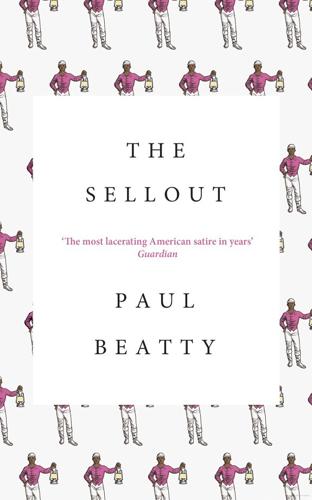
The Sellout: A Novel
by
Paul Beatty
Published 2 Mar 2016
Carbon-date my pipe and determine whether I’m a direct descendant of Dred Scott, that colored conundrum who, as a slave living in a free state, was man enough for his wife and kids, man enough to sue his master for his freedom, but not man enough for the Constitution, because in the eyes of the Court he was simply property: a black biped “with no rights the white man was bound to respect.” They’ll pore over the legal briefs and thumb through the antebellum vellum and try to determine whether or not the outcome of this case confirms or overturns Plessy v. Ferguson. They’ll scour the plantations, the projects, and the Tudor suburban subdivision affirmative-action palaces, digging up backyards looking for remnants of the ghosts of discrimination past in the fossilized dice and domino bones, brush the dust off the petrified rights and writs buried in bound legal volumes, and pronounce me as “unforeseen hip-hop generation precedent” in the vein of Luther “Luke Skyywalker” Campbell, the gap-toothed rapper who fought for his right to party and parody the white man the way he’d done us for years.
…
That incessant Black History Month loop of barking dogs, gushing fire hoses, and carbuncles oozing blood through two-dollar haircuts, colorless blood spilling down faces shiny with sweat and the light of the evening news, these are the pictures that form our collective 16 mm superego. But today I’m all medulla oblongata and I can’t concentrate. The film inside my head begins to skip and sputter. The sound cuts out, and protesters falling like dominoes in Selma, Alabama, begin to look like Keystone Negroes slipping en masse on an affirmative-action banana peel and tumbling to the street, a tangled mess of legs and dreams akimbo. The marchers on Washington become civil rights zombies, one hundred thousand strong, somnambulating lockstep onto the mall, stretching out their stiff, needy fingers for their pound of flesh. The head zombie looks exhausted from being raised from the dead every time someone wants to make a point about what black people should and shouldn’t do, can and cannot have.
…
And I’d do it again, because this pot is fucking unbelievable.” Fred’s breaking character. “What’s it called?” It being the joint he’s holding in his hand. “It doesn’t have a name yet, but Code Red sounds pretty good.” Fred has sketched all the important cases: same-sex marriage, the end of the Voting Rights Act, and the demise of affirmative action in higher education and, by extension, everywhere else. He says that in his thirty years of courtroom artistry, this is the first time he’s ever seen the court adjourn for dinner. First time he’s ever seen the Justices raise their voices and stare each other down. He shows me an artist’s rendering of today’s session.

Twilight of the Elites: America After Meritocracy
by
Chris Hayes
Published 11 Jun 2012
“The overwhelming majority of students offered admission through our test process are Asian and white,” she says. I asked Kupferstein Torres to explain why Hunter was admitting fewer and fewer black and Latino students. “There are certain things that emerge immediately,” she says, pointing to the dismantling of affirmative action at Hunter (about which more in a moment) and the persistent and growing inequality of opportunity in New York City. On top of that, she notes, “There was no test prep culture thirty years ago. Stanley Kaplan—the founder of Kaplan Test Prep—was probably tutoring one person.” The test prep industry for national standardized tests like the SAT is now a booming, multimillion-dollar business, and it is at least part of the reason (along with wide variety in school quality and parental educational attainment) that one of the best ways to predict a student’s SAT score is to look at his parents’ income: the more money they make, the higher the score is likely to be.
…
This doesn’t even count the advantages that wealthy children have in terms of private tutors, test prep, and access to expensive private high schools and college counselors adept at navigating the politics of admissions. All together this layered system of preferences for the children of the privileged amounts to, in Golden’s words, “affirmative action for rich white people.” It is not so much the meritocracy as idealized and celebrated but rather the ancient practice of “elites mastering the art of perpetuating themselves.” A pure functioning meritocracy, like that conjured by Michael Young, would produce a society with growing inequality, but that inequality would come along with a correlated increase in social mobility.
…
Eden and Cedar Paul (New York: The Free Press, 1962), p. 65. 41 “In the great industrial centers”: Ibid., p. 65. 42 “gulf which divides the leaders from the masses”: Ibid., p. 70. 43 “The Iron Law of Oligarchy”: Ibid., p. 342. 44 “It is organization which gives birth”: Ibid., p. 365. 45 “The treasure in the fable may well symbolize democracy”: Ibid., p. 368. 46 “At least one third of the students at elite universities”: Daniel Golden, The Price of Admission: How America’s Ruling Class Buys Its Way into Elite Colleges—and Who Gets Left Outside the Gates (New York: Three Rivers Press, 2007), p. 6. 47 “affirmative action for rich white people” … “elites mastering the art of perpetuating themselves”: Ibid., pp. 6 and 10. 48 “The Great Divergence”: See Paul Krugman, “Introducing This Blog,” http://krugman.blogs.nytimes.com/2007/09/18/introducing-this-blog/, accessed January 7, 2012. 49 In 1928, the top 10 percent of earners captured 46 percent of national income.… Between 1979 and 2005, nearly 88 percent of the entire economy’s income gains went to the top 1 percent: Emmanuel Saez, “Striking It Richer: The Evolution of Top Incomes in the United States,” March 15, 2008, http://www.econ.berkeley.edu/~saez/saez-UStopincomes-2006prel.pdf, accessed January 7, 2012, and Arloc Sherman and Chad Stone, “Income Gaps Between Very Rich and Everyone Else More Than Tripled in Last Three Decades, New Data Show,” Center on Budget and Policy Priorities, http://www.cbpp.org/cms/?
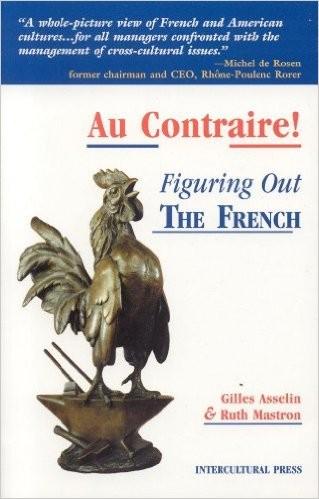
Au Contraire: Figuring Out the French
by
Gilles Asselin
and
Ruth Mastron
Published 1 Dec 2000
Many female politicians and commentators agreed in general terms that more women should be included in politics at the national level but rejected the call for quotas, maintaining that they are simply not necessary, since equality is already guar- With Politics 121 anteed by the Constitution. In concrete terms, the amendment in effect requires that political parties must choose equal numbers of female and male candidates. Quotas indeed violate the French universalist principle. Some Frenchwomen echo the fears expressed in the American affirmative action debate: that a woman who gains a position because of a quota will be perceived as less than competent. People may assume she would not have achieved success on her own merits. Despite such concern, women in the United States have been less reluctant to use quotas to their advantage. Nobody likes quotas, but that’s the only way to make things change, to get women into positions of power so they can show what they know, what they can do.
…
Universalism is a republican value that informs the Declaration of the Rights of Man and Citizen, the social protection system (as the French call it), labor laws, and many other vital areas of social life. Based on this fundamental principle, the government enacts laws that give each individual access to the same privileges. It does not in principle differentiate either positively or negatively based on the origin or specific situation of the person. With Society 133 Affirmative action laws such as those that have been on the books in the United States—though they are beginning to disappear—would be hard to implement in France. They exemplify the principle of differentiation, granting different rights and privileges for cultural or historical reasons on the basis of past oppression or discrimination.
…
Acknowledge their help gratefully and ask follow-up questions. There is a big difference between asking for information or exchanging ideas about a certain topic and bluntly passing judgment on it. Important differences exist, for example, between diversity à la française and à l’américaine, as reflected in French labor laws and American affirmative action practices. Telling French people categorically that they should manage their diversity issues in the American way reflects a lack of knowledge of and respect for your hosts’ culture. An open discussion, comparing and contrasting American and French situations and practices, is a much better way to go about a conversation.

The Authoritarian Moment: How the Left Weaponized America's Institutions Against Dissent
by
Ben Shapiro
Published 26 Jul 2021
That’s how you get Coca-Cola, a company with over 80,000 employees, training its workforce to be “less white” in fully racist fashion, noting that to be “less white” means to be “less arrogant, less certain, less defensive, less ignorant, and more humble”—and claiming that this discriminatory content was designed to enhance “inclusion.”11 SHUTTING THE OVERTON WINDOW Within institutions, the authoritarian Left’s incremental demands have been taken up, one by one: from diversity training to affirmative action hiring, from charitable donations to internal purges. But for the generalized impact of institutional takeover to be felt requires one final step: the renormalization of our societal politics in favor of censorship. Those who work within hijacked institutions remain a small fraction of the general population—but they can renormalize the society more broadly if they can convert liberals into leftists.
…
Even though the programs did little overall to alleviate the standing of black Americans relative to white Americans, the programs did paradoxically shore up the moral credibility of the American governmental system: it was difficult to claim that systems that had now been turned in favor of black Americans—systems from affirmative action to anti-discrimination law—were designed to make black Americans subservient. The legitimacy of the system, ironically, had been upheld by efforts to overhaul the system in the name of race-neutral progress. The Utopian Impulse had stymied the Revolutionary Impulse. Thus, by the early 1990s, the radical arguments had been put aside.
…
As Duvernay said, “I would do it all again. If you cannot be respectful of our alignment with that cause, with that protest, with that rallying cry, then there was nothing I wanted from you anyway.” Naturally, the Academy responded the next year with an emergency meeting and sought to radically shift the Academy membership through affirmative action directed at women and minorities. When other members of the Academy complained that political correctness had taken control of the institution—when, for example, Dennis Rice, a member of the Academy’s public relations branch, explained that he was “color- and gender-blind when it comes to recognizing our art,” and added, “You should look purely and objectively at the artistic accomplishment”—Boone Isaacs shot back, “Are you kidding me?
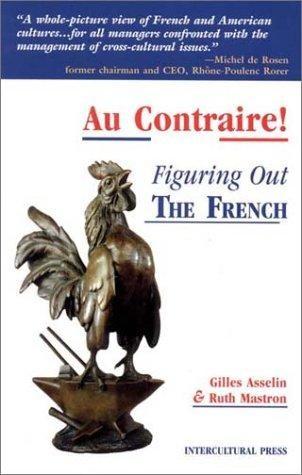
Au Contraire!: Figuring Out the French
by
Gilles Asselin
and
Ruth Mastron
Published 14 Apr 2001
Many female politicians and commentators agreed in general terms that more women should be included in politics at the national level but rejected the call for quotas, maintaining that they are simply not necessary, since equality is already guar- With Politics 121 anteed by the Constitution. In concrete terms, the amendment in effect requires that political parties must choose equal numbers of female and male candidates. Quotas indeed violate the French universalist principle. Some Frenchwomen echo the fears expressed in the American affirmative action debate: that a woman who gains a position because of a quota will be perceived as less than competent. People may assume she would not have achieved success on her own merits. Despite such concern, women in the United States have been less reluctant to use quotas to their advantage. Nobody likes quotas, but that’s the only way to make things change, to get women into positions of power so they can show what they know, what they can do.
…
Universalism is a republican value that informs the Declaration of the Rights of Man and Citizen, the social protection system (as the French call it), labor laws, and many other vital areas of social life. Based on this fundamental principle, the government enacts laws that give each individual access to the same privileges. It does not in principle differentiate either positively or negatively based on the origin or specific situation of the person. With Society 133 Affirmative action laws such as those that have been on the books in the United States—though they are beginning to disappear—would be hard to implement in France. They exemplify the principle of differentiation, granting different rights and privileges for cultural or historical reasons on the basis of past oppression or discrimination.
…
Acknowledge their help gratefully and ask follow-up questions. There is a big difference between asking for information or exchanging ideas about a certain topic and bluntly passing judgment on it. Important differences exist, for example, between diversity à la française and à l’américaine, as reflected in French labor laws and American affirmative action practices. Telling French people categorically that they should manage their diversity issues in the American way reflects a lack of knowledge of and respect for your hosts’ culture. An open discussion, comparing and contrasting American and French situations and practices, is a much better way to go about a conversation.
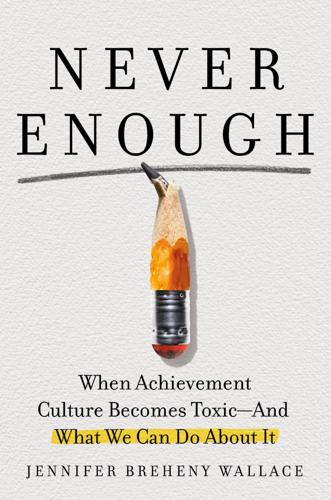
Never Enough: When Achievement Culture Becomes Toxic-And What We Can Do About It
by
Jennifer Breheny Wallace
Published 21 Aug 2023
At his competitive school in New York City, Rainier Harris, the son of Jamaican immigrants, said students had to essentially prove their worth “just to get basic respect.” The competition in school turned particularly ugly during the college admissions process, when Rainier overheard hurtful comments by his classmates about how affirmative action disadvantages white applicants at top colleges. When I first spoke with Rainier, he had just started his freshman year at Columbia University. “When I got into Columbia, people weren’t very friendly because they didn’t think I deserved it,” Rainier said. “It was as if they were blaming me or other Black students for why they might get rejected from a place like Yale.”
…
A B C D E F G H I J K L M N O P Q R S T U V W X Y Z A abundance, 91–92, 204, 211–13, 219 abuse, 52, 56 academic achievement balanced approach to, 139–40 keep it in perspective, 240 mattering linked to, 67, 238 narrow focus on, 206–7 overwhelms students, 120 parents’ expectations for, 60–62 parents focus on, 4, 18–21, 55–58, 139–40, 239 positive aspects of, 136–37 students on, 81–83, 161 academic engagement, 74, 129, 147, 192 achievement culture, xvii–xxi, 7, 16–17, 44, 48, 58, 74–75, 96, 105, 161 ACTs, 48, 162, 181 adolescents achievement pressures on, 88 critical stages of, 43–44, 53 on emotional roller coaster, 103 feel inadequate, 50 friendships during, 147–48 and mothers’ friendships, 100, 103 over reliance on others, 12, 60 vulnerable years of, 58–59 See also Canadian adolescents adult network, 213–17, 225, 240–41, 247 advanced classes, 25, 155, 158, 163. See also AP classes affection, 49–50, 60–61, 66, 70–73, 96–97 affirmative action, 164–65 affluent communities achievement expectations in, 112, 119, 131–32 advantages of, 29–30 competition in, 200 friendships in, 100–101, 104–7 high-achieving students in, xv, 2, 81–83, 117–19, 163–64 kids don’t contribute to, 178–79 lack of intimacy in, 91, 100–101 mental health in, 5–7, 117–18, 131–32 parenting in, 34, 36, 40, 79–80, 83–84, 92–93 where ambition defines you, 109–14 See also “SuperZip” communities; Wilton, Connecticut aggression, 164, 168–69, 171 alcohol consumption, 1, 4–7, 52, 119–22, 136, 147, 217 All Joy and No Fun (Senior), 87–88 ambition, 180 defines you, 109–14 of parents, 80, 91, 137–38 parents put brakes on, 115–20 of students, 152, 170, 201–3 Amherst, 25, 41 Anoa’i, Vaughan, 141–58, 161–67, 171–73 anxiety, 16 alleviating it, 72, 136, 203 causes of, 6–7, 19–20 in college, 8, 20 coping with, xxi, 19–20, 106, 190 epidemic levels of, xv–xvi examples of, 1–3, 6–7 friendships buffer for, 98–99, 148, 157 and mattering, 52, 211–12 AP classes, 143, 145, 203 and college admissions, 2, 109–11 parents set limits on, 81, 116, 138–39 put stress on kids, xiii, 81–83 and rankings, 47 supportive classmates in, 212 Archer School for Girls, 141–42, 146–58, 161–62, 165–66, 170, 173, 213 Asian Americans, 39–40, 91, 163 At What Cost?
…
See also substance use Dweck, Carol, 118–19 dyslexia, 177, 190, 202–5 E Eason, Genevieve, 79–84, 230 eating disorders, 3–4, 52, 95, 147 economic climate, 33–39 educators and Black students, 165 building partnership with, 165 “taking action” resources for, 242–46 See also teachers; tutors elementary school, 16, 18, 26, 46, 147, 158, 176–77 Elias, Vanessa, 90–91, 223–24, 230 elite colleges admission lotteries for, 245–46 affirmative action and, 164–65 competition for, 15, 246 conversations about, 133 “faking passions” for, 180 and happiness/success, 125–31 illegal scheme for, 24–25 parents focus on, 26, 29, 42–43, 111, 124, 139 pressure to go to, 26, 29, 31 rankings and, 125–31 reject myth about, 125–31 schools prioritize, 26, 182 self-worth tied to, xviii, 53 students worked towards, 1–2, 114 Elliott, Gregory, 51, 53, 58, 63 Emdin, Christopher, 229 emotional support, 79–80, 87–90, 95–98, 103, 150, 158–61 emotions mindfully expressed, 65–66, 71 normalize difficult ones, 239, 244 numbing them, 1, 3–4 produced by competition, 158–61, 244 share them in school, 244 empathy, xx, 87, 179–81, 190, 197, 205, 241 emptiness, xv, 5, 88 energy efficiency, 239–40 English, Elizabeth, 152 envy benign vs. malicious, 167–68 and feeling valued, 211 materialism and, 124 negative effects of, 151–52, 164 parental guidance for, 159–60, 169, 230, 239 positive aspects of, 154, 160, 168, 171–72 and social comparison, 151, 167–68, 244 Erickson, Erik, 12 ethnicity, 7, 162 Evanston, Illinois, 34, 36 evolution, 31–33 exhaustion of kids, 3, 5, 13, 16, 163–64, 180 and materialism, 121 of mothers, 38, 87, 90, 93–95 of parents, 65, 78–79, 84, 95, 98, 121 See also burnout extracurricular activities boundaries for, 109–11 cause stress, 8, 14 chauffeuring kids to, 84, 90, 100 in college, 129–30 and college admissions, 2, 38, 47, 158 competition in, xiv, 143 money spent on, 35 parents advise on, 88–89 parents manage them, 10, 30, 34, 80, 86 and scholarship dollars, 25 and status seeking, 28 F Facebook, xvi, 224 factory workers, 35–36 failures, 49, 61–62, 65, 71, 203–4, 240 “false self,” 58–64 families, 155 and achievement pressure, xvii, 6–7 in affluent communities, 109–14 children’s needs first in, 83–88 clarify goals of, 137–39 closeness in, 72–73, 96 dinnertime and, 64, 107, 124, 206 importance of, 117 mandate volunteering, 190–91 and mattering, 146–47, 212–13, 227 people come first to, 223 support for, 86, 106–7, 213–17 teens contribute to, 182–88, 200, 227, 230, 240 time together, 16, 72–73, 239 upwardly mobile, 11–12 values of, 132–40 Family Leadership Center, 186–87 Family Matters (Elliott), 53 fathers, 68 and college admissions, 43, 126, 144, 182 “good father effect” and, 85 “intensive parenting” by, 85 on parenting, 34, 42, 62–63, 103, 113 status safeguarding by, 30 support groups for, 85–86 Federal Reserve Bank of St.
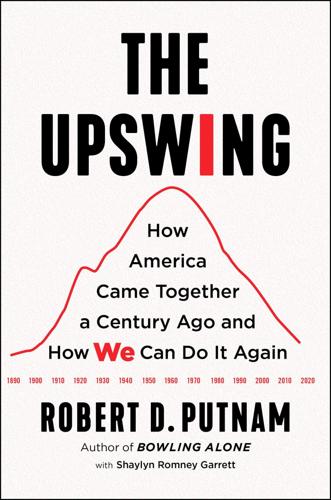
The Upswing: How America Came Together a Century Ago and How We Can Do It Again
by
Robert D. Putnam
Published 12 Oct 2020
This massive change in white attitudes on the principles of racial equality was significant in the sweep of history, and it was an important part of the backdrop to both the Civil Rights movement and America’s upswing. On the other hand, as the Civil Rights revolution moved forward, issues of implementation of those principles by government policy, such as affirmative action, came to the fore, and on those issues white resistance was both more substantial and more resistant to change, a fact to which we will return below. And even progress in white support for the principles of racial equality slackened as the twentieth century ended, partly because the engine of cohort replacement generated less aggregate progress after the pre–World War II generations had passed from the scene.
…
It would be wrong to dismiss the massive change in white acceptance of the principle of racial equality over the course of the full twentieth century, but it would also be wrong to assume that that conversion was translated directly into practice. Tragically, just as the Civil Rights movement began to see major success, and especially as the government undertook affirmative actions to bring about integration, the fragile national consensus that had enabled that change began to erode. While equality and inclusion sounded good in principle, white Americans quickly began to voice concerns about the pace of change. Although clear majorities supported the 1964 Civil Rights Act, a national poll conducted shortly after its passage showed 68 percent of Americans wanting moderation in its enforcement.
…
Indeed, when examining attitudes toward policies meant to establish racial equality (often called “racial policies” for short), scholars have found not only that white respondents remain widely opposed, but also that their support has been generally trending downward since 1970. White support for policies that ban discrimination and legal segregation in the realms of schools, public accommodations, and employment has slipped since the early 1970s.136 Meanwhile, white support for affirmative action programs that provide compensatory government assistance or preferential treatment to black Americans has remained very low since 1970, whether respondents are asked about direct spending, government aid, school admissions, or employment practices.137 Similarly, in the post–civil rights era, although white respondents indicated increasing levels of support for integration when small numbers of black individuals were involved (that is, when there were only a “few” black children in an integrated school or only a single black family next door), they were far less supportive when large proportions of black individuals were involved, suggesting limits to their commitment to racial tolerance.138 When asked about the causes of racial inequality, very few white respondents at the end of the century were still citing the “low ability” of black Americans.
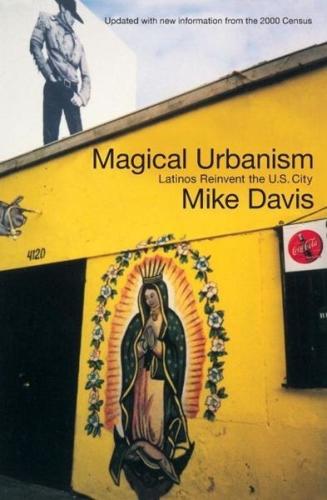
Magical Urbanism: Latinos Reinvent the US City
by
Mike Davis
Published 27 Aug 2001
After analyzing the employment records of the thirty-three lead- ing Silicon Valey firms and interviewing hundreds of executives, academics and activists, the Chronicle concluded that massive un- derrepresentation of the region's Black and Latino populations in managerial and professional jobs was the result of the dearth of science and math education five factors: 1) in minority-majority schools; 2) failure to enforce federal affirmative action laws ("violators rarely tin pay fines and are almost never disqualified from government contracts"; 3) get- job recruiters' neglect of campuses with substantial minority enrollments; 4) absence of supportive "networks" ("there are virtually no top-ranking blacks and Lati- nos in Silicon Valley to inspire and mentor younger employees"); 5) pervasive image.
…
Intellectually, Palo Alto-based Unz is the love-child of Mickey Kaus and Thomas Sowell, the New Republic and Commentary, not the traditional California right. to see them quickly He assimilated without undue in the marketplace of talent. Accordingly, 187 (to punish immigrants" but wants "likes state interference he opposed Proposition undocumented immigrants) in 1994 almost as vig- orously as he campaigned in favor of Proposition 209 (to end affirmative action) in 1996. Moreover, in the best Silicon Valley tradition, he has come up with an invention that he hopes will reframe the national debate about immigration and multiculturalism (and help pave his own way to poHtical office). Unz-designed Proposition 227 ("English for Children"), which be- came California law in June 1998 despite the 63 percent of Latino voters, Only as a rescue stream.

People, Power, and Profits: Progressive Capitalism for an Age of Discontent
by
Joseph E. Stiglitz
Published 22 Apr 2019
We have to understand the deep-seated institutional bases of racism and other forms of discrimination and root them out.48 This means that racial, ethnic, and gender equality won’t be achieved unless we more strongly enforce our antidiscrimination laws, in every aspect of our economy. But we have to go beyond that. We also need a new generation of civil rights legislation. WE NEED affirmative action and economic programs to promote equality of opportunity. There are multiple poverty traps in our country—groups of individuals, whether in particular places, like Appalachia, or of particular backgrounds, like Native Americans and African Americans, who need help in finding a way up.49 We’ve come to understand the mechanisms by which advantages, and disadvantages, can be passed on from generation to generation.
…
Ironically, our attachment to our mythological self-image leads us to embrace policies that actually undermine the expression of our values—making it ever less likely that the American dream becomes a reality. If everyone simply by dint of hard work can pull themselves up by their own bootstraps, we don’t need financial aid programs for the poor—somehow, they’ll get a job and work their way through college—and we don’t really need affirmative action programs to level the playing field for those facing a legacy of discrimination—those with grit and determination will overcome this, making them better people for it. We’ve seen the statistics though: even with the admittedly limited assistance we provide, those from poor families and from discriminated-against groups simply aren’t making it.3 The odds are overwhelmingly against it, so much so that one has to label the American dream as fiction.
…
PAGE NUMBERS IN ITALIC REFER TO ILLUSTRATIONS. abuses of power checks and balances to prevent, 163–67 money and, 167–70 academic publishing, 76 active labor market policies, 187 Acton, Lord, 164 Adelson, Sheldon, 331n26 Adobe, 65 advantage, intergenerational transmission of, 199–201 advertising, 124, 132 affirmative action, 203 Affordable Care Act (Obamacare), 40, 211–13 African Americans; See also racial discrimination disenfranchisement of, 161 and GI Bill, 210 and inequality, 40–41 intergenerational transmission of disadvantage, 279–80n43 and Jim Crow laws, 241, 271n3 mass incarceration, 202 agricultural subsidies, 96 agriculture, Great Depression and, 120 AI, See artificial intelligence AIG, 107 airline subsidies, 96–97 Akerlof, George, 63–64 alcoholism, 42 AlphaGo, 315n1 “alternative facts,” 136 alternative minimum tax, 85 Amazon, 62, 74, 123, 127, 128; See also Bezos, Jeff American Airlines, 69 American dream failings masked by myths, 224–26 and inequality of opportunity, 44–45 American exceptionalism, 35, 211–12 American Express, 60 American individualism, See individualism American-style capitalism dangers of, 28–29 and mortgage market, 218 and national identity, xxvi other countries’ view of, 97 and patent infringement suits, 59 and values, 30 anticompetitive behavior, 68–76 antipoaching agreements, 65–66 antitrust, 51, 62, 68–76 Apple market power, 56 patent infringement suits, 59 share buybacks, 109 tax avoidance, 85, 108 applied research, 24–25; See also research arbitration clauses, 73 arbitration panels, 56 Arizona campaign finance case, 170 artificial intelligence (AI) advances in, 117 in China, 94, 96 globalization in era of, 135 and IA innovations, 119 and job loss, 118 market power and, 123–35 Association for Molecular Pathology, 127 atomistic labor markets, 64–66 AT&T, 75, 147, 325n17 Australia, 17 authoritarian governments, Big Data and, 127, 128 automation, See technology balanced budget principle, 194–95 bank bailout (2008), 102–3, 113–14, 143–44, 151 bankers, 4, 7, 104 banks danger posed to democracy by, 101–2 and 2008 financial crisis, 101–4 and fiscal paradises, 86 mergers and acquisitions, 107–8 need for regulation of, 143–44 traditional vs. modern, 109–10 Bannon, Steve, 18 Baqaee, David, 62 barriers to entry/competition, 48, 57–60, 62–64, 183, 289n47 behavioral economics, 30 Berlin Wall, fall of, 3 Bezos, Jeff, 5, 33 bias, See discrimination Big Data; See also artificial intelligence (AI) in China, 94 and customer targeting, 125–26 and market power, 123–24 and privacy, 127–28 regulation of, 128–31 and research, 126–27 as threat to democracy, 131–35 Big Pharma, 60, 88–89, 99, 168 bilateral trade deficit, 90–91 Bill of Rights, 164 Blackberry, 286n34 Blankfein, Lloyd, 104 bonds, government, 215 Brexit, 3 browser wars, 58 Buckley v.

Masters of Management: How the Business Gurus and Their Ideas Have Changed the World—for Better and for Worse
by
Adrian Wooldridge
Published 29 Nov 2011
But it is sensible to take steps to prevent it. One popular answer is affirmative action, an idea that is making headway even in that last redoubt of old-fashioned meritocracy, the French establishment. However, experience in the United States—which introduced the practice in the 1970s—suggests that it raises a host of problems. In practical terms, many “affirmative-action babies” fail in highly competitive environments. On a more philosophical note, why should the children of rich blacks be given a head start over the children of poor whites? The biggest problem with affirmative action, however, is that it comes too late. The best way to boost the life chances of poor people is to intervene much earlier in life—to set them on the right path in kindergarten and primary school and reinforce those lessons in secondary school.
…
Only fourteen of the bosses of the S&P 500 companies and five of the bosses of the FTSE 100 companies are women. The British Equal Opportunities Commission calculates that, at the current rate of progress, it will take sixty years for women to gain equal representation on the boards of the FTSE 100. The slow pace of women’s progress has inevitably led to demands for affirmative action. But this should be used only as a weapon of last resort. It brings all sorts of problems in its wake, from promoting unqualified people (Sweden, which has introduced quotas, has been forced to recruit many female board members from academia and NGOs) to casting doubt on the merits of women who reach the top.
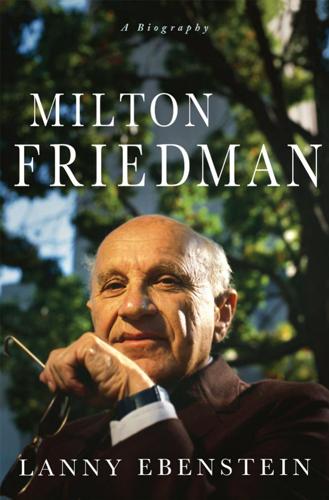
Milton Friedman: A Biography
by
Lanny Ebenstein
Published 23 Jan 2007
His essential formula for improving inner cities and reducing racial tension is to implement vouchers in education, legalize drugs, cut welfare, and eliminate affirmative action. Friedman endorses the argument of Thomas Sowell that among the negative consequences of affirmative action is that it mismatches participants’ fields of endeavor with their abilities, to their detriment (an individual who would be a success at a state university is instead, for example, admitted to an Ivy League university, where he or she is more likely to fail). Friedman also opposes affirmative action because it brings the wrong sentiment or ethos to a society—that people should be evaluated by group membership rather than by individual merit.
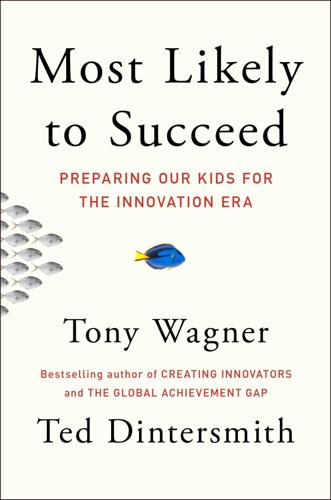
Most Likely to Succeed: Preparing Our Kids for the Innovation Era
by
Tony Wagner
and
Ted Dintersmith
Published 17 Aug 2015
Wall Street Journal, October 7, 2014. http://blogs.wsj.com/economics/2014/10/07/sat-scores-and-income-inequality-how-wealthier-kids-rank-higher/ (accessed March 31, 2015). 18 Strauss, Valerie. “A basic flaw in the argument against affirmative action,” Washington Post, July 17, 2014. http://www.washingtonpost.com/blogs/answer-sheet/wp/2014/07/17/a-basic-flaw-in-the-argument-against-affirmative-action/ (accessed December 8, 2014). 19 Pinker, Steven. “The trouble with Harvard: The Ivy League is broken and only standardized tests can fix it,” New Republic, September 4, 2014. http://www.newrepublic.com/article/119321/harvard-ivy-league-should-judge-students-standardized-tests (accessed September 6, 2014). 20 “Fundamentals of Statistics 2: The Normal Distribution.”
…
“GI bill covered tuition for nearly a million post-9/11 veterans without tracking their progress,” The Center for Public Integrity, September 3, 2013. http://www.publicintegrity.org/2013/09/03/13297/gi-bill-covered-tuition-nearly-million-post-911-veterans-without-tracking-their (accessed November 20, 2014). 56 “Remembering America’s Veterans in 2013,” Center for American Progress, November 11, 2013. http://www.americanprogress.org/issues/military/news/2013/11/11/79087/remembering-americas-veterans-in-2013/ (accessed November 20, 2014). 57 Deresiewicz, William. Excellent Sheep, 2687–2688. 58 Ibid. 59 Siskind, Sarah R. “Affirmative dissatisfaction,” Harvard Crimson, November 2, 2012. http://www.thecrimson.com/column/the-snollygoster/article/2012/11/2/Siskind-affirmative-action/ (accessed October 2, 2014). 60 “Voter Turnout by Age.” CivicYouth.org (accessed December 8, 2014), http://www.civicyouth.org/wp-content/uploads/2013/07/2012YouthVote.jpg. 61 “Digest of Education Statistics,” National Center for Education Statistics, October 2013. http://nces.ed.gov/programs/digest/d13/tables/dt13_104.20.asp. 62 “Statistics,” Campus Vote Project, http://www.campusvoteproject.org/statistics. 63 Arum and Roksa, Academically Adrift, 1924–1926. 64 Quoted from the summary of the book on amazon.com. http://www.amazon.com/Generation-Tightrope-Portrait-College-Student-ebook/dp/B008NPSNHQ (accessed December 8, 2014). 65 Leonhardt, David.
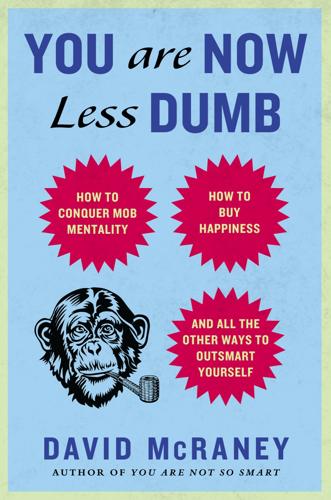
You Are Now Less Dumb: How to Conquer Mob Mentality, How to Buy Happiness, and All the Other Ways to Outsmart Yourself
by
David McRaney
Published 29 Jul 2013
On a university campus, he observed, people want to appear more tolerant to their peers than they may truly feel. As in the alcohol study, he asked the students at Cornell University how they felt about affirmative action. He found that about a quarter supported it and about half did not. He then asked the same students to estimate what the results of the study would be. They reported that the campus was probably 40 percent in favor and about 40 percent opposed, thus overestimating the support for affirmative action at Cornell. Boven showed that pluralistic ignorance sways public opinion regardless of what sort of public experiences it. On a predominantly liberal college campus, most people don’t want to be seen as racists or lacking in progressive sentiment, so even if they privately harbor doubts about something such as affirmative action, they will censor that opinion when speaking in public.
…
On a predominantly liberal college campus, most people don’t want to be seen as racists or lacking in progressive sentiment, so even if they privately harbor doubts about something such as affirmative action, they will censor that opinion when speaking in public. No matter the policy, if there is pressure enough to conform, then people will base their display of support for the given policy on the level of others’ public compliance, and thus the policy becomes more and more deeply entrenched in the culture. Psychologist James Kitts infiltrated vegetarian student cooperatives in which people live and eat together under the norm of a meatless lifestyle.
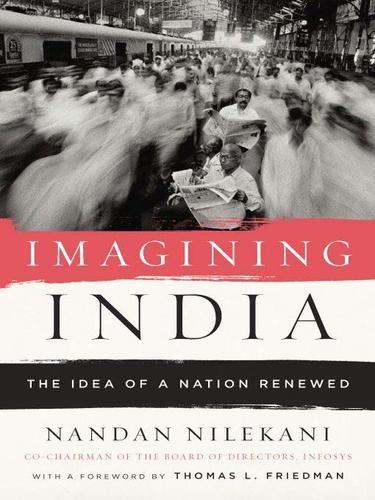
Imagining India
by
Nandan Nilekani
Published 25 Nov 2008
Outside our unions, for instance, there is no large bloc of voters that has formed to demand social security, or are arguing in favor of comprehensive health care, education, energy solutions or infrastructure. India’s fragmented caste system has instead redefined partisanship mainly around caste lines. The pet issues of the Indian left and right focus on affirmative action and caste reservation; these have forced the debates on broader reforms in, say, labor education deep into the sidelines. These appeals to caste and the politics of identity have also hardened people’s opinions, with their you’re-either-with-us-or-against-us approach. Both within the government and in our advisory committees and task forces, there is now little more than sharp partisanship.
…
And a corrupt system is no help; one journalist recently managed to procure backward-caste certificates from the government for former prime minister Vajpayee, the general secretary of the CPI(M), Prakash Karat, and the UPA’s human resource development minister, Arjun Singh—all of whom are “upper” castes. Dr. Vijay Kelkar points out that there are better ways to correct years of backwardness, through solutions that ensure affirmative action while looking out for relative skill. “Adding an additional number to the exam scores of OBC and SC/ST students in entrance tests would give them benefits that balance fairness and merit,” Dr. Kelkar says. He compares this movement from outright reservations to such “score additions,” to our postreform shift from import quotas to tariffs.
…
He compares this movement from outright reservations to such “score additions,” to our postreform shift from import quotas to tariffs. “Quotas are, in the end, a very crude mechanism for inclusion,” he says. Yogendra Yadav has similarly recommended a point-based system where college and job applicants receive additional points for caste backwardness and low incomes, a system that closely parallels affirmative-action schemes in the United States.cl But it is much more difficult to establish such rules than to allow what is now happening—retaining feudal loyalties, only this time in favor of the Dalits and lower castes. And the recent rise in power of OBC parties that are tightly focused on caste pride and loyalty brings to mind George Orwell’s warning that a corrupt system will, if unchanged, stay corrupt even if power shifts hands from its tyrants to its past victims—and soon enough, as he wrote, “it’s impossible to tell which is which.”
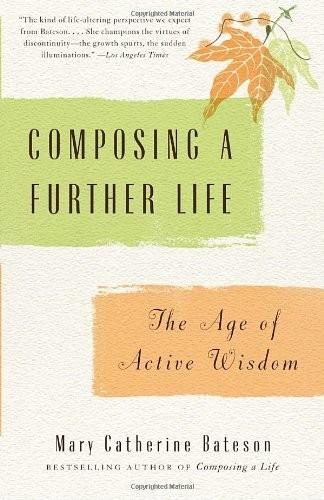
Composing a Further Life: The Age of Active Wisdom
by
Mary Catherine Bateson
Published 13 Sep 2010
“There was a strike against one of their hotels in California, two hundred black kids arm in arm in the lobby protesting because no blacks were employed there. They paralyzed the hotel,” he said. “The police couldn’t move them—they didn’t have enough prisons for all these young blacks. So I was sent out as a lawyer for the hotel chain to negotiate some sort of a settlement. I worked out an affirmative action deal with the mayor and the hotel, in which the hotel would hire two blacks every year. “Then, on my way back home—it was the time of the second march on Selma—I had to stop in Chicago, and I was watching this horrible business at the bridge on TV, and instead of going home I went to Selma, and I was in Selma for a week.
…
“We measure progress, evaluate individual colleges and universities—which ones are committed to advancing blacks, and which ones aren’t. Which ones have black faculty in large numbers, which ones don’t.” Ted’s focus in Adulthood II has been the creation and maintenance of the journal, tracking academic affirmative action and hiring policies across the country. Ted explained that he still had no succession plan to maintain the journal, which he works on full-time. “It’s really a problem,” he said. “Probably, as I look back on it, it’s more important than anything else I’ve done. We have established a history, an archive that is irreplaceable, on what’s happened over the past fifteen years—in the elite schools, the Ivy League schools, the smaller colleges, the public universities, we’ve got it all there.
…
But if it’s land that you have to farm, you can’t start off with a small piece and have it propagate!” “Inheriting a white skin has been a legacy advantage and a black skin was a big disadvantage,” Ted commented. “Today, having a black skin may be an advantage in applying for certain positions. Being a woman has an important advantage in becoming a college president! Affirmative action has shifted the biological disadvantage to advantage in some contexts. I think that’s good. Who would dream that this could have happened? “It’s difficult to sort out good and bad in these legacy advantages and disadvantages. Does the legacy system always interfere with merit? Are legacy and merit always at war with each other?
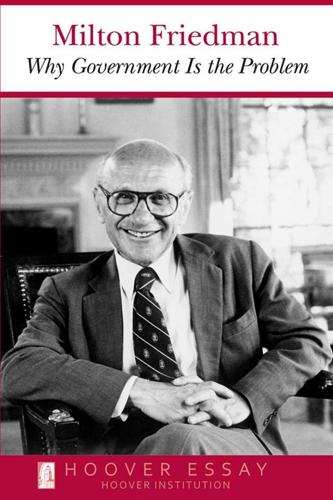
Why Government Is the Problem
by
Milton Friedman
Published 1 Feb 1993
Miscellaneous I have not even mentioned the botched economic policies: the reverse Reaganomics that the Bush administration practiced contributed to the recession of 1990—1991, condemned us to a very slow and erratic recovery from a mild recession, and, very probably, promises a relatively slow 1990s, almost regardless of what the Clinton administration does. Nor have I mentioned such things as over-regulation of industry or agricultural policies under which taxpayers pay people to grow crops that are going to be destroyed or stored or given away. I have not mentioned tariffs and quotas or affirmative action and wage and hour laws. In light of this list, is there any doubt that government is the problem? None of this means that government does not have a very real function. Indeed, the tragedy is that because government is doing so many things it ought not to be doing, it performs the functions it ought to be performing badly.

Drive: The Surprising Truth About What Motivates Us
by
Daniel H. Pink
Published 1 Jan 2008
Since death is an absolute certainty for everyone, the important variable is the quality of life one leads between the times of birth and death. BILL STRICKLANDFounder of the ManchesterCraftsmen's Guild, and MacArthurgenius award winner Imagine an organization, for example, that believes in affirmative action one that wants to make the world a better place by creating a more diverse workforce. By reducing ethics to a checklist, suddenly affirmative action is just a bunch of requirements that the organization must meet to show that it isn't discriminating. Now the organization isn't focused on affirmatively pursuing diversity but rather on making sure that all the boxes are checked off to show that what it did is OK (and so it won't get sued).
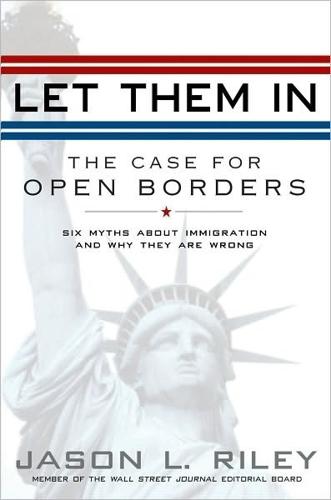
Let Them In: The Case for Open Borders
by
Jason L. Riley
Published 14 May 2008
She’s a veteran of the Reagan White House and a former executive director of the U.S. Commission on Civil Rights. She’s a FOX News political analyst, a nationally syndicated columnist, and head of the Center for Equal Opportunity, a think tank that promotes assimilation over multiculturalism and actively opposes affirmative action quotas and bilingualism. She’s written extensively on organized labor, including the book, Betrayal: How Union Bosses Shake Down Their Members and Corrupt American Politics. She was the Republican candidate for U.S. Senator from Maryland in 1986 and President George W. Bush’s nominee for Secretary of Labor in 2001 before withdrawing her name from consideration.
…
Bauer, P. T. Equality, the Third World, and Economic Delusion. Harvard University Press, 1981. Bean, Frank D., and Gillian Stevens. America’s Newcomers and the Dynamics of Diversity. Russell Sage Foundation, 2003. Becker, Gary S., and Guity Nashat Becker. The Economics of Life: From Baseball to Affirmative Action to Immigration, How Real-World Issues Affect Our Everyday Life. McGraw-Hill, 1997. Bickel, Alexander M. The Morality of Consent. Yale University Press, 1975. Borjas, George J. Heaven’s Door: Immigration Policy and the American Economy. Princeton University Press, 1999. Buchholz, Todd G. Bringing the Jobs Home: How the Left Created the Outsourcing Crisis—and How We Can Fix It.
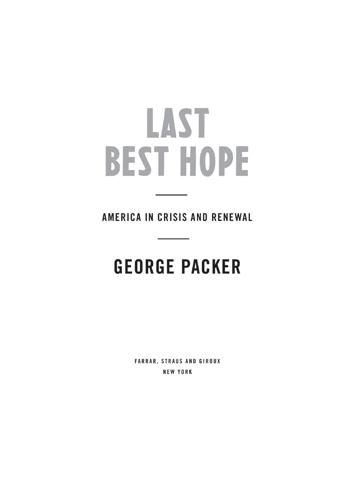
Last Best Hope: America in Crisis and Renewal
by
George Packer
Published 14 Jun 2021
Libertarians believe that the market alone determines value, and that any attempt to tip the scales will upset its laws while endangering freedom. To the meritocrats of Smart America, some interventions are necessary for everyone to have an equal chance to move up. The long history of racial injustice demands remedies in affirmative action, diversity hiring, and maybe even reparations. The poor need a social safety net and a living wage; poor children deserve higher spending on education and health care. Workers dislocated by trade agreements, automation, and other blows of the global economy should be retrained for new kinds of jobs.
…
“Rosa sat so Martin could walk so Obama could run so we could all fly”: that was the story in a sentence, and it was so convincing to a lot of people in my generation—including me—that we were slow to notice how little it meant to a lot of people under thirty-five. Or we heard but didn’t understand and dismissed them with irritable mental gestures. We told them they had no idea what the crime rate was like in 1994. Smart Americans pointed to affirmative action and children’s health insurance. Free Americans touted enterprise zones and school vouchers. Of course the kids didn’t buy it. In their eyes “progress” looked like a thin upper layer of Black celebrities and professionals, who carried the weight of society’s expectations along with its prejudices, and below them, lousy schools, overflowing prisons, dying neighborhoods.
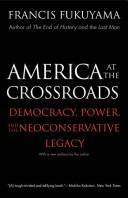
America at the Crossroads: Democracy, Power, and the Neoconservative Legacy
by
Francis Fukuyama
Published 20 Mar 2007
There was thus a direct link between the critique of American public policy and the earlier anticommunism of the CCNY group: both American liberals and Soviet communists sought worthy ends but undermined themselves by failing to recognize the limits of political voluntarism. Examples of this focus abound. Nathan Glazer wrote about the negative consequences of affirmative action in terms of the way it stigmatized its purported beneficiaries and set up perverse incentives for social advancement. James Q. Wilson, in his extensive writings on crime, argued that it was foolish to believe that social policy could get at alleged root causes of crime like poverty and racism, and that sensible crime-fighting policies had to deal with mitigating short-term symptoms.
…
John Ikenberry, After Victory: Institutions, Strategic Restraint, and the Rebuilding of Order After Major Wars (Princeton: Princeton University Press, 2001). 7. Zbigniew Brzezinski, "The Dilemma of the Last Sovereign," American Interest 1, no. 1 (2005): 37-46. 8. Pierre Hassner, "Definitions, Doctrines, and Divergences," National Interest no. 69 (2002): 30-34. Abu Ghraib, 187 Adelman, Carol, 2111133 Administrative Procedure Act, 170 affirmative action, 19 Afghanistan, 111, 173; invasion of, 1, 174; precision targeting used in, 35; regime change in, 28, 29 Africa: and Chad-Cameroon pipeline, 179-80; social breakdown in, 130; and Western development strategies, 121-22 Aid to Families with Dependent Children (AFDC), 20 Albright, Madeleine, 193-94 Alhurra, 150 Allison, Graham, 68 Almond, Gabriel, 126 American Center for Labor Solidarity, 136 American exceptionalism, 2, 3, 96-97, 101, in, 190.
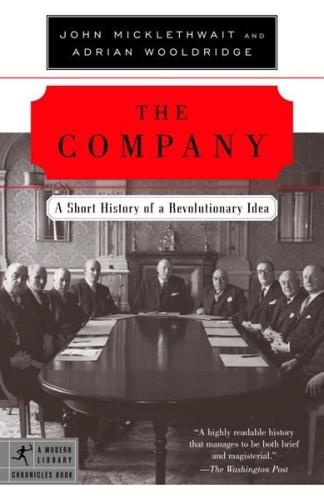
Company: A Short History of a Revolutionary Idea
by
John Micklethwait
and
Adrian Wooldridge
Published 4 Mar 2003
The economy in many countries was in a wretched state. Unions had seldom been more powerful: in 1974, the miners toppled Britain’s Conservative government. And even in America, governments kept introducing bothersome rules. In 1971, Richard Nixon introduced controls on wages and prices. His administration also launched affirmative action and established some of the country’s most powerful regulatory agencies, such as the Environmental Protection Agency and the Occupational Safety and Health Administration.1 The deregulatory revolution began in Britain, where Margaret Thatcher was swept to power in 1979 by a wave of resentment over strikes and stagflation.
…
According to the British government’s own regulatory impact assessments, the European working-time directive alone, which set a maximum forty-eight-hour week, was costing the country’s businesses more than £2 billion a year by 2001.30 According to the same figures, Tony Blair’s Labour government had added £15 billion worth of regulatory costs in its first five years. The American government also increased its grip on the company through laws governing health, safety, the environment, employee and consumer rights, and affirmative action. Often the effect was not just more red tape but also more lawsuits. The 1991 Civil Rights Act, signed by George Bush senior, imposed huge regulatory burdens on businesses. It also created a litigation bonanza by increasing attorneys’ fees and allowing claims for “emotional injury.” American managers were more restricted than ever before in performing one of their most basic functions—hiring and firing.
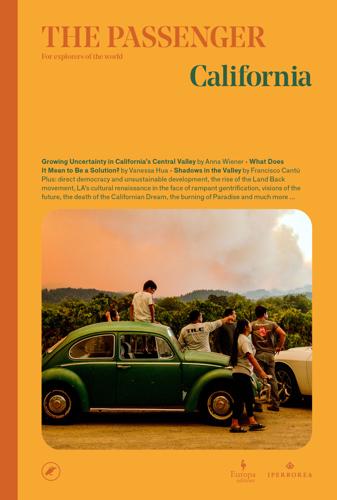
The Passenger
by
AA.VV.
Published 23 May 2022
Despite the growing numbers, those in power continue to use the perceived socioeconomic success of Asian Americans as a racial wedge against other minorities and to downplay the impact of structural racism on Blacks and Latinos. Over the decades, this dynamic has played out again and again. Consider the debates over affirmative action and race-conscious admissions to elite high schools and colleges that pit Asian Americans against other minority groups. Jennifer Lee, a professor of sociology at Columbia University, explained in an interview with CBC radio how Asian Americans are used to attack affirmative action—the controversial policy aimed at increasing educational opportunities for underrepresented groups. A 2018 lawsuit against Harvard University was orchestrated by a white conservative, who sought out Asian-American plaintiffs after he failed to win another case in which he’d backed a white woman who’d sued the University of Texas.

The Boy Who Could Change the World: The Writings of Aaron Swartz
by
Aaron Swartz
and
Lawrence Lessig
Published 5 Jan 2016
My heart burning with the pain of societal injustice, I chose the one on “Freedom, Equality, Difference.” Most of the other students had no particular interest in the topic—they were just meeting the requirement. But a significant minority did: like me, they cared passionately about it. They were the conservatives, armed with endless citations on how affirmative action was undermining American meritocracy. The only other political attitude I noticed was a moderate centrism, the view espoused by the teacher, whose day job was studying just-war theory. It quickly became clear that I was the only person even remotely on the left. And it wasn’t simply that the others disagreed with me; they couldn’t even understand me.
…
We have to teach students this uplifting version of American history because if you’re not taught to be proud of your country, you cannot defend yourself. The talk ends and we move to Q&A. I notice Horowitz has failed to mention what we can do to fight this insidious leftist control. I get in line. The first person asks Horowitz how to distinguish this from affirmative action. Horowitz sort of dodges the question, talking more about how conservatives are discriminated against in his view, before assuring me that he doesn’t support a requirement of hiring conservatives, he just thinks the management should seek out good conservatives (he mentions Thomas Sowell as an example) and hire them.
…
Horowitz explains that Bush-hatred is the problem, not disagreement. “Friends disagree with me, but they don’t compare me to Hitler!” It’s my turn. I say that I understand programs to ensure blacks and women aren’t discriminated against, but why do conservatives deserve special treatment? Horowitz emphasizes that he’s against affirmative action and says that his point is that exposure to new ideas is far more important than skin color. (The audience applauds at Horowitz’s ability to evade my poorly constructed question.) Finally, someone asks what we can do about it. Horowitz says he’s started a group, StudentsForAcademicFreedom.org (200K visitors!)

Break Through: Why We Can't Leave Saving the Planet to Environmentalists
by
Michael Shellenberger
and
Ted Nordhaus
Published 10 Mar 2009
Rising status insecurity and the continuing move away from traditional forms of authority—from traditional family and church to governments and employers—all helped create the conditions for a powerful conservative backlash against abortion, same-sex marriage, gun control, and environmentalism. Insecure Americans seeking ways to meet their deeply felt needs for status direct their ire at immigrants, racial minorities, the poor, and others perceived as low status. And since the 1970s, conservatives have successfully harnessed resentments around everything from affirmative action to school busing to environmental laws. And while support for universal programs like Social Security and Medicare has remained relatively high, support for programs aimed at helping the poorest Americans has declined sharply.27 5. By 1993, the economic fortunes for the average American started to improve.
…
Given the powerful correlation between rising prosperity and the emergence of higher postmaterialist values, it would seem to follow that the increasing prosperity of the 1993 to 2003 period would be accompanied by a turn back toward fulfillment values. And indeed, this is what Benjamin Friedman believes happened. Friedman points to the quieting down of controversies over affirmative action, the liberalization of trade, military action in Yugoslavia and Somalia for humanitarian reasons, increased spending on education, and more liberal attitudes toward immigration. But Friedman offers no evidence that any of the above is indicative of a shift in social values. The North American Free Trade Agreement (NAFTA) passed in Congress in 1993, when the economic recovery was just beginning, because President Clinton pushed it through, not because an increasingly prosperous and secure public had suddenly embraced trade liberalization.
…
The North American Free Trade Agreement (NAFTA) passed in Congress in 1993, when the economic recovery was just beginning, because President Clinton pushed it through, not because an increasingly prosperous and secure public had suddenly embraced trade liberalization. Notably, in 2005, after twelve years of solid economic growth (only briefly interrupted by a small recession), Congress rejected an expansion of NAFTA to the rest of Latin America. Affirmative action was dramatically rolled back in a voter initiative in California in 1996—a banner year for economic growth. Clinton’s mend-it-don’t-end-it position was politically deft, but it did not indicate (nor does Friedman suggest it did) more liberal attitudes toward racial equity. The only opinion research Friedman cites to substantiate his claim about more liberal attitudes toward the less fortunate is in regard to immigration.

Palo Alto: A History of California, Capitalism, and the World
by
Malcolm Harris
Published 14 Feb 2023
Stan Puryear (later Muata Weusi-Puryear), a computer programmer who moved to the area in the early 1960s to pursue a doctorate in symbolic logic at UC Berkeley, became president of the Palo Alto–Stanford branch of the NAACP, which swelled with professors and students and was able to funnel substantial funds to the southern movement, in addition to organizing protests against new attacks from the real estate industry.23 Palo Alto SNCC and Mid-Peninsula CORE worked to desegregate employment, education, and housing individual by individual. That meant negotiating for affirmative action in hiring at shops, getting signatures for open-housing promises from homeowners, and “sneaking out” black kids into white liberal houses so they could access the residentially segregated Palo Alto schools. If the suitcase cohort could not for the most part access the integrated middle-class lifestyle held out as a lure during the war, they worked hard to prepare their children for such opportunities and to prepare the world for their children.
…
Having expanded greatly in the previous decades, in the late 1970s the state stopped. Conservatives, led by Governor Ronald Reagan, turned an attack on the New Left campus movement to an attack on students in general.98 Tuition and fees at the University of California system doubled in the ’80s, then tripled in the ’90s.99 Right-wing lawyers attacked affirmative action, posing individual white claims against black group claims. In the landmark Bakke ruling of 1978, the Supreme Court struck down the UC system’s racial admissions quotas—themselves a compromise with the open-admission demand from the Third World student movement—which steered liberation struggles toward an individual anti-discrimination orientation.
…
Together—and they usually were—the two concepts crystallized into a racist phantasmagoria: decent white property owners losing control of their communities to inferior blacks and Mexicans who are taking over the government, using up all the tax dollars, allotting themselves unfair advantages via affirmative action and social programs, despoiling the environment with their fertility, undermining the quality of America’s human stock, and destroying property values. And because of these shifting demographics, soon there would be nothing anyone could do about any of it. Bienvenidos a Soviet América. Underpinning the persecution fantasy in the 1970s and ’80s was Stanford’s supposedly hard new science in genetics and ecology, making it difficult for liberals to refute or reject.

My Journey as a Combat Medic: From Desert Storm to Operation Enduring Freedom
by
Patrick Thibeault
Published 23 Jul 2012
The gun goes off and all four people take off. A few of the runners are being held back due to racism and inequality. Affirmative Action is supposed to help those who are being held back by racism and inequality. The majority of us part-time National Guard soldiers did not live in a bubble like the active duty soldiers did. We pointed out that these programs have some merit, but in most cases in the real world, the playing field is pretty equal. We tried to explain to the instructors that Affirmative Action, in itself, has become a form of discrimination. A big argument ensued, but it was good that discussions like this can occur in the military.
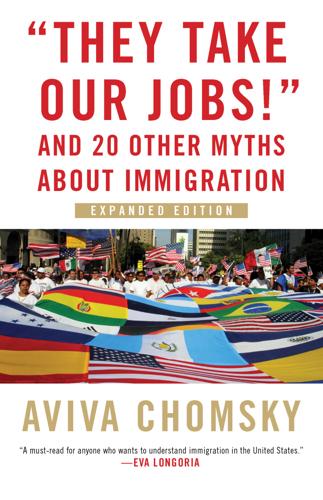
"They Take Our Jobs!": And 20 Other Myths About Immigration
by
Aviva Chomsky
Published 23 Apr 2018
In the northeast, a similar recruitment program brought Puerto Ricans—who, like African Americans, were citizens, but second-class citizens—to work in the farms and fields. In the 1960s, the formal system of racial segregation in the United States was dismantled, and a new wave of government programs ranging from affirmative action to food stamps tried to redress the results of centuries of legally enforced racial inequality and exclusion. The Voting Rights Act, moreover, acknowledged that blacks had been excluded by administrative means from full citizenship. The bracero program was also tacitly acknowledged to be a violation of people’s rights.
…
Furthermore, as Crawford explains, “because bilingual education is controversial, it is reported less as a pedagogical field than a political issue, with opposing ‘sides’ given equal time.”16 Rather like the issue of evolution, or global warming: there is an overwhelming scientific consensus on the basic issues, but because they are politically controversial, they are often presented in the media as if there were equal scientific validity to the opposing political views. In some ways, the debate about bilingual education mirrors other debates about social policy. Conservatives argue that social spending on programs like welfare, affirmative action, or others designed to address social, racial, and economic inequalities actually harms those whom it is designed to help. Education should not be understood as a zero-sum issue. Just as children should be taught math and reading—and educators understand that literacy enhances math skills, and vice versa—children who are fluent in a language other than English have an academic skill that should be nurtured.
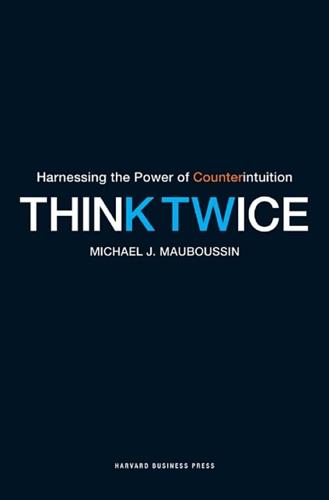
Think Twice: Harnessing the Power of Counterintuition
by
Michael J. Mauboussin
Published 6 Nov 2012
While quantitative and standardized, the results simply measure the wrong things. Gladwell argues that the mismatch problem extends well beyond sports. He cites examples from education (credentials are poor predictors of performance), the legal profession (individuals accepted to law school under lower affirmative-action standards do as well as their classmates after graduation), and law enforcement (burly police officers may not be best for a largely relational job). You can easily see how the problem extends to interviews for all kinds of jobs, because the questions and answers rarely shed any light on prospective performance.
…
The loss of diversity usually stems from a dominant leader, an absence of facts, or cognitive homogeneity in the group. To illustrate the latter, Cass Sunstein, a professor at the Harvard Law School, and some colleagues separated liberals and conservatives into like-minded groups and had them deliberate on socially controversial issues like same-sex marriages and affirmative action. In most cases, the group settled on a more extreme view than that expressed by most individuals in interviews conducted before the deliberations. The views of the individuals became more homogeneous after they spent time with their groups. Without diversity, collectives large or small can be wildly off the mark.28 So what can you do to make the expert squeeze work for you instead of against you?
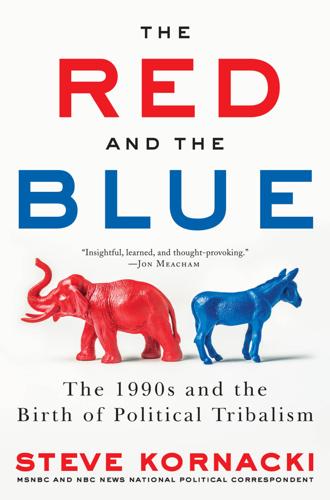
The Red and the Blue: The 1990s and the Birth of Political Tribalism
by
Steve Kornacki
Published 1 Oct 2018
Officially, the line had nothing to do with race, but to critics it was a wink as ugly as it was blatant. Republicans bristled at the charge of race baiting. Civil rights, their party platform proclaimed, was a settled matter, and America was better for it. But race was so intertwined with the most contentious issues of the 1970s and ’80s, from school busing and affirmative action to welfare and crime, that it was possible to stoke prejudices in ways that were politically advantageous. Moreover, Democrats moved in the opposite direction, embracing newly enfranchised blacks in the South and forging tighter bonds with nonwhite voters everywhere. The New Left movement of activists and academics gained influence within the party, pushing it toward a vision of social equality and powering the nomination of George McGovern for president in 1972.
…
Over the last generation, Georgia’s fraught racial politics had pushed its white voters toward the Republican Party, and Buchanan now aimed hard for them. A few months earlier, Bush had signed a civil rights bill. He’d told conservatives it was a victory because it didn’t include quotas. but it did allow for affirmative action, which Buchanan now argued was just as likely to make blue-collar whites the victims of “reverse discrimination.” He framed it as an issue of class—Bush and the “Exeter-Yale GOP Club” trying to “salve their social consciences at other people’s expense.” The White House was on edge as the vote neared.
…
And then I read in the Manchester paper that the United States Export-Import Bank had just guaranteed a great big loan for a new paper mill in Mexico.” He paused to let that sink in, then returned to his refrain. “What are we doing to our own people, my friends?” He knew every button to press: multiculturalism and affirmative action (“This was supposed to be a country where men were judged by the content of their character and not the color of their skin”), foreign aid (“If I get there, foreign aid comes to an end and we start thinking about the Americans right here in the United States!”), political correctness (“They took Washington’s name off Washington’s birthday!”)

Future Politics: Living Together in a World Transformed by Tech
by
Jamie Susskind
Published 3 Sep 2018
Her less-gifted cousin might graduate from a private school with better grades and a range of extra-curricular baubles. If both apply for the same college place, the rich student is plainly better qualified, but does she really deserve the place more? In this instance, true equality of opportunity requires more than merely abstaining from racism or bigotry. It calls for affirmative action, taking into account the socio-economic conditions in which the cousins’ qualifications were earned (or not earned, as the case may be). Another perspective on desert is to say that instead of looking at merit to decide what people deserve, we should try to reward morally deserving or socially useful conduct, as opposed to work whose value is only valuable in commercial terms.
…
OUP CORRECTED PROOF – FINAL, 28/05/18, SPi РЕЛИЗ ПОДГОТОВИЛА ГРУППА "What's News" VK.COM/WSNWS 268 FUTURE POLITICS Using algorithms and data to make these decisions is not inherently a bad thing. On the contrary, it’s possible that carefully crafted algorithms could eliminate the biases and prejudices of human decision-makers.With regard to work, for instance, affirmative action algorithms could be used to broaden the pool of successful applicants from beyond the usual colleges and institutions. When it comes to loans, housing, and insurance, algorithms could be used to widen access for those who need or deserve it most. My point, at this stage, is simpler: code (embodying algorithms) is an increasingly important mechanism of distributive justice.
…
To add insult to injury, the neutrality fallacy gives these instances of injustice the veneer of objectivity, making them seem natural and inevitable when they are not. The lesson for technologists is that justice sometimes demands that different groups be treated differently. This idea underpins affirmative action and the subsidizing of minority arts. And it should underpin all our efforts to avoid algorithmic injustice. An application of code should be judged by whether the results it generates are consistent with a relevant principle of justice, not by whether the algorithm in question is neutral as between persons.

Free to Choose: A Personal Statement
by
Milton Friedman
and
Rose D. Friedman
Published 2 Jan 1980
Another important development in higher education has been a major expansion in the federal government's involvement in financing, and even more in regulating both government and nongovernment institutions. The intervention has in large measure been part of the greatly expanded federal activity to foster so-called "affirmative action," in the name of greater civil rights. This intervention has aroused great concern among faculty and administrators at colleges and universities, and much opposition by them to the activities of federal bureaucrats. The whole episode would be a matter of poetic justice if it were not so serious for the future of higher education.
…
GOVERNMENT In addition to protecting union members, government has adopted a host of laws intended to protect workers in general: laws that provide for workmen's compensation, prohibit child labor, set minimum wages and maximum hours of labor, establish commissions to assure fair employment practices, promote affirmative action, establish the federal Office of Safety and Health Administration to regulate employment practices, and others too numerous to list. Some measures have had a favorable effect on conditions of work. Most, like workmen's compensation and child labor laws, simply embodied in law practices that had already become common in the private market, perhaps extending them somewhat to fringe areas.
…
On issue after issue the government of the people acts in ways that the bulk of the people oppose. Every public opinion poll shows that a large majority of the public opposes compulsory busing for integrating schools—yet busing not only continues but is continuously expanded. Very much the same thing is true of affirmative action programs in employment and higher education and of many other measures directed at implementing views favorable to equality of outcome. So far as we know, no pollster has asked the public, "Are you getting your money's worth for the more than 40 percent of your income being spent on your behalf by government?"
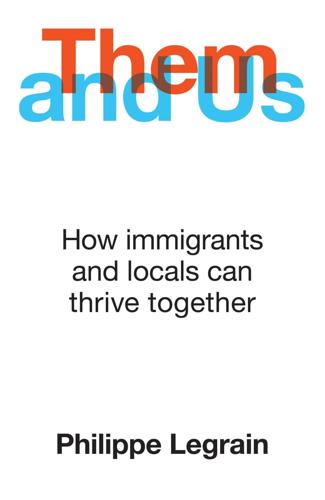
Them and Us: How Immigrants and Locals Can Thrive Together
by
Philippe Legrain
Published 14 Oct 2020
In the US, this traditionally involved a live-and-let-live approach: cultural diversity was accepted but not promoted, and it was expected that newcomers would organically become American as they and their children settled in. But since the 1960s, affirmative-action policies designed to give a leg up to the descendants of slaves and ‘native’ Americans have encouraged newcomers to continue identifying as ‘Hispanic’ or ‘Asian’ for economic reasons to benefit from preferential hiring and promotion. That, in turn, has sparked a backlash among non-beneficiaries. While affirmative-action policies may be necessary for short periods to right entrenched injustices, they become pernicious if sustained over time, since they encourage people to club together in rival groups to compete for privileges.
…
Many politicians lambaste multiculturalism for enabling or even encouraging immigrants to lead ‘parallel lives’ – which typically isn’t true – yet French-style assimilation policies have scarcely eradicated the problems of the segregated banlieue underclass. If immigrants and their children get trapped in deprived ghettoes, they suffer and feel excluded, while locals accuse them of not fitting in. That is not an argument for affirmative action, though newly arrived refugees need specific help.11 It is an argument for vigorously pursuing policies that advance equal opportunities, non-discrimination policies and social mobility for everyone in society – not just immigrants – as well as providing a pathway to citizenship for newcomers who choose to settle.

The Equality Machine: Harnessing Digital Technology for a Brighter, More Inclusive Future
by
Orly Lobel
Published 17 Oct 2022
Laws need to be adapted to support what is happening in the market. Under current discrimination law, it may be unlawful to tell an algorithm to adjust the scores of women or to institute hiring quotas. The current law on affirmative action is unsettled. For years, the quest for equality has presented a puzzle and bred tensions between different laws. Many policies to increase diversity have themselves been deemed discriminatory, labeled as unconstitutional affirmative action. Technology may help us move beyond the conundrum of wanting to be both identity conscious and identity blind. Legal scholar Pauline Kim argues that federal discrimination law should be broadened to prohibit what she terms classification bias—the use of automated classification that exacerbates inequality along the lines of sex, race, or other protected categories.39 But we’ve also seen that classification can be a way to support rather than impede inclusion.
…
What types of inputs should be allowed and what should be forbidden is a normative decision that will vary. For example, we might want to use gender and race as identifiable inputs to detect ongoing bias or to correct past wrongs. These are policy choices that we need to reexamine given evolving capabilities. Moreover, while constitutional law has limited affirmative action, digital capabilities are providing us with the advantages of precision and calibration. Unlike requirements about quotas in hiring or representation on boards, for example, algorithms can be designed to be fine-tuned. A focus on fair and equitable outcomes—as opposed to restricting inputs or constraining algorithmic learning—is likely to be the most impactful strategy most of the time.
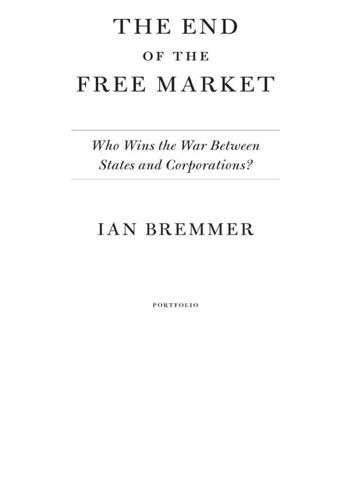
The End of the Free Market: Who Wins the War Between States and Corporations?
by
Ian Bremmer
Published 12 May 2010
But in recent years, the government has tried to address chronic development problems by spending much more on education, water, sanitation, and welfare grants. To narrow the wealth gap between white and black South Africans and to create a black middle class, it instituted a Black Economic Empowerment program, which supporters call a growth strategy and detractors label affirmative action. According to the program, all companies are required to comply with specific targets on black ownership, procurement, and employment equity.i Many government tenders give preferential treatment to BEE-compliant firms. In 2004, it scrapped plans to privatize state-owned companies like Eskom and decided instead to use them to help generate stronger growth.
…
But as in Russia, he has also embraced state control over the oil, gas, and mining resources and hasn’t hesitated to use state institutions to favor state-owned companies and privately owned favorites over foreign competitors. For forty years, Malaysia’s government has used state capitalism to serve its political interests by establishing and enforcing a kind of majority affirmative action—empowering Bumiputeras (Malays and other native ethnic groups) at the expense of commercially successful Chinese and Indian minorities. In 1969, the ruling United Malays National Organization (UMNO) capitalized on nationalist rage stirred by “race riots” between Malays and minority Chinese to create the New Economic Policy, which guarantees Bumiputeras a fixed share of Malaysia’s national wealth.
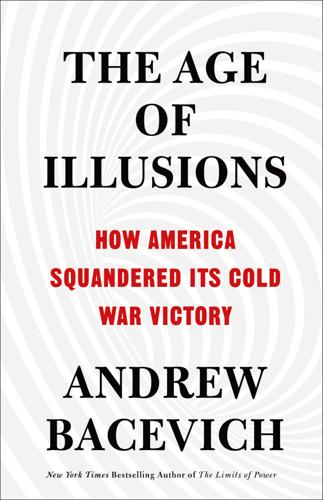
The Age of Illusions: How America Squandered Its Cold War Victory
by
Andrew J. Bacevich
Published 7 Jan 2020
Among his administration’s major initiatives were: ending military conscription in favor of a so-called all-volunteer force; creating the Environmental Protection Agency and the Occupational Safety and Health Administration; signing into law the Clean Air and Endangered Species Acts; launching the “war on cancer”; embracing “affirmative action” to promote equal employment opportunity; imposing wage and price controls in an effort to curb inflation; abandoning the gold standard; expanding social security; and increasing federal expenditures on Medicare, Medicaid, and food stamps.8 Although Nixon may have been a Republican, he routinely defied conservative orthodoxy, going so far at one point as to assert that “we are all Keynesians now.”9 Not every program Nixon initiated achieved its intended (or at least advertised) purpose.
…
INDEX The index that appeared in the print version of this title does not match the pages in your e-book. Please use the search function on your e-reading device to search for terms of interest. For your reference, the terms that appear in the print index are listed below. ABC abolition abortion Abu Ghraib Adams, John Adams, John Quincy affirmative action Afghanistan Bill Clinton and insurgency vs. Soviet Union and Afghanistan War (2001–present) Bush Jr. and Obama and Trump and Africa African Americans AIG alliances Allied Force, Operation all-volunteer force (AVF) al-Qaeda America condition of, in 2016 declining primacy of divisions in America First American Airlines American Century American Exceptionalism American Historical Association American mission.
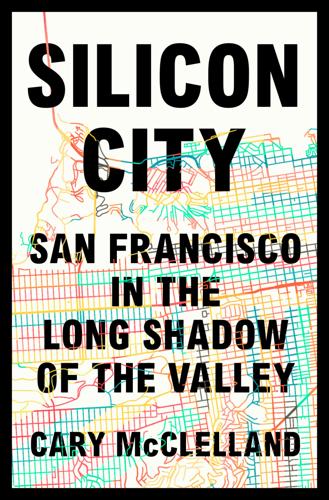
Silicon City: San Francisco in the Long Shadow of the Valley
by
Cary McClelland
Published 8 Oct 2018
If you have no orientation—whatever happens, happens—that’s a bias. I was at Stanford from 1990 to 1994. It was a really hard time to decide that racial and social justice was going to be the thing that you cared about. We had affirmative action backlash. Prop 187 passed right after I graduated—an anti-immigration bill that targeted Mexicans in particular.* And then Prop 209 shortly after that, which gutted affirmative action in public schools.† Condoleezza Rice was our provost. And so, this was the climate. I was miserable. Tons of the people who espoused this libertarian model were there at the same time. They did not have neutral opinions about politics then, and I don’t believe that they had some sort of transformational experience later on that reshaped their sense of justice.

Don't Trust Your Gut: Using Data to Get What You Really Want in LIfe
by
Seth Stephens-Davidowitz
Published 9 May 2022
Sacerdote’s study: Bruce Sacerdote, “How large are the effects from changes in family environment? A study of Korean American adoptees,” The Quarterly Journal of Economics 122(1) (2007): 119–57. gave Jared a stake in his lucrative real estate business: Andrew Prokop, “As Trump takes aim at affirmative action, let’s remember how Jared Kushner got into Harvard,” Vox, July 6, 2018, https://www.vox.com/policy-and-politics/2017/8/2/16084226/jared-kushner-harvard-affirmative-action. randomized controlled trial on breastfeeding: Michael S. Kramer et al., “Effects of prolonged and exclusive breastfeeding on child height, weight, adiposity, and blood pressure at age 6.5 y: Evidence from a large randomized trial,” American Journal of Clinical Nutrition 86(6) (2007): 1717–21.

The Meritocracy Trap: How America's Foundational Myth Feeds Inequality, Dismantles the Middle Class, and Devours the Elite
by
Daniel Markovits
Published 14 Sep 2019
(Other strands take a much more elitist, and even oligarchic line.) intelligence or academic ability: See, e.g., Lani Guinier, The Tyranny of the Meritocracy (Boston: Beacon, 2015), 21, and Richard D. Kahlenberg, “Affirmative Action for the Rich,” New York Times, May 10, 2013, accessed June 14, 2018, www.nytimes.com/roomfordebate/2011/11/13/why-do-top-schools-still-take-legacy-applicants/affirmative-action-for-the-rich . skill or talent: See, e.g., Lauren Rivera, Pedigree: How Elite Students Get Elite Jobs (Princeton, NJ: Princeton University Press, 2015), 15–25. Hereafter cited as Rivera, Pedigree. See also Bourree Lam, “Recruitment, Resumes, Interviews: How the Hiring Process Favors Elites,” Atlantic, May 27, 2015, accessed June 14, 2018, www.theatlantic.com/business/archive/2015/05/recruitment-resumes-interviews-how-the-hiring-process-favors-elites/394166/ [inactive].
…
These divisions cumulate to compose a distinctive elite worldview, which separates the natural instincts and imaginative understandings of rich Americans from those of the rest. This worldview combines traditionally progressive ideals concerning privacy, diversity, and pluralism with traditionally conservative ideals concerning work, productivity, and individual responsibility. The rich are more likely than the rest to favor same-sex marriage, women’s rights, and affirmative action and to oppose school prayer and law-and-order policing, and they are more likely than the rest to favor low taxes and free trade, and to oppose social spending and labor unions. The worldview reflects what one commentator calls a “greater attraction of the free market to the affluent”—including both the free market’s indifference to religion and moralism and its hostility to government regulation and redistribution.
…
Espenshade, Chang Y. Chung, and Joan L. Walling, “Admission Preferences for Minority Students, Athletes, and Legacies at Elite Universities,” Social Science Quarterly 85, no. 5 (December 2004): 1422–46, 1443, Figure 1. See also Douglas S. Massey and Margarita Mooney, “The Effects of America’s Three Affirmative Action Programs on Academic Performance,” Social Problems 54, no. 1 (2007): 99–117, 100 (“The only comprehensive study of all [preferential admissions] that has sought to control for variation in qualifications is that of Espenshade and associates (2004).”) the entire bottom half: See Chapter 5.
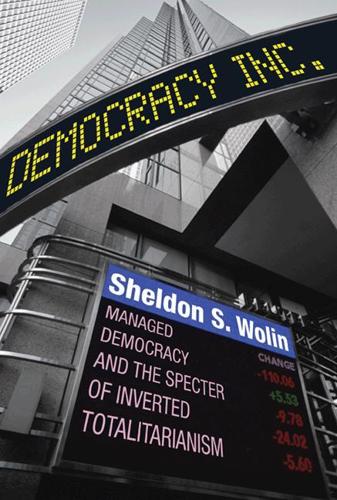
Democracy Incorporated
by
Sheldon S. Wolin
Published 7 Apr 2008
The new ideology can be fairly described as totalizing and unapologetic for its absolutism. Its targets were not confined to Democratic politicians but included a wide range of matters: education, morality, religion, and popular culture. The great evil was “relativism,” the favorite remedy “discipline.” They charged that liberal relativism, permissiveness (= moral laxity), affirmative action, and secularism were softening the national will, mocking ideals of loyalty and patriotism, and in the process undermining national unity in the global struggle with Soviet communism. To describe Republicanism as a dynamic party is to say that the party succeeded in organizing and focusing powers that challenge limits, be they limits regarding church and state, presidential powers, environmental protections, the distinctions between public and private, the protections for civil liberties, the observance of treaties, or respect for local markets.
…
When presidents sign a congressional bill into law, it has sometimes been the practice of a president to attach a statement in which he may indicate his understanding of the intention of the bill. President Bush, however, has taken that practice and converted it into a sweeping claim that he can ignore provisions of a bill with which he disagrees. On this basis he has claimed the authority to ignore congressional attempts to regulate the military, affirmative action provisions, requirements that he report to Congress about immigration service problems, whistle-blower protections, and safeguards against political interference in federally funded research. He has asserted that he does not have to obey congressional laws forbidding U.S. troops to engage in combat in Colombia; or laws requiring him to inform Congress when he diverts money to start secret operations; or laws prohibiting the military from using intelligence unlawfully collected.
…
Despite the Higher Costs,” New York Times, August 20, 2006, A-12. Index abolitionism, 257–58, 277 abortion debate, 62, 115 Abramoff, Jack, 119, 323n2 academia. See educational institutions Acheson, Dean, 301n70 Adams, John, 154, 255–56 advertising, 12–13, 118. See also media affirmative action, 224, 236 Afghanistan, 193 African Americans, 57–58, 101, 181, 197, 228, 277 Albright, Madeleine, 236 Alcibiades, 172–73, 282–83 Aldridge, Edward C., Jr., 313n16 Alien and Sedition laws of 1798, 78 Alito, Samuel, 146, 236, 323n2 American colonies, 150–51, 254, 255 American Political Science Association (APSA), Toward a More Responsible Two-Party System, 188–89 American Revolution, 154, 155, 219, 227 Anti-Ballistic Missile Treaty, 89 antidemocracy, xx-xxi, 150, 212–13, 239, 241 The Apprentice (television series), 144 archaism, 117–21, 122–23, 124, 125–26, 169, 201 Archer Daniels Midland, 138, 185 aristocracy, 97, 151, 162, 174, 183, 219, 248, 251, 253, 256, 269.

More Everything Forever: AI Overlords, Space Empires, and Silicon Valley's Crusade to Control the Fate of Humanity
by
Adam Becker
Published 14 Jun 2025
.… Too few of the best people are here, and far too many people who do not belong are also here, ruining the place. The culprit is MIT’s admissions policy, especially its policy of affirmative action.”133 A few years later, the Extropian email list discussed this pamphlet and a student op-ed decrying it. “This is not a statement of racist hate,” one of the Extropians wrote. If anything, they said, the author of the op-ed was harboring “hatred toward white males.” The real problem, they claimed, was affirmative action, not racism and sexism. “This is the standard reaction you see in Boston among protected groups, if you try to point out that the playing field is slanted, its [sic] you who gets labeled a racist.”134 The Extropian email list was rife with this attitude—and worse.
…
.… The book’s inadequate and biased treatment of data display its primary purpose—advocacy.”131 Indeed, Burt, Jensen, Herrnstein, and Murray all had ready-made political and social policies as solutions to the nonexistent problems they were so concerned about, ranging from Burt’s eugenics proposals to Herrnstein and Murray’s arguments against affirmative action, welfare, and Head Start. Yet their justification for these proposals stood on little more than specious reasoning and a misplaced faith in statistical artifacts like g. There are certainly differences in ability in various areas from person to person, but there’s no monolithic trait that explains all or even most of those differences.
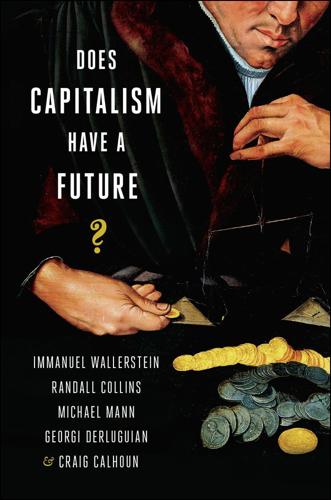
Does Capitalism Have a Future?
by
Immanuel Wallerstein
,
Randall Collins
,
Michael Mann
,
Georgi Derluguian
,
Craig Calhoun
,
Stephen Hoye
and
Audible Studios
Published 15 Nov 2013
To mention only a few: Religion—at present, contention most vehemently between militant Islamists and their opponents (Christians; Hindus; secularists of the post-Christian West; the post-Communist successor states, etc.); not ruling out the possibility of other axes of religious conflict in the future. Race/ethnicity/national identity—conflicts ranging among struggles over distribution of the spoils of office, quotas and government regulation of ethnic access to resources (affirmative action, etc.), policing borders against immigration, exclusion of immigrants, territorial disputes, and ethnic wars. But also movements to promote interethnic harmony or integration, which may be opposed in turn by movements seeking the particularistic ends listed in the previous sentence. There are also a host of transient issues that take up most of the political attention space most of the time.
…
After the futuristic decade of the 1920s, the Bolsheviks would also recycle as new mass culture the classical music, ballet, and literature inherited from the imperial intelligentsia. The Stalinist state had indeed ended up looking imperial in many respects. Yet the ability of the U.S.S.R. to integrate its numerous nationalities for almost three generations was arguably progressive and modernistic. The Soviets pioneered affirmative action and then proved by development and broad inclusion that they really meant it. At the time many observers, friend and foe alike, tended to agree that these achievements based on economic planning and the abolition of private property in sum amounted to socialism. The key Soviet features were emulated or reinvented by a broad variety of developmentalist and nationalist regimes because such a concentration of state powers appeared extraordinarily successful for the duration of twentieth century.

Evil by Design: Interaction Design to Lead Us Into Temptation
by
Chris Nodder
Published 4 Jun 2013
An ongoing class action lawsuit against Bookspan (the company behind Book of the Month club) claims that: Nowhere on the face of the 25 pages of the Clubs' multi-step registration process does it disclose any the following: (1) that there is a purchase requirement; (2) the timeframe in which those purchases must take place (3) the cost per item to fulfill the purchase requirement; (4) the penalties for failing to fulfill any purchase requirement; (5) that "featured selections" will be automatically sent on a periodic basis; (6) that affirmative action will be required to stop the shipments and prevent a consumer from being charged; and (7) the actual cost of any "featured selections.” … a consumers' purported assent to the Membership Agreement occurs on a page prior to and separate from the credit card submission page, an intentional design meant to decrease the number of prospective consumers who will actually attempt to read the Membership Agreement.
…
As you know, elected officials are held to high standards in public life. Here are some reasons people are giving to vote against Dan Morales for Attorney General. Please tell me if each statement makes you much more likely to vote against Dan Morales, somewhat more likely to vote against Dan Morales, or if it makes no difference at all? Morales supports affirmative action. Morales supports gun control. Morales' political campaign purchased two tickets to a fundraiser for Louis Farrakhan's Nation of Islam organization. Juvenile crime has increased by one-third in Texas since Morales became Attorney General. Conservative political groups rate Morales as a liberal Democrat.
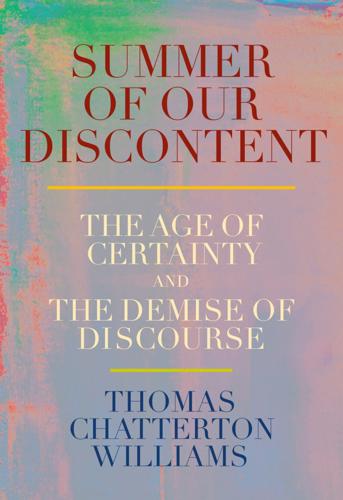
Summer of Our Discontent: The Age of Certainty and the Demise of Discourse
by
Thomas Chatterton Williams
Published 4 Aug 2025
“Some higher education institutions have required new employees to sign statements supporting their personal commitments to D.E.I. principles, a litmus test that could have the effect of creating a uniform campus culture without a variety of viewpoints,” the editorial board wrote. “One 2021 survey found that 19 percent of college jobs required these statements. Last year, The Times wrote about a noted psychology professor (and affirmative-action supporter) who lost a chance to teach at U.C.L.A. because he disagreed with the usefulness of required diversity statements, calling them ‘value signaling.’ ” “When States Try to Take Away Americans’ Freedom of Thought,” New York Times, Jan. 20, 2024. *17 “Gary Garrels, the senior curator of painting and sculpture at the San Francisco Museum of Modern Art, has resigned following an uproar from employees over his comments at a recent staff meeting,” a July 2020 article on Artnet reported.
…
There is no French Robin DiAngelo, and a journalist of the stature and integrity of James Bennet could never be scapegoated in France for the crime of publishing an insensitive opinion. Representation is far from a mainstream obsession. Outside a sole prestigious school, Sciences Po, in Paris, affirmative action is scarcely ever practiced. Perhaps because of comparatively muscular labor laws (which Macron has moved to weaken), people do not live in constant fear of cancellation for controversial speech or any other transgression, either in university or in the workplace, and even the #MeToo movement could not gain traction in a country whose major left-leaning newspapers published unequivocal, star-studded defenses of pedophilia as recently as the late 1970s.[*4] When it comes to the American culture war staples like newfangled pronouns and genderless bathrooms—which alongside race are definitional to “wokeness”—there is little patience here for the embellishment of personal self-presentation.
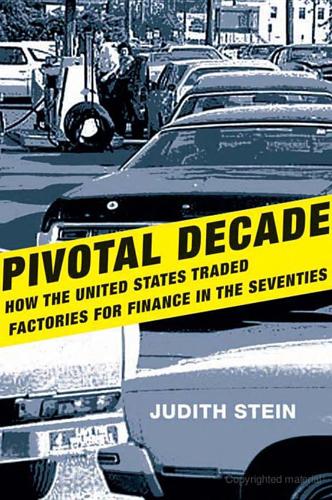
Pivotal Decade: How the United States Traded Factories for Finance in the Seventies
by
Judith Stein
Published 30 Apr 2010
THE DEMOCRATS Nearly all states now held primaries, completing the reforms begun by the McGovern Commission. The smooth Robert Strauss, chair of the Democratic National Committee, salved the divisions of 1968 and 1972. Strauss deftly empowered party and elected officials but retained the inclusion rules, now governed by affirmative action, not quotas. For the first time, campaigns were governed by a new finance law that had been passed in 1974. The U.S. Treasury gave $21.8 million to each of the two major party candidates, provided that they spent no more. It also matched the offerings of small contributors to candidates running in the presidential primaries.
…
The same was true in the civil service, the one urban sector where employment was increasing. Blacks armed with new antidiscrimination laws mobilized to challenge older political and recruitment practices. Black issues had been addressed separately during the 1960S. Whether it was the War on Poverty, affirmative action, or jobs for ghetto residents, the government acted as if, in the words of the Kerner Commission 1968 report on the causes of U.S. race riots, the U.S. was two societies, black and white, poor and affluent. Although only 30 percent of the poor in 1964 were African American, 47.9 percent of nonwhite Americans were poor, compared with 14.2 percent of whites.11 People disputed the origin of this difference.
…
Margaret Weir, Politics and Jobs: The Boundaries of Employment Policy in the United States (Princeton: Princeton University Press, 1992), 86. 12. Kent B. Germany, New Orleans After the Promises: Poverty, Citizenship, and the Search for the Great Society (Athens: University of Georgia Press, 2007). 13. John David Skretny, The Ironies of Affirmative Action: Politics, Culture, and Justice in America (Chicago: University of Chicago Press, 1996), 90. 14. Judith Stein, Running Steel, Running America: Race, Economic Policy, and the Decline of Liberalism (Chapel Hill: University of North Carolina Press, 1998), 125. 15. Joyce A. Hughes to Vernon Jordan, Aug. 6, 1975, III, file 6, box 173, National Urban League papers, Library of Congress, Washington, D.C. 16.
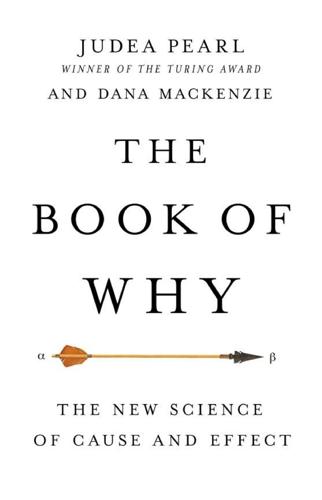
The Book of Why: The New Science of Cause and Effect
by
Judea Pearl
and
Dana Mackenzie
Published 1 Mar 2018
The data hinted at reverse discrimination against males, and in fact there was explicit evidence of this: “In most of the cases involving favored status for women it appears that the admissions committees were seeking to overcome long-established shortages of women in their fields,” Bickel wrote. Just three years later, a lawsuit over affirmative action on another campus of the University of California went all the way to the Supreme Court. Had the Supreme Court struck down affirmative action, such “favored status for women” might have become illegal. However, the Supreme Court upheld affirmative action, and the Berkeley case became a historical footnote. A wise man leaves the final word not with the Supreme Court but with his wife. Why did mine have such a strong intuitive conviction that it is utterly impossible for a school to discriminate while each of its departments acts fairly?

The Future Is Asian
by
Parag Khanna
Published 5 Feb 2019
Fact Sheet,” Sept. 8, 2017, http://www.pewsocialtrends.org/fact-sheet/asian-americans-chinese-in-the-u-s/; United States Census Bureau, “Los Angeles County a Microcosm of Nation’s Diverse Collection of Business Owners, Census Bureau Reports,” Dec. 15, 2015, https://www.census.gov/newsroom/press-releases/2015/cb15-209.html. 10 López, Ruiz, and Patten, “Key Facts About Asian Americans.” 11 Shalene Gupta, “Big Fat Indian Weddings Get Bigger and Fatter,” Fortune, Aug. 8, 2014, http://fortune.com/2014/08/08/indian-weddings/. 12 Sari Horwitz and Emma Brown, “Justice Department Plans New Project to Sue Universities over Affirmative Action Policies,” Washington Post, Aug. 1, 2017, https://www.washingtonpost.com/world/national-security/justice-department-plans-new-project-to-sue-universities-over-affirmative-action-policies/2017/08/01/6295eba4-772b-11e7-8f39-eeb7d3a2d304_story.html?noredirect=on&utm_term=.808b27e06276. 13 Vivek Wadhwa, “The Face of Success, Part I: How the Indians Conquered Silicon Valley,” Inc., Jan. 13, 2012, https://www.inc.com/vivek-wadhwa/how-the-indians-succeeded-in-silicon-valley.html. 14 Ibid. 15 Jane Ciabattari, “Why Is Rumi the Best-Selling Poet in the US?
…
The emerging emphasis on STEM (science, technology, engineering, and mathematics) education in the United States is due in part to a recognition of the competitive achievements of Asian societies in science as well as the demands of Asian parents in the United States. So, too, is the rising academic stress manifest in the elevated teen suicide rate. Asians’ superior academic standing in college admissions has generated major lawsuits against prestigious universities such as Harvard, with aggrieved whites claiming that Asians benefit from affirmative action policies that whites now seem to need to guarantee sufficient representation in universities and Asians demanding that admissions criteria be more meritocratic rather than artificially limiting their enrollment through racial quotas.12 It is safe to say that Silicon Valley would not be what it is today without Asians.
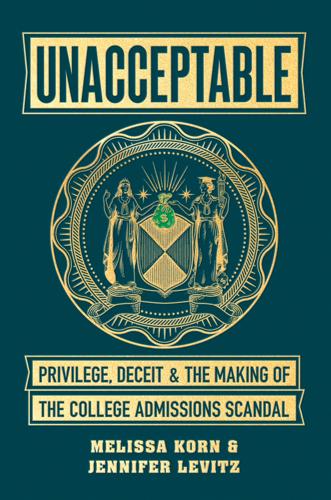
Unacceptable: Privilege, Deceit & the Making of the College Admissions Scandal
by
Melissa Korn
and
Jennifer Levitz
Published 20 Jul 2020
In its 2015 report summarizing its review of admissions at UT Austin, Kroll didn’t find any quid pro quo exchanges or things that veered into illegal territory, but what was happening still didn’t seem entirely kosher, the report’s authors determined. Existing policies, the company warned, could lead to “affirmative action for the advantaged” as the president, deans, and others flagged prospects of special interest and encouraged or pressured the admissions office to take their recommendations. Bill Powers, who had been president at the flagship campus since 2006—and is not the same Bill Powers who introduced Doug Hodge to Rick Singer—acknowledged intervening in admissions decisions at the request of regents and others.
…
Playing soccer sophomore year isn’t enough; admissions officers expect to see an application chock-full of references to the sport—tournament trophies, race times, essays about hours they spent sacrificing social lives and physical health to compete. But with most sports losing money for schools, why bend over backward to favor athletes at all? Critics say the practice only serves as a sort of affirmative action for wealthy applicants. Elite club programs, camps, and showcases that get teens in front of collegiate coaches easily run into the thousands of dollars. Lift tickets and country club memberships aren’t cheap. Then, there’s the racial disparity. About 65 percent of all students who participate in NCAA sports are white, higher than the overall student population.
…
He also liked the idea: Toby Macfarlane’s sentencing memo. Document 335, filed November 8, 2019, in USA v. Macfarlane, case no. 19-cr-10131-NMG. “Our sports teams engender pride”: March 15, 2019, email to Yale community from President Peter Salovey. Critics say the practice only serves: Saahil Desai, “College Sports Are Affirmative Action for Rich White Students,” The Atlantic, October 23, 2018, https://www.theatlantic.com/education/archive/2018/10/college-sports-benefits-white-students/573688/. About 65 percent of all students: NCAA Demographics Search, 2018, Search by Gender and Diversity, http://www.ncaa.org/about/resources/research/ncaa-demographics-search.

Open: The Story of Human Progress
by
Johan Norberg
Published 14 Sep 2020
It found that 37 per cent of students think it can be acceptable to shout down controversial speakers and as many as 10 per cent of students think it can be acceptable to use violence to prevent someone from speaking.60 On some campuses necessary work against discrimination of minority groups has turned into a contest about who can turn the most innocent difference of opinion into evidence of hate and oppression. Having another understanding of the economy or of affirmative action can be enough to be attacked. This is not strange. Such purging of dissent always happens when a homogenous group establishes an orthodoxy. But if universities want to continue to be a place for open inquiry, they must make sure not to play along. ‘Both teachers and learners go to sleep at their post as soon as there is no enemy in the field,’ John Stuart Mill observed.61 Fortunately, some universities are beginning to take a stand, some by embracing the ‘Chicago principles’ of free speech, declaring that ‘concerns about civility and mutual respect can never be used as a justification for closing off discussion of ideas, however offensive or disagreeable those ideas may be to some members of our community’.
…
This is the idea that equal status contact between individuals from different groups, especially if it is in pursuit of a common goal, reduces antagonism. Cult leaders try to isolate their followers from outside influences precisely because they don’t want their own control and group loyalty ruined by contact with the outside world. This was a very influential theory that contributed to decisions like affirmative action and bussing students to other schools to reduce segregation. A 2018 review found twenty-seven high-quality studies on the contact hypothesis, and twenty-four of them revealed positive effects on prejudice reduction.49 However, those studies only looked at very specific situations, to fit the conditions Allport thought were needed.
…
INDEX Abbasid Caliphate (750–1258), 6, 136–7, 138, 169, 353 abortion, 113 absolutist monarchies, 154, 155, 170, 182, 185 Academy Awards, 82 Accenture, 375 accountants, 41 Acemoglu, Daron, 185, 187, 200 Achaemenid Empire (550–330 BC), 86–7, 88, 249 Acton, Lord, see Dalberg-Acton, John Adams, Douglas, 295 Adobe, 310 Advanced Research Projects Agency (ARPA), 306 Aeschylus, 132 affirmative action, 244 Afghanistan, 70, 345 Age of Discovery, 177 agriculture, 39–40, 42, 74, 171, 263 Akbar I, Mughal Emperor, 98 Akkadian Empire (c. 2334–2154 BC), 42 Alaska, 76 Albania, 54 Albertus Magnus, Saint, 145 d’Alembert, Jean-Baptiste le Rond, 154 Alexander III ‘the Great’, Basileus of Macedon, 87–9 Alexandria, Egypt, 134 algae, 332 algebra, 137 Alibaba, 311 Allport, Gordon, 244–5 Almohad Caliphate (1121–1269), 137–8 alpha males, 227–8, 229 Alphaville, 245 altruism, 216 Amalric, Arnaud, 94 Amazon, 275, 311 America First, 19, 272 American Civil War (1861–5), 109 American Declaration of Independence (1776), 103, 201, 202 American Revolutionary War (1775–83), 102–3, 200–201 American Society of Human Genetics, 76–7 Americanization, 19 Amherst, William, 1st Earl Amherst, 176–7 amphorae, 48 Amsterdam, Holland, 150, 152, 153 An Lushan Rebellion (755–63), 352 anaesthesia, 279, 296 anagrams, 83 Anatolia, 42, 74 Anaximander, 127 Anaximenes, 127 al-Andalus (711–1492), 97, 137–9, 140 Andromeda, 88 Anglo–French Treaty (1860), 53–4 Anhui, China, 315 anti-Semitism, 11, 94–7, 109, 220, 233, 251, 254, 255 anti-Semitism, 254–5, 356 Antonine Plague (165–80), 77 Antoninus Pius, Roman Emperor, 91 Apama, 88 Appiah, Kwame Anthony, 5 Apple, 82, 195, 304, 311, 319 Apuleius, 89 Arab Spring (2011), 10, 342 Arabic numerals, 70, 137, 156 Arabic, 136, 137, 140 archaeology, 21–2, 31, 32, 38, 43, 50, 51 Archer Daniels Midland, 329 Aristides, Aelius, 48 Aristophanes, 129, 131, 132 Aristotle, 130–31, 132, 137, 141–6, 161 Armenians, 136, 220 ARPAnet, 306 Art Nouveau, 198 art, 198 Artaxerxes III, Persian Emperor, 87 Ashkenazi Jews, 99 Ashoka, Mauryan Emperor, 53 Assyria (2500–609 BC), 248–9 Assyrian Empire (2500–609 BC), 41, 43, 86 astronomy, 80, 145–6, 150 Atari, 304 Athens, 47, 53, 89, 90, 131, 134 Atlas Copco, 65 Augustine of Hippo, 133, 139 Australia, 50–53, 76, 262 Australopithecus afarensis, 24–5 Austria, 1, 150, 151, 190 Austria-Hungary (1867–1918), 179, 254 Battle of Vienna (1683), 237, 238 Habsburg monarchy (1282–1918), 151, 179, 190, 237 migration crisis (2015–), 342 Mongol invasion (1241), 95 Nazi period (1938–45), 105 Ötzi, 1–2, 8–9, 73, 74 Thirty Years War (1618–48), 150 Authoritarian Dynamic, The (Stenner), 343 authoritarianism, 4, 14, 220, 343–61, 363, 379 democracy and, 357 economics and, 346–51 exposure to difference and, 242 innovation and, 318 insecurity and, 338, 342, 378 media and, 346–9 nostalgia and 351–4 predisposition, 220, 343–6 populism and, 325, 350–51 scapegoats and, 355–6 science and, 161–3 automatic looms, 179 automation, 63, 312–13 Averroes, 137–8, 143, 144, 145 Aztec Empire (1428–1521), 55 Bab-el-Mandeb Strait, 75 baby-boom generation (1946–64), 294, 340 Babylon, 39, 86–7 Babylonia (1895–539 BC), 39, 42, 43, 86–7, 128, 131, 249, 267 Bacon, Francis, 147, 156, 165–6, 201 bad news, 322 Baghdad, 70, 136, 353 Bahrain, 42 Bailey, Ron, 11 Bailyn, Bernard, 201 balance of trade, 59–60 Banda Islands, 100 Bangladesh, 270 Bannon, Steve, 14, 108 Barcelona, Catalonia, 320 Basel, Switzerland, 152 Battle of Vienna (1683), 237, 238 Bayezid II, Ottoman Sultan, 98 Bayle, Pierre, 158 Beginning of Infinity, The (Deutsch), 332 Behavioural Immune System, 222 Beirut, Lebanon, 236 benefit–cost ratio, 60, 61, 62 Berges, Aida, 80 Bering land bridge, 76 Berkeley, see University of California, Berkeley Berlin Wall, fall of (1989), 10, 340, 341, 363, 364 Berners-Lee, Timothy, 307–8 Bernstein, William, 42 Berossus, 267 Better Angels of Our Nature, The (Pinker), 243 Beveridge, William, 59 Béziers, France, 94 Bezos, Jeffrey, 274, 275–6, 277 Bi Sheng, 171 Bible, 46, 72, 248–50, 296 bicycles, 297 de Biencourt, Charles, 189 Big Five personality traits, 7 Black Death (1346–53), 77, 139, 208, 356, 352, 356 Blade Runner, 334 Bletchley Park, Buckinghamshire, 124–6 Blue Ghosts, 236 Bohr, Niels, 105 Bolt, Beranek and Newman (BBN), 307 bonobos, 226–7 Book of Jonah, 248–50 Borjas, George, 116 Boston, Massachusetts, 122, 223 Boudreaux, Donald, 62, 270 Boulton, Matthew, 194 Bowles, Samuel, 216 Boym, Svetlana, 288 Brandt, Willy, 364 Brewer, Marilynn, 247 Brexit (2016–), 9, 14, 118, 238, 240–41, 349, 354, 379 Brezhnev, Leonid, 315 Britain, 169, 181–99 Acts of Union (1707), 101, 194 Afghanistan War (2001–14), 345 Amherst Mission (1816), 176–7 anti-Semitism in, 254 arts, 198 Bletchley Park, 124–6 Brexit (2016–), 9, 14, 118, 238, 240–41, 349, 354, 379 Cheddar Man, 74 Cobden–Chevalier Treaty (1860), 53–4 coffee houses, 166 colonies, 84, 191, 194, 200 Corn Laws repeal (1846), 53, 191 creative destruction in, 179 crime in, 119, 120 Dutch War (1672–4), 101 English Civil War (1642–1651), 148, 183, 184, 201 Glorious Revolution (1688), 101, 185–8, 190, 193 hair powder tax (1795), 72 immigration in, 113, 115, 118, 119, 120, 193–4 Industrial Revolution, 188–99, 202 innovation in, 53, 189–90 Internet, development of, 307–8 Iraq War (2003–11), 345 Levellers, 183–4, 186 literacy in, 188, 198 literature, 188–9 London Bridge stabbings (2019), 120 London 7/7 bombings (2005), 341 Macartney Mission (1793), 176 Magna Carta (1215), 5 monopolies, 182 MPs’ expenses scandal (2009), 345 Muslim community, 113 Navigation Acts, 192 nostalgia in, 294 open society, 169, 181–2, 195–9 patent system, 189–90, 203, 314 Peasants’ Revolt (1381), 208 political tribalism in, 238, 240–41 poverty in, 256 railways in, 297 Royal Society, 156, 157, 158, 196, 296 ruin follies, 286–7 slavery, abolition of (1807), 182, 205 smuggling in, 192 Statute of Labourers (1351), 208 United States, migration to, 104 West Africa Squadron, 205 Whig Party, 185, 201 World War II (1939–45), 124–6 British Broadcasting Corporation (BBC), 135 Bronze Age (c. 3300–600 BC) Late Bronze-Age Collapse (1200–1150 BC), 44, 49, 54 migration to Europe, 74–5 Phoenician civilization, 43–6, 49, 70 Sumerian civilization, 42–3 Brotherton, Rob, 322 Brown, Donald, 219, 283 Bruges, Flanders, 208 Bruno, Giordano, 150 Bryn Mawr College, 201 Buddhism, 96, 149, 352 Bulgaria, 73, 342 Bureau of Labor Statistics, US, 65 Burke, Edmund, 152, 292 Bush, George Walker, 328 ByteDance, 318 Byzantine Empire (395–1453), 94, 134, 135, 155, 224 California Gold Rush (1848–1855), 104 Calvin, John, 149 Calvinism, 6, 99, 153, 356 Canada, 235, 258 Caplan, Bryan, 258 Caracalla, Roman Emperor, 91 Carbon Engineering, 332 Cardwell, Donald, 10 Cardwell’s Law, 10 Carlson, Tucker, 82, 302 Carlyle, Thomas, 206 Carthage (814–146 BC), 45 Caspian Sea, 75 Cathars, 94, 142 Catherine II, Empress of Russia, 154 Catholicism, 208 in Britain, 101, 185–6, 191 Crusades, 94, 138 in Dutch Republic, 99 exiles and, 153 in France, 154 Jews, persecution of, 97–8, 100, 106, 140, 233 Inquisition, 94, 97, 98, 100, 143, 150 in Italy, 6, 169 Muslims, persecution of, 97, 106, 233 Papacy, 102, 142, 143, 152, 155, 178, 237 in Rwanda, 230–31 in United States, 102, 104, 108, 254 values and, 114 Cato’s Letters (Trenchard and Gordon), 201 Celts, 89, 289 Central Intelligence Agency (CIA), 313 Ceres, 89 Cerf, Vinton, 307 CERN (Conseil européen pour la recherche nucléaire), 306, 307 chariot racing, 224 Charles I, King of England, Scotland and Ireland, 148, 179, 183 Chávez, Hugo, 354 Chechen War, Second (1999–2009), 354 Cheddar Man, 74 cheongsam dresses, 73 Chesterton, Gilbert Keith, 286, 300 Chicago principles, 164–5 Chicago, Illinois, 202 child mortality, 168–9 Child, Josiah, 184 children, 26 chimpanzees, 24, 25, 32, 36, 226–7, 228 China, 4, 5, 6, 13, 84, 270, 314–18 Amherst Mission (1816), 176–7 An Lushan Rebellion (755–63), 352 Antonine Plague (165–80), 77 authoritarianism, 4, 162–3, 175, 318, 325, 343 budget deficits, 60 cheongsam dresses, 73 Confucianism, 129, 149, 169, 176 COVID-19 pandemic (2019–20), 4, 11–12, 162–3 Cultural Revolution (1966–76), 355 dictatorships, support for, 367 dynamism in, 315–18 ethnic groups in, 84 Great Wall, 178 industrialization 169, 172–3, 207 intellectual property in, 58 kimonos, 73 literacy in, 148 Macartney Mission (1793), 176 Ming dynasty (1368–1644), 54, 148, 175, 177–8, 179, 215 national stereotypes, 235, 236 overcapacity in, 317 paper, invention of, 136 private farming initiative (1978), 315–16 productivity in, 317 poverty in, 273, 316 Qing dynasty (1644–1912), 148, 149, 151, 153, 175–7, 179, 353 Reform and Opening-up (1979–), 4, 53, 56, 315–16 SARS outbreak (2002), 162 science in, 4, 13, 70, 153, 156, 162–3, 169–73, 269 Silk Road, 171, 174, 352 Song dynasty (960–1279), 53, 169–75 state capitalism in, 316–17 Tang dynasty (618–907), 84, 170, 177, 352 Taoism, 129, 149 trade barriers, 59 United States, migration to, 104, 109, 254 United States, trade with, 19, 57, 58–9, 62–3, 64 WTO accession (2001), 63 Yuan Empire (1271–1368), 174–5 Zheng He’s voyages (1405–33), 177–8 Chinese Exclusion Act (1882), 254 Christensen, Clayton, 305 Christianity, 46, 70, 96, 129 Bible, 46, 72, 248–50, 296 in Britain, 101 Calvinism, 6, 99, 149, 153, 356 Cathars, 94, 142 clash of civilizations narrative, 237 Crusades, 94, 138 Catholicism, see Catholicism Dominican order, 356 in Dutch Republic, 99 economic hardship and, 359 fundamentalism, 133–5, 149 Great Awakening (1730–55), 102 Great Vanishing, 134–5 Inquisition, 97, 98, 100 Jews, persecution of, 95, 96, 97 Lutheranism, 99, 356 in Mongol Empire, 96 Old Testament, 46, 72 orthodox backlash, 149–50 Orthodox Church, 155 Papacy, 102, 142, 143, 152, 155, 178, 233 Protestantism, 99, 104, 148, 149, 153, 169, 178 Puritanism, 99, 102 Rastafari and, 72 Reformation, 148, 155 in Roman Empire, 90, 93–4 science and, 133–5, 141–6, 149–50 Thirty Years War (1618–48), 97 tribalism and, 230–31, 246 zero-sum relationships and, 248–50 Chua, Amy, 84 Cicero, 141 Cilician, Gates, 42 cities, 40, 79, 140 division of labour in, 40 immigration and, 114, 250 innovation and, 40, 53, 79, 140, 145, 172, 287 liberalism and, 339 Mesopotamia, 37–43 open-mindedness and, 35 productivity and, 40, 98 tradition and, 287, 291 turtle theory and, 121–2 civic nationalism, 377–8 civil society, 6, 199, 253, 358, 363 clash of civilizations narrative, 237, 362–3, 365–6 ‘Clash of Civilizations?’

The Code: Silicon Valley and the Remaking of America
by
Margaret O'Mara
Published 8 Jul 2019
The charmed circle became so homogeneous by the late 1990s that Valley firms attracted the attention of federal officials for their failures to properly ensure diversity. Anyone with a federal contract had to adhere to affirmative action guidelines, and tech was missing the mark. “Being the fastest-growing software company ever, we shot past the mark that the government sets down for putting an affirmative action plan in place,” countered Bob Sundstrom, whom Netscape belatedly hired as its manager of diversity programs after it was rapped on the knuckles for its failures. Apple had to pay over $400,000 in back pay to fifteen black workers who were rejected for jobs.
…
Nearby suburbs filled with Lockheed men and their wives and children, further skewing the Valley’s demographics toward the white, the middle class, and the college educated. Plenty of blue-collar workers found jobs in Sunnyvale as well; like the other electronics firms of the era, Lockheed had assembly lines alongside its research labs. But the lack of diversity carried through even in jobs that didn’t require an engineering degree. In an era before affirmative action, Lockheed and the other major electronics firms of the Valley had no pressure to recruit minority or female employees. Even after the enactment of federal minority hiring laws that required contractors like Lockheed to meet certain hiring targets, the percentage of Latino, Asian, and black workers at its Sunnyvale facility only reached 10 percent.
…
For the remainder of his undergraduate years and as a Stanford law student immediately after, Thiel focused his considerable intellectual energies on the Review, making its libertarian-conservative views an inescapable feature of campus life as a fresh, even more polarizing battle erupted: the war over the undergraduate curriculum. The “canon wars” blazed hotly on many elite American campuses in the mid-1980s, as students and faculty demanded—and won—a more inclusive, multicultural approach to humanistic education. Civil rights and affirmative action victories of the 1960s had resulted in far more diversity on campus; people of color now made up one-third of the Stanford student body. But as access to college enlarged, so did what one national periodical primly called “public concern about student ignorance.” Bestsellers like E. D. Hirsch’s Cultural Literacy and Allan Bloom’s The Closing of the American Mind bemoaned the state of American higher education, turning academic debates about what went on the syllabus into a flashpoint of the 1980s culture wars.18 This swirl was escalating on Stanford’s campus by the time Thiel founded what he called “a forum for rational debate” in the Review, and its eventual heat and velocity—coming right on the heels of the headline-making fight over the Reagan library—made Stanford’s canon wars national news.
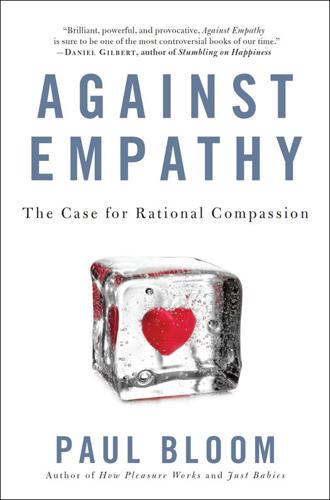
Against Empathy: The Case for Rational Compassion
by
Paul Bloom
But there are by now countless studies looking at political orientation and asking people whether they are liberal or conservative, and it turns out that this sort of crude assessment works just fine at predicting all sorts of specific views. For instance, one study asked people about the following five issues: • Stricter gun control laws in the United States • Universal health care • Raising income taxes for persons in the highest income-tax bracket • Affirmative action for minorities • Stricter carbon emission standards to reduce global warming If you are American or European, you’ll have strong intuitions about which positions on these issues correspond to the liberal side and which to the conservative side, and you’ll be right. Moreover, these views hang together; people who approve one of them tend to approve the others; people who oppose one of them tend to oppose the others.
…
To locate a specific entry, please use your e-book reader’s search tools. 1984 (Orwell), 37–38 A&W’s Third Pounder, 213, 229 abductions, 90–91 abortion, 6, 115, 117, 119 accountability, 155 Adams, Henry, 184 Adios, America (Coulter), 192–93 admiration, 16, 159 “affective neuroscience,” 60, 217 affirmative action, 116 Against Fairness (Asma), 159, 161 age restrictions, 230–31 aggression, 42, 45, 83–84, 193–95, 201 AIDS, 68–69 alcohol, and violent crime, 179 Alexander, Scott, 103–4 Alfred (character), 180 Alito, Samuel, 125–26 alternatives to empathy, limitations and biases of, 50–51 altruism, 46–47, 102–6, 167–68.
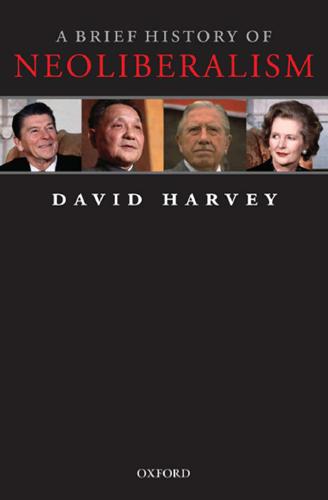
A Brief History of Neoliberalism
by
David Harvey
Published 2 Jan 1995
The Republican Party now had its Christian base. It also appealed to the cultural nationalism of the white working classes and their besieged sense of moral righteousness (besieged because this class lived under conditions of chronic economic insecurity and felt excluded from many of the benefits that were being distributed through affirmative action and other state programmes). This political base could be mobilized through the positives of religion and cultural nationalism and negatively through coded, if not blatant, racism, homophobia, and anti-feminism. The problem was not capitalism and the neoliberalization of culture, but the ‘liberals’ who had used excessive state power to provide for special groups (blacks, women, environmentalists, etc.).
…
But the moral values that have now become central to the neo-conservatives can best be understood as products of the particular coalition that was built in the 1970s, between elite class and business interests intent on restoring their class power, on the one hand, and an electoral base among the ‘moral majority’ of the disaffected white working class on the other. The moral values centred on cultural nationalism, moral righteousness, Christianity (of a certain evangelical sort), family values, and right-to-life issues, and on antagonism to the new social movements such as feminism, gay rights, affirmative action, and environmentalism. While this alliance was mainly tactical under Reagan, the domestic disorder of the Clinton years forced the moral values argument to the top of the agenda in the Republicanism of Bush the younger. It now forms the core of the moral agenda of the neoconservative movement.25 But it would be wrong to see this neoconservative turn as exceptional or peculiar to the US, even though there are special elements at work there that may not be present elsewhere.
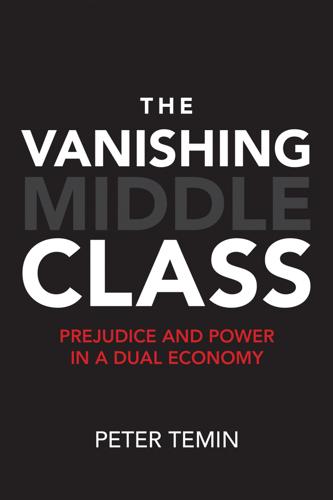
The Vanishing Middle Class: Prejudice and Power in a Dual Economy
by
Peter Temin
Published 17 Mar 2017
Opponents of redistribution in the United States have regularly used race-based rhetoric to resist left-wing politics.”15 A recent econometric analysis of American counties is worth quoting in detail: “Whites who currently live in counties that had high concentrations of slaves in 1860 are on average more conservative and express colder feelings toward African-Americans than whites who live elsewhere in the South. That is, the larger the number of slaves per capita in his or her county of residence in 1860, the greater the probability that a white Southerner today will identify as a Republican, oppose affirmative action, and express positions that indicate some level of ‘racial resentment.’”16 A vivid sense of what it means to be black in America today is expressed well in a prose poem by Claudia Rankine that describes a professional man who is taken out of his car by the police, brought to the police station in handcuffs, stripped, and then released to walk home, with the refrain: “And you are not the guy and still you fit the description because there is only one guy who is always the guy fitting the description.”17 The treatment of women is similar in some bodily aspects to current divisions about race.
…
Journal of Economic Perspectives 29 (1) (Winter): 29–46. Kang, Cecilia. 2016. “No Driver? Bring It On: How Pittsburgh Became Uber’s Testing Ground.” New York Times, September 10. Kanter, Rosabeth Moss. 2015. Move: Putting America’s Infrastructure Back in the Lead. New York: Norton. Katznelson, Ira. 2005. When Affirmative Action Was White: An Untold History of Racial Inequality in Twentieth-Century America. New York: Norton. Katznelson, Ira. 2013. Fear Itself: The New Deal and the Origins of Our Time. New York: Norton. Kaufman, Dan. 2016. “The Destruction of Progressive Wisconsin.” New York Times, January 16. Keller, Josh, and Adam Pearce. 2016.
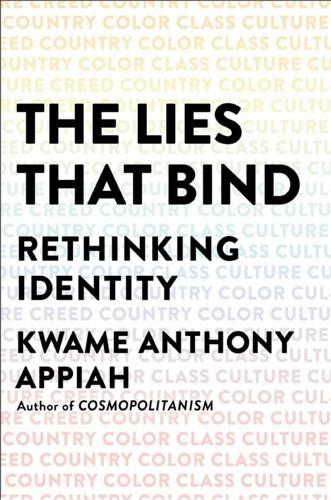
The Lies That Bind: Rethinking Identity
by
Kwame Anthony Appiah
Published 27 Aug 2018
Many people now know that we are all, in fact, one species, and think that racial differences are, from a biological point of view, illusory; but that seldom undermines the significance for them of racial identities and affiliations. Around the world, people have sought and won affirmative action for their ethnoracial groups. In the United States, in part because of affirmative action, public opinion polls consistently show wide divergences on many questions along racial lines.33 On American campuses where the claim that “race is a social construct” echoes like a mantra, Asian, black, and white identities continue to shape social experience.

The Better Angels of Our Nature: Why Violence Has Declined
by
Steven Pinker
Published 24 Sep 2012
—Blaise Pascal LIST OF FIGURES Figure 1–1 Everyday violence in a bodybuilding ad, 1940s 25 1–2 Domestic violence in a coffee ad, 1952 26 2–1 The violence triangle 35 2–2 Percentage of deaths in warfare in nonstate and state societies 49 2–3 Rate of death in warfare in nonstate and state societies 53 2–4 Homicide rates in the least violent nonstate societies compared to state societies 55 3–1 Homicide rates in England, 1200–2000: Gurr’s 1981 estimates 60 3–2 Homicide rates in England, 1200–2000 61 3–3 Homicide rates in five Western European regions, 1300–2000 63 3–4 Homicide rates in Western Europe, 1300–2000, and in nonstate societies 64 3–5 Detail from “Saturn,” Das Mittelalterliche Hausbuch (The Medieval Housebook, 1475–80) 65 3–6 Detail from “Mars,” Das Mittelalterliche Hausbuch (The Medieval Housebook, 1475–80) 66 3–7 Percentage of deaths of English male aristocrats from violence, 1330–1829 81 3–8 Geography of homicide in Europe, late 19th and early 21st centuries 86 3–9 Geography of homicide in the world, 2004 88 3–10 Homicide rates in the United States and England, 1900–2000 92 3–11 Geography of homicide in the United States, 2007 93 3–12 Homicide rates in England, 1300–1925, and New England, 1630–1914 95 3–13 Homicide rates in the northeastern United States, 1636–1900 96 3–14 Homicide rates among blacks and whites in New York and Philadelphia, 1797–1952 97 3–15 Homicide rates in the southeastern United States, 1620–1900 98 3–16 Homicide rates in the southwestern United States and California, 1830–1914 104 3–17 Flouting conventions of cleanliness and propriety in the 1960s 112 3–18 Homicide rates in the United States, 1950–2010, and Canada, 1961–2009 117 3–19 Homicide rates in five Western European countries, 1900–2009 118 4–1 Torture in medieval and early modern Europe 131 4–2 Time line for the abolition of judicial torture 149 4–3 Time line for the abolition of capital punishment in Europe 150 4–4 Execution rate in the United States, 1640–2010 151 4–5 Executions for crimes other than homicide in the United States, 1650–2002 152 4–6 Time line for the abolition of slavery 156 4–7 Real income per person in England, 1200–2000 171 4–8 Efficiency in book production in England, 1470–1860s 172 4–9 Number of books in English published per decade, 1475–1800 173 4–10 Literacy rate in England, 1625–1925 174 5–1 Two pessimistic possibilities for historical trends in war 191 5–2 Two less pessimistic possibilities for historical trends in war 192 5–3 100 worst wars and atrocities in human history 197 5–4 Historical myopia: Centimeters of text per century in a historical almanac 199 5–5 Random and nonrandom patterns 205 5–6 Richardson’s data 205 5–7 Number of deadly quarrels of different magnitudes, 1820–1952 211 5–8 Probabilities of wars of different magnitudes, 1820–1997 212 5–9 Heights of males (a normal or bell-curve distribution) 213 5–10 Populations of cities (a power-law distribution), plotted on linear and log scales 214 5–11 Total deaths from quarrels of different magnitudes 221 5–12 Percentage of years in which the great powers fought one another, 1500–2000 224 5–13 Frequency of wars involving the great powers, 1500–2000 225 5–14 Duration of wars involving the great powers, 1500–2000 226 5–15 Deaths in wars involving the great powers, 1500–2000 227 5–16 Concentration of deaths in wars involving the great powers, 1500–2000 227 5–17 Conflicts per year in greater Europe, 1400–2000 229 5–18 Rate of death in conflicts in greater Europe, 1400–2000 230 5–19 Length of military conscription, 48 major long-established nations, 1970–2010 256 5–20 Military personnel, United States and Europe, 1950–2000 257 5–21 Percentage of territorial wars resulting in redistribution of territory, 1651–2000 259 5–22 Nonnuclear states that started and stopped exploring nuclear weapons, 1945–2010 273 5–23 Democracies, autocracies, and anocracies, 1946–2008 279 5–24 International trade relative to GDP, 1885–2000 286 5–25 Average number of IGO memberships shared by a pair of countries, 1885–2000 290 5–26 Probability of militarized disputes between pairs of democracies and other pairs of countries, 1825–1992 294 6–1 Rate of battle deaths in state-based armed conflicts, 1900–2005 301 6–2 Rate of battle deaths in state-based armed conflicts, 1946–2008 301 6–3 Number of state-based armed conflicts, 1946–2009 303 6–4 Deadliness of interstate and civil wars, 1950–2005 304 6–5 Geography of armed conflict, 2008 306 6–6 Growth of peacekeeping, 1948–2008 314 6–7 Rate of deaths in genocides, 1900–2008 338 6–8 Rate of deaths in genocides, 1956–2008 340 6–9 Rate of deaths from terrorism, United States, 1970–2007 350 6–10 Rate of deaths from terrorism, Western Europe, 1970–2007 351 6–11 Rate of deaths from terrorism, worldwide except Afghanistan 2001–and Iraq 2003– 352 6–12 Islamic and world conflicts, 1990–2006 366 7–1 Use of the terms civil rights, women’s rights, children’s rights, gay rights, and animal rights in English-language books, 1948–2000 380 7–2 Lynchings in the United States, 1882–1969 384 7–3 Hate-crime murders of African Americans, 1996–2008 386 7–4 Nonlethal hate crimes against African Americans, 1996–2008 387 7–5 Discriminatory and affirmative action policies, 1950–2003 390 7–6 Segregationist attitudes in the United States, 1942–1997 391 7–7 White attitudes to interracial marriage in the United States, 1958–2008 391 7–8 Unfavorable opinions of African Americans, 1977–2006 392 7–9 Rape prevention and response sticker 400 7–10 Rape and homicide rates in the United States, 1973–2008 402 7–11 Attitudes toward women in the United States, 1970–1995 404 7–12 Approval of husband slapping wife in the United States, 1968–1994 409 7–13 Assaults by intimate partners, United States, 1993–2005 411 7–14 Homicides of intimate partners in the United States, 1976–2005 411 7–15 Domestic violence in England and Wales, 1995–2008 412 7–16 Abortions in the world, 1980–2003 428 7–17 Approval of spanking in the United States, Sweden, and New Zealand, 1954–2008 436 7–18 Approval of corporal punishment in schools in the United States, 1954–2002 438 7–19 American states allowing corporal punishment in schools, 1954–2010 438 7–20 Child abuse in the United States, 1990–2007 440 7–21 Another form of violence against children 441 7–22 Violence against youths in the United States, 1992–2003 443 7–23 Time line for the decriminalization of homosexuality, United States and world 450 7–24 Intolerance of homosexuality in the United States, 1973–2010 452 7–25 Antigay hate crimes in the United States, 1996–2008 454 7–26 Percentage of American households with hunters, 1977–2006 467 7–27 Number of motion pictures per year in which animals were harmed, 1972–2010 469 7–28 Vegetarianism in the United States and United Kingdom, 1984–2009 471 8–1 Rat brain, showing the major structures involved in aggression 498 8–2 Human brain, showing the major subcortical structures involved in aggression 502 8–3 Human brain, showing the major cortical regions that regulate aggression 503 8–4 Human brain, medial view 504 8–5 The Prisoner’s Dilemma 533 8–6 Apologies by political and religious leaders, 1900–2004 544 9–1 Implicit interest rates in England, 1170–2000 610 9–2 The Flynn Effect: Rising IQ scores, 1947–2002 652 10–1 The Pacifist’s Dilemma 679 10–2 How a Leviathan resolves the Pacifist’s Dilemma 681 10–3 How commerce resolves the Pacifist’s Dilemma 682 10–4 How feminization can resolve the Pacifist’s Dilemma 686 10–5 How empathy and reason resolve the Pacifist’s Dilemma 689 PREFACE This book is about what may be the most important thing that has ever happened in human history.
…
They would not only erase any law in the books that singled out an ethnic minority for unfavorable treatment, but would swing to the opposite pole and mandate anti-exclusionary, un-eliminationist policies, such as the integration of schools, educational head starts, and racial or ethnic quotas and preferences in government, business, and education. These policies are generally called remedial discrimination, though in the United States they go by the name affirmative action. Whether or not the policies deserve credit for preventing a backsliding of developed countries into genocide and pogroms, they obviously are designed as the photographic negative of the exclusionary policies that caused or tolerated such violence in the past. And they have been riding a wave of popularity throughout the world.
…
And of course there will be occasional rampages.”23 Undeterred by the dearth of dynamitings and the rarity of rampages, he followed up in 1992 with Two Nations: Black and White, Separate, Hostile, Unequal, whose message was “A huge racial chasm remains, and there are few signs that the coming century will see it closed.”24 Though the 1990s were a decade in which Oprah Winfrey, Michael Jordan, and Colin Powell were repeatedly named in polls as among the most admired Americans, gloomy assessments on race relations dominated literary life. The legal scholar Derrick Bell, for example, wrote in a 1992 book subtitled The Permanence of Racism that “racism is an integral, permanent, and indestructible component of this society.”25 FIGURE 7–5. Discriminatory and affirmative action policies, 1950–2003 Source: Graph from Asal & Pate, 2005. The sociologist Lawrence Bobo and his colleagues decided to see for themselves by examining the history of white Americans’ attitudes toward African Americans.26 They found that far from being indestructible, overt racism has been steadily disintegrating.
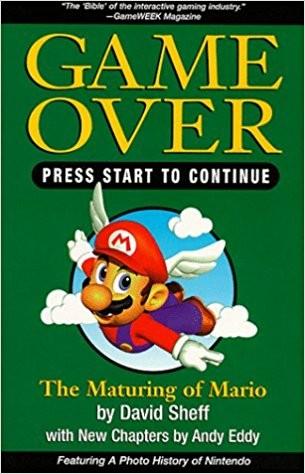
Game Over Press Start to Continue
by
David Sheff
and
Andy Eddy
Published 1 Jan 1993
He gave a compassionate speech—he had been the victim of racism himself, he said—and pledged that Nintendo had begun training its employees in ways to avoid workplace discrimination, and promised to initiate an affirmative-action plan. Meanwhile, the state of Washington suspended its practice of referring job seekers to Nintendo even though Phil Rogers contested the Core Group’s statistics. He insisted that Nintendo employed 110 ethnic minorities, a number representing 14.3 percent of the permanent work force. (The percentage included all minorities, including Japanese.) He also said that three, not one, of Nintendo’s 147 managers were African-American. In 1991 Nintendo unveiled its plan for an affirmative-action program, but it was criticized as inadequate by the Core Group.
…
Yamauchi, who had always tried to keep a low profile, now appeared on the front page of The New York Times on February 7, and people across the United States were suddenly asking questions about him. Allegations of racism made by some African-Americans and other minorities were quickly dismissed by Howard Lincoln, who sent the baseball commissioner a copy of Nintendo’s affirmative-action policies and their results. But the charge that Nintendo was involved in gambling was more difficult to defuse. The Minnesota lottery deal that had fallen through was cited as proof of Nintendo’s intention to become involved in gambling. Critics also noted that the company had its origins in gambling cards and that the Nintendo Network in Japan offered a horse-race betting service.
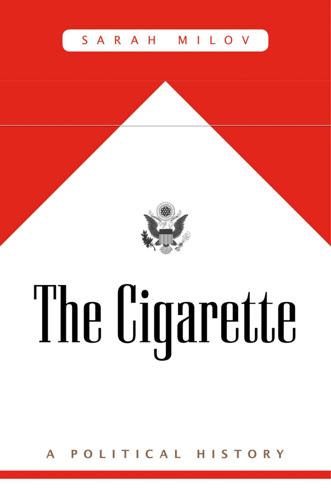
The Cigarette: A Political History
by
Sarah Milov
Published 1 Oct 2019
Shane Hamilton, “Agribusiness, the Family Farm, and the Politics of Technological Determinism in the Post-World War II United States,” Technology and Culture 55, No. 3 (2014): 571. 141. “1968 Policies, Resolutions, and Recommendations: North Carolina Farm Bureau Federation, Greensboro, N.C.,” Folder 3, Box 16, NCFB Records, NCSU. The position of the Farm Bureau resonates with Ira Katznelson’s reinterpretation of New Deal social welfare policies as beneficial to whites at the expense of African Americans—an in-built system of white racial privilege that Katznelson calls “affirmative action for whites.” See Ira Katznelson, When Affirmative Action Was White: An Untold Story of Racial Inequality in Twentieth Century America (New York: W. W. Norton, 2005). See also Pete Daniel, Dispossession: Discrimination against African American Farmers in the Age of Civil Rights (Chapel Hill: UNC Press, 2013). 142. “North Carolina Policies and Recommendations to the American Farm Bureau Federation, Charlotte, North Carolina, November 21, 1956,” Folder 3, Box 16, NCFB Records, NCSU. 143. “1959 Policies, Resolutions, and Recommendations: North Carolina Farm Bureau Federation, Greensboro, N.C.,” Folder 3, Box 16, NCFB Records, NCSU. 144.
…
For accounts of the ways in which the U.S. state frequently operates “out of sight” of most citizens, see Suzanne Mettler, The Submerged State: How Invisible Government Policies Undermine American Democracy (Chicago: Chicago University Press, 2011); Jacob Hacker, The Divided Welfare State: The Battle over Public and Private Social Benefits in the United States (New York: Cambridge University Press, 2002); Jennifer Klein, For All These Rights: Business, Labor, and the Shaping of America’s Public-Private Welfare State (Princeton: Princeton University Press, 2003). 20. Mark Tushnet, “An Essay on Rights,” Texas Law Review 62 (1984): 1371. 21. Ira Katznelson, Fear Itself: The New Deal and the Origins of Our Time (New York: Liveright, 2013), 14–16. See also Katznelson, When Affirmative Action Was White (New York: Norton, 2005). Historians of southern agriculture have been particularly attentive to the discriminatory elements of USDA policy. See Pete Daniel, Dispossession: Discrimination against African American Farmers in the Age of Civil Rights (Chapel Hill: UNC Press, 2013). A class-action discrimination suit was brought by African-American farmers against the USDA for the agency’s discrimination against them between 1983 and 1997.
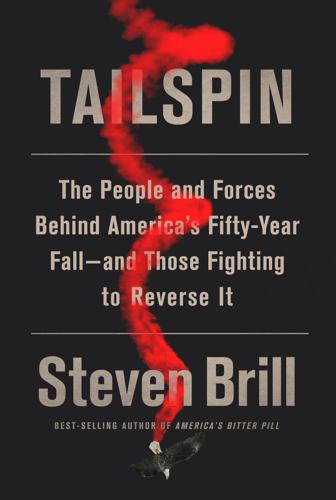
Tailspin: The People and Forces Behind America's Fifty-Year Fall--And Those Fighting to Reverse It
by
Steven Brill
Published 28 May 2018
They also were more driven by the Vietnam War and the civil rights struggles than by issues like union rights and controlling big business abuses, which had cemented the New Deal Democratic coalition. This meant that their assumption of power and the priorities they pursued—which by the 1970s included affirmative action and drives to integrate public schools by busing students to distant schools—were likely to alienate crucial working-class elements of the coalition. As highlighted in an article in The Atlantic in 2016, an important casualty of their agenda was Wright Patman of Texas, a populist when it came to banking and anti-trust laws who had been against civil rights legislation and for the Vietnam War.
…
Ronald Reagan caused a stir that year attacking “welfare queens” in his unsuccessful bid for the Republican presidential nomination—an issue that seemed to resonate with a middle class that had become increasingly restive over wage stagnation and frustrated by much of the Democratic Party’s continuing focus on civil rights, including affirmative action and forced integration through school busing. During the Carter years, 1977–81, programs continued, but did not expand significantly when a flagging economy saw poverty rates rise. Meanwhile, it was becoming increasingly clear that the basic welfare program, Aid to Families with Dependent Children, was providing a safety net of cash but was not moving people out of poverty.
…
“The biggest disaster of the seventies and eighties,” Edelman recalled, “was that we allowed working people to be split from the poor, when they were being victimized by the same forces….We should have had the foresight to see that we needed to save the middle class. Instead we let the middle class become disillusioned by losing good jobs, by inflation, by unemployment, by thinking they were losing out to blacks from affirmative action or busing. So, they opted out, became totally cynical. That just gave the special interests more power, which left workers with lower wages and less protection, and left the poor even worse off, even while the middle class resented them still more.” FORCING A NEW ECONOMY The most disheartening signs of America’s breakdown are, obviously, these realities of life for the poor who live in the world’s richest country.
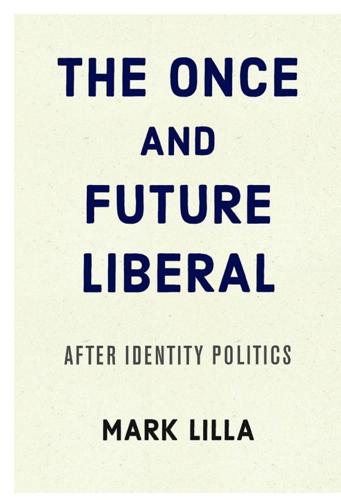
The Once and Future Liberal: After Identity Politics
by
Mark Lilla
Published 14 Aug 2017
In movement politics, the forces are all centrifugal, encouraging splits into smaller and smaller factions obsessed with single issues and practicing rituals of ideological one-upmanship. So the New Left’s legacy to liberalism was a double one. It spawned issue-based movements that helped to bring about progressive change in a number of areas, most notably the environment and human rights abroad. And it spawned identity-based social movements—for affirmative action and diversity, feminism, gay liberation—that have made this country a more tolerant, more just, and more inclusive place than it was fifty years ago. What the New Left did not do was contribute to the unification of the Democratic Party and the development of a liberal vision of Americans’ shared future.
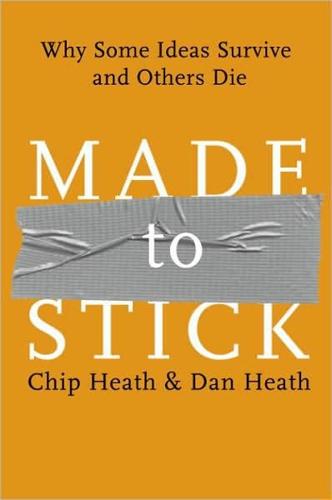
Made to Stick: Why Some Ideas Survive and Others Die
by
Chip Heath
and
Dan Heath
Published 18 Dec 2006
There’s not much evidence that public opinion can be predicted by narrow self-interest. In 1998, Donald Kinder, a professor of political science at the University of Michigan, wrote an influential survey of thirty years of research on this topic. He summarizes the effects of self-interest on political views as “trifling.” Trifling! Kinder writes: When faced with affirmative action, white and black Americans come to their views without calculating personal harms or benefits. The unemployed do not line up behind policies designed to alleviate economic distress. The medically needy are no more likely to favor government health insurance than the fully insured. Parents of children in public schools are not more likely to support government aid to education than other citizens.
…
Imagine that a company offers: The bonus and new job-framing studies are from Chip Heath, “On the Social Psychology of Agency Relationships: Lay Theories of Motivation Overemphasize Extrinsic Rewards,” Organizational Behavior and Human Decision Processes 78 (1999): 25–62. Dining in Iraq: The Floyd Lee story is from a marvelous article by Julian E. Barnes, “A Culinary Oasis,” U.S. News & World Report, December 6, 2004, 28. The Popcorn Popper and Political Science: The popcorn popper story is from Caples/Hahn, Tested Advertising, 71. When faced with affirmative action: Donald Kinder, “Opinion and Action in the Realm of Politics,” in Handbook of Social Psychology, ed. Daniel T. Gilbert, Susan T. Fiske, and Gardner Lindzey, 4th ed. (London: Oxford University Press, 1988), 778–867. The extended quote is from. 190 A related idea comes from James March: James March describes the two patterns of making decisions—consequence versus identity—in Chapters 1 and 2 of James G.
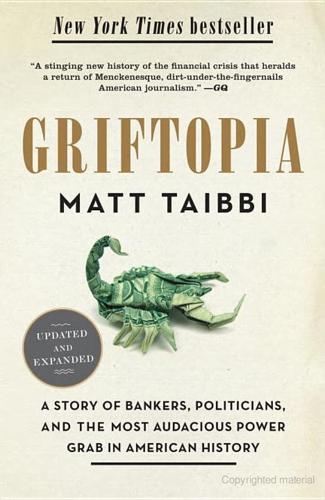
Griftopia: Bubble Machines, Vampire Squids, and the Long Con That Is Breaking America
by
Matt Taibbi
Published 15 Feb 2010
In the case of these Westchester County revolutionaries, the rallying cry was a lawsuit filed jointly by a liberal nonprofit group in New York City and the Department of Housing and Urban Development against the county. The suit alleged that Westchester falsified HUD grant applications, asking for federal grant money without conforming to federal affirmative action guidelines designed to push desegregation. The county lost the suit and as a result was now going to be forced by the federal government to build seven hundred new subsidized low-income housing units in the area. Whereas subsidized housing in the county had historically been built closer to New York City, the new ruling would now place “affordable housing” in places like Elmsford whether Elmsford wanted it or not.
…
The entire controversy was dreamed up and resolved behind closed doors by lawyers, mostly out-of-town lawyers. What they accused the government of Westchester of was having an inadequate amount of zeal for submitting the mountains of paperwork that goes hand in hand with antiquated, Johnson-era affirmative action housing programs. The Westchester housing settlement that resulted from that suit is the kind of politics that would turn anyone into a Tea Partier—a classic example of dizzy left-wing meddling mixed with socially meaningless legal grifting that enriches opportunistic lawyers with an eye for low-hanging fruit.
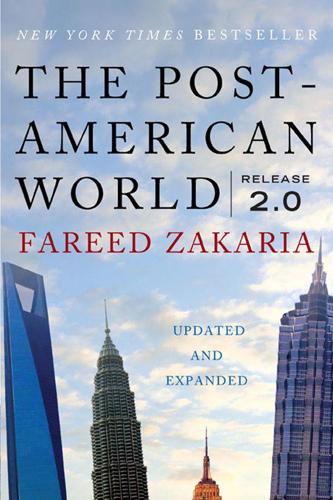
The Post-American World: Release 2.0
by
Fareed Zakaria
Published 1 Jan 2008
Such a focus would be impossible in democratic India, for example, where vast resources are spent on short-term subsidies to satisfy voters. (India’s elite educational institutions, by contrast, are under pressure to limit merit-based admissions and accept half their students on the basis of quotas and affirmative action.) It is unusual for a nondemocratic government to have managed growth effectively for so long. Most autocratic governments quickly become insular, corrupt, and stupid—and preside over economic plunder and stagnation. The record of Marcos, Mobutu, and Mugabe is far more typical. (And lest one veers into cultural explanations, keep in mind that the record of the Chinese government under Mao was atrocious.)
…
If you’re wrong, people won’t buy the book anymore.” At least at this point, three years later, I don’t think I’ve embarrassed him. Index Abrahamic religions, 122, 171, 172 Abu Sayyaf, 11 Abyssinia, 195 Academy of Science, 211 Acheson, Dean, 255, 256 Acquaviva, Claudio, 124 Adams, James Truslow, 237 affirmative action, 109 Afghanistan, 13, 15, 54, 101, 172, 185, 199, 235–36, 241, 247, 260, 277, 284 Afghan War, 13, 241, 247, 260 Africa: agriculture in, 70 Chinese influence in, 129–32, 270 Christian population of, 98 colonization of, 65, 79, 80, 129, 156 corruption in, 130–32 economies of, 21n, 40, 68, 129, 130, 242–43 geography of, 77 instability of, 12–13, 20, 29, 40, 65, 68 national debts of, 130 natural resources of, 129 North, 12–13, 20, 80 slaves from, 79 sub-Saharan, 80 U.S. influence in, 270–71, 273 see also specific countries AFRICOM, 270–71 Aggarwal, Anil, 155 aging populations, 214–15 agriculture, 21, 30, 31, 32–33, 65–67, 70, 71–72, 100, 106, 112, 136, 151, 160 Agtmael, Antoine van, 2 Ahmadinejad, Mahmoud, 16, 55 AIDS, 149, 161 AIG, 43–44 air conditioners, 102 air pollution, 111 airport security, 280 Akbar, 75 Al-Azhar University, 15 Albright, Madeleine, 246 Alembert, Jean Le Rond d’, 123 alerts, terrorist, 277 algebra, 67 Algeria, 13 algorithm, 67 Al-Jabr wa-al-Muqabilah, 67 Al Jazeera, 96 al-Khwarizmi, 67 Al Qaeda, 5, 10–18, 172, 248n, 270, 277 Ambrose, Stephen, 37 American dream, 237 American Enterprise Institute, 213 Amery, Leo, 193 Amsterdam, 67 Anglo-Chinese Wars, 81 Angola, 284 Annan, Kofi, 272 anti-Americanism, 13, 35, 39, 42, 60, 166, 241, 245, 251–55, 274, 283 Apple, Inc., 203 Arab culture, 67, 75, 76, 77, 80, 98 Arab-Israeli conflict, 6, 96, 246 arbitrage, 27 architecture, 95, 98, 103, 105, 152 Argentina, 3, 26, 55, 115 Armenia, 209 Arnold, Thomas, 187 Arroyo, Gloria, 133 art, modern, 95 ash-Sheikh, Abdulaziz al, 15 Asia: agriculture in, 70 Chinese influence in, 132–36, 143, 173, 176–77, 259, 267, 281 colonization of, 79, 80–82, 156 demographics of, 214–15 East, 20, 23, 29, 32, 36, 52, 64n, 65, 122, 133, 214, 241–42, 245 economies of, 52, 75, 138, 151–52, 221 education in, 208–12 financial markets of, 221–22 geography of, 76 global influence of, 245, 257, 259 India’s influence in, 151–52, 173, 181 manufacturing sector of, 202–3 South, 21n, 52, 60 technology sector of, 200–208 U.S. influence in, 90, 241–42, 245, 259–60, 266, 267, 273–74, 280–81 Western influence in, 90, 93, 99 see also specific countries “Asian Tigers,” 26 assets, 219 Association of Southeast Asian Nations (ASEAN), 132, 133 Atatürk, Kemal, 84 Australia, 78, 132, 143, 196, 252, 266 Austria, 223 automobile industry, 33, 110, 149, 192, 205, 225, 229–30, 244 Autor, David, 231 Bacon, Francis, 86 bailouts, 43, 44 Baker, James A., III, 39, 244 Bakiyev, Kurmanbek, 54 balance of power, 79 Bali bombings (2002), 11, 17 Balkans, 20, 29, 117–18, 245, 246, 247 Bangalore, 50 Bangladesh, 60, 159, 281 Ban Ki-moon, 30 banking industry, 36, 43–45, 81, 106, 107, 109, 110, 127, 139, 153, 157 Barma, Naazneen, 38 Barnett, Correlli, 262 “Base Structure Report” (2006), 262 Bay of Pigs invasion (1961), 20 BBC, 96, 120 Bear Stearns, xi Beijing, 71, 103, 105, 111, 137, 150, 211 “Beijing Consensus, The” (Ramo), 142–43 Beijing Olympic Games (2008), 5, 103, 105, 137 Belgium, 41 Berlin, 103 Berlin Wall, 24 Beveridge Plan, 197 Bharatiya Janata Party (BJP), 158–59, 160, 178, 179–80 Bhutan, 166 Bialik, Carl, 205 Bible, 172 bicycles, 192 bin Laden, Osama, 12, 13, 14–15, 85, 269–70 biological weapons, 18 biotechnology, 201–2, 215 bipolar order, 4 Bismarck, Otto von, 198, 257, 266–67 Blackwill, Robert, 177 Blair, Tony, 274 Blinder, Alan, 230–31 Bloomberg, Michael, 220–21 “blue card,” 224 blue jeans, 88, 89, 91 Boer War, 188–90, 261 Bollywood, 90, 94, 147, 153–55 Bono, 272 Boorstin, Daniel, 69 Bosnia, 272 Brahmans, 74 “brain drain,” 167 brand names, 203 Brazil, xii, 2, 3–4, 19, 23, 26, 28–29, 39, 48, 49, 53, 55, 60, 79, 95, 98, 257, 258, 259, 263 Bretton Woods Conference (1944), 253 British East India Company, 60, 80, 82–83 British Empire, 36, 37, 57, 60, 65, 79, 80–83, 84, 89, 94, 97–98, 151, 154, 156, 158–59, 161, 162–63, 164, 170, 173, 179, 184–99, 237, 261–63, 266, 268 British Guiana, 194n broadband service, 28, 224–25 Brookings, Robert, 235 Brookings Institution, 235 Brzezinski, Zbigniew, 36 Buck, Pearl, 100 Buddhism, 124, 171, 172 budget deficits, 219, 241–42, 244 Buffett, Warren, 45–46 Bulgaria, 182 Burma, 79, 121, 264, 273 Burns, Ken, 37 Buruma, Ian, 187 Bush, George H.
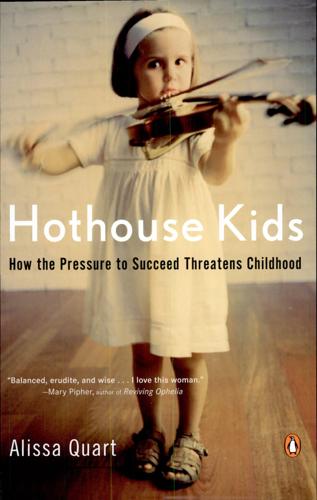
Hothouse Kids: The Dilemma of the Gifted Child
by
Alissa Quart
Published 16 Aug 2006
An unsigned introduction to the 1995 book The Bell Curve Debate, edited by Russell Jacoby and Naomi Glauberman, defines the original book’s troublesome nature with deft acidity: “The Bell Curve gives a sophisticated voice to a repressed and illiberal sentiment: a belief that ruinous divisions in society are sanctioned by nature itself.” The Bell Curve tended to convince only those who already believed in its political implications (among them, that affirmative action was misguided, and that increased funding for minority education was probably a waste of time). And ten years later, plenty of antitest advocates remain. Monty Neill, the co-executive director of the Boston-based advocacy group FairTest, tells me that no matter its form, the intelligence test has never been able to overcome its racist—or, as Neill puts it, “eugenicist”—background: “Our take is that instead of measuring innate capacity, IQs measure things that one has learned.”
…
Slaves have changed through the ages slave chains to slave wages the change, black is not the only race it encases Dominicans and Haitians… It’s amazing how slavery never discriminates against us to tell you the truth I think it loves us with a passion cos when I applied for slavery they had no problem givin’ me affirmative action. What I realized after having attended a few competitive teen slams and then hanging out with the slam team at workshops and on their own was that spoken word was different from the other kids’ competitions in a significant way. For starters, spoken word began as a form of expression invented by an urban minority underclass, which was then taken up and developed by bohemian outsiders and aspiring bohemian outsiders.
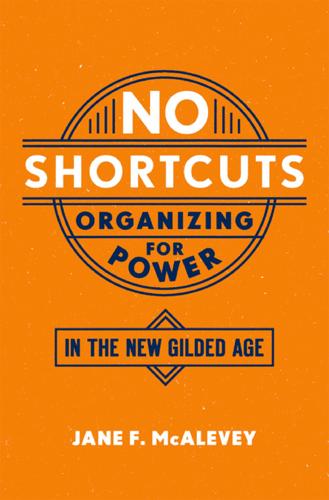
No Shortcuts: Organizing for Power in the New Gilded Age
by
Jane F. McAlevey
Published 14 Apr 2016
Global and regional trade accords also give multinational corporations the right to buy land anywhere in almost any country, and new corporate landlords have forcibly evicted or cheaply bought off millions of people from self-sustaining plots of land, directly contributing to a huge rise in immigration into the United States and Europe.8 During the same decades, the corporate class pocketed the courts, one judicial appointment at a time. The resulting deeply conservative judiciary has relentlessly chipped away at the major laws sustaining the victories of labor and civil rights, overturning hard-fought, key provisions of affirmative action and voting-rights protections. Moreover, along with austerity and privatization, conservative courts have facilitated a vertically integrated for-profit prison system, resulting in the mass incarceration of African Americans, detention centers overflowing with Latinos, and massive profits for the putrid penal system’s corporate shareholders.9 The corporate class also created their version of a popular front, seizing the cultural apparatus through such rulings as the Federal Communications Commission’s Clinton-era decision to allow multinationals to outright own the means of communication.
…
Court of Appeals ruling, after the first order of cease-and-desist came the order that the employer offer ten workers illegally fired in the campaigns in the 1990s their jobs back. It also stipulated making the workers “whole,” that is, financially compensating them for loss of wages: 2. Take the following affirmative action necessary to effectuate the policies of the Act. (a) Within 14 days from the date of this Order, offer Lawanna Johnson, Keith Ludlum, George Simpson, Chris Council, Fred McDonald, Larry Jones, Ray Shawn Ward, Margo McMillan, Tara Davis, and Ada Perry full reinstatement to their former jobs or, if those jobs no longer exist, offer them substantially equivalent positions, without prejudice to their seniority and other rights or privileges previously enjoyed.
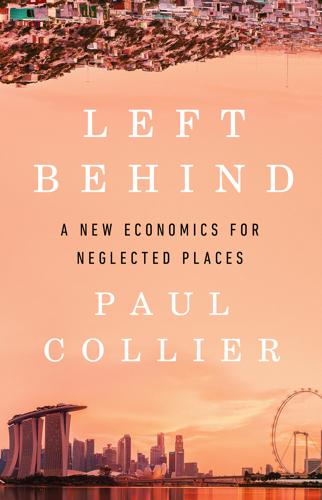
Left Behind
by
Paul Collier
Published 6 Aug 2024
Faced with the perceived need to fill a quota of black students, America’s top universities often select these privileged black students in preference to clever Black Americans who, burdened by centuries of prejudice and discrimination, indeed warrant preferential entry. Had eligibility for the quotas been restricted to Black Americans, the contrived argument used by the Supreme Court to declare affirmative action unconstitutional would not have been an option, since it would not have been based on race but on demonstrable and enduring disadvantage. Other than the minority of privileged teenagers, most of the world’s non-American black people have indeed suffered historic disadvantage. But in contrast to Black Americans this has not been due to entrenched American mis-governance.
…
The aim was to erase the disadvantage, not to compensate for it over their entire lifetime. This is a general principle of Contributive Justice. In circumstances where the hereditary disadvantage of an entire community has become entrenched, as with Black Americans, it may take two or three generations to overcome it, but that is the legitimate objective of public policy. Affirmative action does not get its justification as a token apologetic compensation for past wrongs. It applies with equal force to groups of citizens who have fallen into hereditary disadvantage simply through the ill luck of living in the wrong place. Which takes us back to the main theme of this book: the places left behind because of a shock outside their control.6 The moral implications of left-behind places The process of catching up takes time.
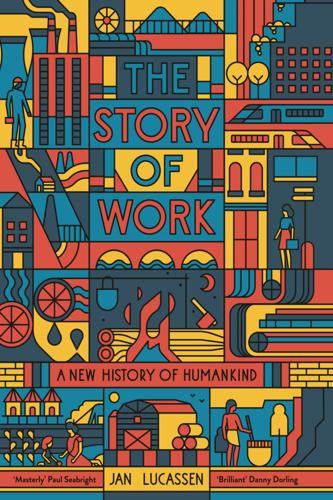
The Story of Work: A New History of Humankind
by
Jan Lucassen
Published 26 Jul 2021
Think of the recent extreme increase in inequality in India, despite serious attempts since independence in 1947 to promote social opportunities for disadvantaged caste members via the constitution (1950, drawn up by Ambedkar, himself born a Dalit), which, in turn, facilitated affirmative action by way of ‘reservations’18 – and also despite efforts to build a welfare state à la Beveridge, which, unfortunately, ended in a deep gulf between a protected ‘formal’ and an unprotected ‘informal’ sector.19 In the US, too, affirmative action, as pleaded for by James Baldwin, Martin Luther King and Malcolm X, is a long way from delivering the desired result, as the Black Lives Matter movement does not fail to emphasize.
…
Although the British had abolished the slave trade and slavery in their colony in the mid-nineteenth century, various estimates indicate that, still today, many millions and perhaps even more than 10 million Indians have to work for their employers-cum-creditors without any rights.68 Like in the Americas (as explained by Tobias Barrington Wolff, p. 310), this is not just a question of people unable to repay their debts; rather – and more fundamentally – it is an issue of employers-cum-creditors belonging to a higher caste than their workers-cum-debtors. Moreover, the forebears on both sides of this economic divide also maintained such unequal relationships. Although at that time sanctioned by generally accepted custom, this is no longer the case before the law. Indeed, independent India has a long history of affirmative action for groups down the caste ladder, albeit with limited success.69 The practice may have diminished over time but it nevertheless remains vigorous. The fact that unfree labour remains embedded in traditional norms and customs may also explain why numerous initiatives by politicians and social activists like B.R.
…
The Second World War has shown us many examples of this, and, unfortunately, we cannot say the possibility can be ruled out in the future.22 The logical follow-up question is why collective action in the face of the increasing welfare gap has become so rare, in comparison with the previous century. Arguably, there is not, in fact, a total absence (remember, for example, the fierce protests in South Korea). And we can also see the partial success of affirmative action, or at least the promise it holds, for instance in India in relation to the lower castes and, in general, for women.23 The lack of a strong, collective counter-movement can perhaps be explained by the fact that, precisely as a result of a century of collective action, on average, the underclass in the North Atlantic now enjoys a historically reasonable level of prosperity (again because of the aforementioned transfer payments).
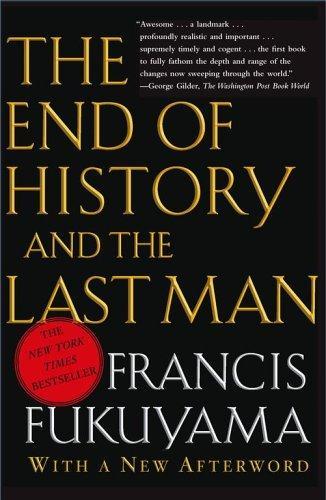
The end of history and the last man
by
Francis Fukuyama
Published 28 Feb 2006
The problem for black Americans was understood not as one concerning the values themselves, but the willingness of white society to recognize the dignity of blacks who accepted those values. Despite the abolition of legally sanctioned barriers to equality in the 1960s, however, and the rise of a variety of affirmative action programs giving preference to blacks, a certain sector of the American black population not only failed to advance economically, but actually lost ground. One political result of persistent economic failure, however, is the now more frequently heard assertion that the traditional measures of economic success, such as work, education, and employment, represent not universal but “white” values.
…
Every effort to give the disadvantaged “equal dignity” will mean the abridgment of the freedom or rights of other people, all the more so when the sources of disadvantage lie deep within the social structure. Every place granted to a minority candidate for a job or a university education under an affirmative action program means one less place for others; every government dollar spent on national health insurance or welfare means that much less for the private economy; every attempt to protect workers from unemployment or firms from bankruptcy will mean less economic freedom. There is no fixed or natural point at which liberty and equality come into balance, nor any way of optimizing both simultaneously.
…
“Origins of the Modern World System: A Missing Link.” World Politics 33 (January): 253-281. Zuckert, Catherine H. 1988. Understanding the Political Spirit: Philosophical Investigations from Socrates to Nietzsche. Yale University Press, New Haven, Conn. INDEX Abortion, 176 Acid rain, 86 Affirmative action, 237, 293 Afghanistan, 26, 127, 275 African National Congress, 15, 111 Afrikaners, 14, 21, 111, 172 Afro-American culture, 237 Aganbegyan, Abel, 29 Alawi-dominated regime (Syria), 16 Albalkin, Leonid, 29 Albania, 27, 112 Alcibiades, 317 Alexander II, Czar of Russia, 75 Alfonsin government (Argentina), 14 Algeria, 275 Alienation, 65, 197, 335 All Quiet on the Western Front (Remarque), 5 Alwyn, Patricio, 42 Ambition, 162 American Bill of Rights, 43, 159 American Civil War, 171, 175-176, 261, 330 American Revolution, 42, 64, 134 Amish, 85 Amour-propre, 83-84, 155, 162, 255 Andropov, Yuri, 47 Angell, Norman, 5 Anger, 163-165, 171, 172, 178-180 Angola, 35 Animal behavior, 297 Anomie, 337 Anthropology, 151 Anti-liberal doctrines, 235-244 Anti-Stalinism, 30, 40 Apartheid, 20-21, 77, 111, 171-172 Aquino, Corazon, 14, 119-120 Arab-Israeli conflict, 283 Aral Sea, 115 Argentina, 14, 16, 19, 20, 23, 42, 104-106, 112, 113, 256 Aristocracies, 45, 185-86, 200, 259, 260, 265 Aristophanes, 296 Aristotle, 55-56, 127, 335 Aron, Raymond, 66, 95 ASEAN (Association of Southeast Asian Nations), 102 Assembly of Women (Aristophanes), 294 Associational life, 322-324 Astayev, Viktor, 37 Ataturk, Kemal, 236, 256, 272 Athens, 48, 127, 184, 247, 316, 317 Athletic competition, 318-320 Atlantic Charter, 258 Augustine, Saint, 56, 183 Australia, 111 Austria-Hungary, 333 Authoritarianism, 8-9, 11, 12, 37, 39-42, 124 current crisis of, 13-22, 44, 47 market-oriented, 123, 124 new Asian, 238-243 Ba‘ath parties, 16, 236 Bacon, Francis, 56, 57, 72, 135 Baigan, Ishida, 227 Balance of power, 247-250 Baltic states, 27-28, 215, 273 Bangladesh, 275 Basques, 269 Battle of Jena, significance of, 64, 67 Beast with red cheeks, 162, 170-180, 188 “Bee and the Communist Ideal, The” (Nuikin), 23 Belief, 309-310 Bell, Daniel, 91 Bellah, Robert, 227, 229 Belorussia, 35 Beria, Lavrenty, 32, 40 Berlin Wall, 27, 178, 263, 280 Biology, 151 Bipolarity, 248, 255, 262 Black market (Soviet), 32 Black underclass, 293-294 Bogomolov, Oleg, 29 Bolshevik party, 43 Bolshevik Revolution, 24, 25, 66, 304-305 Bombing, 6 Bonfire of the Vanities, The (Wolfe), 329 Botswana, 35 Bourgeois, 145, 160, 180, 185, 188, 189, 314, 323, 329 Brazil, 14, 20, 42, 104-105, 112, 123 Brezhnev, Leonid, 8, 10, 32, 76 Brezhneva, Galina, 16 Bryce, Lord, 42 Buddhism, 216-217, 227 Bukovsky, Vladimir, 169 Bulgaria, 27, 36, 112 Bureaucracy, 65, 89 as characteristic of modern societies, 77-78 Burma, 14, 85 Bush, George, 318, 328 Bushido ethic, 227 Caetano, Marcello, 13, 18 Calvinism, 226, 227, 229 Cambodia, 79, 127, 275, 293 Canada, 264 Capitalism, 44, 90-91, 98, 99, 102, 103, 106, 108, 114, 120, 204, 226-230, 290, 292, 316 Capitalism, Socialism, and Democracy (Schumpeter), 123 Capital punishment, 261 Carthage, 248 Caste system, 228 Catholicism, 19, 221 Ceaucescu, Nicolae, 115 Centrally planned economic systems, 90, 91, 93-96, 98, 107 Ceylon, 123 Chad, 275 Chamorro, Violetta, 14 Charismatic authority, 115 Charter 77, 166 Charter of the United Nations, 282 Checks and balances, 188 Chemical and biological weapons, 278 Chemistry, 151 Chernenko, Konstantin, 47 Chernobyl, 115 Chiang Ching-kuo, 14 Chile, 14, 21, 42, 104, 112, 123 Chinese Revolution, 11, 66, 127 Christian Democracy, 284 Christianity, 56 grounds for human equality, 196-197, 301 Hegel and, 216, 301 as slave ideology, 62, 196-198, 205, 261, 301 Churbanov, Yury, 32 Churchill, Winston, 318 CIA (Central Intelligence Agency), 18, 28 Citizenship, 202, 322 Civil rights, 42-43, 203-204, 237 Civil society, 33, 219, 221, 222 Civil war American, 171, 175-176, 261, 330 English, 271 Spanish, 79 Class conflict, 65, 118-119 Classical liberal trade theory, 100 CNN (Cable News Network), 7 Cold War, 7, 10, 46, 127, 233, 246, 248, 252, 262, 264, 272, 282, 283 Collectivization, 30 Collor de Mello, Fernando, 42 Colombia, 14 Colonialism, 99, 258, 267, 338 Communications technology, 7 Communism, 7, 45; see also Authoritarianism; Communist parties; Totalitarianism belief in permanence of, 8, 10 Havel on, 166-169 legitimacy of, 10-11 as slave ideology, 205 Soviet-style, 9-10 worldwide collapse of, 8, 12, 25-38, 177-179, 264, 280, 293, 296 Communist Manifesto (Marx and Engels), 65 Communist parties Chinese, 34 Filipino, 119 Portuguese, 18, 47 South African, 15 Soviet, 26, 27 Spanish, 19 Community, 242, 304, 322-327 Compassion, rise of, 261 Comte, Auguste, 68 Condorcet, Marquis de, 57, 62 Conflict resolution, 117-119 Confucianism, 217, 325 Congress of Vienna, 267, 331 Conservatives, in Soviet Union, 40-41 Constitution of the United States, 25, 153, 184, 187, 200, 204, 296 Consumer electronics industry, 84 Consumerism, 4, 63, 83-85, 126, 169, 230, 242 Contradictions, 61, 64, 65, 136, 137, 139 Cortés, Hernando, 259 Cosmopolitanism, 126 Costa Rica, 123, 217-218 “Cotton mafia,” 32 Craft guilds, 232 Crimean War, 75 Critique of Pure Reason (Kant), 151 Croatia, 272, 273 Cuba, 10, 14, 25, 127 Cultural relativism, 340 Cultural Revolution, 79, 95, 96 Culture preconditions for democracy, 215, 219-222 relationship to thymos, 213 work attitudes and, 224-225, 230-234 Cunhal, Álvaro, 18 Custine, Marquis de, 25 Cyprus, 20 Czechoslovakia democratic transition in, 36, 112 fall of communist government, 27, 177-178 nationalism in, 273 Darwin, Charles, 299 Debray, Régis, 320 Declaration of Independence, 134, 153, 158, 186, 196, 200, 204, 296 Decline of the West (Spengler), 68 Defensive modernization, 74-76 de Gaulle, Charles, 332 de Klerk, F.
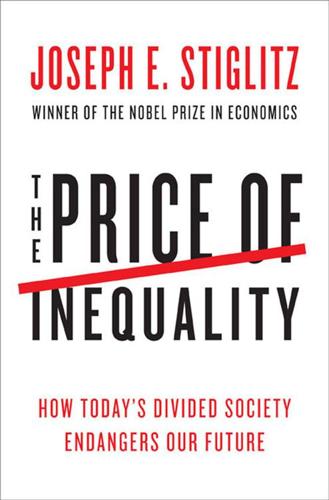
The Price of Inequality: How Today's Divided Society Endangers Our Future
by
Joseph E. Stiglitz
Published 10 Jun 2012
They are vilified, and in many states there are explicit attempts to undermine them, but there is no recognition of the important role that they can play in countervailing other special interests and in defending the basic social protections that are necessary if workers are to accept change and to adjust to the changing economic environment.19 Affirmative action, to eliminate the legacy of discrimination. One of the most invidious—and hardest to eradicate—sources of inequality is discrimination, both ongoing discrimination today and the legacy of past discrimination. In different countries it takes on different forms, but almost everywhere there is racial and gender discrimination.
…
But such discrimination corrodes our basic values, our basic sense of identity, the notion of nationhood. Strong laws prohibiting discrimination are essential; but the effects of past discrimination continue, and so even if we were successful in eliminating discrimination today, its consequences would still be with us. Fortunately, we’ve learned how to improve matters through affirmative action programs—softer than hard quotas, but when implemented with good intentions, they can help our society evolve in ways that are consistent with our basic principles. Because education is the key to opportunity, such programs are perhaps even more important there than elsewhere. Restoring sustainable and equitable growth A growth agenda, based on public investment.
…
See also Emma Rothschild and Amartya Sen, “Adam Smith’s Economics,” The Cambridge Companion to Adam Smith (Cambridge: Campbridge University Press, 2006), pp. 319–65, especially the discussion of the commonwealth beginning on p. 347. INDEX Abed, Fazle Hasan, 196 Acacia Research Corporation, 203 Accenture, 360 advertising, 147, 335, 348, 354 see also marketing affirmative action, 282 Afghanistan, 143, 176, 209, 211, 218 Africa, 23, 40 African Americans: discrimination against, 68, 69, 70, 71, 129, 303, 305, 308, 328, 367, 369 disenfranchisement of, 345, 349 wealth of, 13, 70, 71, 329, 384 agriculture: government subsidies in, 51, 64, 179, 180, 320, 326, 379 in Great Depression, 56–57, 231, 233 AIG, 35, 49, 67, 180, 253, 369 airlines, deregulation of, 317 air traffic controllers, 65 Alien Torts Statute, 59 Ally, 374 Alperovitz, Gar, 78 alternative minimum tax, 394 American Airlines, 318 American Tobacco Company, 317 Andreessen, Marc, 318 Angelides, Phil, 372 antiglobalization movement, xiii, 277 Apple, 203, 360 Arab Spring, ix–xi, xiv, 287 Archer Daniels Midland (ADM), 51, 320 Arnall, Roland, 333 Asia, 64, 157 financial crisis in, 61, 231, 352, 353 AT&T, 44, 203, 317 Atkinson, Anthony B., xxiii auction theory, 50 austerity, 207, 220, 221, 230–36 Australia, 5, 14, 18, 22, 135, 286 autoworkers, 67 balanced-budget multiplier, 217–18, 379 Bangladesh, microcredit schemes in, 196, 197 bankers: bonuses for, x, xiv, xv, 21, 79, 141, 169, 245, 247, 270, 319, 333, 363 criminal prosecution of, xvi, 70, 119, 199, 205–6, 372, 373 economic influence of, xxii–xxiii, 79–80, 240 private incentives of, 33, 34, 87, 90, 96, 109–10 risky behavior by, xi, xxiii, 37, 90, 101, 109, 171, 198, 239–40, 246, 247, 269, 270, 336, 387 see also corporations; financial markets; financial sector Bank of America, 70, 374 bankruptcy: corporate, 313 derivatives claims in, 49, 271 government regulation of, 30 personal, 10, 275, 301 reform of, 58 student debt in, 58, 94, 195, 196, 265, 271, 323, 371 see also Chapter 11; foreclosures bankruptcy law, 193–97, 201, 202, 270, 271, 284 Bardeen, John, 41 Bartel, Larry, xxiv Basov, Nikolay, 315 Bear Stearns, 388 Belgium, 19, 22, 286 Berlusconi, Silvio, 349 Bernanke, Ben, 247, 248, 252, 257, 389 Berners-Lee, Tim, 41, 315 Bhutan, 122, 312 Bilmes, Linda, 176 Bipartisan Policy Center, 207 Bischoff, Kendra, 75 BlackBerry, 203 Blankfein, Lloyd, 124 Bloomberg, Michael, xiv bondholders, 168, 240, 261 bonds, municipal, 212, 378 Bowles, Erskine, 207 Bowles-Simpson Deficit Reduction Commission, 207, 221, 379, 380 Brattain, Walter, 41 Brazil, 5, 51, 249 economic growth in, 139, 298, 353 Bridgestone/Firestone, 104 British Petroleum (BP), xviii, 99, 189, 190, 367, 374 “Buffett rule,” 395 Buffett, Warren, 77, 180, 269, 333, 395, 396 Burnham, Walter Dean, 130 Bush, George W., 71, 73, 86, 87, 97, 101, 114, 169, 177, 208, 212, 221, 228, 330, 360, 383 Bush administration, xiv, 167, 168, 171, 178 business: anticompetitive behavior in, 44–46, 317, 318 corruption in, 176 government partnerships with, 174 government regulation of, 47 innovations in, 35, 46, 41, 78, 96, 178–79, 314, 315 political power of, 47, 50, 51, 62, 95, 99, 101, 111, 131–32, 135, 136, 285, 286, 319, 325, 350 teamwork in, 113, 343 trust in, 121–22 see also corporations; financial sector business, small, 61, 167, 225, 226, 241, 245, 395 California, electricity market liberalization in, 177–78 campaign finance, 37, 47, 131–32, 135, 136, 162, 196, 200, 206, 285–86, 319, 325, 350, 373, 397 Canada, 5, 18, 19 capital, 59, 323 social, 122–23, 125, 135 capital controls, 60, 181, 182, 277, 353 capital gains, 71–72, 87, 88, 115, 211, 274, 297, 298, 315, 330, 361, 378, 395 Cardoso, Enrique, 5 Carter, Jimmy, 71 Cayman Islands, 270 cell phones, 98, 203, 274 Census Bureau, U.S., 27, 305 Central Intelligence Agency (CIA), 209 Chait, Jonathan, 19, 116–17 Chapter 11, 284, 313, 363 see also bankruptcy Chavez, Hugo, 40 Cheney, Richard, 101 Chicago school, 44–45, 47, 256, 317, 391 child care, 10, 301 Chile, 141, 258 China, 19, 54, 64, 249, 280 economic strength of, 144, 175 inflation in, 259–60 Citibank, 204–5, 369, 387 cities, community segregation in, 75–76 Citizens United v.

Red Plenty
by
Francis Spufford
Published 1 Jan 2007
Presumably, Emil’s reasonably comfortable family experience under Stalin means that his parents (at least Party middle-rankers, judging by his own sharply upward career trajectory) successfully negotiated the sudden reversal of Soviet ‘nationalities’ policy during the later thirties. For this, see Terry Dean Martin, The Affirmative Action Empire: Nations and Nationalism in the Soviet Union, 1929–1939 (Ithaca NY: Cornell University Press, 2001). For a fabulously dismal description of post-Soviet Kazan, see Daniel Kalder, Lost Cosmonaut: Travels to the Republics That Tourism Forgot (London: Faber, 2006). 11 The title song from the old musical, ‘The Happy-Go-Lucky Guys’: see James von Geldern and Richard Stites, eds, Mass Culture in Soviet Russia.
…
Presumably, Emil’s reasonably comfortable family experience under Stalin means that his parents (at least Party middle-rankers, judging by his own sharply upward career trajectory) successfully negotiated the sudden reversal of Soviet ‘nationalities’ policy during the later thirties. For this, see Terry Dean Martin, The Affirmative Action Empire: Nations and Nationalism in the Soviet Union, 1929–1939 (Ithaca NY: Cornell University Press, 2001). For a fabulously dismal description of post-Soviet Kazan, see Daniel Kalder, Lost Cosmonaut: Travels to the Republics That Tourism Forgot (London: Faber, 2006). 11 The title song from the old musical, ‘The Happy-Go-Lucky Guys’: see James von Geldern and Richard Stites, eds, Mass Culture in Soviet Russia.
…
McKean, St Petersburg Between the Revolutions: Workers and Revolutionarie/i> (New Haven CT: Yale University Press, 1990) Ken Macleod, The Cassini Division (London: Legend, 1998) Janet Malcolm, Reading Chekhov: A Critical Journey (New York: Random House, 2001) Boris Nikolaevich Malinovsky, Pioneers of Soviet Computing, ed. Anne Fitzpatrick, trans. Emmanuel Aronie. Available at www.sovietcomputing.com Terry Dean Martin, The Affirmative Action Empire: Nations and Nationalism in the Soviet Union, 1923–1939 (Ithaca NY: Cornell University Press, 2001) Frank J. Miller, Folklore for Stalin: Russian Folklore and Pseudo-folklore of the Stalin Era (Armonk: M.E.Sharpe, Inc., 1990) Philip Mirowski, Machine Dreams: Economics Becomes a Cyborg Science (Cambridge: CUP, 2002) Ludwig von Mises, Socialism, 1922; trans. from the German by J.

Mars Crossing
by
Geoffrey A. Landis
Published 15 Jan 2000
"Are we really going down this?" Radkowski's voice, when it came, was a hoarse whisper. "Yes," he said. "Down and across." I to paused, and then in a whisper so soft that it was almost inaudible through the radio noise, added, "We have no choice." 3 TANA IN SCHOOL Tana's grandmother had told her about affirmative action—that whatever she managed to achieve, white people were going to assume that she got it simply by being black. "Ain't no way you're gonna avoid it," she told Tana. "You just go and pay no attention to them, ignore it and do a good job." It seemed unfair, Tana told her, but her grandmother disagreed.
…
No, they won't admit it. Maybe they don't even know it themselves. But they got help, every single one of 'em." Tana listened to what she said—her grandmother had always been a sharp cookie and a good judge of character—but she didn't actually believe it. She had every intention of getting where she was going, affirmative action or no. Her way to medical school was paid by a Hawthorne Foundation scholarship that covered her tuition and expenses and a little bit for her to live on as well. The very first day of med school, before she knew anybody, before she even could find her way around the strange new campus without the map in the med school handbook, one of the boys in her class cornered her in a hall.
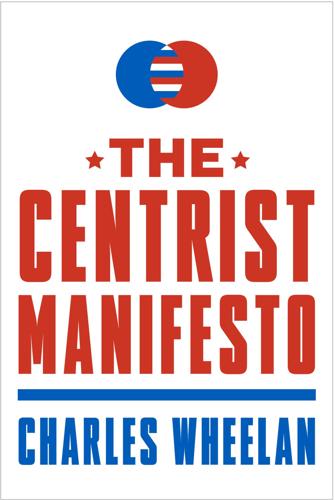
The Centrist Manifesto
by
Charles Wheelan
Published 18 Apr 2013
Americans at the bottom of the income ladder are not struggling because the top 1 percent are getting fabulously rich; they are struggling despite the fact that the top 1 percent are getting fabulously rich. The Republicans are rightfully skeptical of what government can accomplish. Not every social problem has an elegant government fix. One can care deeply about providing better opportunities for racial and ethnic minorities without necessarily embracing affirmative action. One can care deeply about public education, drug addiction, and homelessness without being convinced that throwing more money at current programs will make things better. Similarly, conservatives appreciate that government policies are prone to unintended consequences. Understanding one’s limitations is an attractive personal trait for individuals; it is also an important form of modesty for governments.

After Europe
by
Ivan Krastev
Published 7 May 2017
You get married, you can’t get divorced.”7 It is exactly the transition from the disconnected world of the 1990s to the barricaded world emerging today that changes the performative role of democratic regimes. Democracy as a regime-type that favors the emancipation of minorities (gay parades, women’s marches, affirmative action policies) is supplanted by a political regime that empowers the prejudices of majorities. And it is the political shock caused by the flow of refugees and migrants that is the driving force of the transformation. A study by London’s Demos think tank, long prior to Brexit and Donald Trump’s presidential victory, showed that opposition to liberal migration policies is the defining characteristic of those supporters of right-wing populist parties8.
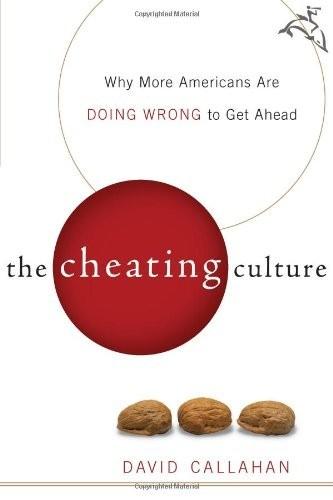
The Cheating Culture: Why More Americans Are Doing Wrong to Get Ahead
by
David Callahan
Published 1 Jan 2004
A more complicated set of motives has been imputed to Jayson Blair. These include not just psychological problems but drug addiction and alcoholism as well. Blair has said that all of these may have played a role. It's also been alleged that Blair got away with cheating because he was black and was coddled by a newspaper mindlessly committed to affirmative action. (An explanation that Blair has said is absurd.) Only a few postmortems of these journalistic scandals have focused on the most obvious possible motive for why young, ambitious professionals might take such big risks—to reap big rewards. Fabrications by journalists are nothing new nor are conflicts of interest in the media.
…
Serious wealth-building efforts are needed to address a racial wealth gap that has left an estimated 60 percent of African American households with no assets or a negative net worth. Communities of color—historically marginalized in the political process—should also be the locus of new initiatives to foster civic education and participation. Jurisdictional boundaries that isolate nonwhite urban communities from surrounding suburban areas must be redrawn. And affirmative action must continue until the day comes when leaders across all the nation's institutions have legitimacy in an America of tomorrow destined to look very different than that of today. A Different Bottom Line Far-reaching efforts to create a new social contract in America are only part of the solution to today's cheating epidemic.
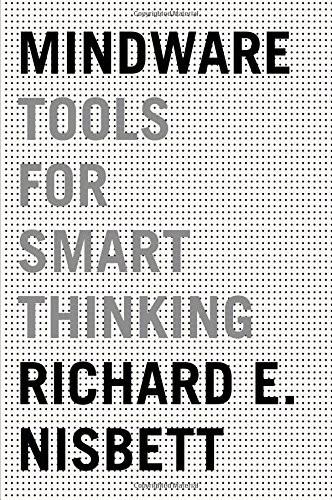
Mindware: Tools for Smart Thinking
by
Richard E. Nisbett
Published 17 Aug 2015
Fryer, “Financial Incentives and Student Achievement: Evidence from Randomized Trials.” 30. Fryer et al., “Enhancing the Efficacy of Teacher Incentives Through Loss Aversion: A Field Experiment.” 31. Kalev, Dobbin, and Kelley, “Best Practices or Best Guesses? Assessing the Efficacy of Corporate Affirmative Action and Diversity Policies.” 32. Ayres, “Fair Driving: Gender and Race Discrimination in Retail Car Negotiations.” 33. Zebrowitz, Reading Faces: Window to the Soul? 12. DON’T ASK, CAN’T TELL 1. Strack, Martin, and Stepper, “Inhibiting and Facilitating Conditions of the Human Smile: A Nonobtrusive Test of the Facial Feedback Hypothesis.” 2.
…
In Tastes for Endowment, Identity, and the Emotions, vol. 3 of The New Behavioral Economics, edited by E. L. Khalil, 119–42. International Library of Critical Writings in Economics. Cheltenham, U.K.: Elgar, 2009. Kalev, Alexandra, Frank Dobbin, and Erin Kelley. “Best Practices or Best Guesses? Assessing the Efficacy of Corporate Affirmative Action and Diversity Policies.” American Sociological Review 71 (2006): 589–617. Kamin, Leon J. “‘Attention-Like’ Processes in Classical Conditioning.” In Miami Symposium on the Prediction of Behavior: Aversive Stimulation, edited by M. R. Jones. Miami, FL: University of Miami Press, 1968. Karremans, Johan C., Wolfgang Stroebe, and Jasper Claus.
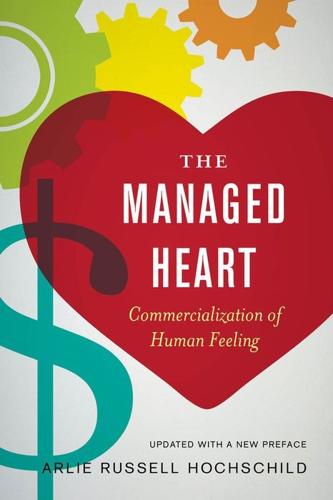
The Managed Heart: Commercialization of Human Feeling
by
Arlie Russell Hochschild
Published 1 Nov 1983
Many flight attendants told me that their counterparts on Lufthansa (the German national airlines) and even more on EI Al and Aeroflot (the Israeli and Russian national airlines) were notably lacking in assertive friendliness. t A black female flight attendant, who had been hired in the early 1970s when Delta faced an affirmative action suit, wondered aloud why blacks were not pictured in local Georgia advertising. She concluded: "They want that market, and that market doesn't include blacks. They go along with that." Although Delta's central offices are in Atlanta, which is predominantly black, few blacks worked for Delta in any capacity. 94 Public Life So the sexualized ad burdens the flight attendant with another task, beyond being unfailingly helpful and open to requests: she must respond to the sexual fantasies of passengers.
…
Journal of Applied Behavioral Science 9: 369-380. Index Abrahamsson, Bengt, 225n.l (Ch. 5) Acting. See Deep acting; Method acting; Surface acting Action language, 203 Advertising, by airlines, 5, 91, 92 -95, 182 Aeroflot,93n Affective deviant, 214-215, 219. See also Inappropriate feelings Affirmative action, 93n. See also Delta Airlines, minority employment by Age: devaluation of, 127, 130, 180n; regulations, 124 Aggressiveness:,by bill collectors, 139, 145,146; and emotionallabor, 163, 164; gender differences in, 260n.12 Air California, 124 A irline Guide to Stewardess and Steward Careers(l979-1980),95-96,119 Airlines: advertising by, 5, 91,92-95, 182; appearance codes for flight attendants, 101-103, 126-127, 178n; competition among, 91-92, 117,124,125,129,185-186, 255n.I (Ch. 6); concentration among, 91, 256n.4 (Ch. 6); cooperation among, 92n; deregulation of, 91, 123, 255n.2 (Ch. 6); discount fares, 123-124, 124-125; government-owned, 93n; price wars by, 91; ran kings of, 6,13,94,117, 243n.2; service as focus of competition among, 91-93,117,125,129,130; speed-up by, 8n, 90, 94-95, 121-126,127,131.SeealsoFlight attendants; Union, flight attendants' Alcohol use, 99,101,131 Alexander,James,206n Alienation, 7, 243n.3.
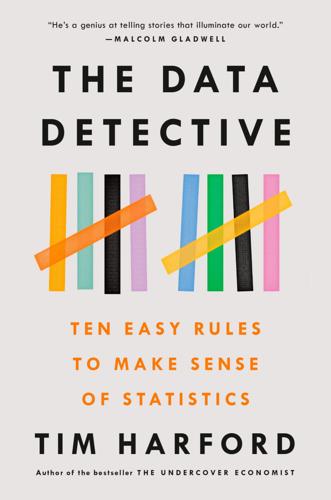
The Data Detective: Ten Easy Rules to Make Sense of Statistics
by
Tim Harford
Published 2 Feb 2021
Taber and Lodge were following in the footsteps of Kari Edwards and Edward Smith, whose work on politics and doubt we encountered in the introduction. As with Edwards and Smith, they wanted to examine the way Americans reasoned about controversial political issues. The two they chose were gun control and affirmative action. Taber and Lodge asked their experimental participants to read a number of arguments on either side and to evaluate the strength and weakness of each argument. One might hope that being asked to review these pros and cons would give people more of a shared appreciation of opposing viewpoints; instead, the new information pulled people further apart.
…
accessibility of data, 81, 132–34, 179–80, 183, 205–11 accountability, 180, 181 Active Lives Survey, 143 actively open-minded thinkers, 254–55 ad hominem attacks, 39 Adams, Douglas, 65 Adapt (Harford), 123 addiction, 5, 222 administrative data, 148–50. See also official statistics affirmative action, 33–34 age data and childhood mortality trends, 66–67, 91 and criminal justice data, 178 and defining “children,” 70n and divorce rates, 253n and evaluation of statistical claims, 133 and incidence of strokes, 98 and misuse of statistical methods, 117–19 and “priming” research, 121 and scale of numerical comparisons, 93–94 and self-harm statistics, 75 and smoking research, 4–5 and teen pregnancy, 55 and vaccination research, 53–54 aggressive behavior, defining, 70–71 AIDS, 28 alchemy, 171, 173–75, 173n, 179, 207 algorithms alchemy analogy, 175 and consumer data, 159–64 criminal justice applications, 176–79 and excessive credulity of data, 164–67 and found data, 149, 151, 154 and Google Flu Trends, 153–57 vs. human judgment, 167–71 pattern-recognizing, 183 and proliferation of big data, 157–59 and systematic bias, 166 and teacher evaluations, 163–64 trustworthiness of, 179–82 See also big data Allegory of Faith, The (Vermeer), 29–30 Allied Art Commission, 21 alternative sanctions, 176–79 altimeters, 172–73 Amazon, 148, 175, 181 American Economic Association, 186n American Statistical Association, 194 Anderson, Chris, 156 Angwin, Julia, 176 anorexia, 75 antidepressants, 126 anti-vaccination sentiment, 53–54 Apple, 175 Argentina, 194–95, 211 Army Medical Board (UK), 215 art forgeries, 19–23, 29–32, 42–45 Asch, Solomon, 135–38, 141–42, 260 assessable decisions, 180 astrology, 124 Atkinson, Tony, 83 atomic weapons, 90, 249–50 Attenborough, David, 277–78 authority, deference to, 138–39 autism, 53–54 automation, 128 Avogadro’s number, 246 Babbage, Charles, 219 Babcock, Linda, 27 Babson, Roger, 263 backfire effect, 129 Bad Science (Goldacre), 2 bail recommendations, 158, 169, 180 Bakelite, 32 Bank for International Settlements, 100–101 Bank of England, 256, 258 Bannon, Steve, 13 bar charts, 228, 234, 235 Bargh, John, 121, 122 barometric pressure, 172–73 Barrack Hospital, Scutari (Istanbul), 213–14, 220, 225, 233, 235 base rates, 253–54, 253n Battistella, Annabelle (Fanne Foxe), 185–86, 212 battlefield awareness, 58–59 Baumeister, Roy, 121, 122 BBC, 10, 276 behavioral data, 69–70 behavioral economics, 25, 27, 41, 96, 271.
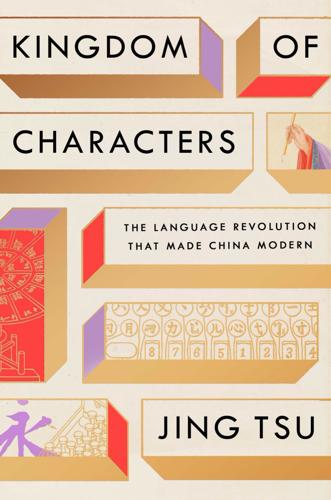
Kingdom of Characters: The Language Revolution That Made China Modern
by
Jing Tsu
Published 18 Jan 2022
A recent dissertation on the topic of Chinese Latinization and Soviet Turkish illiteracy campaigns provides new insight from a Eurasian-oriented perspective. See Ulug Kuzuoglu, “Codes of Modernity: Infrastructures of Language and Chinese Scripts in an Age of Global Information Revolution” (Ph.D. dissertation, Columbia University, 2018). Context for the Latinization of Chinese in Soviet language policy can be gleaned from Terry Martin, Affirmative Action Empire: Nations and Nationalism in the Soviet Union, 1923−1939 (Ithaca, London: Cornell University Press, 2001); Michael G. Smith, Language and Power in the Creation of the U.S.S.R., 1917−1953 (Berlin, New York: Mouton de Gruyter, 1998); A. G. Shprintsin, “From the History of the New Chinese Alphabet,” in D.
…
GO TO NOTE REFERENCE IN TEXT Already in the 1929 draft: Qu Qiubai, “Zhongguo ladinghua de zimu,” in Qu Qiubai wenji, vol. 3 (Beijing: Renmin wenxue, 1989), p. 354. GO TO NOTE REFERENCE IN TEXT Within a year of being reintroduced: Ni Haishu, Zhongguo pinyin wenzi yundongshi jianbian (Shanghai: Xiandai shubao, 1948), pp. 150−72. GO TO NOTE REFERENCE IN TEXT It was necessary, they argued: Terry Martin, The Affirmative Action Empire: Nations and Nationalism in the Soviet Union, 1923−1939 (Ithaca, London: Cornell University Press, 2001), pp. 199−200. GO TO NOTE REFERENCE IN TEXT One member, Ma Xulun: Fei Jinchang and Wang Fan, Zhongguo yuwen xiandaihua bainian jishi (1892−1995) (Beijing: Yuwen, 1997), p. 171.

The Bill Gates Problem: Reckoning With the Myth of the Good Billionaire
by
Tim Schwab
Published 13 Nov 2023
When the women in the office asked for back pay for all the overtime hours Gates had pushed them to work, he refused. They filed a complaint with the state, prompting Gates to throw a tantrum; he screamed so violently that his face turned purple. And the company, allegedly, didn’t hire its first female executives until it had to—to win a government contract that had affirmative action provisions requiring gender representation in the workforce. According to an anonymous Microsoft source quoted in Hard Drive, “They would say, ‘Well, let’s hire two women because we pay them half as much as we will have to pay a man, and we can give them all this other “crap” work to do because they are women.’
…
“I think it’s helpful to understand how organizations like Gates are sort of hand in glove with the elites, with the wealth in these countries.” Whereas Gupta said the Gates Foundation “reproduces that hierarchy in the public health world,” the Indian government’s work is subject to certain affirmative action–like hiring rules that encourage some level of socioeconomic diversity—for example, related to caste—that can chip away at elite privilege. * * * FOR BILL GATES, few public health interventions have the impact, the lifesaving impact, of vaccines. So, in the mid-2000s, when a new vaccine was approved for the human papillomavirus (HPV), which can cause cervical cancer, the Gates Foundation immediately endorsed it in a big way—even though the foundation doesn’t generally work on cancer.
…
Bill Gates claimed the interactions were consensual; ArentFox Schiff, Memorandum to Microsoft Board of Directors, “Transparency Report on Shareholder Resolution Project,” November 11, 2022, https://blogs.microsoft.com/wp-content/uploads/prod/2022/11/Final-Microsoft-Transparency-Report.pdf. speeding tickets driving his Porsche: Wallace and Erickson, Hard Drive, 240–41. “on-again, off-again romance”: Wallace and Erickson, Hard Drive, 415–16. his face turned purple: Wallace and Erickson, Hard Drive, 162–63. affirmative action provisions: Wallace and Erickson, Hard Drive, 291. opening up the company to women: Melkorka Licea, Ashley Stewart, Rob Price, and Becky Peterson, “Insiders Say Bill Gates Was an Office Bully Who Pursued Sexual Affairs, and That His Squeaky-Clean Image Was Merely Good PR,” Business Insider, June 21, 2021, https://www.businessinsider.com/bill-gates-melinda-divorce-affairs-bully-womanizer-2021-6?
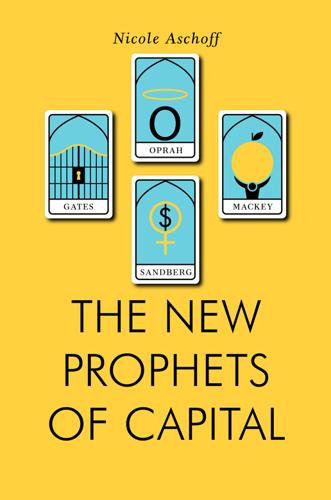
The New Prophets of Capital
by
Nicole Aschoff
Published 10 Mar 2015
Who would ever choose work over life?12 Women’s decisions to give up on their ambitions as adults are often the result of learned dispositions and habits acquired during childhood. But despite this socialization and its long-term effects, Sandberg doesn’t really believe in glass ceilings or see the need for affirmative action. She thinks the main force holding women back—at least educated women—is their own hang-ups and fears. Women don’t need favors, they just need to believe in themselves. “Fear is at the root of so many of the barriers that women face … Without fear, women can pursue professional success and personal fulfillment.”13 Deborah Gruenfeld calls Sandberg a post-feminist—a woman who believes that “when you blame someone else for keeping you back, you are accepting your powerlessness.”14 So how should women take power and the corner office?
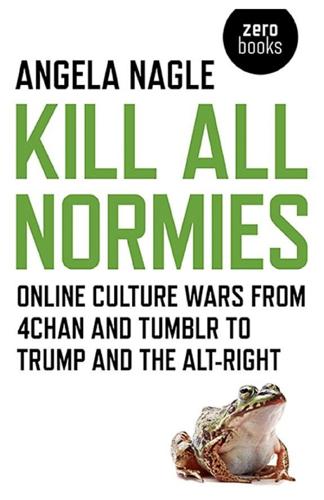
Kill All Normies: Online Culture Wars From 4Chan and Tumblr to Trump and the Alt-Right
by
Angela Nagle
Published 6 Jun 2017
When asked if he considered himself connected to the alt-right, he said: ‘They’re much younger, they’re basically guys in their twenties and thirties. Some people I know walked out of it—they’re not into Sieg Heil, they’re not into this stuff… the media loves this stuff, they can’t get enough of it.’ The conservative culture war of the 90s had tried to push back against the enormous gains of the cultural left over abortion, affirmative action, art, censorship, evolution, family values, feminism, pornography and the Western canon. Buchanan’s style was more pugilistic than most of the Republican mainstream was willing to risk and his culture war speech remains an undeniably brilliant piece of writing and oratory, as well as one of the most important speeches in US history.
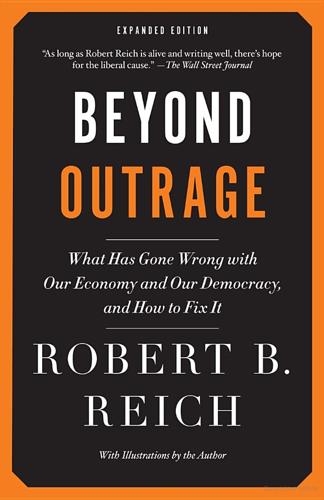
Beyond Outrage: Expanded Edition: What Has Gone Wrong With Our Economy and Our Democracy, and How to Fix It
by
Robert B. Reich
Published 3 Sep 2012
But a large portion of charitable deductions claimed by the wealthy go not to the poor. They go to culture palaces—operas, art museums, symphonies, and theaters—where the wealthy spend much of their leisure time, and to the universities they once attended and expect their children to attend (perhaps with the added inducement of knowing that these schools often practice affirmative action for “legacies”). I’m all in favor of supporting the arts and our universities, but let’s face it: These aren’t really charities, as most people understand the term. They’re often investments in the lifestyles the wealthy already enjoy and want their children to have too. They’re also investments in prestige—especially if they result in the family name being engraved on the new wing of an art museum or symphony hall.
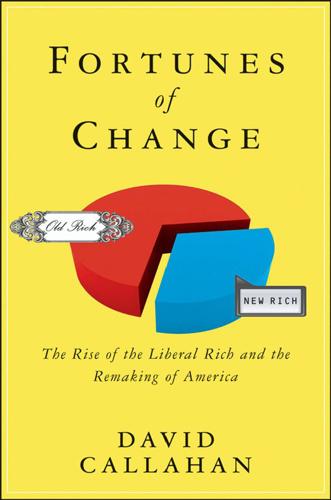
Fortunes of Change: The Rise of the Liberal Rich and the Remaking of America
by
David Callahan
Published 9 Aug 2010
Johnson to join the war on poverty with voluntary actions to lift up the poor and minorities. It would not be until the early 1970s that a real opening emerged for Friedman’s arguments. This period saw rising foreign competition, a falling U.S. stock market, and new regulations around the environment and consumer product safety. The 1970s also saw growing demands for corporate affirmative action for women and minorities. Thus it was that Friedman hit a nerve when he reprised key points of Capitalism and Freedom in a 1970 article in the New York Times Magazine titled “The Social Responsibility of Business Is to Increase Its Profits.” The article, which was widely read and discussed, took aim at the executives who claimed that “business is not concerned ‘merely’ with profit but also with promoting desirable c10.indd 216 5/11/10 6:25:46 AM the corporate liberal 217 ‘social’ ends; that business has a ‘social conscience’ and takes seriously its responsibilities for providing employment, eliminating discrimination, avoiding pollution and whatever else may be the catchwords of the contemporary crop of reformers.”
…
Almost nine in ten agree that they are motivated by public relations or profitability, or by both concern and business benefits in equal measure.”10 Findings like this might confirm the cynical view that CSR is a sham. On the other hand, evidence is everywhere of real change. Fifty years ago, top U.S. companies were pillars of an all-male, all-white power structure; today, many Fortune 500 companies embrace women’s and civil rights, at least in their official policies. Even as Republicans bashed affirmative action during the 1980s and the 1990s, corporate America moved in the opposite direction, and diversity emerged as a key goal in boardrooms. Something similar has been happening with gay rights during the last decade. Even as conservatives sounded the alarm about a growing acceptance of the “gay lifestyle,” most Fortune 500 companies moved to bar workplace discrimination based on sexual orientation.

What's Next?: Unconventional Wisdom on the Future of the World Economy
by
David Hale
and
Lyric Hughes Hale
Published 23 May 2011
President Obama can veto any GOP attempt to abolish the agency. Except for auto loans, the agency may regulate “abuses” in most financial products. However, as Congress should have learned from the credit card penalty fiasco, firms demand a reasonable rate of return. If forced to cut some fees, they will raise others. Finally, Dodd-Frank creates affirmative action offices in every regulatory agency. Discrimination was already illegal, but financial firms can expect a lot more paperwork, as well as implicit pressure to meet hiring quotas. Impact of the Midterm Elections By many standards, the November 2010 elections were historic; among other things, the Republican Party not only recaptured the US House of Representatives, they won their biggest majority in more than half a century.
…
He was Global Head of Advertising for UBS Bank, Head of Corporate Brands for Zurich Financial Services, and Head of Corporate Communications for Westpac Financial Services. He also founded his own marketing company. His upcoming book, The Big Mo (to be published in 2011), focuses on the increasing influence of large-scale momentum on our world. INDEX Abe, Shinzo, 105 Abedian, Iraj, xxii addiction, 298 affirmative action, 267 Afghanistan, 204 Africa, xv African National Congress (ANC) Alliance, xxii–xxiii, 128, 135–136 African Union, 121 aging populations, 27–26, 258 agriculture, in Japan, 110–112; in South Africa, 130–131 Ahmadinejad, Mahmud, 207–208, 210–211, 214 AIG, 139–140 Al-Naimi, Ali I., 195 alternative energy, 40, 181, 190–191, 193–194 American Clean Energy and Security Act, 27 AMLO.
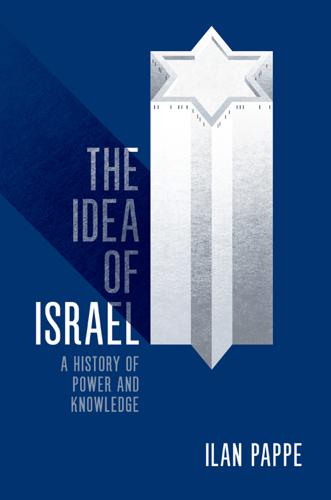
The Idea of Israel: A History of Power and Knowledge
by
Ilan Pappe
Published 30 Apr 2012
Hispanic, gender, African American, and gay histories were now offered, along with similar perspectives on culture, literature and other fields of inquiry. At times the debate was regarded as a war, because in some circles it was held that for these points of view to be fairly represented in academia, members of those very groups were the best candidates to put them across. Affirmative action and positive discrimination were sometimes the solution. Lawsuits, the disintegration of departments, and the sacking of staff members were the more extreme manifestations of this discussion. But, as in any academic war, nobody died or was even wounded. Israeli academics tried to follow suit.
…
Palestinians, Mizrachi Jews, and in particular Palestinian and Mizrachi women, constitute a mere fraction of the ten thousand or so members of staff in Israeli academia (less than one per cent for Palestinians, 9 per cent for Mizrachi Jews, and one per cent for Mizrachi women).39 For the Israel academic to be able even to experiment with what is called affirmative action – and I say ‘experiment’ because I am aware of the drawbacks of this technique – these scholars had to become activists against Zionism. For most of them, however, political activism did not go beyond writing articles or books. The price would have been too high. Demanding representation of other groups was thus a complex and risky endeavour.

An Extraordinary Time: The End of the Postwar Boom and the Return of the Ordinary Economy
by
Marc Levinson
Published 31 Jul 2016
Many factors influenced the development of the late twentieth century, from the worldwide movement for gender equity to an intense East-West confrontation that spawned proxy wars across the globe, from the revival of religious fundamentalism to the reunification of Europe following the collapse of the Iron Curtain in 1989. And, of course, every country had its unique political and social concerns. It is these—affirmative action in the United States, the battles over language and separatism in Canada and Spain, the re-establishment of democratic governments in Korea and across South America—that tend to fill the airwaves and the history books. Yet in a way that has generally gone unappreciated, these factors played out in the wake of sweeping changes that buffeted the global economy and left citizens anxious and ill at ease.
…
Believers in free markets had devoted years of patient investment to building an intellectual superstructure of think tanks and university research institutes to stand against the welfare state. Alongside it, starting in the 1960s, they had fostered a network of grassroots groups united by their resentment of various social and legal changes—busing of children to schools outside their neighborhoods to achieve racial integration; easier access to abortion; “affirmative action” policies to promote integration in the workplace; more widespread sex education in the schools—and committed to using the Republican Party as the vehicle to reverse those changes.26 But these concerns had not yet carried enough weight to swing US politics decisively to the right. In 1976, when Reagan became the conservatives’ spear carrier, a more traditionally moderate Republican president, Gerald Ford, managed to deny him the party’s presidential nomination.

A Concise History of Modern India (Cambridge Concise Histories)
by
Barbara D. Metcalf
and
Thomas R. Metcalf
Published 27 Sep 2006
The situation in Kashmir, unfinished business from the 1947 partition, became one of virtual civil war, and, like the stunning decision to test nuclear devices in 1998, meant that tensions with Pakistan continued. Class or caste tension was also evident from the start of the decade with protests against implementation of the Mandal Commission’s report in favour of additional affirmative action; and it continued with periodic episodes of violence against the lowest classes. Serious disabilities still faced women, with ‘dowry deaths’ the most flagrant sign of their lack of power. The unfavourable sex ratio in India, and in the subcontinent as a whole, was a more important clue to the differential health care and nutrition for girls and women characteristic of a society with continuing extreme poverty.
…
By September 1990, Delhi was at a standstill as high- and low-caste groups across north India fought and demonstrated. There were even cases of upper- and middle-class students, shown in photographs flashed across the country, setting themselves ablaze in protest. The BJP withdrew its support from the government. They and other opponents argued, as do opponents of affirmative action in the United States, that such programmes fostered social divisions, failed to reward merit, and benefited only the better-off in the disadvantaged groups. In 1992 the Supreme Court upheld the legality of the commission report and the government moved to its implementation. The Mandal crisis coincided with a dramatic escalation on the part of the BJP, with its allied Vishva Hindu Parishad, the World Hindu Council, of their simmering demand to build a Ram temple at the precise site of a 1528 Mughal mosque in the north Indian town of Ayodhya.

Chasing the Moon: The People, the Politics, and the Promise That Launched America Into the Space Age
by
Robert Stone
and
Alan Andres
Published 3 Jun 2019
The Right Stuff was written while the U.S. Supreme Court was considering the most decisive affirmative-action case of the decade, while the Equal Rights Amendment was awaiting state ratification, and as the first classes of women were attending the U.S. Air Force, Coast Guard, Military, and Naval academies. At the book’s conclusion, Wolfe specifically signifies the twilight of the age of right stuff with Ed Dwight’s experience at Edwards, presenting his story as a misguided early attempt at government-enforced affirmative action. Released a year before the 1980 election of Ronald Reagan, The Right Stuff appealed to readers eager to remember an America when a president could inspire the nation to take on daunting challenges—even beating the Soviet Union in a race to the Moon.

Super Thinking: The Big Book of Mental Models
by
Gabriel Weinberg
and
Lauren McCann
Published 17 Jun 2019
If your rich grandfather leaves his fortune to all his kids equally, that would probably be perceived as fair from a distributive justice perspective. However, if one of the kids was taking care of your grandfather for the last twenty years, then this distribution no longer seems fair from a procedural justice perspective. Many current political debates around topics such as income inequality and affirmative action revolve around these different formulations of justice. Sometimes this distinction is framed as fair share versus fair play. For example, in the U.S., K–12 public education is freely available to all. Because of this educational access, some conclude that everyone has an equal opportunity to become successful.
…
Others believe that the quality of public educational opportunities differs widely depending on where you live, and that education itself doesn’t grant access to the best advancement opportunities, which often come through family and social connections. From this latter perspective, fair play doesn’t really exist, and so there needs to be some corrections to achieve a more fair share, such as affirmative action or similar policies. As Martin Luther King Jr. put it in a May 8, 1967, interview with NBC News: “It’s all right to tell a man to lift himself by his own bootstraps, but it is a cruel jest to say to a bootless man that he ought to lift himself by his own bootstraps.” In any case, perceived unfairness triggers strong emotional reactions.
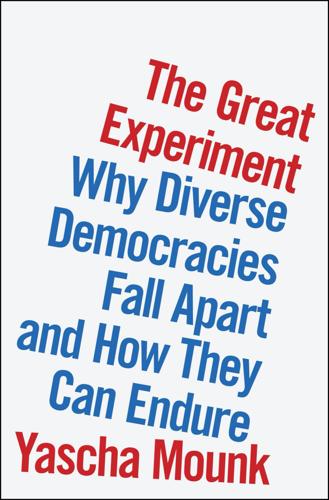
The Great Experiment: Why Diverse Democracies Fall Apart and How They Can Endure
by
Yascha Mounk
Published 19 Apr 2022
(The US Census answers this question in the affirmative.) Is somebody a Native American because they have some pertinent ancestry, or do they need to be officially recognized by a relevant tribe? (Many Native Americans protested when Elizabeth Warren argued the former.) And should the children of recent African immigrants be eligible for affirmative action programs whose goal it is, in part, to redress the lingering injustices caused by slavery? (A new activist group, the American Descendants of Slavery, believes that they shouldn’t.) There is nothing natural about the specific racial categories that animate so much of our contemporary politics.
…
A B C D E F G H I J K L M N O P Q R S T U V W X Y Z A Abi-Nassif, Marie-Joe, 77–78 abolition of slavery, 61, 286 Academy of Dijon, 257 Acemoglu, Daron, 114 Acton, John Emerich Edward, Baron, 115 affirmative action, 41 Afghanistan, 59–60, 222 Africa, 42–45, 134, 222 African Americans and American identity, 325n209 and “challenger ideology,” 180 and conflict driven by diversity, 8–9 and demographic trends in US, 232, 241, 244, 249 and “intergroup contact” hypothesis, 88, 89–90 and jobs and education gaps, 3, 328n219 and legacy of social domination, 11, 216–20, 255 and policies supporting universal solidarity, 264, 266 and power-sharing arrangements, 80 and primordial view of social groups, 37 and prospects for diverse democracies, 286 socioeconomic and education trends, 212–13, 219–20 After Virtue (MacIntyre), 106 Alba, Richard, 247 Albanians, 206 alcohol consumption, 37 Ali, Mohammad, 136 Aligarh, India, 85, 91–92 Ali Khan, Saif, 113–14 Allport, Gordon W., 87–90 American Descendants of Slavery, 41 American Political Science Association, 76, 338n270 anarchy, 52–56, 80.

American Foundations: An Investigative History
by
Mark Dowie
Published 3 Oct 2009
According to MacDonald, everything changed in the 1960s when the Ford Foundation "flowered into an activist socially conscious philanthropy, [and] pioneered the idea that foundations would improve the lot of mankind not by building lasting institutions but by challenging existing ones." These "liberal leviathans" conceived of themselves as "laboratories for the welfare state" and bankrolled the "massive affirmative action machine" that imposed racial quotas throughout American society, leaving the country with an array of troublesome institutions. "The NAACP," MacDonald alleges, "would be nowhere without foundation support."47 "Big philanthropy in this country has had little if anything to do with good works as that term is generally understood," Chester Finn writes to Microsoft Chairman Bill Gates, "and still less to do with buttressing the institutions and values of a free society.
…
Its think tanks, legal centers, and new media outlets workin concert to project a basic conservative message-smaller government and freer markets-to American voters. The labyrinth is funded by a dozen medium-sized, virtually unknown foundations that abandoned their earlier disapproval of political activism and began committing major funds (in some cases their entire funding budget) to combat the welfare state, public education, affirmative action, environmental regulation, homosexuality, and a host of other cultural expressions they perceived as disruptive of the values of the nuclear family.52 With combined assets of just over $1 billion, the "dangerous dozen," as they are described by some liberals, donated about $300 million between 1992 and 1994, about 70 percent of it to conservative political causes and institutions.

Challenger: A True Story of Heroism and Disaster on the Edge of Space
by
Adam Higginbotham
Published 14 May 2024
Despite the obvious political benefits that NASA might gain from selecting a Black candidate for spaceflight, Webb explained that it had so far chosen astronauts on strictly technical grounds; to adopt any wider criteria “would be inconsistent with our agency’s policies.” But when that year NASA and the Air Force jointly announced a list of fifty test pilots who would be candidates for future missions in space, the White House was already taking an interest. President Kennedy had recently signed an executive order implementing affirmative action, to bring equal opportunity principles to federal agencies, and NASA was not about to escape scrutiny. So a special assistant to the President sent a memo to his opposite number at the Pentagon requesting information about the possible selection of minority astronauts. It was important, the assistant wrote, that “for symbolic purposes in crossing the frontiers of space, this country have qualified members from minority backgrounds.”
…
Both pilots and Mission Specialists would have to commit to two years of training in Houston before final selection and—if successful—would then be expected to sign on to serve as an astronaut with NASA for a minimum of five years. For all candidates, the pamphlets explained, the agency was embracing an affirmative action program: women and minorities were “encouraged to apply.” While the announcement garnered little attention in the media, Navy, Air Force, and Marine pilots and flight engineers at combat bases and airfields around the world began studying the NASA rubric carefully; the call for new astronauts had, predictably, electrified the entire brotherhood of American military aviators
…
In Boston, McNair was shocked to encounter racism of a type he had never expected to find in a supposedly enlightened northern city he regarded as “the cradle of liberty”: strangers muttered hateful epithets behind his back on the street; on one occasion a gang of white men chased him from practicing karate in the park; his brother Carl’s car was stolen, vandalized, and abandoned, left with racial slurs etched into the bodywork. At MIT, McNair was among only a handful of Black students scattered across the campus, and some of his fellow scholars clearly felt that affirmative action had granted him a place that might have gone to a better-qualified white candidate. He fell back on the lesson that both his parents and teachers had instilled in him as a child: if being Black meant that he had to work harder than his white peers to prove himself, then that is what he would do—and without complaint.
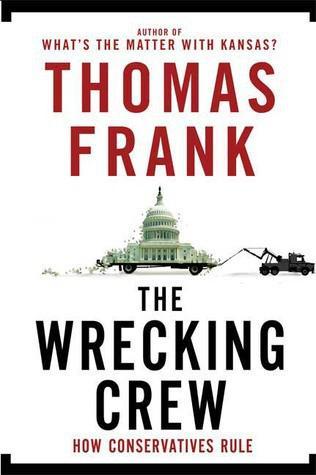
The Wrecking Crew: How Conservatives Rule
by
Thomas Frank
Published 5 Aug 2008
Conservatives thought they could spot bullshit a mile away; they saw lies and theft and even extortion in every bit of liberal legislation; and they were champion accusers, charging their enemies with corruption almost as a matter of course. Bribery? Well, the wingers would demand, what do you call all the subsidies and welfare and food stamps and affirmative action and Social Security benefits that flow from Uncle Sam to the “special interests” who keep returning these damned liberals to Congress? Self-aggrandizement? How about the vast army of bureaucrats and Washington “experts” whose only concern is to grab more power for themselves, to exert control over every little aspect of the economy?
…
But in 1997, when Gingrich gave up his confrontational stance against President Clinton and decided to give a balanced budget priority over tax cuts, a large chunk of the conservative movement joined the rebellion against him. “Who is the most powerful liberal in American politics?” wrote Pete King, a Republican congressman from New York, referring to Gingrich. He has prevented the Republican majority in Congress from addressing affirmative action and race-based quotas. He has forced congressional Republicans to shelve their drive to defund the National Endowment for the Arts. He has stood firm against tax cuts. He is a confidant of Jesse Jackson’s. He is a pal to Alec Baldwin. He is a cheerleader for bipartisan cooperation at any cost and a pious opponent of the unspeakable horrors of harsh partisan rhetoric.
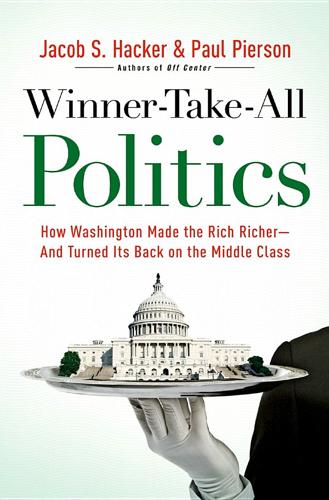
Winner-Take-All Politics: How Washington Made the Rich Richer-And Turned Its Back on the Middle Class
by
Paul Pierson
and
Jacob S. Hacker
Published 14 Sep 2010
In that conservative region, Democrats would continue to cede ground to ascendant Republicans. In other respects, however, developments in the party more closely tracked the DLC blueprint—and by 1992 would emerge in full form in the “New Democrat” campaign of Bill Clinton. The party’s appeals began to mute aspects of cultural liberalism on guns, affirmative action, and crime, and took a tougher line on national defense. Proposals for welfare reform were structured to send a reassuring message to moderate voters about work and family. Yet the DLC’s reformation project was clearly as much or more about economics. Most of the group’s leaders had built careers on a business-friendly posture, and they pushed to make that stance more prominent in the Democratic Party.
…
Bush (Naperville, IL: Sourcebooks, 2003), 106; Michael Sandel, “Obama and Civic Idealism,” Democracy 16 (Spring 2010): 10. Index Page numbers in italics refer to figures and tables. abortion, 145–46, 147, 179, 202, 235 Abramoff, Jack, 199 Adams, John, 77 advertising, 104, 105–6, 171, 176, 206, 251, 277, 283, 295 affirmative action, 181 AFL-CIO, 57, 97, 129, 140, 218, 276 agenda-setting, 123–26, 168–70, 179–80, 259–62, 268, 286–88 agribusiness, 280 agriculture, 84, 85, 108, 189, 246, 280 AIG, 261 airlines industry, 119, 184 air-traffic controllers strike (1981), 58–59, 186–87, 191 Alliance for Worker Retirement Security, 144 Almond, Gabriel, 144 Alternative Minimum Tax (AMT), 49–50, 215–18 Amar, Akhil, 76 amendments, constitutional, 86, 201, 266, 294 American Bankers Association, 124–25, 292 American Council for Capital Formation, 124–25 “American Democracy in an Age of Rising Inequality,” 150 American Enterprise Institute (AEI), 123 American Federation of Labor (AFL), 140 American Legion, 138, 143, 144 “American Option,” 266, 267, 302; see also DeMint, Jim American Petroleum Institute (API), 144, 274 American Political Science Association, 150 Americans for Financial Reform, 275, 285, 292 Americans for Limited Government, 284 Americans for Prosperity, 284 Americans for Tax Reform (ATR), 208, 209–10, 284 Americans with Disabilities Act (1990), 192 America’s Health Insurance Plans (AHIP), 275 antitrust regulation, 71, 80 approval ratings, 165, 258, 268, 282 Archey, William, 206 Armey, Dick, 190, 200, 201, 209, 210, 241, 283 Articles of Confederation, 297, 298–99 Association of State Democratic Chairs, 176 “Astroturf” organizations, 144, 274 Babbitt, Bruce, 181 Bai, Matt, 260 Balz, Daniel, 192 banking industry: bailouts of, 1–2, 71, 198, 226, 249–50, 254, 261 commercial, 69, 71, 197, 249–50, 275 deregulation of, 69, 185, 196, 197–98 government regulation of, 69, 71, 80, 185, 196, 197–98, 282 investment, 69, 71, 197, 229, 249–50 mortgages issued by, 2, 32–33, 197–98, 216, 301 risk management by, 1–2, 44, 45–46, 115 tax reforms opposed by, 89 Bartels, Larry, 110–12, 151–52, 160, 167, 234 Bartlett, Bruce, 267 Baucus, Max, 238–39, 245, 260, 267, 268, 273–74 Bayh, Evan, 239 Beane, Billy, 234 Bear Stearns, 67, 70 Bebchuk, Lucian, 63, 64 Beck, Glenn, 284, 294, 339n Beilenson, Tony, 128 Bernanke, Ben, 34, 267 Berry, Jeffrey, 145, 146 Biden, Joseph, 260 Billings, Robert, Sr., 203 bipartisanship, 100, 183, 185, 186–88, 190, 191–93, 212, 219, 230–31, 233, 259–62, 267–68, 293–300 Blankfein Lloyd C., 1, 2 Bloomberg, Michael, 225, 256 boards of directors, 63–64, 65 Boehner, John, 275, 292, 294 Bogle, John, 63, 229 Bok, Derek, 141 bonuses, 2, 67, 70 Born, Brooksley, 198, 249 Boxer, Barbara, 240, 247 “bracket creep,” 187, 216 Bradley, Bill, 243 Brandeis, Louis, 80–81 Breaux, John, 6, 181, 183, 184, 239, 245 “Broadland,” 15, 17, 24–25, 25, 26, 194, 290 Brock, William, 172–73, 174, 175, 176, 265–66 Brokaw, Tom, 156 Broockman, David, 269 Brookings Institution, 123, 124 Brooks, David, 147 Browder, Earl, 67 Browder, William, 67 Brown, Scott, 282, 284, 287 Brownstein, Ronald, 192 Bryan, William Jennings, 170–71 Buckley, William F., Jr., 221–22 Buffett, Warren, 229, 249 Bush, George H.

Brazillionaires: The Godfathers of Modern Brazil
by
Alex Cuadros
Published 1 Jun 2016
The average poor white kid gets better schooling than the average poor black kid. Brazil’s best universities are state-run and cost nothing but are so competitive that, given the crappiness of basic public education, it’s very hard to get in unless you can afford private school or private tutoring. When public universities adopted affirmative action starting in the early 2000s, many white Brazilians were outraged. TV Globo’s news chief, Ali Kamel, wrote a book titled Não Somos Racistas (We Are Not Racists) in which he complained that the quotas undermined the principle of meritocracy. It’s a curious position for the employee of a company whose current owners were born into their places at the top of the pyramid.
…
I started to feel this, immersed in Lemannland. As a concept it’s hard to argue with, but as it travels, it gets diluted. Among well-to-do Brazilians, meritocracia became an incantation against the mediocrity of government and those who survive on its teat. That book by the Globo exec—We Are Not Racists, which called affirmative action unfair—was one example. Once I met a twenty something named Beth who complained about Bolsa Família, the welfare program; she had attended private school, still lived with her parents, and worked at her father’s textile company. My dentist shared Beth’s disdain. “Some of us, like you and me, have to work,” she told me once while poking an instrument in my mouth.
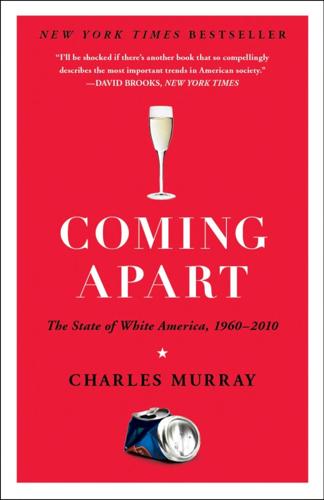
Coming Apart: The State of White America, 1960-2010
by
Charles Murray
Published 1 Jan 2012
The opening of elite schools to the academically talented of all backgrounds was not accompanied by socioeconomic democratization of those schools. On the surface, it looked as if things had changed. The proportion of students coming from socially prominent families dropped. The proportion that came from exclusive prep schools dropped. The de facto quotas on the number of Jews who would be admitted were dropped. Affirmative action increased the representation of African Americans and Latinos on elite campuses. The numbers of Asian American students increased manyfold through the force of their superb credentials.15 But despite these changes, the student bodies of the elite schools were still drawn overwhelmingly from the upper-middle class.
…
The result is that each level of educational attainment—high school diploma, AA, BA, MA, and professional degree or PhD—implies a mean IQ for people attaining that level that has been remarkably stable among whites at least since the beginning of the 1980s. I must limit the numbers to whites as I present these data, because aggressive affirmative action has produced means for African Americans and Latinos at each level of educational attainment that are substantially lower and more variable than the white means.30 But since we are talking about the new upper class, there are good reasons to think in terms of the white means—partly because African Americans and Latinos who enter the new upper class have passed a number of career tests signifying that they approximate the white means on cognitive ability for each level of educational attainment, and partly because the new upper class is still overwhelmingly white.31 Table 2.1 shows the evidence for these stable means.
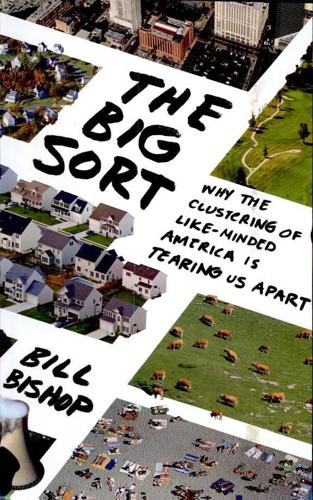
The Big Sort: Why the Clustering of Like-Minded America Is Tearing Us Apart
by
Bill Bishop
and
Robert G. Cushing
Published 6 May 2008
In the same election, 67 percent of the people in El Paso County (Colorado Springs) had voted for George W. Bush. Schkade and Sunstein screened participants—in order to pick liberals from Boulder and conservatives from Colorado Springs—and then measured the individual opinions of these citizens about three issues: global warming, gay marriage, and affirmative action. True to form, the Boulder citizens were initially more liberal on these issues than the participants from Colorado Springs. Schkade and Sunstein then divided the citizens from the two cities into batches of six—making ten groups, five from each city. The groups were then asked to discuss the three issues, to deliberate, and then to come to a consensus on the same questions each participant had been asked individually.
…
Descriptions and videos of Elliott's experiment can be found at http://www.janeelliott.com/index.htm. [back] *** * Schkade and Sunstein assigned a simple ten-point scale (ranging from very strongly agree to very strongly disagree) that participants marked in answering three questions, one each about affirmative action, global warming, and gay marriage. The difference between the answers given by the individuals from Colorado Springs and those given by the individuals from Boulder averaged 4.59 points before deliberation After deliberation, the difference between the groups had grown to 6.24. [back] *** * GIuckman quoted T S.
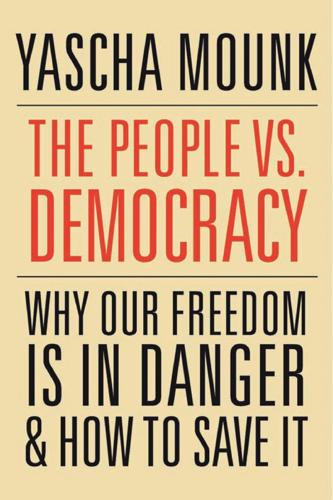
The People vs. Democracy: Why Our Freedom Is in Danger and How to Save It
by
Yascha Mounk
Published 15 Feb 2018
Californians gave a big victory to a governor who staked his reelection campaign on strident anti-immigration rhetoric. Taking advantage of the state’s highly democratic constitution, which allows for popular referenda on a large range of issues, they then excluded undocumented immigrants from public benefits; forbade public universities from practicing affirmative action; and banned bilingual education in schools.57 At the time, observers were understandably worried about the future of race relations in California. But in the 2000s and 2010s, the fever somehow broke. Most Californians grew comfortable with the fact that high levels of immigration were a part of the local experience, and that the state had become “majority minority.”
…
Had I not met her, I would not begin to understand just how rich life becomes when you decide to enmesh your happiness with that of the person you love. Index Abortion, 71 Absolute income mobility, 154–155 Absolute monarchy, 13, 54 Accountability, 69, 95, 125, 241–242 Activists, 143, 150, 187–189, 238 Adams, John, 56–57 Addicting Info, 241 Affirmative action, 178 African Americans, 142, 206; and civil rights movement, 70, 207–209; cultural appropriation by, 204; in Estonia, 176; segregation of, 70–71, 200, 202, 208, 211–212; and slavery, 169, 199–200; Trump’s attitude toward, 192 Africans: cell phone use by, 147–148; as migrants, 176 Agriculture, 91, 222 Agrippinus, 263–265 Aid to Families with Dependent Children, 218 Akron, Ohio, 192 Alabama, 209 Alessi, Christopher, 68 Algeria, 109 Allason, Rupert, 78–79 Allport, Gordon, 171 Alternative for Germany, 48–51, 166, 170 America First, 42, 201 American Association of Retired Persons, 77 American Idol, 58 Americanism, 42 American Renaissance, 145 American Revolution, 195, 247 Anderson, Benedict, 210 Ankara, Turkey, 7 Anti-Semitism, 129, 240 Anton, Michael, 174 Apple, 224 Arab Spring, 142, 149 Arcadia County, WI, 173 Argentina, 4 Aristocracy, 57 Aristotle, 162 Armenians, 209 Ascriptive identity, 214, 233 Asian Americans, 169, 199–200, 206 Assembly, freedom of, 127 Association, freedom of, 26–27 Athens, Greece, 7, 243; ancient, 13, 56–57, 151, 161–162, 253 Atlantic, 142 Austerity measures, 11–12 Australia, 2, 123; attitude toward democracy, 106–107; political radicalism of youth, 121; populism in, 7; support for authoritarian leader, 112; support for military rule, 111 Austria: elections in, 42, 188; immigration in, 166; Nazi past, 114; populism in, 2, 33, 42, 122, 166, 188; youth vote, 122 Austrians, 163 Austro-Hungarian Empire, 163, 195 Authoritarianism, 32, 73, 104–105, 113, 146; American attitude toward, 5, 108–112; and civic education, 245; competitive, 93; and elections, 111–113; in Hungary, 2, 252, 254, 257; increasing openness toward, 108–112, 120, 123–124; in India, 188–189, 256–257; in Philippines, 254, 256; in Poland, 2, 128, 188–189, 252, 254–257; and populism, 51, 190, 236, 252–257; in Russia, 2, 35, 188; in South Korea, 185, 255; support for, 5, 112; and Trump as authoritarian leader, 2, 31, 188–189, 200, 254, 257, 260–261; in Turkey, 2, 35, 186, 188, 198, 255–257; in Venezuela, 35, 188, 255 Autocracies.
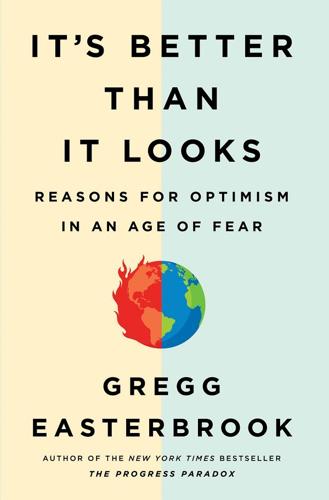
It's Better Than It Looks: Reasons for Optimism in an Age of Fear
by
Gregg Easterbrook
Published 20 Feb 2018
In the United States, slavery and then Jim Crow laws, as well as atrocities against Native Americans, along with violation of treaties they signed and the Senate ratified; British, Spanish, Portuguese, and Dutch participation in the slave trade; British, French, Spanish, Portuguese, Belgian, and Dutch colonial oppression. Many other democratic nations and cultures have committed grave offenses. Contemporary Americans tend to think of slavery as a moral outrage that was corrected by the Thirteenth Amendment and of segregation as a political outrage that was corrected by civil rights legislation and affirmative action. As the writer Ta-Nehisi Coates has noted, slavery and segregation also were economic institutions, and these legacies are far from corrected. “The ghettoes of America are the direct result of decades of public-policy decisions: the redlining of real-estate zoning maps, the expanded authority given to prosecutors, the increased funding given to prisons,” Coates wrote in 2017.
…
But if being perceived as a victim leads to benefits, there may be a logic to desiring this station. After all, schools were teaching that society abuses all who lack wealth, so why shouldn’t whites, the majority of whom are not wealthy, be seen as victims? Schools and employers were granting special treatment to favored groups through affirmative action and other programs—why shouldn’t whites seek special treatment? Perhaps the swearing-in of the first African American president allowed American whites to begin to think of themselves as, for the first time, on the short end of the stick. In the hands of the white majority, the notion of victimhood has proven powerful, simply because, in the United States and United Kingdom, there are more whites than other types of people combined.
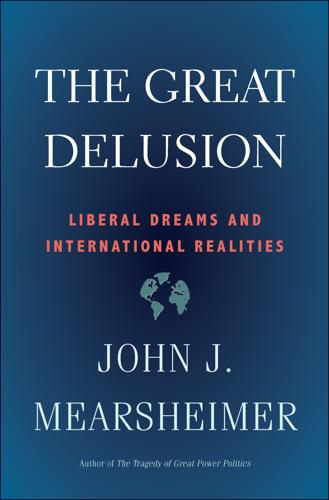
The Great Delusion: Liberal Dreams and International Realities
by
John J. Mearsheimer
Published 24 Sep 2018
All of these questions deal with first principles: the essential guidance for how we think and act. To put the questions in more concrete terms: What does reason tell us about which religion, if any, provides the true guide to how we should lead our daily lives? Can we reason our way to the ideal political system? Can our critical faculties resolve debates about abortion, affirmative action, or capital punishment? Can they settle conflicts between individual rights, such as when one person’s freedom of speech clashes with another’s right to privacy? What does reason say about whether we should treat outsiders differently from members of our own society, or when it is permissible to make war on other countries?
…
Thus it is hard to believe, given the limits of our critical faculties, that there can be anything close to universal agreement on whether rights are inalienable, what they should be, and which ones should take precedence. There is a fundamental disagreement between modus vivendi and progressive liberals over whether individuals have a right to equal opportunity, and over positive rights more generally. Well-informed, well-meaning citizens disagree profoundly over whether there is a right to abortion or to affirmative action. These are matters that deal with the good life, and they show that we should not expect reason to provide collective truths. To take this a step further, placing rights at the core of any political system is tantamount to saying that the best political order is a liberal one. It is difficult to imagine how it is possible to privilege rights in the absence of a liberal or at least quasi-liberal state.
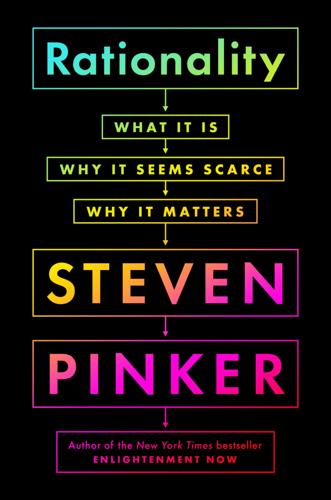
Rationality: What It Is, Why It Seems Scarce, Why It Matters
by
Steven Pinker
Published 14 Oct 2021
It’s called, obviously enough, the myside bias, and it commandeers every kind of reasoning, even logic.27 Recall that the validity of a syllogism depends on its form, not its content, but that people let their knowledge seep in and judge an argument valid if it ends in a conclusion they know is true or want to be true. The same thing happens when the conclusion is politically congenial: If college admissions are fair, then affirmative action laws are no longer necessary. College admissions are not fair. Therefore, affirmative action laws are necessary. If less severe punishments deter people from committing crime, then capital punishment should not be used. Less severe punishments do not deter people from committing crime. Therefore, capital punishment should be used.

Sorting Things Out: Classification and Its Consequences
by
Geoffrey C. Bowker
and
Susan Leigh Star
Published 25 Aug 2000
Robbin (1998) recounts the struggle over the decision taken by the Office of Management and Budget (OMB) in 1997 to allow people to choose more than one racial category on the U.S. Census and in other federal government forms. This decision was known by the innocuous name of Statistical Directive 15. Arguments over the nature of racial classification in the U.S. census go back over many decades but with the advent of affirmative action and other similar measures in the late 1960s and early 1970s, race classification became even more consequential and contested. Robbin identifies three major issues involved in arguing for or against changing the categories: the controversy about whether or not to name (and how to name) racial and ethnic groups in government data; the exclusion of minority populations from the decision-making process within the U.S.
…
In mass schooling and standardized testing, an attempt is made to insist on an engineered community of practice, where the practices are dictated and the naturalization process is monitored and regulated while ignoring borderlands. They are virtual factories for monsters. In the 1970s and 1980s many attempts were made to include other communities in the formula via affirmative action and multicultural initiatives. But where these lacked the relational base between borderlands and the naturalization of objects, they ran aground on the idea of measuring progress in learning. This is partly a political problem and partly a representational one. feminists learned so painfully over the years, a politics of identity based on essences can only perpetuate vicious dualisms.

The Lost Art of Dress
by
Przybyszewski, Linda
Richards, The Cost of Living as Modified by Sanitary Science, 2nd ed. (New York: Wiley and Sons, 1900), 13; Beverly Bartow, “Isabel Bevier at the University of Illinois and the Home Economics Movement,” Journal of the Illinois State Historical Society 72, no. 1 (1979): 21–38; Margaret Rossiter, Women Scientists in America: Before Affirmative Action, 1940–1972 (Baltimore: Johns Hopkins University Press, 1995), 129 (Table 6.1). 7. Joan L. Sullivan, “In Pursuit of Legitimacy: Home Economists and the Hoover Apron in World War I,” Dress 26 (1999): 31–46; Goldstein, Creating Consumers, 46–60. 8. Betters, Bureau of Home Economics, 76; Kathleen M’Laughlin, “Sidelines Stressed for Girl Chemists,” New York Times, April 16, 1939, 25. 9.
…
Maresi Nerad, The Academic Kitchen: A Social History of Gender Stratification at the University of California, Berkeley (Albany: State University of New York Press, 1999), 101–103. 12. Margaret W. Rossiter, “The Men Move In: Home Economics, 1950–1970,” in Sarah Stage and Virginia B. Vincenti, eds., Rethinking Home Economics: Women and the History of a Profession (Ithaca, NY: Cornell University Press, 1997), 96–117; Margaret Rossiter, Women Scientists in America: Before Affirmative Action, 1940–1972 (Baltimore: Johns Hopkins University Press, 1995), 284, 175–185. 13. “The Women’s Role Committee Speaks Out,” Journal of Home Economics 65, no. 1 (1973): 10, 11. Nancy F. Cott sees the Bureau of Home Economics’ staff in an “anomalous position” from the first as career women advocating the home as the greatest profession, in The Grounding of Modern Feminism (New Haven, CT: Yale University Press, 1987), 163. 14.
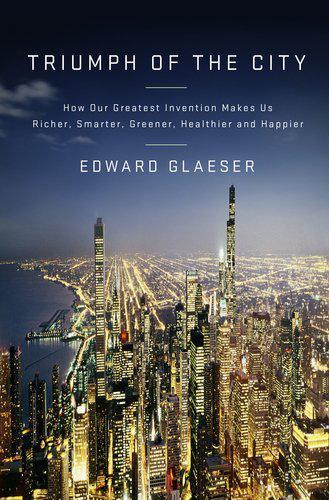
Triumph of the City: How Our Greatest Invention Makes Us Richer, Smarter, Greener, Healthier, and Happier
by
Edward L. Glaeser
Published 1 Jan 2011
In Detroit and New York, an alliance of liberals and African Americans elected Jerome Cavanagh and John Lindsay respectively. While his predecessors had been seen as abettors of police brutality, Cavanagh promised fairer law enforcement. He launched affirmative-action programs and marched with Martin Luther King Jr. John Lindsay also fought police brutality and supported affirmative action. Lindsay’s finest hour may have been in the after-math of King’s shooting, when he walked the streets of Harlem and cooled tempers with warmth and compassion. But ultimately neither mayor could control the forces that were convulsing his city.

The Red Queen: Sex and the Evolution of Human Nature
by
Matt Ridley
Published 14 Aug 1993
There may be professions, such as car mechanic or big-game hunter, that men are psychologically more suited to than women, just as there are professions, such as doctor and nanny, that women are probably naturally better at. But there is no general support in biology for sexism about careers. Indeed, in a curious way, an evolutionary perspective justifies affirmative action more than a more egalitarian philosophy would. For it implies that women have different ambitions even more than different abilities. Men’s reproductive success depended for generations on climbing political hierarchies. Women have rarely had an incentive to seek success of that kind, for their reproductive success depended on other things.
…
D. and Johnson, K., 1990, ‘Parasites and Mate Choice in Red Junglefowl’, American Zoologist, 30:235–44 Index Abortion, sex-selective, 117, 122 Aché people, 185, 220 Acheulian technology, 314 Adaptation and Natural Selection (Williams), 35 Adapted Mind, The (Barkow, Cosmides, and Tooby), 303 Adrenogenital syndrome, 247 Adultery, 170, 187, 195, 210–36 among birds, 213–16, 219 concealed ovulation and, 222–4 among hunter-gatherers, 220–21 inheritance patterns and, 230–35 jealousy and, 227–30 orgasm effect and, 216–19 polygamy and, 224–7 testicular size and, 211–14 violence and, 196–7 Aeschylus, 197 Affirmative action, 254–5 African Queen, The (film), 199 Aggression, 306–7 gender differences in, 242, 244 Agriculture, 187–8 AIDS, 68, 72, 73, 99, 175 Aka pygmies, 187 Akhenaten, 191, 273 Albatrosses, 177 Alexander, Richard, 319–20, 322 Alliance theory, 276 Altitude, 76–7 Altmann, Jeanne, 113 Altruism, 34–6, 74 reciprocal, 187, 189 Anaxagoras, 115 Anderson, Roy, 81 Antony and Cleopatra (Shakespeare), 10–11 Anthropology, 4, 266, 307, 308 Antibiotics, 68 Antibodies, 71, 72 Antigens, 72 Apes exogamy of, 182–3 gender differences in behavior of, 242 mating systems of, 170, 180–81, 205–9 violence among, 195–6 See also Chimpanzees; Gibbons; Gorillas; Orang-utans Aphids, 55, 57 Aquinas, Thomas, 6 Aristotle, 115 Arms race analogies, 65–8, 69 Artificial intelligence, 310 Artificial life, 66–7, 75 Assortative mating pattern, 296 Attractiveness, see Beauty Augustus, 193 Austad, Steven, 111 Austen, Jane, 296, 322 Australian aborigines, 186, 221 Australopithecus afarensis, 183, 300–301, 316–17 Automixis, 37 Aztecs, 191 Baboons, intelligence of, 324–6 Babylon, 191, 199 Bacteria, 63–4, 68, 69, 90–91 antibiotics and, 68 descendants of, 96 fusion and, 98–9, 99–100 male-killing genes in, 103 Badcock, Christopher, 331 Baker, Robin, 216–18 Baldwin, James Mark, 244 Baldwin effect, 312 Bamboo, 77–8 Bangladesh, 198 Barlow, Horace, 321 Basolo, Alexandra, 157 Bateman, A.
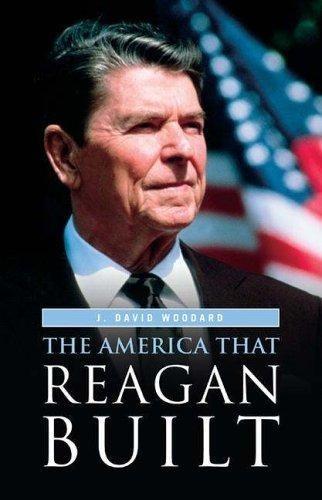
The America That Reagan Built
by
J. David Woodard
Published 15 Mar 2006
In May of 1985, Attorney General Ed Meese appointed a commission to study the effects of pornography and suggest ways to control it.34 The recommendations had little effect because the individualistic ethic of the time valued choice and consumption over any standard of government control of cultural morality. For most Americans, the return of economic prosperity was tacit proof that an improvement of black and white relations was imminent. An expanding economy meant gains for everyone. Discussions of race revolved around the place of affirmative action, but the nation was occasionally treated to sensational stories of scandal, and introduced to new leaders. In November 1987, a black teenager covered in dog excrement with racial slurs written on her body was discovered crawling in the garbage of a town south of Poughkeepsie, New York. The girl, Tawana Brawley, was soon represented by the Reverend Al Sharpton of New York City and two lawyers.35 Sharpton had no congregation, but did have a reputation as a community activist and spokesman for dissident causes.
…
According to this doctrine, courts can protect only those liberties guaranteed as rights under the Constitution; all other liberties are subject to limitation by the legislative branch. Throughout his career, Bork was highly critical of the judicial activism of the Supreme Court in cases involving abortion, affirmative action, and civil rights. The courts, he said, should not thwart the will of popularly elected lawmakers. For example, Bork had written that the Fourteenth Amendment should apply only to race, and not to gender issues. Yet in his testimony, the judge said equal protection should apply to women.6 As he tried to moderate some of his positions to be acceptable to Democrats in Congress, Judge Bork alienated his supporters and further infuriated his detractors.
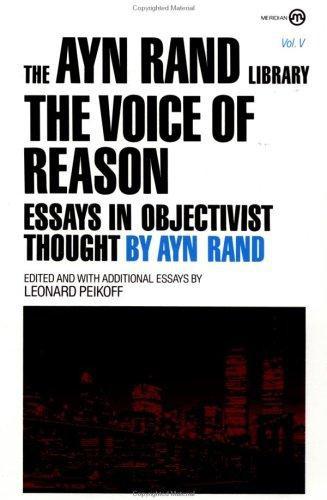
The Voice of Reason: Essays in Objectivist Thought
by
Ayn Rand
,
Leonard Peikoff
and
Peter Schwartz
Published 1 Jan 1989
I, who come from Soviet Russia, can assure you that debates and differences of that kind were and are permitted in Soviet Russia. What about political or philosophical issues? Why didn’t those upholders of the American Way show people disagreeing about nuclear weapons? Or about abortion? Or about “affirmative action”? If that committee stands for the American Way—there is no such Way any longer. Observe also that in today’s proliferation of pressure groups, the lowest sort of unskilled laborer is regarded as “the public,” and presents claims to society in the name of “the public interest,” and is encouraged to assert his “right” to a livelihood—but the businessmen, the intelligent, the creative, the successful men who make the laborer’s livelihood possible, have no rights, and no (legitimate) interests, are not entitled to their livelihood (their profits), and are not part of “the public.”
…
To be progressive in history today means precisely this: it means to respect the rewriting of all the newest groups, especially if their spokesmen make no sense to you; that shows that you are open-minded, and are not trying to impose your group’s private views on others. To each his own subjectivism. Is this an exaggeration? A prominent history professor at Stanford University, Carl Degler, recently made a plea for women’s history, explaining that history varies subjectively from men to women. He declared: “The real test of the success of affirmative action for women will come not by counting the number or proportion of women in a department or profession, but by the extent to which men ... are willing to accept the new and peculiar interests of women as legitimate and serious, even when those interests are strikingly novel and perhaps even bizarre when compared with current acceptable work in a given field.”9 [Emphasis added.]

The Ones We've Been Waiting For: How a New Generation of Leaders Will Transform America
by
Charlotte Alter
Published 18 Feb 2020
“It was very isolating.” Three years later, when she was a sophomore, Michigan passed a ballot initiative that prohibited public institutions from making any decisions based on race, a veiled attack on affirmative action programs. Lauren immediately felt a chill on campus. There were only a few black students in the School of Nursing, and once her classmates started handing out anti–affirmative action flyers, Lauren felt even more isolated. Even small interactions would remind her that some of her classmates were questioning her qualifications. “I was having to account for how I got in,” she said.

Competition Overdose: How Free Market Mythology Transformed Us From Citizen Kings to Market Servants
by
Maurice E. Stucke
and
Ariel Ezrachi
Published 14 May 2020
While overall enrollment of African-American and Hispanic students has increased since 1971, they are, as the New York Times found in 2017, “more underrepresented at the nation’s top [100] colleges and universities than they were 35 years ago.” Jeremy Ashkenas, Haeyoun Park, and Adam Pearce, “Even with Affirmative Action, Blacks and Hispanics Are More Underrepresented at Top Colleges than 35 Years Ago,” New York Times, August 24, 2017, https://www.nytimes.com/interactive/2017/08/24/us/affirmative-action.html; see also Andrew McGill, “The Missing Black Students at Elite American Universities,” Atlantic Monthly, November 23, 2015, https://www.theatlantic.com/politics/archive/2015/11/black-college-student-body/417189/. 57.Gregor Aisch et al., “Some Colleges Have More Students from the Top 1 Percent than the Bottom 60.
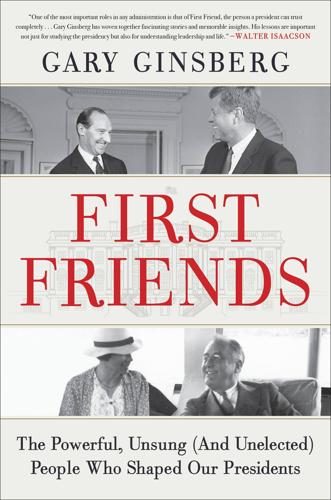
First Friends: The Powerful, Unsung (And Unelected) People Who Shaped Our Presidents
by
Gary Ginsberg
Published 14 Sep 2021
Watching his friend from his law office in Washington, Jordan had arrived at the same conclusion. Progressives to their core, both men realized that the only way to attain and keep power was to moderate their views and appeal to the center. For Clinton, that meant reframing divisive issues like affirmative action and welfare reform in terms that wouldn’t scare away more conservative white voters; for Jordan the civil rights leader, that meant at times abandoning the strident rhetoric and tactics of some of his more activist colleagues, like John Lewis or Jesse Jackson, and working collaboratively with the white power establishment.
…
At his nadir in the spring of 1995, Clinton became such an afterthought that he was forced to defend his continued “relevance” as president to a public starting to doubt he had any. But by election day, the public liked the president’s new, more centrist approach. Over the last two years, he had reasserted his role by reviving the economy, passing welfare reform, and creating a sensible affirmative action program—“mend it, don’t end it”—which Jordan had actively helped shape. The country seemed at peace, the White House more serene, and voters liked their vigorous, youthful leader enough to give him another four years—the first Democratic incumbent since FDR to accomplish that feat. Throughout it all, Jordan functioned as the “unseen, steadying hand, maintaining the balance of what at times was a rocky situation inside the White House, smoothing over the edges among competing power centers that could have really hurt the President,” said Don Baer, Clinton’s White House communications director at the time.

The Contrarian: Peter Thiel and Silicon Valley's Pursuit of Power
by
Max Chafkin
Published 14 Sep 2021
The model for all of this was a young conservative named Dinesh D’Souza, who was six years older than Thiel and who’d played an almost identical role to Thiel on the East Coast in the early ’80s as a founding editor of the Dartmouth Review. The paper would serve as the template for the Stanford Review and many similar campus publications founded in the same era. It was unapologetically reactionary and relentlessly provocative, often to the point of cruelty. During D’Souza’s tenure it had published, among other things, an anti‒affirmative action column written by a white student entirely in mock-Ebonics, an interview with former Ku Klux Klan leader David Duke, and a confidential list of members of the gay student group, some of whom weren’t out. By the time Thiel hit Stanford in 1985, D’Souza had parlayed his talent for grabbing attention into a job editing The Prospect, a right-wing magazine for Princeton University alumni backed by wealthy conservatives.
…
He’d watched a documentary, The Red Pill, in which a self-described feminist comes to question her beliefs—the film’s title used Curtis Yarvin’s preferred term for enlightenment. He’d also been watching lectures by Jordan Peterson, the controversial Canadian psychologist and self-help author who inveighs regularly against affirmative action. Peterson’s ideas had persuaded Damore, who wrote that Google managers had been “shaming” conservatives “into silence” about the possibility that maybe women were underrepresented at Google, not because of discrimination, but because they were less interested in coding than men were. That made sense to Damore since women seemed more extroverted and neurotic, traits that Damore claimed were inconsistent with being a good coder.
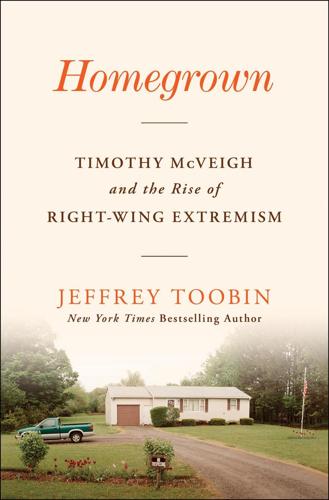
Homegrown: Timothy McVeigh and the Rise of Right-Wing Extremism
by
Jeffrey Toobin
Published 1 May 2023
McVeigh wrote Hodge from Fort Riley, “I used to call black people ‘black,’ because I only saw one side of the story. Now you can guess what I call them.” Fellow soldiers later reported to the FBI that McVeigh was fond of the n-word and referred to Black children as “nig-lets.” In the Army, McVeigh thought he was a victim of affirmative action; when two African Americans were chosen over him to attend sniper school, McVeigh was outraged because he thought he was better qualified. Later, with his lawyers, McVeigh tried to downplay his bigotry, explaining that he was “thrust into a new culture” in the military, a culture of Black people who were “loud, sort of arrogant, touchy.”
…
Tim needed work and thought he could parlay his military experience into a job with the U.S. Marshals Service. In a story that he would tell over and over, McVeigh said he did very well on the written test, but was turned down because he was a “white male.” Just as McVeigh felt the Army cheated him out of sniper school because of affirmative action, he thought the Marshals didn’t consider hiring him because they only wanted women and African Americans. (This story is impossible to verify and likely untrue.) McVeigh found a job in the Buffalo area that was a lot like his last one. With a pistol permit and a security clearance from the Army, he became a supervisor at Burns Security.

The Six: The Untold Story of America's First Women Astronauts
by
Loren Grush
Published 11 Sep 2023
At one point she saw Russ, who was rushing to his next surgery. As the two passed each other, he suddenly remembered what Rhea had told him in the doctors’ lounge and stopped her. “Hey, some friends of mine say they’re taking applicants for the Space Shuttle program,” he said. “I hear they have an affirmative action program!” He then hurried off without giving any more information. Rhea stood there stunned, a million questions running through her head. * * * IT WAS AUGUST 1963 and Shannon Wells could almost taste freedom. In just two weeks, she was about to graduate from the University of Oklahoma with a bachelor’s degree in chemistry.
…
Abbey, George, 3–4, 95, 98–99, 135, 184–85, 222, 229, 239, 269, 334 in astronaut selection and assignments, 8, 10, 85, 89–90, 95, 98–99, 101, 104–8, 122, 145, 149–54, 174–91, 194–96, 203, 215–16, 237–38, 253, 271, 287–88, 306, 308, 310–12, 325–26, 329 career path of, 79–81, 116 in response to Challenger disaster, 176–77 ABC, 103, 156, 181, 221 aborted launches, 241–53 “abort once around,” 155 acronyms, 133 Aero Commander, 60–61 affirmative action programs, 16 Agnew, Spiro, 140 Air Canada, 55 Air Force, US, 111 Air Force Academy, US, 168 Air Force School of Aerospace Medicine, US, 269–70 Air National Guard, 310 air pressure, low, 263 air travel, 18–19, 22 alcoholism, 35 Aldrin, Buzz, 4 all-astronauts meeting, 121 Allen, Joe, 288, 292–93, 299, 301–2 Alvin submersible, 37, 88, 391 American Bar Association, 344 Anfuso, Victor, 70 Anik satellites, 223, 290 antennas: malfunction of, 279–80, 315–16, 323 retrieval of, 283 anxiety, 232 Apollo missions, 4, 75, 103, 121, 144, 145, 155, 205, 208, 209, 238, 259, 266 end of, 78–79, 140 fire in, 138–39 Apollo-Soyuz Test Project, 75 Arab League, 328, 335 Arabsat, 328–35 Aramco, 330 Arceneaux, Hayley, 396 Arianespace, 329 Armstrong, Neil, 4, 10, 178, 231, 369, 375 Artemis program, 396–97 Asian American astronauts, 105, 111 astronaut applications, 80 astronaut attire, 1, 121, 281, 284, 288, 292, 381 design, fit, and testing of, 150–51, 165, 263–66, 273, 294, 389, 395 astronaut candidates (ASCANs), 122–23, 127, 129 “astronaut maker,” 187 Astronaut Office, 145 astronaut pins, 153 astronauts: age distribution of, 121 camaraderie of, 169, 173, 293–94 on choice of first American woman in space, 181–82 employment applications filed by, 81–83 essays in selection process for, 90 gender-based relationships among, 159–73 interview procedure for, 89–99 JSC orientation of, 110–15 male dominance in, 2, 9, 21, 29, 56–57, 161–62 military vs. civilian, 121–22 multiple flights for, 343 in NASA PR, 134–36 percentage of women, 161–62 physical tests for, 91 point system for, 84 racial and ethnic diversity of, 105, 111, 178, 187, 189, 194, 394–95 risks for, 138–39, 160, 209, 217, 249, 329 salaries for, 120 selection and assignment procedure for, 62, 74–99, 169, 173–91 six women selected as, 9–10, 161–82 tokens carried by, 346 training of, 113–39 unofficial uniform of, 124 white racial dominance in, 21 wives of, 246 woman of color as, 394–95 women’s attempts to qualify as, 56–73 women’s evolving acceptance as, 9–10, 32, 37–38, 47, 124, 161–62 see also specific individuals Astronaut Selection Office (NASA), 81 Astronaut Support Personnel, 201 “astronettes,” 65 astronomy, 133 astrophysics, 44 “astrotot,” 200–201 Astrovan (crew transport vehicle), 251, 296, 354 Atkinson, Joseph, 79 Atlantis shuttle, 392 atmosphere, 226, 384 atmospheric plasma, 227 Auñón-Chancellor, Serena, 398 Bagian, Jim, 174–75, 177 bail-out procedures, 250–51 Baker, Ellen, 398 Baptist Memorial Hospital (Memphis), 12 Barker, Elissa, 346 baseball, 39 Baudry, Patrick, 310, 312, 327, 331, 332 Bean, Alan, 162–63, 169 Beggs, James, 311 Berman, Jules, 103–4 Beth El Synagogue, 53 Big Bend National Park, 263 bin Salman Al Saud, Sultan, 330–40 bint Turki Al Sudairi, Sultana, 339, 340–41 Black astronauts, 105, 111, 178, 187, 189, 194, 394–95 black holes, 335 Black Panthers, 14 “blow-by,” 262 Blue Origin, 396 Bluford, Guion “Guy,” 111, 187 as first Black American astronaut in space, 194 Bob Hope’s Salute to NASA, 231–32 Bobko, Karol “Bo,” 307, 309, 310, 316, 321, 322, 324 Boeing 747, 102, 134–36, 146 Brandenstein, Dan, 130, 132, 135, 176, 229, 326, 330, 337 breastfeeding, 290 Brokaw, Tom, 156–57, 210–11 Buchli, Jim, 118, 123, 361 Bushnell telescope, 41–42 Caldwell Dyson, Tracy, 398 Camel cigarettes, 293–94 cancer research, 25 candy stripers, 26, 29 Cape Canaveral, Fla., 6, 27, 135, 144, 164, 175, 187, 218, 227, 238, 252, 253, 295, 305, 323, 353, 362 “Cape Crusaders,” 7, 164, 167 Capsule Communicator (CAPCOM), 182, 190, 221, 257, 258, 260, 319, 336, 357, 361 Anna’s training for, 289–90 Carpenter, Scott, 69 Carrying the Fire (Collins), 83 Carson, Johnny, 115–16, 214, 348 CBS, 110 Cernan, Gene, 156 Cerro Tololo Inter-American Observatory, 116 Chaffee, Roger B., 139 Challenger Center, 389 Challenger Deep, 391–92 Challenger disaster, ix, 343–57, 392 astronaut deaths in, 380–81 astronauts’ families’ response to, 365–68 astronauts’ response to, 358–59, 360–65 investigation into, see Rogers Commission Judy as victim of, 360, 362–65 launch malfunction in, 370 media coverage of, 368, 371–72, 374 NASA missions affected by, 377–85, 388–89 NASA’s response to, 365–66 Challenger missions, 1–10, 277–78, 281 aftermath of flight of, 228–35 Kathy and Sally in, 277 launch site viewing of, 6 liftoff of, 219 photographs from, 223–24 reentry and landing of, 227–28 as Sally’s first flight into space, 214–15 changing rooms, 273 Chapel Civilian Assembly Center, 18 Charles, Prince of Wales, 102 childbirth, of Rhea, 199–201 children, Sally’s outreach programs for, 393 children’s toys, 323 Chung, Connie, 109 citizen astronauts, 329 Civil Rights Act (1964), 76 civil rights movement, 14 classroom training, 132–34 Clear Lake Hospital (Houston), 200 Cleave, Mary, 226–27, 398 Coats, Mike, 117, 170, 237, 238, 240, 249, 254, 257, 259 Cobb, Geraldyn “Jerrie,” 56–57 congressional hearing testimony by, 67–71, 75 in research for women in space program, 60, 63–67 Cochran, Jacqueline, 65 Coleman, Cady, 398 Collins, Eileen, as first women to pilot Shuttle and command Shuttle mission, 387–88, 394 Collins, Martha Layne, 304 Collins, Michael, 4, 83, 264 Colson, Bill, 38, 44, 46–47, 171, 216 Columbia Accident Investigation Board, ix Columbia disaster, ix, 390, 393 Columbia shuttle, 145, 146, 177, 343, 390, 392 launch of, 147, 153–58, 157–58, 351–52 touchdown of, 159 communications satellites, 243, 253, 255, 290, 307, 312, 314–15, 328, 329, 334–35 see also satellites; specific satellites Communism, 20 Communist Revolution, Chinese, 19 computers, in Challenger space flight, 219 Conrad, Pete, 150–51, 266 constellations, 41–42 continental drift, 36 cosmic rays, 281 cosmonauts, 233–34, 392 women as, 71–73, 202–3 see also specific individuals Covert, Gene, 375 Covey, Dick, 357 Creighton, John, 132, 326, 333 Crew Optical Alignment Sight (COAS), 300 Crippen, Bob, 145, 148, 187, 188, 193, 197–98, 207, 209–13, 217, 225, 227, 230, 270–71, 273–77, 279, 280, 282, 367 C-sections, 200 Culbertson, Frank, 346–47 cutoff, 248 “deadstick” landings, 160 decompression sickness (“the bends”), 269–70, 281 Defense Department, US, 141, 145, 299 densification, 147 depression, 35 Derek, John and Bo, 239 disaster preparedness, 154–55 Discovery missions, 236–62, 300, 305, 333 aborted launch in, 246–53 landings in, 261, 324 launches in, 253, 298, 313 Disneyland, 190 Disposable Absorption Containment Trunk (DACT), 265 dive tanks, 266–67, 272–73 divorce, 52, 245 of Judy Resnik and Michael Oldak, 55, 181 of Sally Ride and Steve Hawley, 383 dogfights, 131 Doonesbury (comic strip), 314 Dream Is Alive, The (documentary), 255 duct tape, 318–19 Dunbar, Bonnie, 226, 398 Dunes Hotel & Country Club, 230 Earhart, Amelia, 65, 209 Earth: atmosphere of, 226, 384 in photographs from space, 272 satellite viewing of, 384 studied from space, 133 viewed from space, 225–26, 254, 272, 282–84, 303, 336 Earth-imaging radar, deployment of, 278–81 EarthKAM, 393 Earth sciences, 36 Eastern Intercollegiate Women’s Singles Championship (tennis), 43 echocardiograms, 312, 332 Edwards Air Force Base, 101, 159, 227, 261 Eisenhower, Dwight, 57–59 Elizabeth II, Queen of England, 337–38 Ellington Field Joint Reserve Base, 127, 152, 364 emergency prep procedures, 201–2, 209 Endeavour shuttle, 394 engineering, 34 gender bias in, 163 engine malfunction, 160 Enterprise (shuttle prototype), 102 Epps, Jeanette, 398 Equal Employment Opportunity Office (NASA), 76 exit nozzle malfunction, 258–60 Fabian, Donna, 350 Fabian, John, 117, 128, 132–33, 150, 162, 168, 172–73, 187, 193, 197, 218, 223–24, 326, 329–30, 334–35, 339, 350–51 Fahd, King, 330, 339 Fairlawn Elementary School (Akron), 48 Farkas, Bertalan, 234 fax machine, 318 fecal matter, 265 Feminine Mystique, The (Friedan), 76 feminism, feminists, 76, 172, 229 Feynman, Richard, 369, 375–77 fire: in aborted launch, 305–6 in Challenger disaster, 370 danger of, 250–53, 252, 271–75 fire suppression system, 250–51 Fisher, Anna Lee, 1–9, 10, 89, 94, 166, 171, 187, 189, 266, 316, 324, 326, 343, 398 academic credentials of, 30–31 in aftermath of Challenger disaster, 377 as astronauts’ choice for first American woman in space, 182 in astronaut selection program, 85–87, 90–91, 95–96, 384–85 in astronaut training program, 119–20, 124, 127, 129, 132–36 biographical facts and accomplishments of, x canceled second shuttle mission of, 361, 390 childbirth and motherhood experience of, 288–90, 293, 294–99, 303–4 Columbia flight launch role of, 154, 155 early years of, 26–30 evolving career interest of, 26–32 as first mother to fly in space, 309 later career of, 390 makeup stocked by, 205 marriages of, 30–31, 85–87, 161–62, 179–80, 201–2, 287–90, 294 media attention on, 179–80, 284 NASA application filed by, 82 pregnancy of, 2, 201–2, 287–88 in response to Challenger disaster, 361–62, 364–65 in response to Sally’s selection, 195 selected for Shuttle program, 101, 104, 107, 109, 111–12, 114 Shuttle engineering assignment of, 150–51 Shuttle mission of, 285–305 Today Show interview of, 285–87 Fisher, Bill, 26, 31, 82, 85–86, 94, 104, 109, 119, 132, 150, 171, 295, 296, 298, 299 astronaut aspirations of, 107, 109, 161 marriage of Anna and, 85–87, 161–62, 179–80, 201–2, 287–90, 294 Fisher, Kara, 390 Fisher, Kristin, 2, 303–4 Anna’s letter to, 295–96 birth of, 288–89 childhood of, 294, 299, 303–4 Fleetway Inc., 60 Fletcher, James, 76 Flickinger, Donald D., 61–63, 64–65 FOG (friend of George), 176 Fonda, Jane, 218 Fontainebleau Hotel (Miami Beach), 62 food preparation and testing, 152–53 Fort Campbell, 28, 29 Freedom 7, 27 free-electron lasers, 44 Free Speech Movement, 14 Friday happy hour, 176 Friedan, Betty, 76, 233 Friendship 7, 69 Frosch, Robert, 101, 108 Fullerton, C.
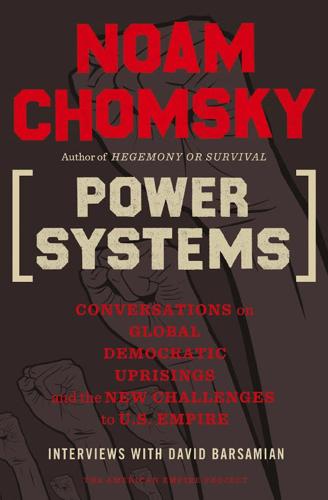
Power Systems: Conversations on Global Democratic Uprisings and the New Challenges to U.S. Empire
by
Noam Chomsky
and
David Barsamian
Published 1 Nov 2012
Lehren, “A Generation Hobbled by the Soaring Cost of College,” New York Times, 12 May 2012. Janet Lorin, “Student-Loan Debt Reaches Record $1 Trillion, Report Says,” Bloomberg News, 22 March 2012. 13. Ron Lieber, “Student Debt and a Push for Fairness,” New York Times, 4 June 2010. 14. On racism under the GI bill, see Ira Katznelson, When Affirmative Action Was White: An Untold History of Racial Inequality in Twentieth-Century America (New York: W. W. Norton, 2005), p. 114. 15. Paul de la Garza, “Mexico Students Strike over Higher Fees,” Chicago Tribune, 20 May 1999. Julia Preston, “University Officials Yield to Student Strike in Mexico,” New York Times, 8 June 1999. 16.
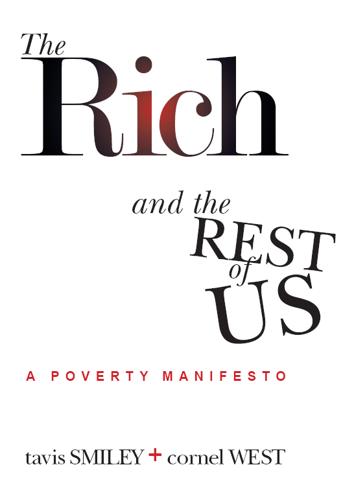
The Rich and the Rest of Us
by
Tavis Smiley
Published 15 Feb 2012
With the dawn of the new decade, Americans elected the first president born within the 20th century and the second-youngest (43) since Theodore Roosevelt. By the time John F. Kennedy entered office in 1960, The New Deal Coalition was severely fractured. New, contentious issues of the times—the Vietnam War, race relations, riots, and activists’ demands for civil rights and affirmative action—drove many members of Congress in different directions. These issues, when mixed with escalating confrontations with the Soviet Union and the growing popularity of Republican candidates who promised lower taxes and control of inner-city crime, hampered Kennedy’s efforts to repair the splintered coalition.
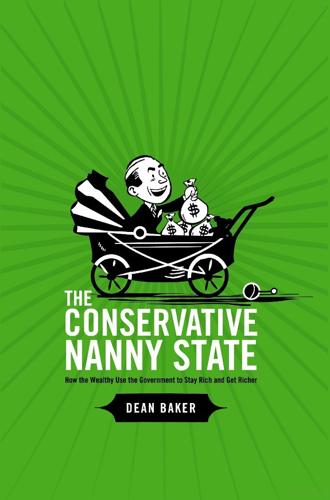
The Conservative Nanny State: How the Wealthy Use the Government to Stay Rich and Get Richer
by
Dean Baker
Published 15 Jul 2006
Nanny State Subsidies for Small Businesses There are three basic ways in which the government provides subsidies to small businesses: favorable tax treatment, below market rate loans, and exemptions from labor and safety standards that apply to other businesses. In addition, various levels of government often apply affirmative action standards for small businesses, setting aside a certain portion of their contracts for businesses that are below a specific size.5 The government provides tax benefits to small businesses through two mechanisms, one of them legal, and the other not quite legal. The first mechanism is a large set of tax breaks that are explicitly designed to help small businesses.

Masters of Mankind
by
Noam Chomsky
Published 1 Sep 2014
They have long warned of “the hazard facing industrialists” in “the newly realized political power of the masses,” and the need to wage and win “the everlasting battle for the minds of men” and “indoctrinate citizens with the capitalist story” until “they are able to play back the story with remarkable fidelity”; and so on, in an impressive flow, accompanied by even more impressive efforts, and surely one of the central themes of modern history.10 It is a tribute to the skill of the warriors fighting the everlasting battle that when the dam finally broke during the 1996 primaries, there was real surprise and alarm at the appeal on class lines by a demagogue assuming a populist mantle. Pat Buchanan “opened a second front” in the “class war,” New York Times commentator Jason DeParle reported. Before that, unhappy people were expressing their anger and frustration by targeting “welfare families, immigrants and beneficiaries of affirmative action.” But now, they were discovering bosses, managers, investors, speculators, even class conflict, features of our harmonious society that had somehow escaped notice.11 Ears that were tuned to a different part of the spectrum might have made the discovery a few years earlier; say, in 1978, when UAW President Doug Fraser condemned business leaders for having “chosen to wage a one-sided class war in this country—a war against working people, the unemployed, the poor, the minorities, the very young and the very old, and even many in the middle class of our society,” and having “broken and discarded the fragile, unwritten compact previously existing during a period of growth and progress.”12 Or twenty years before that, in the labor press when it still existed on a substantial scale and was seeking—in its own words—to combat the corporate offensive to “sell the American people on the virtues of big business,” and to provide “antidotes for the worst poisons of the kept press,” the commercial media, which have the task of damning labor at every opportunity while carefully glossing over the sins of the banking and industrial magnates who really control the nation.”13 And long before, back to the early days of the industrial revolution.
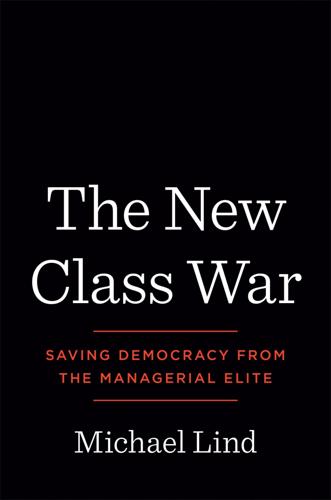
The New Class War: Saving Democracy From the Metropolitan Elite
by
Michael Lind
Published 20 Feb 2020
The first are class-neutral, race- or gender-based policies to remove barriers to the advancement of racial minorities and women, including native white women. The second are policies that include skills training or retraining for unsuccessful native white men. Class-neutral, race-based policies in the United States include affirmative action in hiring, government set-asides for specified groups in contracting, and gerrymandering of congressional districts to create majority-minority districts likely to elect a member of a racial minority as a representative. In most cases the beneficiaries of these policies tend to be members of the affluent elite within a particular racial or ethnic group.

To Serve God and Wal-Mart: The Making of Christian Free Enterprise
by
Bethany Moreton
Published 15 May 2009
Kruse, White Flight: Atlanta and the Making of Modern Conservatism (Princeton: Princeton University Press, 2007); Matthew D. Lassiter, The Silent Majority: Suburban Politics in the Sunbelt South (Princeton: Princeton University Press, 2007); and Robert O. Self, American Babylon: Race and the Struggle for Postwar Oakland (Princeton: Princeton University Press, 2005); and see below at note 8. Ira Katznelson, When Affirmative Action Was White: An Untold History of Racial Inequality in Twentieth Century America (New York: W.W. Norton, 2005); see also Manning Marable, How Capitalism Underdeveloped Black America: Problems in Race, Political Economy, and Society (Boston: South End Press, 1983). Kevin P. Phillips, The Emerging Republican Majority (New Rochelle, NY: Arlington House, 1969).
…
James Kindall, “Searching for Uncle Sam,” Star [weekly insert of Kansas City Star], December 16, 1984, 24; direct quotation from Steve Trollinger. 14. Uncited clipping displayed at Wal-Mart Visitors’ Center, Bentonville, Arkansas, 2005. 15. “People’s Platform of 1896,” in National Party Platforms, Volume I, 1840–1956, comp. Donald Bruce Johnson (Urbana: University of Illinois Press, 1978), 104–6. 16. Ira Katznelson, When Affirmative Action Was White: An Untold History of Racial Inequality in Twentieth-Century America (New York: W.W. Norton, 2005). 17. On federal promotion of agriculture in the early twentieth century, see Postel, Populist Vision, 278–79; Sanders, Roots of Reform, 391–94; on federal serÂ�vice to commerce in the 1920s, see William Leach, Land of Desire: Merchants, Power, and the Rise of a New American Culture (New York: Pantheon Books, 1993), 349–78. 18.
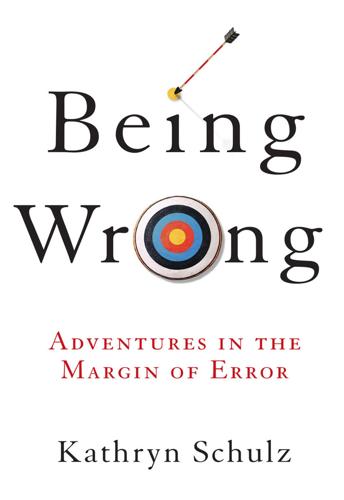
Being Wrong: Adventures in the Margin of Error
by
Kathryn Schulz
Published 7 Jun 2010
Accusing your opponent of changing his mind is, I will grant, a standard move in the playbook of American politics. But in John Kerry’s case, that accusation was the playbook. It wasn’t just his altered stances on Vietnam and Iraq that attracted criticism. Kerry’s detractors also charged him with vacillating on the death penalty, welfare reform, social security, gay marriage, affirmative action, the Patriot Act, and No Child Left Behind, among others. To give you a sense of the tenor of the election season, William Safire, the “On Language” columnist for the New York Times Magazine, took on the phrases “wishy-washy,” “waffle,” and “flip-flop,” all between March and October of 2004.† Jay Leno proposed two possible slogans for the Kerry campaign: “A mind is a terrible thing to make up,” and “Undecided voters—I’m just like you!”
…
Moreover, it is most unreliable precisely with respect to accurately recalling past beliefs. This effect is widely documented. For instance, in 1973, the psychologist Greg Markus asked over 3,000 people to rate their stances (along one of those seven-point “strongly disagree / strongly agree” scales) on a range of social issues, including affirmative action, the legalization of marijuana, and equal rights for women. A decade later, he asked these same people to assess their positions again—and also to recall how they had felt about the issues a decade earlier. Across the board, these “what I used to think” ratings far more closely reflected the subjects’ current beliefs than those they had actually held in 1973.
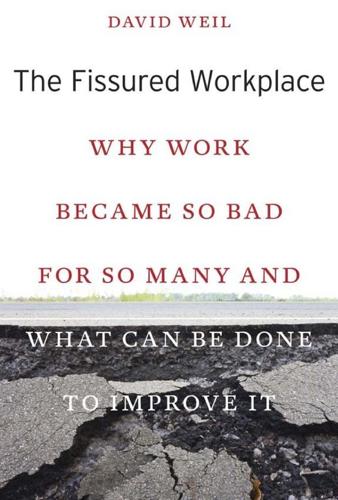
The Fissured Workplace
by
David Weil
Published 17 Feb 2014
In 1955 a little fewer than 30% of a representative sample of large firms had personnel / human resource management offices. By 1965 about 35% had such offices. Bolstered by the need to comply with new workplace laws governing pensions, occupational health and safety (including the Occupational Health and Safety Act), discrimination, and affirmative action passed in the later 1960s and the first half of the 1970s, the number of firms with human resource offices grew quickly: by 1975 the proportion with such departments reached just under 50%, and by 1985 it hit 70%.29 Large firms with internal labor markets were not only characterized by explicit human resource policies administered by departments and personnel specialists.
…
The estimates are based on Dobbin and Sutton (1998), using a stratified random sample of 279 public, for-profit, and nonprofit organizations in thirteen sectors with offices in California, New Jersey, or Virginia. The growth was particularly dramatic in personnel / human resource functions dealing with discrimination and affirmative action, with no company respondents reporting an office (or officer) with such responsibility in 1967, up to 25% so reporting in 1977, and over 40% so reporting by 1987. 30. C. Brown and Medoff (1989) provide the most comprehensive evidence that workers in large firms and large establishments earn significantly higher wages even after controlling for the above factors as well as occupation and industry.
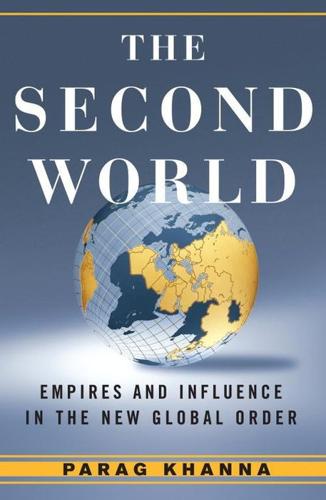
Second World: Empires and Influence in the New Global Order
by
Parag Khanna
Published 4 Mar 2008
Lacking other resources, currency reserves have been Singapore’s force multiplier. Through the state company Temasek, Singapore holds shares in major conglomerates across Asia, and it invested in China long before others, earning it long-term credibility and leverage. “Since Asia produces such technically skilled workers these days,” the businessman continued, “affirmative action in Singapore means hiring more Caucasians.” Singapore is the most successful avatar of the Asian way—and a model packaged for export. Lee’s one-word answer to explain Singapore’s success is “confidence,” for he has sought to be “correct, not politically correct.”16 Under Lee’s “Nothing is free” value system, rich and poor alike adjust to incentives—fares, fines, fees, penalties—for excessive consumption or even multiple car ownership.
…
Asian values, Islam, and democracy are all stirring together in the Malaysian pot, but without yet coming to a boil. “Many wonder if an economic crisis would precipitate ethnic violence as it did in 1969, but we would rather achieve income equality than test the notion,” remarked a conservative politician privately. Like South Africa, Malaysia has a unique affirmative action scheme for its majority Malay population—referred to as the Bumiputra (“sons of the soil”)—which has created a stable middle class by providing low-interest loans to companies they own. The tension between ethnic Malays and the powerful Chinese population is nearly invisible, but it is still palpable.

Sorting Things Out: Classification and Its Consequences (Inside Technology)
by
Geoffrey C. Bowker
Published 24 Aug 2000
Robbin ( 1 998) recounts the struggle over the decision taken by the Office of Management and Budget (OMB) in 1 997 to allow people to choose more than one racial category on the U.S. Census and in other federal government forms. This decision was known by the innocuous name of Statistical Directive 1 5 . Argu ments over the nature of racial classification in the U.S. census go back over many decades but with the advent of affirmative action and other similar measures in the late 1 960s and early 1 970s, race classification became even more consequential and contested. Robbin identifies three major issues involved in arguing for or against changing the categories: the controversy about whether or not to name (and how to name) racial and ethnic groups in government data; the exclusion of minority populations from the decision-making process within the U.S.
…
Most schools now are lousy places to grow boundary objects because they both strip away the ambiguity of the objects of learning and impose or ignore membership categories (except artificial hierarchi- 3 06 Chapter 9 cally assigned ones) .55 In mass schooling and standardized testing, an attempt is made to insist on an engineered community of practice, where the practices are dictated and the naturalization process is monitored and regulated while ignoring borderlands. They are virtual factories for monsters. In the 1 970s and 1 980s many attempts were made to include other communities in the formula via affirmative action and multicultural initiatives. But where these lacked the rela tional base between borderlands and the naturalization of objects, they ran aground on the idea of measuring progress in learning. This is partly a political problem and partly a representational one. As femi nists learned so painfully over the years, a politics of identity based on essences can only perpetuate vicious dualisms.
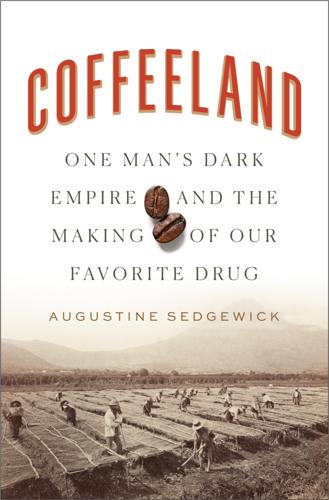
Coffeeland: One Man's Dark Empire and the Making of Our Favorite Drug
by
Augustine Sedgewick
Published 6 Apr 2020
“The Industry in 1941—A Panoramic Review,” Super Market Merchandising, January 1941, 6–8. 48. “The Present and Future of the Super Market,” Tea and Coffee Trade Journal, October 1937, 250. 49. “Mapping the Nation’s Super Market Growth,” Super Market Merchandising, February 1941, 22–30. 50. For example, Ira Katznelson, When Affirmative Action Was White: An Untold History of Racial Inequality in Twentieth-Century America (New York: W. W. Norton, 2005), 25–79; and David R. Roediger, Working Toward Whiteness: How America’s Immigrants Became White: The Strange Journey from Ellis Island to the Suburbs (New York: Basic Books, 2005), 199–244. 51.
…
Seeds of Stability: Land Reform and U.S. Foreign Policy. New York: Cambridge University Press, 2017. Kargon, Robert H. Science in Victorian Manchester: Enterprise and Expertise. Baltimore: Johns Hopkins University Press, 1977; reprint, New York: Routledge, 2017. Katznelson, Ira. When Affirmative Action Was White: An Untold History of Racial Inequality in Twentieth-Century America. New York: W. W. Norton, 2005. Kay, Jane Holtz. Asphalt Nation: How the Automobile Took Over America, and How We Can Take It Back. New York: Crown, 1997. Kemmerer, Edwin W. “The Work of the American Financial Commission in Chile.”
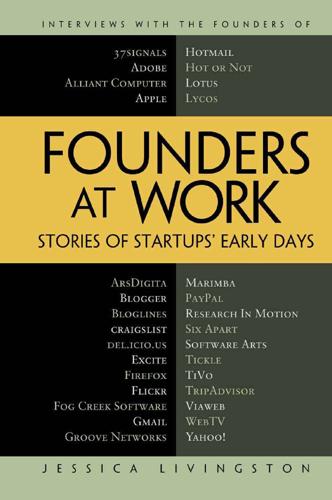
Founders at Work: Stories of Startups' Early Days
by
Jessica Livingston
Published 14 Aug 2008
We didn’t have internships, which now even all the undergrads have at St. Thomas. We had no international travel, no semesters abroad. So you were really much more naïve as a student graduating in the ’70s—even with a double major and a minor and some other good stuff thrown in. But I felt empowered. The early ’70s was a big era of affirmative action and companies were forced to go hire women. I was interviewed for some really interesting jobs, and one that I thought sounded really great was this job at the Federal Reserve Bank. It was a brand new building, built by one of I.M. Pei’s designers. The president of that Federal Reserve Bank was a really young guy.
…
The president of that Federal Reserve Bank was a really young guy. They had all state-of-the-art hardware, software, and furniture for the time, so it felt like, “Wow, I get to be in this brand new hot place, the Federal Reserve Bank.” That sounds like an oxymoron saying it now. The truth was that all these jobs they were recruiting for affirmative action, if you weren’t really a competent young woman, you would fail. There was a gap between skills and jobs because they had to hire you and they had to hire you in stretch positions to get women populated. In fact, I Ann Winblad 299 got my masters degree at night and Saturdays while at the Federal Reserve Bank, and I was only the second woman in the whole Federal Reserve banking system that had a masters degree.
…
Index Numbers and symbols 1984 recession, 144 37signals, 309–316 5K contest, 258 A Accel Partners, 101–102, 108 Accidental Empires, 64 Acorn, Al, 44 acquisition offers, 137, 215, 217–218 Adams, Tracy, 326 Adobe Acrobat, 293 Adobe Illustrator, 287 Adobe Systems, 281–296 Adobe Type Manager (ATM), 292 AdSense, 161–163, 171 advertising, 130, 131, 311. See also click-through; targeted advertising affirmative action, 298 aggregators. See desktop-based aggregators @Home, 61 Alexa Internet, 274–277 Allen, Paul, 182, 198 Alliant Computer Systems, 427–446 Alsop, Stewart, 194 Altair computer, 33–34 Altman, Sam, 449 Amazon, 277 Anderson, Eve, 326 Andreessen, Mark, 134 angel investors, 209, 213–216, 260, 447 Anybot, 451 AOL, 132 Apple Computer, 31–58, 173, 186, 267, 268, 281, 285–286 Apple I, 38–42, 44–45 Apple II, 31, 42–43, 49, 50, 78, 89, 94, 185 Apple II user group, 89 Apple III, 51 455 456 Index arcade games, 32 Architext.
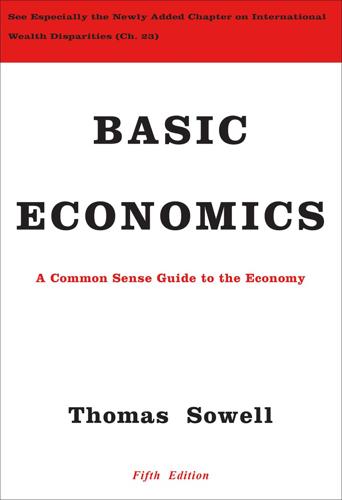
Basic Economics
by
Thomas Sowell
Published 1 Jan 2000
{265} “The Least Interesting Lawyers in the World,” Wall Street Journal, February 8, 2013, p. A12. {266} Thaddeus Herrick, “One Word of Advice: Now It’s Corn,” Wall Street Journal, October 12, 2004, p. B1. {267} Gary S. Becker and Guity Nashat Becker, The Economics of Life: From Baseball to Affirmative Action to Immigration, How Real-World Issues Affect Our Everyday Life (New York: McGraw-Hill, 1997), p. 163. {268} Gurcharan Das, India Unbound, p. 183. {269} Robyn Meredith, “Tempest in a Teapot,” Forbes, February 14, 2005, p. 120. {270} Ibid. {271} Vibhuti Agarwal, “Indian Steelmakers Gain Strength,” Wall Street Journal, May 17, 2007, p.
…
{342} “Economic and Financial Indicators,” The Economist, September 7, 2013, p. 92. {343} “Hong Kong’s Jobless Rate Falls,” Wall Street Journal, January 16, 1991, p. C16. {344} Jim Powell, “Harding and Coolidge: 1.8 Percent Unemployment,” Washington Times, September 13, 2010, p. B1. {345} Gary S. Becker and Guity Nashat Becker, The Economics of Life: From Baseball to Affirmative Action to Immigration, How Real-World Issues Affect Our Everyday Life (New York: McGraw-Hill, 1997), p. 39. {346} Erin Lett and Judith Banister, “Labor Costs of Manufacturing Employees in China: An Update to 2003–04,” Monthly Labor Review, November 2006, p. 41. {347} Jason Clemens et al., Measuring Labour Markets in Canada and the United States: 2003 Edition (Canada: Fraser Institute, 2003), pp. 1–68
…
{491} Karen Damato, “Index Funds: 25 Years in Pursuit of the Average,” Wall Street Journal, April 9, 2001, p. R6. {492} Theo Francis, “Five Years of Feast and Famine,” Wall Street Journal, June 2, 2003, p. R1. {493} Ian McDonald, “Survivor: How One Fund Avoids Losses,” Wall Street Journal, June 2, 2003, p. R1. {494} Gary S. Becker and Guity Nashat Becker, The Economics of Life: From Baseball to Affirmative Action to Immigration, How Real-World Issues Affect Our Everyday Life (New York: McGraw-Hill, 1997), p. 70. {495} U.S. Census Bureau, Statistical Abstract of the United States: 2012 (Washington: Government Printing Office, 2011), p. 731. {496} “NAIC Research and Actuarial Department: Data at a Glance,” CIPR Newsletter, April 2013, pp. 21–22
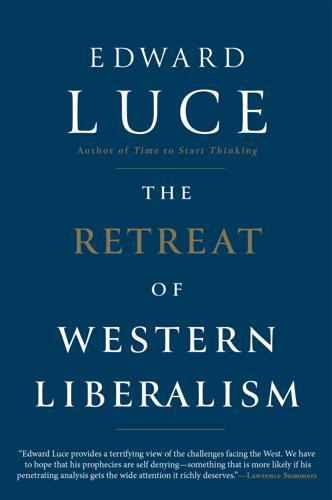
The Retreat of Western Liberalism
by
Edward Luce
Published 20 Apr 2017
The same might be said of the latest ethnic category, Middle East and North Africans (MENAs), which the Obama administration pushed through just before it left office.26 At the stroke of a pen, the White House had conjured up ten million new non-whites. Again, the move betrayed a technocratic itch to channel people into corrals. Lebanese Christians and secular Turks may have less in common with Sudanese Muslims than with whites. Yet overnight they could benefit from the same affirmative action to enter university as other minorities. Hillaryland was inured to how badly this game of favourites came across to non-college-educated whites, who still form America’s largest voting bloc, and will continue to do so for some time. A few weeks before the election Mrs Clinton described half of them as belonging in a ‘basket of deplorables’, whose racial prejudices would consign them to history’s trashcan.
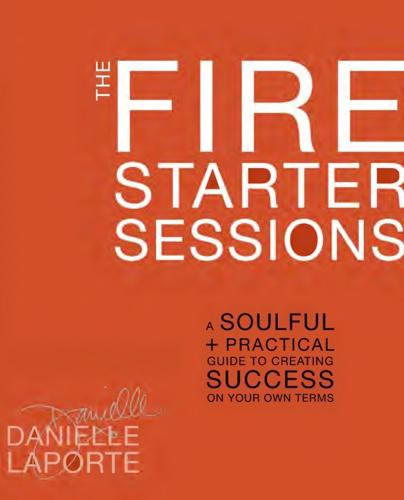
The Fire Starter Sessions: A Soulful + Practical Guide to Creating Success on Your Own Terms
by
Danielle Laporte
Published 16 Apr 2012
Generating your core desired feelings doesn’t just happen with affirmations you stick on your bathroom mirror, or from sitting in the lotus position and om-ing your way into an altered state. Mindfulness and contemplation is only half of the equation. You’ve got to take some action, Jackson. Small things, incremental things, tiny gestures: anything to counter the glums or the clench of despair. Do it. Daring, grand, big, dramatic, life-affirming actions. Whatever positively generates the feelings you long for and moves your life forward. Take baby steps or go quantum. Stay focused on your feelings. One of my core desired feelings is affluence. For me, affluence is about abundance and flow. I long for flowing ideas and creativity. It’s about having influence in the lives of the people I can touch—whether that’s a smile to let them know that they are seen and loved, or an insight that I can offer.
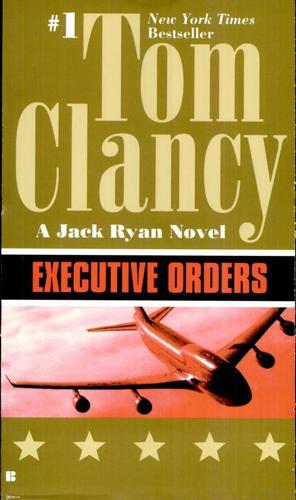
Executive Orders
by
Tom Clancy
Published 2 Jan 1996
All of that would save training dollars, and probably produce better field officers. The proposal had been File-13'd by two successive DDOs, but Mary Pat had known about it from the beginning, and approved the concept. Can you sell it? John, you're going to help me sell it. Look how well Domingo here has turned out. You mean I'm not affirmative action? Chavez asked. No, Ding, that's only with his daughter, Mrs. Foley suggested. Ryan will go for it. He isn't very keen on the Director. Anyway, for now I want you two to do your debrief on SANDALWOOD. What about our cover? Clark asked. He didn't have to explain what he meant. Mary Pat had never got her hands dirty in the field-she was espionage, not the paramilitary side of the Operations Directorate-but she understood just fine.
…
What's most disturbing, however, Kealty was saying now, is what Ryan said about his appointments to the Supreme Court. It's pretty clear he wants to turn the clock back on a lot of things. Litmus tests on issues like abortion, appointing only strict-constructionists. It makes you wonder if he wants to overturn affirmative action, and heaven knows what else. Unfortunately, we find ourselves in a situation where the sitting President will exercise immense power, particularly in the courts. And Ryan just doesn't know how, Barry. He doesn't, and what we learned today about what he wants to do-well, it's just plain frightening, isn't it?
…
The position paper's guidance hadn't exactly been clear on that. Having already shot himself in the foot on the issue of abortion-higher up and more to the centerline, Arnie van Damm had remarked acidly the previous day, to reinforce his earlier lesson-now Ryan would have to make his political stance clear on a multitude of issues: affirmative action at one end of the alphabet, and welfare at the other, with taxes, the environment, and God only knew what else in between. Once he'd decided where he stood on such things, Callie Weston would write a series of speeches for him to deliver from Seattle to Miami and God only knew where else in between.
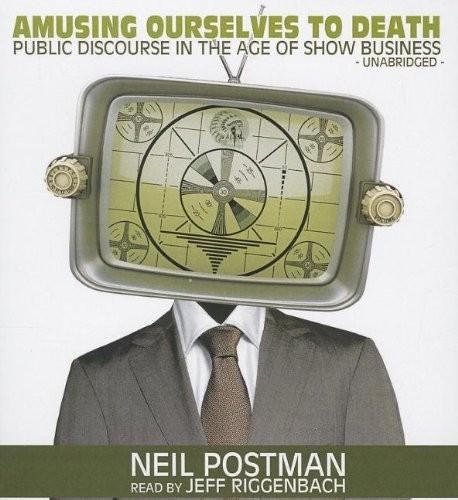
Amusing Ourselves to Death: Public Discourse in the Age of Show Business
by
Neil Postman
and
Jeff Riggenbach Ph.
Published 1 Apr 2013
You may get a sense of what this means by asking yourself another series of questions: What steps do you plan to take to reduce the conflict in the Middle East? Or the rates of inflation, crime and unemployment? What are your plans for preserving the environment or reducing the risk of nuclear war? What do you plan to do about NATO, OPEC, the CIA, affirmative action, and the monstrous treatment of the Baha’is in Iran? I shall take the liberty of answering for you: You plan to do nothing about them. You may, of course, cast a ballot for someone who claims to have some plans, as well as the power to act. But this you can do only once every two or four years by giving one hour of your time, hardly a satisfying means of expressing the broad range of opinions you hold.
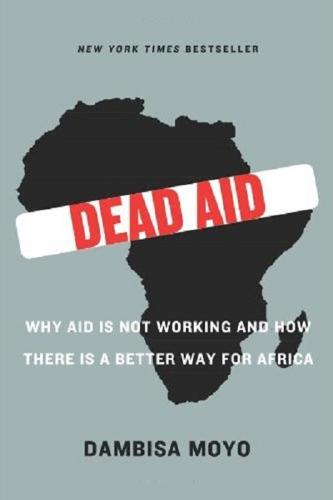
Dead Aid: Why Aid Is Not Working and How There Is a Better Way for Africa
by
Dambisa Moyo
Published 17 Mar 2009
For example, in order to increase the participation of indigenous Africans in many of the industrial and mining opportunities, some African governments are legislating for a required minimum level of participation by the local population. In much the same way that South Africa introduced its Black Economic Empowerment regulations, and the US has its affirmative-action policies, Zambia recently announced the Citizens Economic Empowerment Commission, which covers similar ground.10 They’ve got what we want, and we’ve got what they need Bartering infrastructure for energy reserves is well understood by the Chinese and Africans alike. It’s a trade-off, and there are no illusions as to who does what, to whom and why.
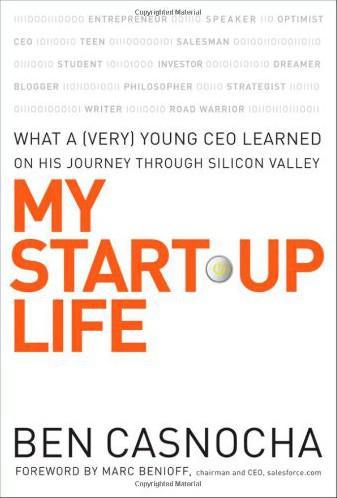
My Start-Up Life: What A
by
Ben Casnocha
and
Marc Benioff
Published 7 May 2007
by William Poundstone The Four Obsessions of an Extraordinary Executive, by Patrick Lencioni The Entrepreneur’s Guide to Business Law, by Constance Bagley Good to Great, by Jim Collins On Becoming a Leader, by Warren Bennis 179 180 APPENDIX C Information Rules, by Carl Shapiro and Hal Varian eBoys, by Randal Stross Fooled by Randomness, by Nassim Nicholas Taleb Compassionate Capitalism, by Marc Benioff Love Is the Killer App, by Tim Sanders Globalization The World Is Flat, by Tom Friedman Creative Destruction, by Tyler Cowen Globaloney, by Michael Veseth Money Makes the World Go Round, by Barbara Garson How “American” Is Globalization? by William Marling Intellectual Life The Blank Slate, by Steven Pinker The Presentation of Self in Everyday Life, by Erving Goffman Reflections by an Affirmative Action Baby, by Stephen Carter Integrity, by Stephen Carter The Accidental Asian, by Eric Liu Mind Wide Open, by Steven Johnson Socrates Café, by Chris Phillips Self-Renewal, by John Gardner Public Intellectuals, by Richard Posner Psychology Influence: The Psychology of Persuasion, by Robert Cialdini Flow, by Mihaly Csikszentmihalyi Man’s Search for Meaning, by Viktor Frankl Biography/Memoir My Life, by Bill Clinton This Boy’s Life, by Tobias Wolff Swimming Across, by Andy Grove All Over But the Shoutin’, by Rick Bragg Personal History, by Katherine Graham Emerson: Mind on Fire, by Robert Richardson In an Uncertain World, by Robert Rubin The Year of Magical Thinking, by Joan Didion Religion End of Faith, by Sam Harris The Universe in a Single Atom, by the Dalai Lama APPENDIX C The World’s Religions, by Huston Smith The Bhagavad-Gita Plan B: Further Thoughts on Faith, by Anne Lamott Under the Banner of Heaven, by Jon Krakauer Politics/Current Affairs Ghost Wars, by Steve Coll Running the World, by David Rothkopf Founding Brothers, by Joseph Ellis A Conflict of Visions, by Thomas Sowell Going Nucular, by Geoffrey Nunberg America at the Crossroads, by Francis Fukuyama Holidays in Hell, by P.
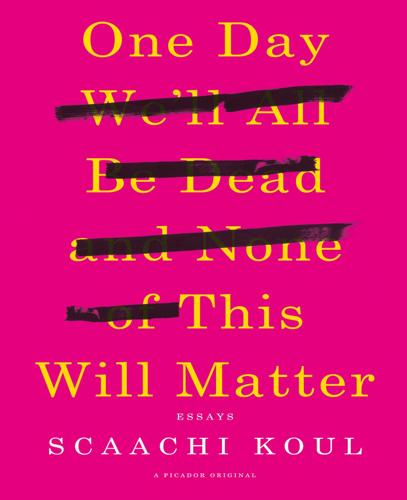
One Day We'll All Be Dead and None of This Will Matter
by
Scaachi Koul
Published 7 Mar 2017
And when that message comes from a non-white non-male person themselves, someone young enough to not yet have any inherent gravitas and—this part is important—just enough privilege to be powerful, that’s when they target you. The response was fine, initially. I was handling it, the general misunderstanding of the worth of affirmative action. But then a few users twisted the knife and I started to get lightheaded. “Whites are literally GODS compared to all you shit colored freaks,” wrote one user, and for some reason, it gave me pause. “Act like an insufferable cunt and then turn around and play the victim when people put you in your place,” said another, and so I decided to go home early that day.
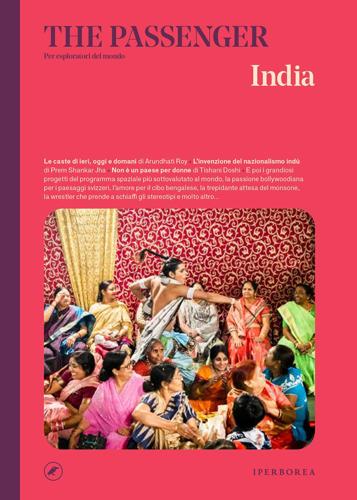
The Passenger - India
by
AA.VV.
Published 19 Feb 2020
In un racconto, uno spazzino trova un gruzzolo nascosto da qualcuno che cercava di evadere le tasse e lo usa per portare la sua giovanissima amata a vedere il famoso Taj Mahal solo per scoprire che la ricchezza, anche se solo temporanea, può portare un sacco di guai. Nella seconda storia, un dalit – membro di una delle caste oppresse nel terribile ma tuttora esistente sistema di discriminazione basato sulla discendenza – scopre che la sua identità è stata rubata da un uomo «di casta alta» che cerca di approfittare dei vantaggi della affirmative action, un insieme di politiche create per compensare le discriminazioni subite dai dalit. Nel terzo racconto, che ha un fondo di realismo magico, una famiglia cerca di curare il proprio figlio da una «malattia» misteriosa, una testa deforme che continua a crescere e che è vista come il sintomo di un’intelligenza eccessiva.

Riding Rockets: The Outrageous Tales of a Space Shuttle Astronaut
by
Mike Mullane
Published 24 Jan 2006
The effect was that Ron’s black arm appeared to be Judy’s. Through a left-side hole, the white TFNG extended his excessively hairy arm as if it were also Judy’s. Clothing was pinned to the sheet to give the appearance the mutation was dressed. And what a mutation—a woman with one black and one white arm, an affirmative action wet dream. The skit continued as an “astronaut selection board”—fellow TFNGs, of course—interviewed this androgynous creature. All this time, the arm and hand movements, comically uncoordinated, brought howls of laughter. The final question posed was “What makes you qualified to be an astronaut?”
…
Had she been waved through some of those gates because her smile had melted a professor or perhaps her dynamite body had influenced a male astronaut sitting on the selection committee? We males are suspicious of female beauty because we know ourselves too well. But, over the years, Judy had proven she wasn’t an astronaut because of her sex appeal or because of an abuse of the affirmative action program. She was an astronaut because she was qualified to be one. I had watched her fly formation from the backseats of T-38s and lead instrument approaches in bad weather and do it as well as me (and my backseat fighter and T-38 time had made me a damned fine instrument pilot). I had seen her expertly operate the robot arm.
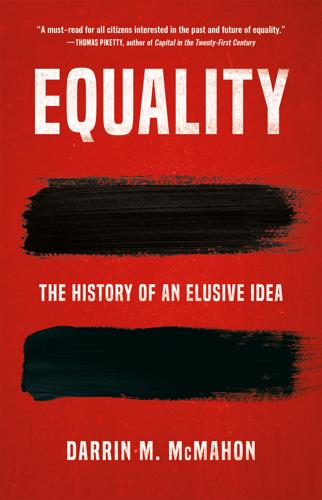
Equality
by
Darrin M. McMahon
Published 14 Nov 2023
The cartoon shows the ground being raised—literally leveled up—so that the Black figure is able to reach the rope and pull himself to the top. The end goal, we learn, is for “everyone [to be] on equal footing so that they can compete on equal footing.” “Equitable treatment means we all end up at the same place.”15 In some respects, the language of equity is just a new iteration of the logic of affirmative action and the older socialist belief that resources should be tailored to differing needs in the service of providing more equal results. But the clip is misleading in that it suggests that competition on equal footing will lead people to an equal place, which it never does. That, as we have seen, was the whole point of the meritocratic claims to equality put forth in the eighteenth century—to provide a mechanism for identifying a new elite of hard work, talent, and intelligence to replace the old ones based on clientage, caste, and aristocratic blood.
…
Pederson, Family, Dependence, and Origins of the Welfare State: Britain and France, 1914–1945 (Cambridge: Cambridge University Press, 1995); Alice Kessler-Harris, In Pursuit of Equity: Women, Men, and the Quest for Economic Citizenship in 20th-Century America (Oxford: Oxford University Press, 2001); Ira Katznelson, When Affirmative Action Was White: An Untold Story of Racial Inequality in Twentieth-Century America (New York: W. W. Norton, 2006); Laura Levine Frader, Breadwinners and Citizens: Gender and the Making of the French Social Model (Durham, NC: Duke University Press, 2008). CHAPTER ELEVEN: DREAM 1. Martin Luther King Jr., “I Have a Dream,” in A Testament of Hope: The Essential Writings and Speeches, ed.
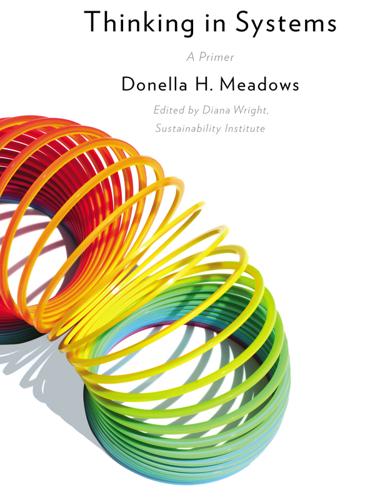
Thinking in Systems: A Primer
by
Meadows. Donella
and
Diana Wright
Published 3 Dec 2008
It could mean that neither insurance companies nor public funds should pay for medical costs resulting from smoking or from accidents in which a motorcycle rider didn’t wear a helmet or a car rider didn’t fasten the seat belt. It could mean Congress would no longer be allowed to legislate rules from which it exempts itself. (There are many rules from which Congress has exempted itself, including affirmative action hiring requirements and the necessity of preparing environmental impact statements.) A great deal of responsibility was lost when rulers who declared war were no longer expected to lead the troops into battle. Warfare became even more irresponsible when it became possible to push a button and cause tremendous damage at such a distance that the person pushing the button never even sees the damage.
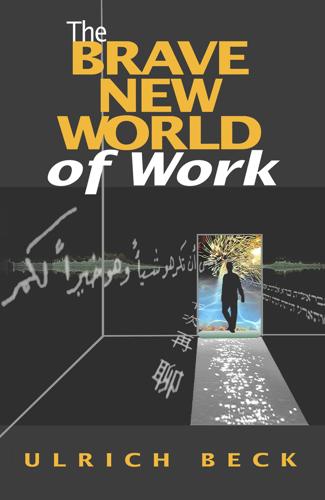
Brave New World of Work
by
Ulrich Beck
Published 15 Jan 2000
What robs technologically advanced capitalism of its legitimacy is not that it tears down national barriers and produces ever more with ever less labour, but rather that it blocks political initiatives towards a new European social model and social contract. Anyone today who thinks about unemployment should not remain trapped in old disputes about the ‘second labour market’, ‘falling wage costs’ or ‘affirmative action’. The question that needs to be asked is how democracy will be possible after the full-employment society. What appears as a final collapse must instead be converted into a founding period for new ideas and models, a period that will open the way to the state, economy and society of the twenty-first century.

Move Fast and Break Things: How Facebook, Google, and Amazon Cornered Culture and Undermined Democracy
by
Jonathan Taplin
Published 17 Apr 2017
Here is Hoppe’s thesis: In the United States, less than a century of full-blown democracy has resulted in steadily increasing moral degeneration, family and social disintegration, and cultural decay in the form of continually rising rates of divorce, illegitimacy, abortion and crime. As a result of an ever-expanding list of non-discrimination—“affirmative action”—laws and non-discriminatory, multicultural, egalitarian immigration policies, every nook and cranny of American society is affected by government management and forced integration; accordingly, social strife and racial ethnic and moral-cultural tension and hostility have increased dramatically.
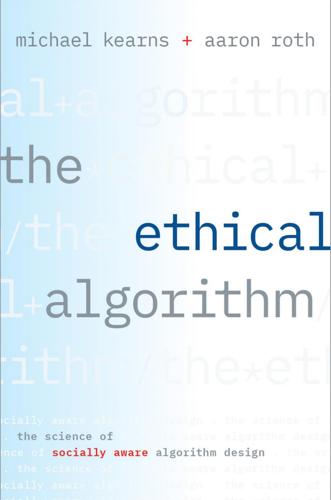
The Ethical Algorithm: The Science of Socially Aware Algorithm Design
by
Michael Kearns
and
Aaron Roth
Published 3 Oct 2019
This hybrid model would make only three mistakes (two for the Circle cutoff and 1 for the Square), better than the seven mistakes for the aggregate single cutoff previously discussed, and it is also more fair, since it falsely rejects the same number (one) of Circle and Square applicants. So we’ve permitted a more complex model but have improved on both criteria. This might indeed be a good thing to do, increasing both fairness and accuracy at the same time. In fact, it’s not so different from how certain affirmative action policies are implemented. But note that this model (which really involves first picking which submodel to use based on the applicant’s race) now explicitly uses race as an input, which, as we discussed above, is something some notions of fairness (and many laws) forbid, since race can equally well be used to increase rather than reduce discrimination.
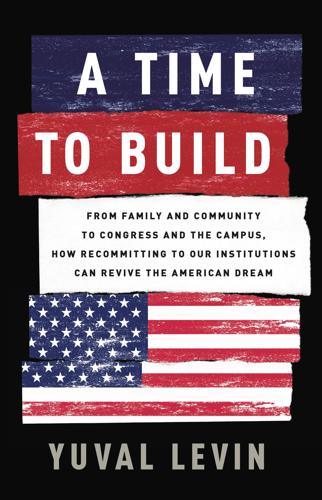
A Time to Build: From Family and Community to Congress and the Campus, How Recommitting to Our Institutions Can Revive the American Dream
by
Yuval Levin
Published 21 Jan 2020
They offered a single, objective standard of comparison, and so would break the stranglehold of the patrician WASP families. The new approach to admissions quickly allowed for more Catholic and Jewish students in elite universities—and later also for more students of Asian ancestry. Over time, and partly with the aid of affirmative-action formulas, they were soon joined by a greater number of African American and Hispanic students, while the integration of women into elite universities (largely in the 1960s and ’70s) meant that these schools also stopped being boys’ clubs. Although family-legacy admissions certainly continue, and the WASP lines are still overrepresented in elite schools, there is no doubt that today’s American elite is far less narrowly drawn in terms of race, ethnicity, religion, and sex.
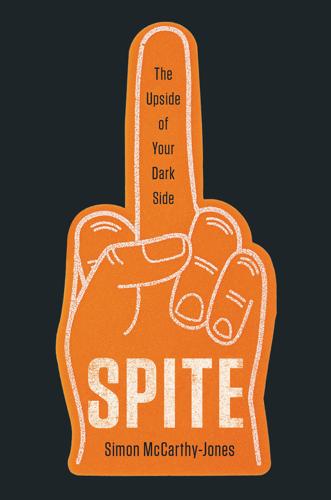
Spite: The Upside of Your Dark Side
by
Simon McCarthy-Jones
Published 12 Apr 2021
Another allegation was that she was being considered for the highest office in the land only because the politically correct had decided it was time for a female president. In April 2016, during the same interview in which Trump introduced the world to the term “Crooked Hillary,” he also claimed, “The only thing she’s got is the woman card.” The implication was that Clinton was unqualified for the job and that her claim to it lay solely on a gender-based affirmative action principle.37 This was ludicrous. As President Barack Obama put it, “I can say with confidence there has never been a man or a woman—not me, not Bill, nobody—more qualified than Hillary Clinton to serve as president of the United States of America.”38 We saw earlier how perceiving others as enjoying unmerited gains can trigger a spiteful response.

The Milky Way: An Autobiography of Our Galaxy
by
Moiya McTier
Published 14 Aug 2022
Declaring myself a creature of the night helped cement my desired place as the Weird Kid, as if being the smartest and also the blackest person at my small, rural school didn’t already make me stand out enough. That’s not an empty flex; I was voted most unique and was easily the valedictorian of my class after skipping sophomore year. People still said I only got into college because of affirmative action. Don’t get me wrong, most people I interacted with were very kind, and I’m grateful for the experiences had and connections made that let me empathize with a part of the country that rightfully feels ignored by the very class of intellectual elites I worked my ass off to break into. I learned valuable lessons in coal country, like how to chop firewood, do a deep-conditioning treatment with nothing but a bucket of water and a cup, and look past obvious differences to find common ground.
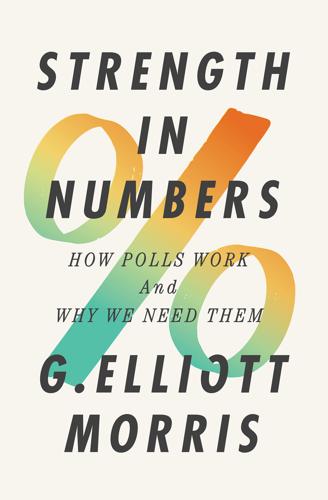
Strength in Numbers: How Polls Work and Why We Need Them
by
G. Elliott Morris
Published 11 Jul 2022
By way of empirical results, political scientists Scott Keeter and Michael Delli-Carpini devoted an entire book to this topic, What Americans Know about Politics and Why It Matters. They found eyebrow-raisingly low levels of knowledge of domestic politics among the masses. For example, less than a third knew what affirmative action was, and “more than 60% of [over 300 questions] could not be answered by as many as half of [people] asked.”32 Elaborating upon Lippmann’s skepticism of the people to make purely rational decisions, the political scientists Christopher Achen and Larry Bartels argue in their 2016 book Democracy for Realists: Why Elections Do Not Produce Responsive Government that voters do not in fact act rationally in accordance with the “folk theory” of democracy.33 Instead, elections are fights between different factions of citizens in which our psychology is swayed by our affiliations to different candidates.
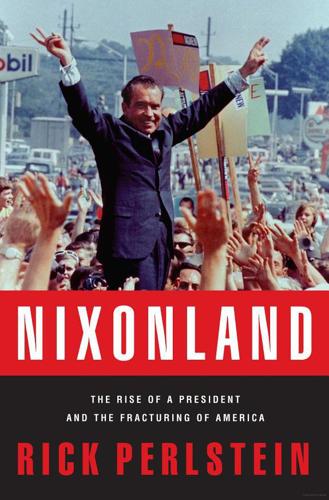
Nixonland: The Rise of a President and the Fracturing of America
by
Rick Perlstein
Published 1 Jan 2008
They were convinced the banning of the back rooms was what it would take to win in 1972. Richard Nixon understood things differently. His political operation was all back rooms. Reformers such as Fred Dutton saw the Democrats’ moves toward what would later be called affirmative action as an imperative to save the Democratic Party. When Richard Nixon had made his own steps toward affirmative action, he saw it as a tool to destroy the Democrats. Building trades unions controlled apprenticeship opportunities that often passed from father to son, making construction sites among the most segregated workplaces in the nation. Labor Secretary George Shultz, hoping to reform them, came up with the idea of voluntary goals for integrating government building projects.
…
George Mitchell, the national committeeman from Maine, Edmund Muskie’s representative, said it would be interpreted as “some sort of quota.” Professor Ranney said he feared he’d opened a “Pandora’s box.” Will Davis of Texas said the South would never stand for it. The vote was called; what would later come to be called “affirmative action” won 13–7. However, Mandate for Change included a footnote: “It is the understanding of the Commission that this is not to be accomplished by the mandatory imposition of quotas.” The New York Times gave the release of the McGovern Commission’s report on April 28, 1970, a big spread. They led with the commission’s apocalyptic claim that “the only alternative to broader citizen participation in politics was the anti-politics of the street.”
…
Failed antiwar candidacies and voting-age referendum: Washington Star, June 8, 1970. Michigan survey on young voters and Wallace: Reg Weaver and Hal Gulliver, The Southern Strategy (New York: Scribner, 1971), 105. Delegates would now have to be: Shafer, Quiet Revolution, 29. “Philadelphia Plan”: Thomas J. Sugrue, “Affirmative Action from Below: Civil Rights, the Building Trades, and the Politics of Racial Equality in the Urban North, 1945–1969,” Journal of American History 1 (June 2004): 145–73. Electoral college reform: Alexander Keyssar, “Peculiar Institution,” Boston Globe, October 17, 2004. “Our ability to change this system”: PPP 289, September 11, 1970.

In the Age of the Smart Machine
by
Shoshana Zuboff
Published 14 Apr 1988
A number of inci- dents in the conference created a stir within the management hierar- chy. In one case, a member had posted information about affirmative action in the conference. In another case, some members discussed a personal issue with little business relevance. The head of systems development, the division responsible for main- taining DIALOG, received complaints from the industrial relations divi- sion concerning the possibility of female employees organizing a union and from the legal department complaining that the women might file affirmative action suits. He responded by compiling hard copies of con- ference transcripts and a list of members.
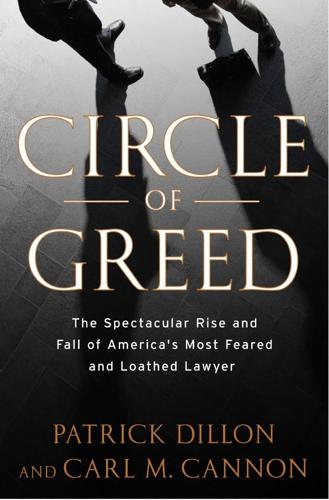
Circle of Greed: The Spectacular Rise and Fall of the Lawyer Who Brought Corporate America to Its Knees
by
Patrick Dillon
and
Carl M. Cannon
Published 2 Mar 2010
In their hands would lie the future of scheme liability. From what Bill Lerach knew about the three men, he was not encouraged. Jerry Smith was a Reagan appointee from the Texas border town of Del Rio known primarily for writing the majority opinion striking down affirmative action at the University of Texas Law School, a decision that would be superseded seven years later by the U.S. Supreme Court’s 5–4 decision upholding affirmative action at the University of Michigan Law School. The next jurist, James Dennis of New Orleans, was appointed by President Clinton in 1995. Although he had figured in few noteworthy decisions, Lerach considered him sympathetic toward victims of corporate fraud.
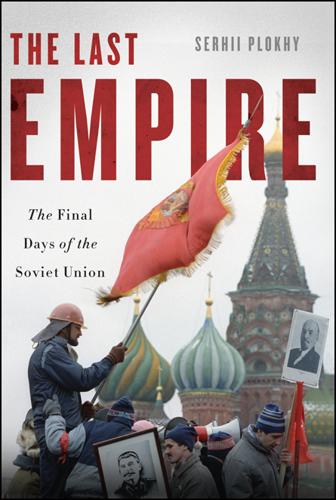
The Last Empire: The Final Days of the Soviet Union
by
Serhii Plokhy
Published 12 May 2014
v=T1zr8Fr1Nbs; “Sekretnyi stsenarii razvala SSSR i Rossii v planakh TsRU,” YouTube video posted by AndreyFLKZ, January 31, 2013, www.youtube.com/watch?v=PfeiGv6IkQc. 5. On the Soviet Union as a multinational state, see Richard Pipes, The Formation of the Soviet Union: Communism and Nationalism, 1917–23 (Cambridge, MA, 1997); Terry Martin, The Affirmative Action Empire: Nations and Nationalism in the Soviet Union, 1923–1939 (Ithaca, NY, 2001); Francine Hirsch, Empire of Nations: Ethnographic Knowledge and the Making of the Soviet Union (Ithaca, NY, 2005). 6. For the interpretation of the Soviet collapse as the fall of an empire and the role of political nationalism in that process, see Roman Szporluk, Russia, Ukraine, and the Breakup of the Soviet Union (Stanford, CA, 2000); Dominic Lieven, Empire: The Russian Empire and Its Rivals (New Haven, CT, 2002), ch. 9; Mark R.
…
Mark Beissinger, “The Persistent Ambiguity of Empire,” Post-Soviet Affairs no. 11 (1995); Mark R. Beissinger, “Rethinking Empire in the Wake of Soviet Collapse,” in Ethnic Politics and Post-Communism: Theories and Practice, ed. Zoltan Barany and Robert Moser (Ithaca, NY, 2005), 14–44; S. Becker, “Russia and the Concept of Empire,” Ab Imperio, 2000, nos. 3–4: 329–342; Terry Martin, The Affirmative Action Empire: Nations and Nationalism in the Soviet Union, 1923–1939 (Ithaca, NY, 2001); Terry Martin, “The Soviet Union as Empire: Salvaging a Dubious Theoretical Category,” Ab Imperio, 2002, no. 2: 91–105; Jane Burbank and Frederick Cooper, Empires in World History: Power and Politics of Difference (Princeton, NJ, 2010), chap. 14; Dominic Lieven, Empire: The Russian Empire and Its Rivals (New Haven, CT, 2002), chap. 9; S.

The Zionist Ideas: Visions for the Jewish Homeland—Then, Now, Tomorrow
by
Gil Troy
Published 14 Apr 2018
I still have universalist dreams—visions of one world without the rancors of nationalism, tribalism, and patriarchy—but now I dream them only when fully awake, and I take my inspiration not from some naive UNICEF greeting card but from a pluralist feminism founded on a mutual respect for each other’s “identity politics,” which include the particularities of culture, peoplehood, and history. . . . If feminists can understand why history entitles lesbians to separatism, or minorities and women to affirmative action, we can understand why history entitles Jews to “preferential” safe space. To me, Zionism is simply an affirmative action plan on a national scale. Just as legal remedies are justified in reparation for racism and sexism, the Law of Return to Israel is justified, if not by Jewish religious and ethnic claims, then by the intransigence of worldwide antisemitism. . . .
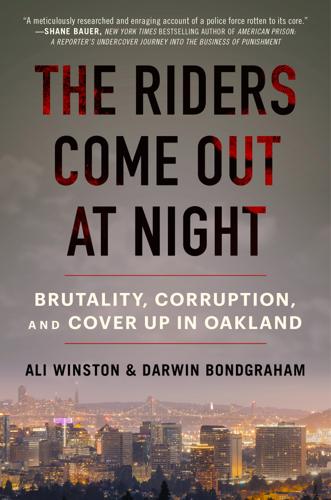
The Riders Come Out at Night: Brutality, Corruption, and Cover-Up in Oakland
by
Ali Winston
and
Darwin Bondgraham
Published 10 Jan 2023
However, the era’s bloodshed effectively silenced law enforcement critics. Instead, neighborhood watches and church groups lobbied for more cops and tougher approaches to crime. The OPD was also a dramatically different department. As a result of changes initiated by Charles Gain, George Hart, and a 1974 affirmative action hiring mandate, it had diversified to the point where, by 1985, 39 percent of its officers were people of color, up from less than 1 percent in the mid-1960s.45 With more Oakland-raised Black and brown cops on the job, the force finally had genuine community connections. However, the fiscal crisis did not spare the police department.
…
Oakland also underbid San Francisco with free land to convince the federal government to build new offices downtown. A state office building soon followed. Wilson’s first term mostly satiated liberal and even radical aspirations; in addition to supporting the Citizens’ Police Review Board’s creation, he upended Oakland’s system of contracting and city jobs, ramming through an affirmative action measure that gave Black businesses a leg up. In his last two terms, Wilson used his reputation as a civil rights advocate to stave off criticisms that he’d grown too cozy with the downtown business community and neglected the poor.70 But by the late 1980s, progressives and Black people were defecting from the coalition that had elected Wilson to three consecutive terms, citing the worsening poverty and violence in East and West Oakland.
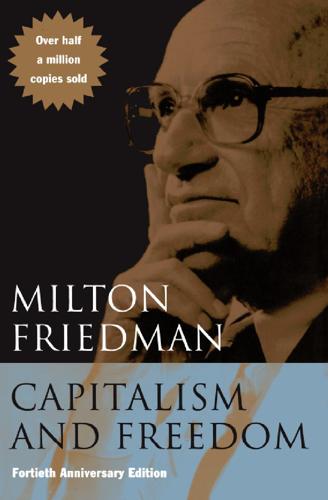
Capitalism and Freedom
by
Milton Friedman
Published 1 Jan 1962
Closer to home, the intellectuals, always devotees of big government and by wide majorities supporters of the national Democratic party, had been disillusioned by the Vietnam War, particularly the role played by Presidents Kennedy and Johnson. Many of the great reform programs—such guidons of the past as welfare, public housing, support of trade unions, integration of schools, federal aid to education, affirmative action—were turning to ashes. As with the rest of the population, their pocketbooks were being hit with inflation and high taxes. These phenomena, not the persuasiveness of the ideas expressed in books dealing with principles, explain the transition from the overwhelming defeat of Barry Goldwater in 1964 to the overwhelming victory of Ronald Reagan in 1980—two men with essentially the same program and the same message.
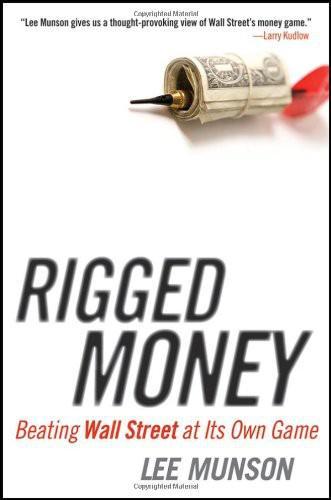
Rigged Money: Beating Wall Street at Its Own Game
by
Lee Munson
Published 6 Dec 2011
It suggests that something exists that you should stay away from, like the plague or bird flu. Most often a sell is placed on a stock that is so dead and buried that nobody cares in the first place, but a firm selling research can get credit for a fair and balanced lineup of recommendations. It is kind of like affirmative action for stock ratings. The general trap for intrepid investors is letting the cynicism take over and looking for buys in the sell list. While I get the idea of looking for treasure in another person’s trash, you are still fighting the tide. Sometimes it is better to just leave them alone. Plus, most of the time sells are really bad stocks!
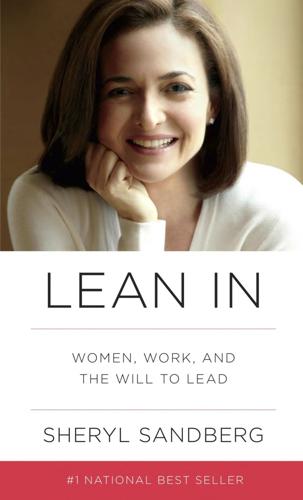
Lean In: Women, Work, and the Will to Lead
by
Sheryl Sandberg
Published 11 Mar 2013
Their intent may not have been malicious, but the implication was clear: I had not gotten the job on merit. I also figured that for every person pointing out my “advantage” to my face, there were probably a dozen others saying it less politely behind my back. I considered my possible responses. I could explain that the last time I checked there was no affirmative action for women at Treasury. I could mention that my credentials lined up with those of the men who had previously held this position. If there was enough time, I could recount centuries of discrimination against women. Or I could just slap the person across the face. I tried all these options at least once.
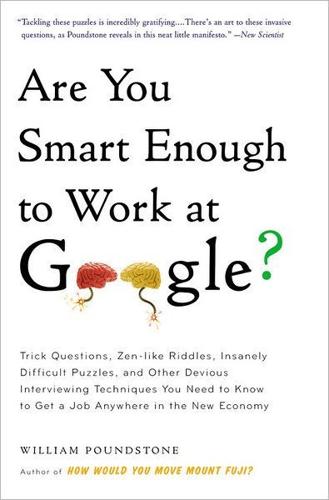
Are You Smart Enough to Work at Google?: Trick Questions, Zen-Like Riddles, Insanely Difficult Puzzles, and Other Devious Interviewing Techniques You ... Know to Get a Job Anywhere in the New Economy
by
William Poundstone
Published 4 Jan 2012
I hired somebody the other day who was not only the first in her family to go to college but worked full-time in college so that her sister could go as well. We hired that person, and she went to a very non–Ivy League school.” It might be more accurate to say that Google acts like an Ivy League school in evaluating candidates. Its policy could be described as affirmative action for the very, very smart. “We do go out of our way to recruit people who are a little different,” Larry Page once said. Carlisle therefore sees his role as “finding the people we would ignore. Like, who’s the kid in his village in India who repairs all the phone lines even though he’s twelve, because no one else can do it, and he’s got that technical aptitude?”
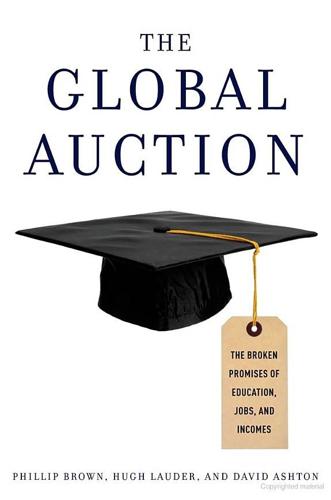
The Global Auction: The Broken Promises of Education, Jobs, and Incomes
by
Phillip Brown
,
Hugh Lauder
and
David Ashton
Published 3 Nov 2010
Positional conflict has, therefore, not only cast the rich against poor but created a middle class at war with itself.5 If the American Dream is to be reclaimed, politicians cannot turn a blind eye to this elite self-recruitment. Even the right-wing Noble Prize winner James Buchanan has argued that when the wealthy die, their money should be returned to the community so as to preserve a meritocracy. It can’t be right that selection to America’s top universities amount to what Daniel Golden calls “affirmative action for rich white people” in his book on how America’s elites buy their way into top universities. He argues that the children of wealthy or influential 134 The Global Auction parents enjoy the “preferences of privilege.” This means regular students applying to Ivy League universities may find themselves vying for only 40 percent of places because the rest are reserved for preferential candidates.6 Reforms to close the opportunity gap are therefore required at both ends of the social spectrum to create a fairer competition for a livelihood.

The Snowden Files: The Inside Story of the World's Most Wanted Man
by
Luke Harding
Published 7 Feb 2014
Once Obama won and became president, Snowden came to dislike him intensely. He criticised the White House’s attempts to ban assault weapons. The lodestar in Snowden’s thinking, at this time and later, was the US constitution; in this case the second amendment and the right to bear arms. Snowden was unimpressed by affirmative action. He was also against social security, believing that individuals shouldn’t go running to the state for help, even in times of trouble. A couple of users called him out on this, one posting: ‘Yeah! Fuck old people!’ TheTrueHOOHA responded with fury. He wrote: ‘You fucking retards … my grandmother is eighty fucking three this year and, you know what, she still supports herself as a goddamned hairdresser … maybe when you grow up and actually pay taxes, you’ll understand.’
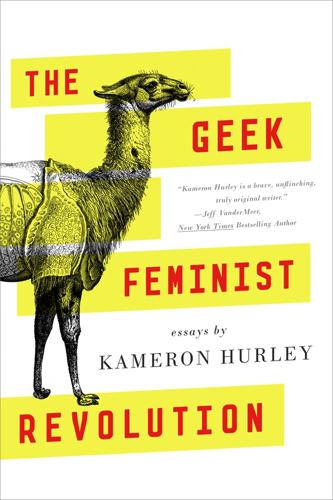
The Geek Feminist Revolution
by
Kameron Hurley
Published 1 Jan 2016
In 2014 the awards were dominated by writers of color and women, myself included. So it was a surprise when a majority of voters woke up April 4 to a nomination slate almost exclusively overrun by novels, stories, and related fan efforts promoted by a small group of writers who claim the Hugos are turning into affirmative-action awards catering to left-wing ideologies. Their efforts to influence the voting process are led by a notorious right-wing novelist and internet personality who’s best known for his desire to deny women the right to vote2 and his firm belief that black people are “savages.”3 When I won two awards last year, it seemed like an impossible achievement for me, because I knew the history of the Hugos.

Give People Money
by
Annie Lowrey
Published 10 Jul 2018
“on explicit condition that no sales be made to blacks”: Richard Rothstein, “School Policy Is Housing Policy: Deconcentrating Disadvantage to Address the Achievement Gap” in Race, Equity, and Education: Sixty Years from Brown, ed. Pedro Noguera, Jill Pierce, and Roey Ahram (New York: Springer, 2015), 32. the GI Bill: Ira Katznelson, When Affirmative Action Was White: An Untold History of Racial Inequality in Twentieth-Century America (New York: W. W. Norton, 2006), ebook. Ebony magazine: Ibid. net worth of nearly $40,000: Ibid. Most high-poverty neighborhoods are now majority-minority: Erica E. Meade, “Overview of Community Characteristics in Areas with Concentrated Poverty” (Washington, DC: Department of Health and Human Services, Office of the Assistant Secretary for Planning and Evaluation, Research Brief, May 2014), https://aspe.hhs.gov/system/files/pdf/40651/rb_concentratedpoverty.pdf.
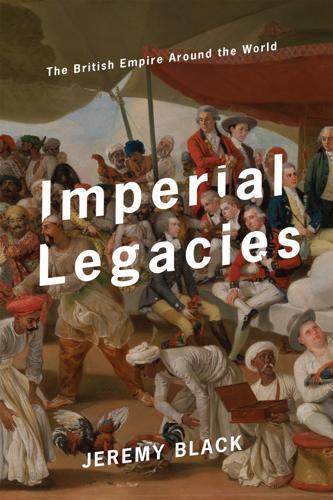
Imperial Legacies
by
Jeremy Black;
Published 14 Jul 2019
In the National Museum of Malaysia, an impressive building that was opened in 1963 in the capital, Kuala Lumpur, the focus is on the medieval Malay sultanate of Melaka, which is presented as a peaceful multiracial society. This approach implies that Malaysia’s current communal tensions are a consequence of British imperialism. However, it is the Malaysian government, in its consistent affirmative action policies (in effect, positive discrimination) toward the Muslim Malays, that has very much disadvantaged the native Chinese and Indian populations, both of whom did well under British rule. Resistance to Western imperialism is discussed and approved of in the Museum, for example the murder of the British Resident in Perak in 1875.

What Doctors Feel: How Emotions Affect the Practice of Medicine
by
Danielle Ofri
Published 3 Jun 2013
What influences my own clinical practice are the lessons I received from a cadre of older, white, male physicians—my own attendings—who wore starched shirts, conservative ties (often of the bow variety), and properly buttoned white coats to every clinical encounter. They trained in an era in which their entire medical-school class looked exactly like them, with no diversity awareness, affirmative action, or cultural competence. Yet they were among the most culturally aware people I’ve ever seen, though they probably would never use such a PC term. These physicians exemplified a very old-fashioned sort of doctoring. For them, approaching the bedside of a patient was a sacred act. They examined each patient—whether a homeless Ecuadoran alcoholic or a veiled Muslim woman or a visiting Swiss diplomat—with a thoroughness that in itself exuded respect.
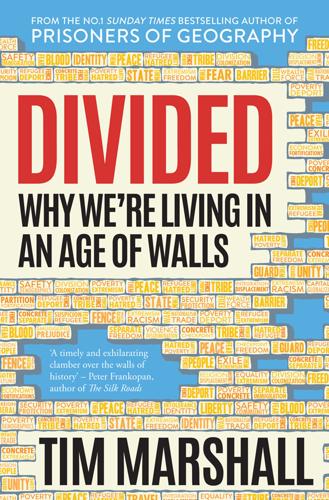
Divided: Why We're Living in an Age of Walls
by
Tim Marshall
Published 8 Mar 2018
Dalits owning or buying land is the most common cause of violence against them by local communities determined to keep them at the bottom of society. Reliable national statistics for caste numbers are difficult to find because the last time the Indian census included caste was 1931. Then the Untouchables constituted 12.5 per cent of the population. Now, despite twenty-seven years of affirmative action, they remain the poorest and most oppressed of India’s people. The major government, judicial, diplomatic and military positions, as well as senior posts in major companies, academia, the media and the education system, are all overwhelmingly dominated by Brahmins despite the fact that they comprise roughly 3.5 per cent of the population.
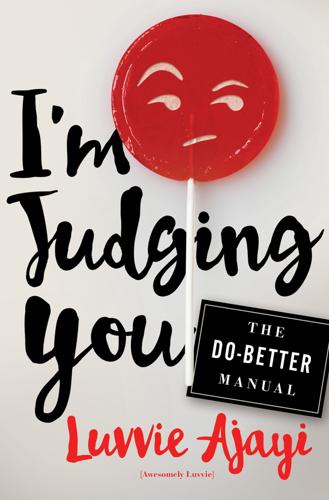
I'm Judging You: The Do-Better Manual
by
Luvvie Ajayi
Published 12 Sep 2016
Sometimes, it’s suits and boardrooms. We Black and brown people are told to work twice as hard to get half as far, because we never stop auditioning for the jobs we have and we can never stop proving that we belong in the rooms we work our way into. Otherwise, we’re suspected of being beneficiaries of quota systems and affirmative action. Racism is our names on our résumés being perceived as less competent and resulting in half as many job-interview callbacks as others with identical qualifications. It is the fact that Black people with college degrees often make the same as or less than a white person with a high school diploma.
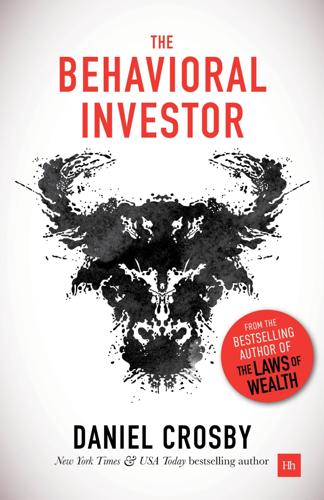
The Behavioral Investor
by
Daniel Crosby
Published 15 Feb 2018
Of those surveyed, 23% said that their views had become more extreme after reading the document and all of those whose views had changed had moved in the direction of their pre-existing bias. Taber and Lodge conducted a similar study in which those with strong opinions about gun control and affirmative action were asked to read arguments on both sides of those two issues. Those with the strongest previous feelings and well-identified political preferences showed even greater polarization in the direction of their extant beliefs. When presented with beliefs that challenged their own, the radical became even more radical.
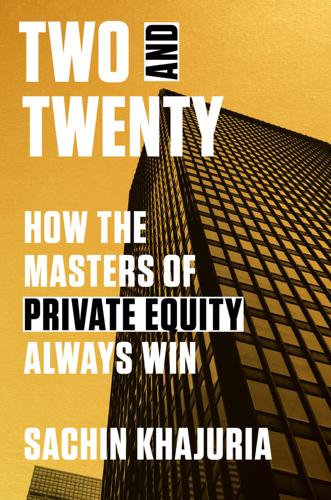
Two and Twenty: How the Masters of Private Equity Always Win
by
Sachin Khajuria
Published 13 Jun 2022
This is double the amount of the previous year and six times the number of five years ago. The Firm has evolved; it’s now a multi-billion-dollar public company managing hundreds of billions of dollars of investors’ money across investment strategies. It’s giving back a lot more to society: education grants to local community colleges; affirmative action programs for hiring and education; home office setups for employees; plans to hire veterans in portfolio companies; refurbishment of local parks and community sports facilities; and a “Dragon’s Den” style contest for entrepreneurial ideas—for the youngest, newest employees. It’s a far cry from the stereotypical image of excess often heard on Wall Street about private equity.

The Great Wave: The Era of Radical Disruption and the Rise of the Outsider
by
Michiko Kakutani
Published 20 Feb 2024
This was a hinge moment in which an ambivalent government’s failure to decisively vanquish Confederate holdouts and attitudes led to more than a century in which African Americans were willfully denied equality. This systemic racism persists to this day, as MAGA Republicans try to roll back the progress made in civil rights, and the Supreme Court—with a 6–3 conservative supermajority—undermines affirmative action and LGBTQ+ rights, in addition to eliminating the constitutional right to abortion and narrowing the reach of key environmental regulations. Another trait shared by the Gilded Age and the opening decades of the twenty-first century is skyrocketing income inequality; then as now, “fewer have more,” to quote a phrase used to describe the late Roman Empire.
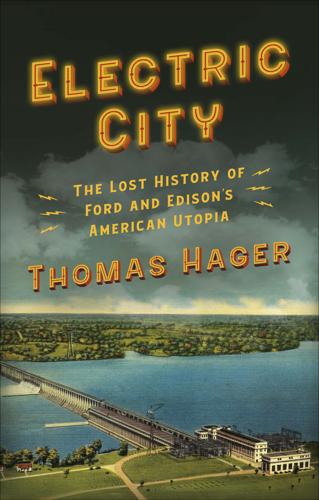
Electric City
by
Thomas Hager
Published 18 May 2021
He waxed poetic when writing of the TVA demonstrating “the oneness of men and natural resources, the unity that binds together land, streams, forests, minerals, farming, industry, mankind …” It was the first government agency of its kind, he wrote, devoted to the total benefit of a large region. “What the TVA … has sought to do,” he wrote, “can be simply stated: to accept an obligation to harmonize the private interest in earning a return from resources, with the dominant public interest in their unified and efficient development … to make affirmative action in the public interest both feasible and appealing to private individuals.” It was stirring stuff, and it had its effect. The nation and the world saw the TVA as an unalloyed success story, a demonstration that a democratic, capitalistic society could mount great projects for the common good.

The Crisis of Crowding: Quant Copycats, Ugly Models, and the New Crash Normal
by
Ludwig B. Chincarini
Published 29 Jul 2012
When I was working at the CBOE, I remember traders selling options some days and then being so excited they took their wife out for dinner that night. It’s the same idea. They hadn’t made a real profit. They had sold an option and created a liability for themselves. —Myron Scholes interview, July 9, 2011 Financial leaders and followers alike need more and better financial education. In the United States, growing affirmative action (aka diversity) in the workplace and schools, grade inflation, and meaningless degrees are all movements in the wrong direction. More financial education would help people understand their risks, from buying a home to managing a business. Better education could also help financial professionals make appropriate distinctions between helpful derivatives and those of questionable usefulness to society.
…
A system with less regulation might have more agitated business cycles, more innovation, and higher long-term growth. We must consider the economic impact of universal health care, where the healthier and wealthier substantially subsidize the poor and less healthy, as well as the effects of affirmative action policies that may lead to less efficient workers in the workplace or less able students in the universities.21 Politicians should also concern themselves with system choices rather than easy, rhetorical sound bites that only distract and misinform the general population. My own intuition is that there is a tradeoff.
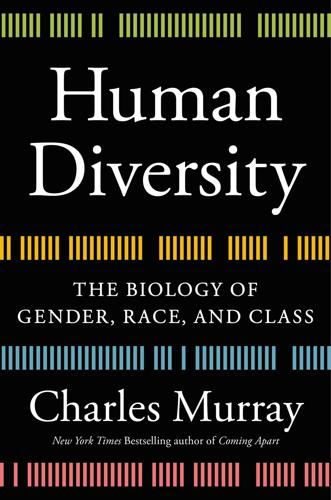
Human Diversity: The Biology of Gender, Race, and Class
by
Charles Murray
Published 28 Jan 2020
The explicit rejection of a role for biology in the social sciences occurred from the end of the nineteenth through the beginning of the twentieth centuries, with the leading roles played by Émile Durkheim in sociology, Franz Boas in anthropology, and John Watson in psychology.3 The political expression of the orthodoxy had its origins in the mid-1960s with the legal triumphs of the civil rights movement and the rise of feminism. In the beginning, the orthodoxy consisted of specific allegations and solutions: Racism keeps black unemployment high. Sexism stunts women’s careers. Affirmative action and antidiscrimination laws are needed. But the orthodoxy soon began to incorporate an intellectual movement that gained momentum in the mid-1960s with the publication of The Social Construction of Reality by Peter L. Berger and Thomas Luckmann. The authors were dealing with an ancient problem: Each of us thinks we know what reality is, but different people have different perceptions of it.
…
First, consider the timeline of legal reforms: 1963: John Kennedy’s Presidential Commission on the Status of Women released its strongly pro-feminist report, and the Equal Pay Act of 1963 mandated equal pay for equal work. 1964: Title VII of the Civil Rights Act of 1964 forbade employer discrimination on the basis of sex. Griswold v. Connecticut invalidated legal restrictions on access to birth control. 1967: A presidential executive order extended affirmative action in employment and education to include women. 1968: Sexual harassment was added to federal antidiscrimination law as a basis for bringing actions against employers. 1972: Title IX of the Education Amendments mandated nondiscrimination in any school receiving government aid (effectively all of them) and included broad enforcement powers.
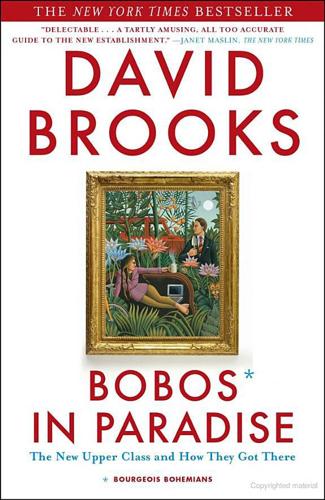
Bobos in Paradise: The New Upper Class and How They Got There
by
David Brooks
Published 1 Jan 2000
They embraced school uniforms and other traditional-sounding gestures, as well as condoms in schools and other liberal-sounding measures. Clinton triangulated above the hard-edged warriors on left and right and presented a soft and comfortable synthesis. He could, he declared, balance the budget without painful budget cuts, reform welfare without meanness, mend affirmative action but not end it, toughen the drug war while spending more on rehabilitation, preserve public schools while championing charter school alternatives. Battered early in the administration with a culture war skirmish over gays in the military, the Clintonites settled on “Don’t Ask, Don’t Tell.” If ever there was a slogan that captures the Third Way efforts to find a peaceful middle ground, that was it.
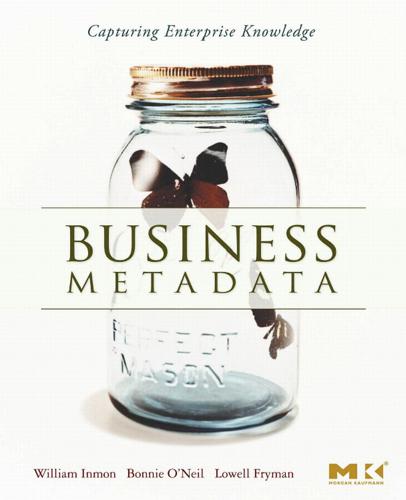
Business Metadata: Capturing Enterprise Knowledge
by
William H. Inmon
,
Bonnie K. O'Neil
and
Lowell Fryman
Published 15 Feb 2008
A document may be authored or owned by one division of the company but perceived as being part of another functional area, for search purposes. For example, Hannon (2005) points out that tuition reimbursement policies may be set by Finance but are considered related to HR, so the average searcher would expect to find tuition reimbursement guidelines under the HR category; the same applies to something like Affirmative Action policies, which may be written by the legal department but should be searchable under HR. Therefore, the originator of the document may not always be the appropriate place for it to reside for search. The decision of where documents belong is a decision for governance. 4.6 Summary 4.5.2.7 77 Governance and Taxonomy Zach Wahl points out that it is critical to have a cross-disciplinary team assisting in taxonomy creation (Wahl, 2006).
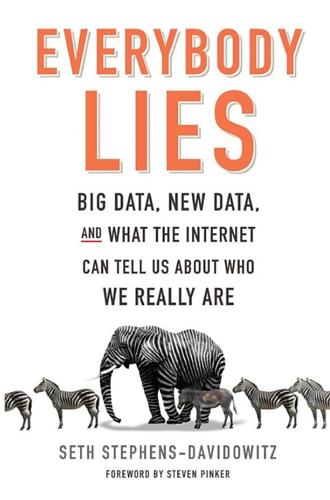
Everybody Lies: Big Data, New Data, and What the Internet Can Tell Us About Who We Really Are
by
Seth Stephens-Davidowitz
Published 8 May 2017
“If your kid goes to Stuy, he is going to go to a legit, top-twenty university. The family will be okay.” So how can you get into Stuyvesant High School? You have to live in one of the five boroughs of New York City and score above a certain number on the admission exam. That’s it. No recommendations, no essay, no legacy admission, no affirmative action. One day, one test, one score. If your number is above a certain threshold, you’re in. Each November, approximately 27,000 New York youngsters sit for the admission exam. The competition is brutal. Fewer than 5 percent of those who take the test get into Stuy. Yilmaz explains that his mother had “worked her ass off” and put what little money she had into his preparation for the test.
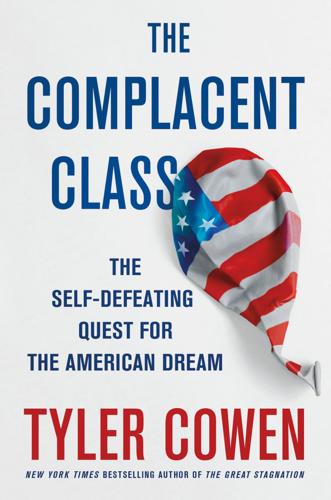
The Complacent Class: The Self-Defeating Quest for the American Dream
by
Tyler Cowen
Published 27 Feb 2017
These are the places where you need a high enough income to live in the good part of town (which gets bigger by the year), and there are also sharp divides in terms of education and social connections, and so these cities tend to be racially segregated to a high degree. A lot of lower-income people just aren’t that interested in paying extra to live around college professors. The colleges themselves, for all their embrace of affirmative action and the rhetoric of diversity, are typically highly segregated bastions of well-off, well-educated (by definition), and ambitious future high achievers, and they make the tone of the town all the more that way. Ironically, America’s ethic of tolerance, as it has evolved, is a double-edged sword when it comes to integration.

Great American Hypocrites: Toppling the Big Myths of Republican Politics
by
Glenn Greenwald
Published 14 Apr 2008
Of course, like all right-wing National Review tough guys, Jonah hates handouts; believes strongly in the glorious virtues of self-sufficiency and pulling oneself up by one’s bootstraps (and, apparently, by one’s unsevered umbilical cord); demands meritocratic policies; and is teeming with stiff-spined courage. These are the kind of people who hate affirmative action because of how unfair it is, but who thrive on legacy admissions to college and have their mommies and daddies secure them jobs and careers. Our coddled, cowardly warriors on the Right (with an eager assist from their media enablers) have made masculinity and Tough Guy iconography a central part of their political identity.
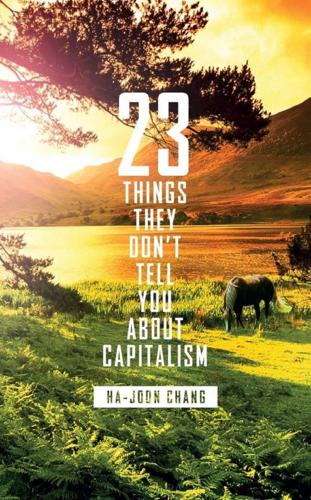
23 Things They Don't Tell You About Capitalism
by
Ha-Joon Chang
Published 1 Jan 2010
For example, it was not only unjust but also inefficient for a black student in apartheid South Africa not to be able to go to better, ‘white’, universities, even if he was a better student. People should be given equal opportunities. However, it is equally unjust and inefficient to introduce affirmative action and begin to admit students of lower quality simply because they are black or from a deprived background. In trying to equalize outcomes, we not only misallocate talents but also penalize those who have the best talent and make the greatest efforts. What they don’t tell you Equality of opportunity is the starting point for a fair society.
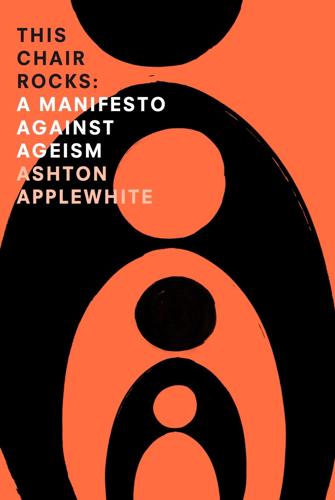
This Chair Rocks: A Manifiesto Against Ageism
by
Ashton Applewhite
Published 10 Feb 2016
Getting out of the house is good for both body and brain, but inertia is tempting, and all the more so when excursions mean busting out of age silos. Except for simulcasts of the Metropolitan Opera, my partner, Bob, and I are often the oldest people in the room, and often by decades. We don’t like it, but we don’t want to stay home just because we’ll stick out. I think of it as affirmative action, which God knows is necessary in this age-segregated society. A few years ago, at a huge, outdoor DJ-fest called Electric Zoo, Bob and I were plenty conspicuous. The friends we went with were in their mid- to late thirties, but the median age barely topped twenty. Sure, we got some weird looks, but most of the neon-garbed club kids paid us no attention at all.
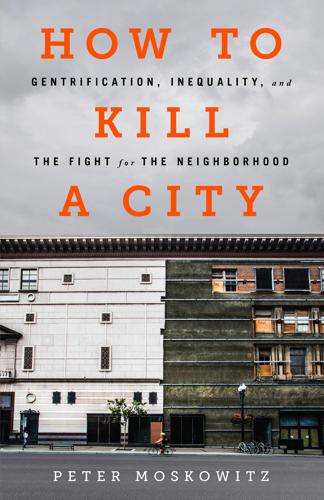
How to Kill a City: The Real Story of Gentrification
by
Peter Moskowitz
Published 7 Mar 2017
Orville Hubbard: Sugrue, The Origins of the Urban Crisis, 193. Mayor Albert Cobo: Ibid., 100. “I am confident that the sentiment for home ownership”: Kenneth Jackson, Crabgrass Frontier: The Suburbanization of the United States (New York: Oxford University Press, 1985), 193–194. In 1933, construction began on 93,000 new homes: Ira Katznelson, When Affirmative Action Was White (New York: W. W. Norton, 2005), 115–116. In St. Louis, Missouri, for example, zoning laws: Richard Rothstein, “The Making of Ferguson: Public Policies at the Root of Its Troubles,” Economic Policy Institute, October 15, 2014. In a 1939 memo about Washington, DC: Jackson, Crabgrass Frontier, 213.

The New Class Conflict
by
Joel Kotkin
Published 31 Aug 2014
Indeed, since 1980 the percentage of people living in “deep poverty”—those living 50 percent below the official poverty line—has expanded dramatically.6 Despite $750 billion spent annually on welfare programs, up 30 percent since 2008, a record 46 million Americans were in poverty in 2012.7 It is possible that, as Franklin Roosevelt warned, a system of unearned payments, no matter how well intended, can serve as “a narcotic, a subtle destroyer of the human spirit,”8 and reduce incentives for the recipients to better their lives. Particularly revealing have been the generally meager gains made by ethnic minorities. Despite the benefits of government programs such as affirmative action, African Americans have not expanded their share of the middle class in recent decades.9 Indeed, racial and ethnic economic disparities are growing. The black unemployment rate remains more than double the white jobless rate and reaches forty percent among youths.10 Similarly, Hispanics, the nation’s largest minority, have also done poorly in recent years and, according to Pew, now suffer a 28 percent poverty rate in the nation, the highest of all ethnic groups and well over two and half times that of whites.
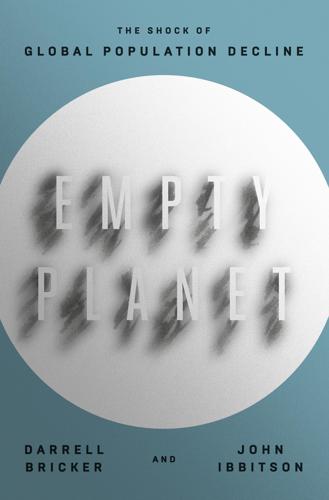
Empty Planet: The Shock of Global Population Decline
by
Darrell Bricker
and
John Ibbitson
Published 5 Feb 2019
Between 2012 and 2014, university enrollment doubled, to 445,000 students.199 Cultural biases that still favor men pose serious obstacles to girls seeking an education in Kenya, especially in the countryside. But the walls of the patriarchy are crumbling. Boys and girls today are equally well represented in primary and secondary classrooms,200 and thanks to affirmative action programs, women now make up at least 40 percent of the enrollment in Kenyan universities.201 Is education leading to empowerment for women and the decision to have fewer babies? According to the Kenyan Bureau of Statistics, fertility in the country has decreased from 4.9 births per woman in 2003, to 4.6 in 2008–09, to 3.9 in 2014.
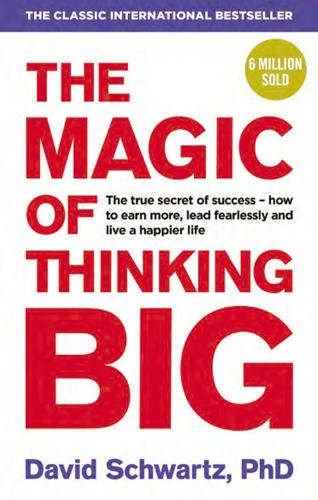
The Magic of Thinking Big
by
David J Schwartz
Published 4 Feb 2016
“The second type of action, which you might say is an insurance policy, is to let two or three of your closest business friends in the trade know you might consider an offer from another store, assuming, of course, it is substantially better than your present job. “I don’t believe your job will be insecure after you take some affirmative action to get those sales figures on the rise. But just in case, it’s good to have an offer or two. Remember, it’s ten times easier for a man with a job to get another job than it is for someone unemployed to connect.” Two days ago this once-troubled executive called me. “After our talk I buckled down.
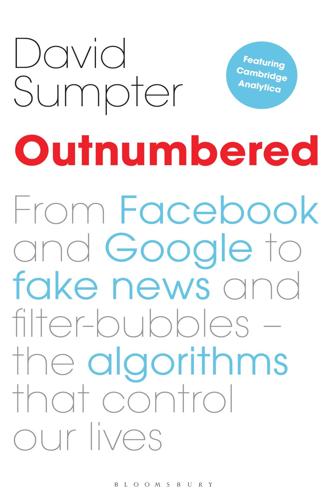
Outnumbered: From Facebook and Google to Fake News and Filter-Bubbles – the Algorithms That Control Our Lives
by
David Sumpter
Published 18 Jun 2018
Kenneth Arrow’s ‘impossibility theorem’ tells us there is no system for choosing between three political candidates under which all voters’ preferences are fairly represented.13 Peyton Young’s book Equity, which uses mathematical game theory to treat the subject matter, is by the author’s own admission ‘a stock of examples that illustrate why equity cannot be reduced to simple, all-embracing solutions’.14 And Cynthia Dwork and her colleagues’ 2012 work ‘Fairness through Awareness’, resorts to looking at how we can best balance affirmative action for groups with fairness to the individual.15 Like in Jon Kleinberg and his colleagues’ work on bias, when these authors did the maths they found paradoxes instead of rational certainty. I thought back to the motto, once so proudly stated by Googlers: ‘Don’t be evil.’ It isn’t used as frequently at the company now.

Live Work Work Work Die: A Journey Into the Savage Heart of Silicon Valley
by
Corey Pein
Published 23 Apr 2018
However, in his capacity as Appropriations Committee chairman, Thiel reversed the recommendation and awarded $4,000 in student funds to the Review. This was Thiel’s “first entrepreneurial venture” and, in its hypocritical reliance upon administrative subsidy as well as its reactionary tilt, indicative of a pattern. After graduating law school, Thiel coauthored a book, The Diversity Myth, attacking Stanford’s tolerant attitude toward affirmative action, feminism, and gay rights activism. Thiel himself was gay, although he said later that he hadn’t realized it at the time. His eager culture warring paid off, and Thiel was selected to interview for clerkships with U.S. Supreme Court justices Antonin Scalia and Anthony Kennedy. Neither hired him, but he still landed on a golden pillow at the white-shoe law firm of Sullivan & Cromwell in New York.
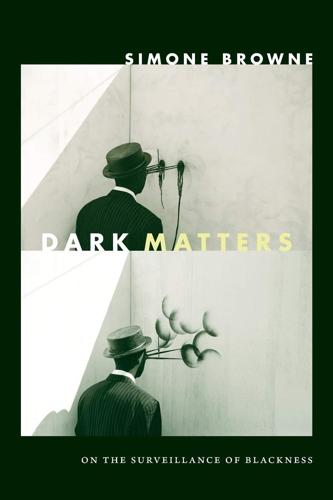
Dark Matters: On the Surveillance of Blackness
by
Simone Browne
Published 1 Oct 2015
This Blackness has been used primarily in the United States so “its functionality outside the US cannot be guaranteed.” No pictures of Obadike accompany this item’s description. Instead, potential buyers are provided with a list of “Benefits and Warnings” regarding Obadike’s Blackness: “This Blackness may be used for instilling fear” and “this Blackness may be used for accessing some affirmative action benefits (Limited time offer. May already be prohibited in some areas)”; also, “the Seller does not recommend that this Blackness be used while voting in the United States or Florida,” as well as not recommending “that this Blackness be used while demanding fairness.” Or simply put: “The Seller does not recommend that this Blackness be used while demanding.”
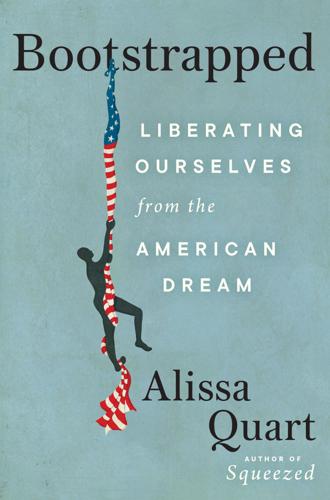
Bootstrapped: Liberating Ourselves From the American Dream
by
Alissa Quart
Published 14 Mar 2023
The just-world hypothesis flourishes because we tend to blur out the disadvantages that our social differences have created for us, and if a person is not solvent or successful on paper, they are somehow inherently weaker. This leads to disturbing related beliefs and attitudes. For instance, those who believe in a “just world” also tend to disapprove of affirmative action. The just-world theory: “Americans Overestimate Social Mobility in Their Country,” Economist, February 14, 2018, https://www.economist.com/graphic-detail/2018/02/14/americans-overestimate-social-mobility-in-their-country. “Somebody will say, ‘We have a problem’”: This remark was in archival footage in the fine 2020 Showtime documentary series The Reagans.

The Authoritarians
by
Robert Altemeyer
Published 2 Jan 2007
No Connecticut Democratic senator, and only one Mississippi Republican and one Wyoming Democratic senator answered, and hence no scores are given for those caucuses. 202 favor capital punishment (a sturdy relationship) oppose gun control laws (a sturdy relationship) favor a law prohibiting television broadcasts from a foreign country’s capital (such as Baghdad during the Gulf War) when the United States is at war with that country (a sturdy relationship) favor a law requiring Christian religious instruction in public schools (a sturdy relationship) score high in dogmatism (a sturdy relationship) oppose a law requiring affirmative action in state hiring that would give priority to qualified minorities until they “caught up” (a sturdy relationship) favor a law giving police much less restrictive wiretap, search-and-seizure, and interrogation rules (a strong relationship) favor a law outlawing the Communist Party “and other radical political organizations” (a strong relationship) oppose the Equal Rights Amendment (a strong relationship) favor placing greater restrictions on abortion than “Roe versus Wade” (a strong relationship) favor a law restricting anti-war protests to certain sizes, times, and places--generally away from public view--while American troops are fighting overseas (a very strong relationship) have a “We were the good guys, the Soviets were the bad guys” view of the Cold War (a very strong relationship) oppose a law extending equal rights to homosexuals in housing and employment (a very strong relationship) If you have read the preceding chapters, or been paying attention to what’s going on in your state capitol lately, none of this will astound you.

Beautiful Solutions: A Toolbox for Liberation
by
Elandria Williams, Eli Feghali, Rachel Plattus
and
Nathan Schneider
Published 15 Dec 2024
Teachers’ unions. HOW ARE WE MAKING BEAUTIFUL TROUBLE? Folk and underground schools. Digital pirates taking knowledge that was privatized and making it freely accessible. Social movements running schools and creating educational resources for the public. HOW CAN WE HEAL? Reparations practices like affirmative action and investing in schooling controlled by Black, Indigenous, and other communities of color. Decolonizing education and curricula—for example, shifting emphasis from the history of Western society to the histories of other cultures. Indigenous communities reclaiming their languages, cultures, and histories.
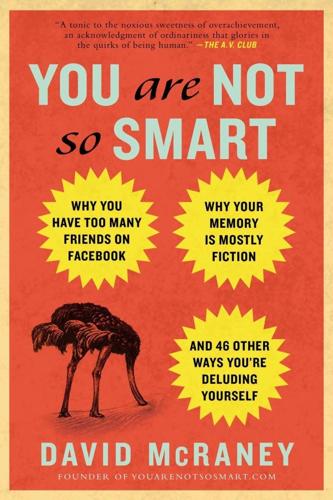
You Are Not So Smart
by
David McRaney
Published 20 Sep 2011
Yet, in reality, evil often prospers and never pays the price. The psychologist Jonathan Haidt says many people who don’t consciously believe in karma still believe deep down in some version of it, calling it whatever seems appropriate in their own culture. They see systems like welfare or affirmative action as disrupting the balance of the natural world. Slackers, they think, would get what they deserve if the government kept their noses out of it. Their bad karma would come around to crush them, but unnatural forces prevent it. Meanwhile, since these people play by the rules, pay taxes, and sacrifice hours of life for overtime pay, they assume it has to be for a reason.

Blink: The Power of Thinking Without Thinking
by
Malcolm Gladwell
Published 1 Jan 2005
This is not a trivial accomplishment. Suppose that back before the advent of screens, you and I had been on a committee charged with addressing the terrible problem of discrimination against women in major symphony orchestras. What would we have proposed? I think we would have talked about creating affirmative action programs for women in the music world. I think we would have talked about awareness programs for gender bias, and how to teach female musicians to be more assertive in making the case for their own ability. We would have had long discussions about social discrimination. I think, in other words, that our suggestions for change would have been fairly global and long-term.

The New Urban Crisis: How Our Cities Are Increasing Inequality, Deepening Segregation, and Failing the Middle Class?and What We Can Do About It
by
Richard Florida
Published 9 May 2016
And moving only the best-performing kids or those from the most motivated families will end up draining the top talent out of the least-advantaged neighborhoods, further concentrating poverty among those left behind. Overcoming decades upon decades of persistent poverty also requires comprehensive and coordinated place-based investments in disadvantaged neighborhoods. Robert Sampson, who is perhaps the nation’s leading expert on concentrated poverty, has called for “affirmative action for neighborhoods” to ensure that each and every neighborhood offers its residents access to economic opportunity and upward mobility. As he aptly put it, “what poor residents seem to want most is not to move but simply to have their communities revitalized.”25 To be effective, these place-based investments cannot be eked out piecemeal; they must span the full gamut of essential social and economic services, from education and economic opportunity to efforts to reduce crime and violence and more.

How Doctors Think
by
Jerome Groopman
Published 15 Jan 2007
Although there has been a significant increase in the number of women in medicine—now more than 50 percent in many parts of the country—as well as in the number of minorities, prejudice remains. Bigby believes this prejudice factors into her doctoring. She still feels, some thirty years after her residency, that she has to prove herself as a black woman, that she has to strive to be flawless, because some people still assume that she arrived at her senior post because of affirmative action and political correctness. "I...,"she said, her voice faltering briefly, "feel that I have to do everything better just to be judged as okay. It is something I wish I could let go of. It's something that I wish just wasn't there." In 1997, Dr. Eric J. Cassell wrote an insightful and illuminating book, Doctoring: The Nature of Primary Care Medicine.
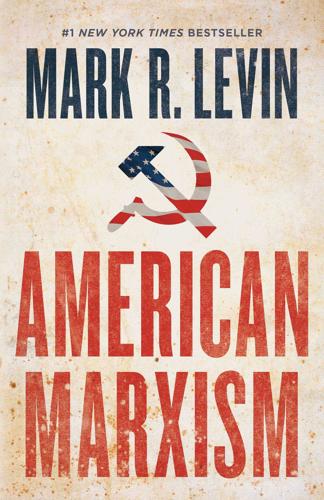
American Marxism
by
Mark R. Levin
Published 12 Jul 2021
Delgado and Stefancic claim that “[i]n our system, rights are almost always procedural (for example, to a fair process) rather than substantive (for example, to food, housing, or education). Think how that system applauds affording everyone equality of opportunity but resists programs that assure equality of results, such as affirmative action at an elite college or university or efforts to equalize public school funding among districts in a region. Moreover, rights are almost always cut back when they conflict with the interests of the powerful. For example, hate speech, which targets mainly minorities, gays, lesbians, and other outsiders, receives legal protection, while speech that offends the interest of the empowered groups finds a ready exception in First Amendment law….
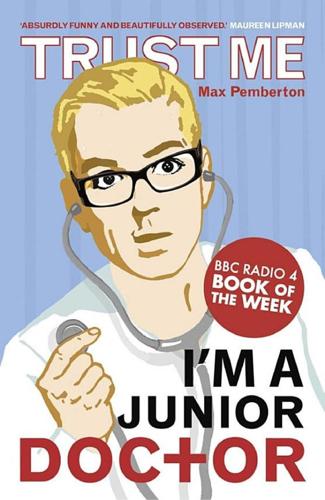
Trust Me, I'm a (Junior) Doctor
by
Max Pemberton
Published 21 Feb 2008
Monday 8 September Mrs Sankaraja’s blood pressure is dropping rapidly and she hasn’t passed urine for several hours. Her feet have swollen and it looks like her heart is failing. Supriya and I look at each other, bemused. The nurses look at us expectantly. While Supriya leafs through her pocket textbook to see what we should do, I take affirmative action and seek senior assistance. Not too senior, of course; I don’t want to get shouted at. Instead I try and find Daniel. He is, after all, supposed to help us instead of just ingratiating himself to the consultants. I page him a few times but he doesn’t respond. Ruby, who is busy in the doctors’ office, says she thinks he’s assisting Housewives’ Favourite in theatre this morning.
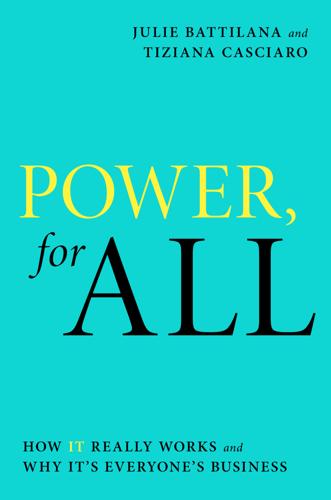
Power, for All: How It Really Works and Why It's Everyone's Business
by
Julie Battilana
and
Tiziana Casciaro
Published 30 Aug 2021
Turco, “Cultural Foundations of Tokenism: Evidence from the Leveraged Buyout Industry,” American Sociological Review 75, no. 6 (2010): 894–913. 13 Alicia DeSantola, Lakshmi Ramarajan, and Julie Battilana, “New Venture Milestones and the First Female Board Member,” Academy of Management Best Paper Proceedings (2017). 14 Carolyn Wiley and Mireia Monllor-Tormos, “Board Gender Diversity in the STEM&F Sectors: The Critical Mass Required to Drive Firm Performance,” Journal of Leadership & Organizational Studies 25, no. 3 (2018): 290–308. 15 Alexandra Kalev, Frank Dobbin, and Erin Kelly, “Best Practices or Best Guesses? Assessing the Efficacy of Corporate Affirmative Action and Diversity Policies,” American Sociological Review 71, no. 4 (2006): 589–617. 16 Emilio J. Castilla and Stephen Benard, “The Paradox of Meritocracy in Organizations,” Administrative Science Quarterly 55, no. 4 (2010): 543–76. For more on how diversity programs, when misused, can undermine racial justice, see Ellen Berrey, The Enigma of Diversity: The Language of Race and the Limits of Racial Justice (Chicago: University of Chicago Press, 2015). 17 Frank Dobbin and Alexandra Kalev, “Why Doesn’t Diversity Training Work?
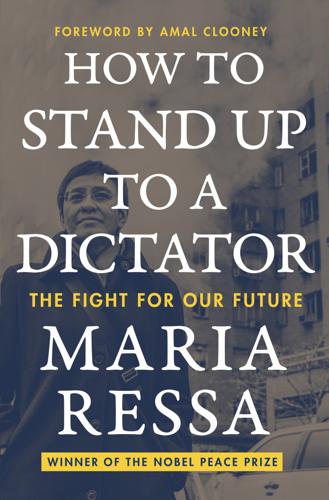
How to Stand Up to a Dictator
by
Maria Ressa
Published 19 Oct 2022
We were at the home of my cousin Vinnie, who used to ride his big wheel up and down our driveway. No longer a small child with curly black hair, he is now a captain in the Manchester police force. His brother, Peter, is a former marine, former fireman, and policeman now out on disability. They talked about affirmative action in the police force, how standards had been lowered three times to hit the quota, and how that wasn’t fair. They talked about immigration and how everyone has to sacrifice for those who don’t want to work (never mind that we were a family of immigrants from Italy and the Philippines). My parents live in Florida, voted for Clinton, then switched to Trump after Obamacare raised the prices of their medicines.
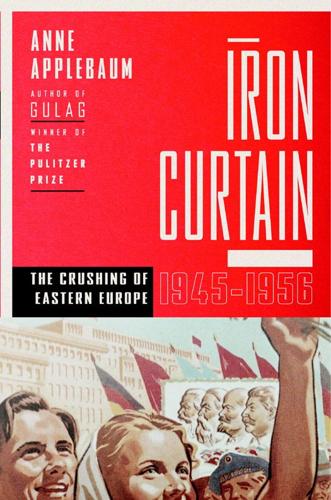
Iron Curtain: The Crushing of Eastern Europe, 1945-1956
by
Anne Applebaum
Published 30 Oct 2012
Even in the late 1940s and early 1950s, older professors habitually protected younger students and colleagues from police investigation.31 Ties of family, loyalty, and academic influence often proved stronger, at least behind the scenes, than fear of the party or the secret police. But the proletarianization of the student body was, for the communist parties, far more important. Bourgeois professors would die out eventually, and then they could be replaced by eager members of the working classes. In Polish, the term for this wave of academic affirmative action was awans społeczyny, a rather ugly bureaucratic phrase that translates, more or less, as “social advance.” The term took on enormous significance over time, referring both to a policy—the rapid promotion of peasants’ and workers’ children into higher education—as well as to the “socially advanced” class that emerged as a result.
…
One former Polish schoolteacher, though not a communist himself, spent the first part of his career teaching adult literacy classes to refugees from Ukraine and marveled at the impact: “They became different people.” Participating in the campaign helped convince him that the party, though it made mistakes, ultimately meant well.34 But the mere teaching of reading and writing would not by itself create a new elite. Across the bloc, other forms of more aggressive affirmative action were also put in place. The children of workers and peasants had privileged access to university places, training programs, jobs, and promotions. In East Germany, education bureaucrats actively recruited workers and peasants to join special courses designed to move them quickly up the ladder.

The Israel Lobby and U.S. Foreign Policy
by
John J. Mearsheimer
and
Stephen M. Walt
Published 3 Sep 2007
Congress. Unlike virtually every other country, Israel is largely immune from criticism on Capitol Hill. This situation is remarkable by itself, because Congress frequently deals with contentious issues and competing viewpoints are usually easy to find. Whether the issue is abortion, arms control, affirmative action, gay rights, the environment, trade policy, health care, immigration, or welfare, there is almost always a lively debate on Capitol Hill. But where Israel is concerned, potential critics fall silent and there is hardly any debate at all. The absence of serious deliberation when Israel is involved was revealed in a hearing on the Israeli-Palestinian peace process held on February 14, 2007, by the Subcommittee on the Middle East and South Asia in the House of Representatives.
…
In the Perlmutters’words, “Today the interest of Jews are not so much threatened by their familiar nemesis, crude anti-Semitism, as by a-Semitic governmental policies, the proponents of which may be free of anti-Semitism.” These policies include “thirst of Western economies for recycled petrodollars,” neo-isolationism, and compensatory group rights (such as affirmative action), among others. And in their view, “Jews today face greater jeopardy from quarters which though innocent of bigotry, nonetheless pose us greater danger than do our long time, easily recognizable anti-Semitic nemeses. Unchallenged and unchecked, these issues in surface appearance Semitically neutral, can hurt Jews and resisted as need be, can loose once again classical anti-Semitism.”
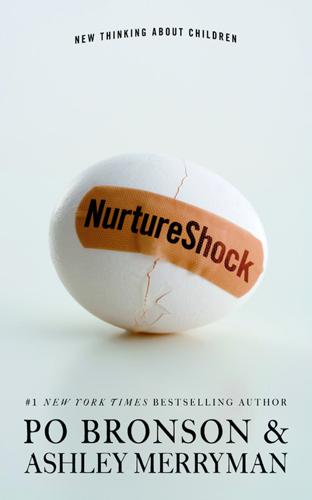
NurtureShock: New Thinking About Children
by
Po Bronson
and
Ashley Merryman
Published 2 Sep 2008
Slater, Kang Lee, Liezhong Ge, and Olivier Pascalis, “The Other-Race Effect Develops During Infancy: Evidence of Perceptual Narrowing,” Psychological Science, vol. 18, no. 12, pp. 1084–1089 (2007). Kurlaendar, Michal, and John T. Yun, “Is Diversity a Compelling Educational Interest? Evidence From Louisville.” In: G. Orfield (Ed.), Diversity Challenged: Evidence in the Impact of Affirmative Action, pp. 111–141. Cambridge, MA: Harvard Educational Publishing Group (2001). Meredith v. Jefferson County Board of Education, 551 U.S. ___ (2007). “Mission Statement,” Civil Rights Project web site (2007). http://www.civilrightsproject.ucla.edu/aboutus.php Moody, James, “Race, School Integration, and Friendship Segregation in America,” American Journal of Sociology, vol. 107, no. 3, pp. 679–716 (2001).
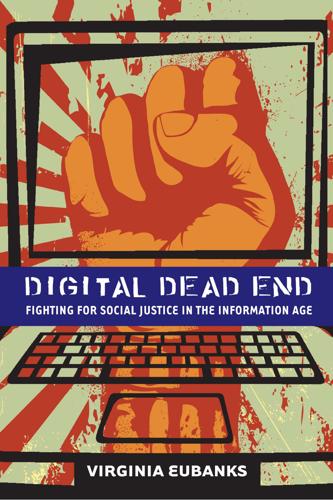
Digital Dead End: Fighting for Social Justice in the Information Age
by
Virginia Eubanks
Published 1 Feb 2011
They explained that displacement, impoverishment, Conclusion 157 unemployment, and environmental destruction are not worth a handful of high-tech jobs benefiting highly educated people. Cuemi Gibson’s response was typical: Virginia: If you had the ear of the mayor of Troy, what advice would you give him for developing a socially just Tech Valley? Cuemi: Put plants on the bus line! Provide education and training; provide fair employment. Affirmative action! Have some Black supervisors, female supervisors. Work with an open-door policy. Be fair in what hours people work. Have a day care center. Try to have stress-free environment. Provide employee assistance, like rehab and counseling for long-term employees. [Z]ero tolerance for racism and sexism.
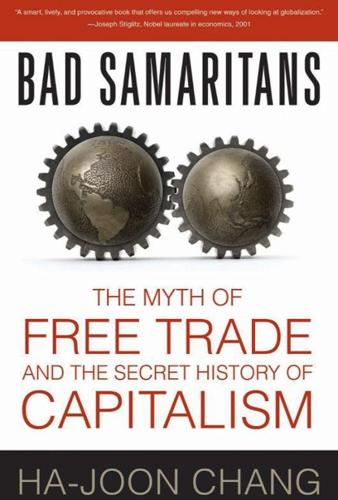
Bad Samaritans: The Myth of Free Trade and the Secret History of Capitalism
by
Ha-Joon Chang
Published 26 Dec 2007
When privatizing, care must be taken to sell the right enterprise at the right price to the right buyer, and to subject the enterprise to the right regulatory regime thereafter – if this is not done, privatization is not likely to work, even in industries that do not naturally favour state ownership. SOE performance can often be improved without privatization. One important thing to do is to review critically the goals of the enterprises and establish clear priorities among them. Very often, public enterprises are charged with serving too many goals – for example, social goals (e.g., affirmative action for women and minorities), employment generation and industrialization. There is nothing wrong with state-owned enterprises serving multiple goals, but what the goals are and the relative priority among them need to be made clear. The monitoring system can also be improved. In many countries, SOEs are monitored by multiple agencies, which means either that they are not meaningfully supervised by any particular agency or that there is a supervisory over-kill that disrupts daily management – for example, the state-owned Korean Electricity Company was reported to have undergone eight government inspections, lasting 108 days, in 1981 alone.

Everything Is Obvious: *Once You Know the Answer
by
Duncan J. Watts
Published 28 Mar 2011
As a result, it is entirely possible that the similarity we see around us has less to do with our own psychological preferences than the restricted opportunities that the world presents to us.16 Resolving problems like this one is important because it has implications for how we go about dealing with controversial issues like racial segregation and affirmative action. Settling the matter with data, however, is extremely difficult because disentangling the various cause-and-effect relationships requires one to keep track of individuals, networks, and groups over extended intervals of time.17 And historically, that sort of data just hasn’t been available.
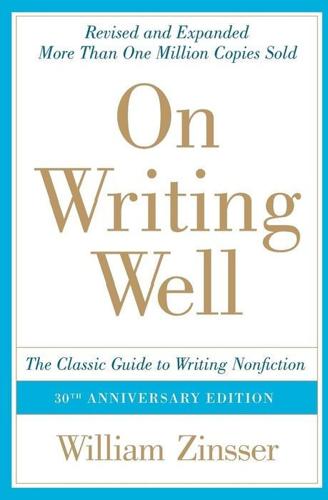
On Writing Well (30th Anniversary Edition)
by
William Zinsser
Published 1 Jan 1976
The first President Bush, questioned about his stand on assault rifles, said: “There are various groups that think you can ban certain kinds of guns. I am not in that mode. I am in the mode of being deeply concerned.” But my all-time champ is Elliot Richardson, who held four major cabinet positions in the 1970s. It’s hard to know where to begin picking from his trove of equivocal statements, but consider this one: “And yet, on balance, affirmative action has, I think, been a qualified success.” A 13-word sentence with five hedging words. I give it first prize as the most wishy-washy sentence in modern public discourse, though a rival would be his analysis of how to ease boredom among assembly-line workers: “And so, at last, I come to the one firm conviction that I mentioned at the beginning: it is that the subject is too new for final judgments.”
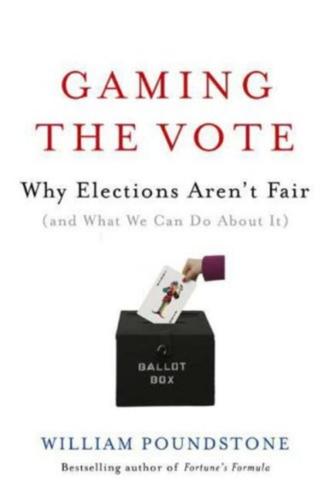
Gaming the Vote: Why Elections Aren't Fair (And What We Can Do About It)
by
William Poundstone
Published 5 Feb 2008
Prior to the mid-1980s, he would sound off to journalists on his favored topics of the Holocaust hoax, the genetic inferiority of the nonwhite races, and the person-from-history-I'd-most-like-to-have-dinner-with, Adolf Hitler. That stopped. It was replaced with calls for abolishing welfare and affirmative action. "1 was too intolerant," Duke told Larry King on his. show. "I thought the problem was with blacks instead of the welfare system." When challenged to recant his old positions, Duke did, more or less. At a Kiwanis Club forum, he was asked: Q. Do you believe blacks are genetically inferior to whites?
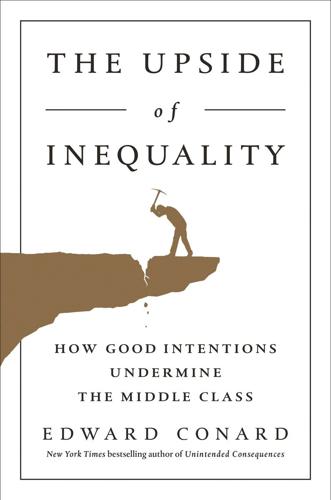
The Upside of Inequality
by
Edward Conard
Published 1 Sep 2016
Competition for a smaller number of admission slots, not growing income inequality, has driven increased preparation. Attending college is like running a marathon. It doesn’t matter much which marathon you enter. What matters is your time. Work by Princeton economist Alan Krueger finds that, except for the most disadvantaged students—that is, students who are the beneficiaries of affirmative action—students with the same test scores and other characteristics who graduate with a lower class ranking from a top college and those who graduate with a higher ranking from a less prestigious college achieve the same career success.43 Enrollment at less prestigious colleges has expanded to meet the growing demand of students with all levels of capability.
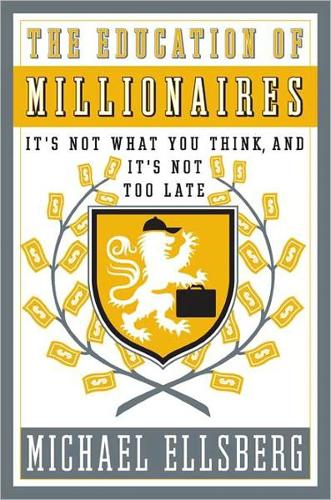
The Education of Millionaires: It's Not What You Think and It's Not Too Late
by
Michael Ellsberg
Published 15 Jan 2011
■ INTRODUCTION 1 Robinson, accessed March 28, 2010. 2 Murray, locations 986–987 on Kindle edition. 3 Cherry, accessed December 19, 2010. 4 See Gladwell’s discussion, in Outliers, of the Michigan Law School study, which found that minority students—despite being admitted with lower grades and test scores, as a part of affirmative action, and despite earning lower grades in law school—went on to have law careers every bit as successful as their white peers. (Kindle edition, locations 1050–1059.) “Being a successful lawyer is about a lot more than IQ,” Gladwell concludes, to explain the findings of the study. (Kindle edition, locations 1105–1114.) 5 I want to make clear that while I think certain of Gladwell’s points in his book support the basic message of my book, I doubt he himself would agree with much in my book overall.
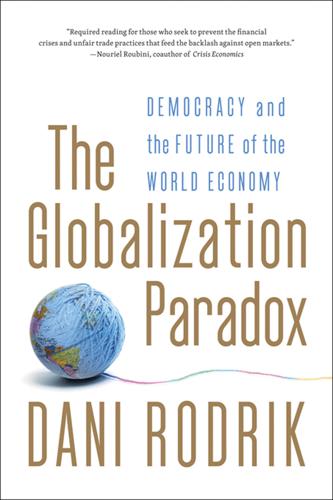
The Globalization Paradox: Democracy and the Future of the World Economy
by
Dani Rodrik
Published 23 Dec 2010
The same year, a U.S. chemical company challenged a Canadian ban on a gasoline additive and received $13 million in a settlement.13 Perhaps the most worrying case to date involves a suit brought against the South African government in 2007 by three Italian mining companies. The companies charge that South Africa’s affirmative action program, called Black Economic Empowerment, violates the rights provided to them under existing bilateral investment treaties. The program aims to reverse South Africa’s long history of racial discrimination and is an integral element in the country’s democratic transition. It requires that mining companies alter their employment practices and sell a minority share to black partners.
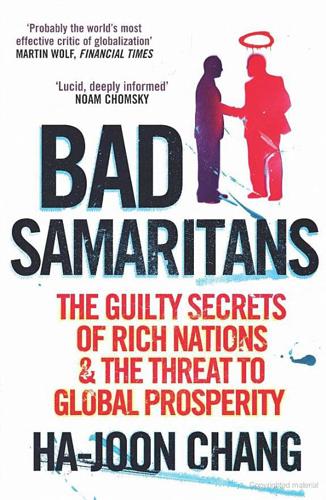
Bad Samaritans: The Guilty Secrets of Rich Nations and the Threat to Global Prosperity
by
Ha-Joon Chang
Published 4 Jul 2007
When privatizing, care must be taken to sell the right enterprise at the right price to the right buyer, and to subject the enterprise to the right regulatory regime thereafter – if this is not done, privatization is not likely to work, even in industries that do not naturally favour state ownership. SOE performance can often be improved without privatization. One important thing to do is to review critically the goals of the enterprises and establish clear priorities among them. Very often, public enterprises are charged with serving too many goals – for example, social goals (e.g., affirmative action for women and minorities), employment generation and industrialization. There is nothing wrong with state-owned enterprises serving multiple goals, but what the goals are and the relative priority among them need to be made clear. The monitoring system can also be improved. In many countries, SOEs are monitored by multiple agencies, which means either that they are not meaningfully supervised by any particular agency or that there is a supervisory over-kill that disrupts daily management – for example, the state-owned Korean Electricity Company was reported to have undergone eight government inspections, lasting 108 days, in 1981 alone.

Messy: The Power of Disorder to Transform Our Lives
by
Tim Harford
Published 3 Oct 2016
The three researchers assembled participants from two quite different cities: Boulder, Colorado, where people often lean to the left (it’s known jokingly as “The People’s Republic of Boulder”) and Colorado Springs, which is well known as a conservative stronghold. Participants were privately asked their views on three politically heated topics: climate change, affirmative action, and same-sex partnerships. Then they were put into groups with others from their town, and asked to discuss the issues as a group.14 Before these discussions, as one might expect, the people from Boulder tended to espouse left-wing views while the citizens of Colorado Springs tended to favor the views of the right.
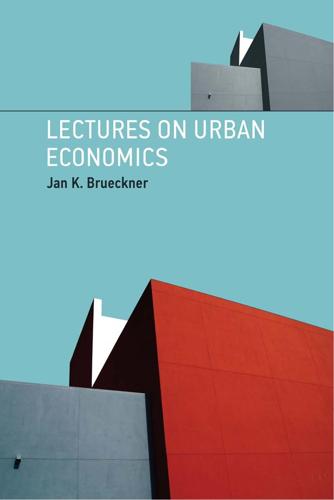
Lectures on Urban Economics
by
Jan K. Brueckner
Published 14 May 2011
Equal outcomes, however, mean unequal opportunities, since more police must be allocated to the poor neighborhood to equalize crime. Conversely, equal opportunities yield unequal outcomes, since an equal division of the police leads to more crime in the poor neighborhood. The choice between equal opportunities and equal outcomes is often faced in discussions of public policy. For example, affirmative-action rules, which give minority job applicants an advantage in hiring, represent an attempt to generate equal outcomes via unequal opportunities. Liberals and conservatives have argued for decades about whether society should attempt to offer equal outcomes or equal opportunities (with liberals tending to favor the former), but there is no right answer in this debate.
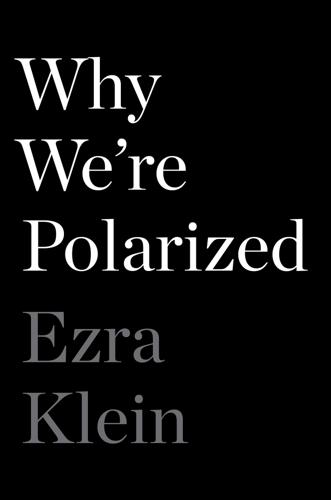
Why We're Polarized
by
Ezra Klein
Published 28 Jan 2020
In a follow-up study, Craig and Richeson handed some white subjects newspaper articles about geographic mobility, while others read a piece explaining that “ethnic/racial minorities will comprise a majority of the U.S. populace by 2042.” The group that read the racially tinged release shifted toward more conservative views not just on directly related policy questions—like immigration levels, affirmative actions, and paths to citizenship—but on health-care reform and defense spending.I13 Perhaps the most striking experiment in this space was conducted by Harvard social scientist Ryan Enos. He attempted something rare in social science: an actual test of what seeing more diversity in our everyday surroundings does to our political opinions.

The Launch Pad: Inside Y Combinator, Silicon Valley's Most Exclusive School for Startups
by
Randall Stross
Published 4 Sep 2013
Just so no one will point the accusing finger of discrimination at them.4 An outside observer watching the way YC went about selecting the teams for the summer 2011 batch would not see any evidence that female entrepreneurs enjoyed a special advantage nor were they openly devalued for being female. Paul Graham and the other partners with technical backgrounds were ideologically committed to a gender- and race-blind view of merit. Yin Yin Wu was a standout hacker, period. She did not come in under an affirmative action initiative. (Wu’s relatively late start in hacking showed that there were side paths—albeit unusual ones, like computational chemistry—that could lead women into computer science after middle school.) Graham says that, at the seed stage, investors are backing the founders more than the ideas, and he believes women are generally better judges of character than men.

Can We Talk About Israel?: A Guide for the Curious, Confused, and Conflicted
by
Daniel Sokatch
Published 18 Oct 2021
They would serve as a so-called blocking coalition, ensuring that, so long as he was pursuing peace, Rabin’s government wouldn’t fall.* Equally important, he would treat them like partners. And he did. Between 1992 and 1995, government spending on infrastructure, education, health care, and affirmative action programs for Israel’s Arab citizens increased exponentially. For the first time, the Arab parties wielded real power: when they insisted that the government abandon plans to confiscate Palestinian-owned land in Jerusalem to build a new police station, Rabin called an emergency cabinet meeting and announced that he would halt the move.
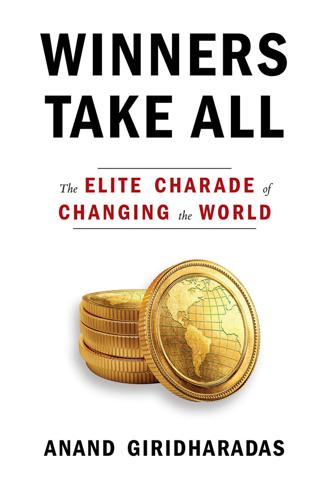
Winners Take All: The Elite Charade of Changing the World
by
Anand Giridharadas
Published 27 Aug 2018
What he wanted, and what he had spent a long time earning the chance to call for, was a reining in of the power of people like them. He wanted them to pay higher taxes. He wanted them to give up their legacy preferences at the leading universities. He said, “All my friends who want to talk about education, you say, ‘Let’s talk about legacy programs. Do we really think legacy preferences, when we’re getting rid of affirmative action—shouldn’t we be getting rid of legacy?’ Oh, hell no. People will be like, ‘Oh, absolutely not.’ ” What might have worried his critics the most was Walker’s view that moneymaking had to change. It was one thing to say that rich people needed to pay higher taxes and stop sneaking their children into Harvard; it was another to suggest, as he now did, that the very industry he was about to visit was predatory.
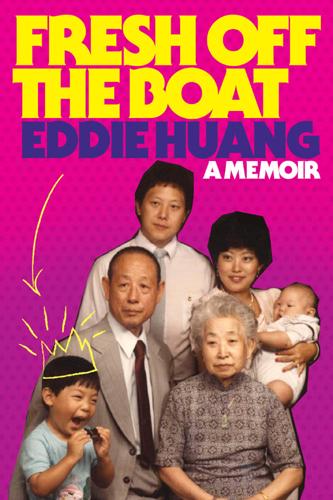
Fresh Off the Boat
by
Eddie Huang
Published 29 Jan 2013
As a kid born on March 1, 1982, I grew up in the excess of the Brat Pack–Madonna–Joe Montana–Michael Jackson eighties and the NWA–MJ–Nirvana–World Wide Web nineties, and we saw the residual battles from seminal cases like Roe v. Wade or Regents of the University of California v. Bakke. The issues I remember were global warming, gun control, music file sharing, cocaine versus crack sentencing guidelines, C. Delores Tucker versus Hip-Hop, affirmative action, abortion, and United States v. Microsoft. Besides the Rodney King incident and the 1992 L.A. riots, there really wasn’t anything that warranted stopping the Knicks’ game besides O.J. That is, until 9/11. I remember that day. I was sitting in a chair waiting for social problems class to start.
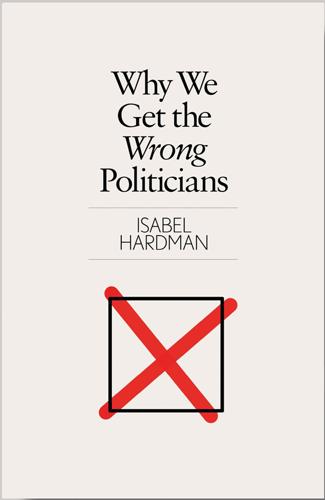
Why We Get the Wrong Politicians
by
Isabel Hardman
Published 14 Jun 2018
Labour has gone much further than the other parties to get more women into politics, and introduced all-women shortlists (AWS) for some selections in order to force an increase in the number of female MPs. In the 1992 election, it compelled all selections to include at least one woman. Harriet Harman insists that these affirmative-action measures were the only option left after the party had tried everything else, and 50 per cent of women elected to Parliament have been chosen using an AWS. Prominent Labour women selected in this manner include Jacqui Smith, Rachel Reeves, Emily Thornberry and Stella Creasy. When the party dropped the policy for the 2001 election, just four new Labour women were elected, while 30 men managed to get in.

Mindf*ck: Cambridge Analytica and the Plot to Break America
by
Christopher Wylie
Published 8 Oct 2019
These were the white Democrats who supported school busing but sent their own kids to majority-white private schools, or who professed to care about the inner city but lived in gated communities. “The Dems always treat blacks like children,” Bannon said on one call. “They put them in projects…give them welfare…affirmative action…send white kids to hand out food in Africa. But Dems are always afraid to ask the question: Why do those people need so much babysitting?” What he meant was that white Democrats revealed their prejudices against minorities without realizing it. He posited that although these Democrats think that they like African Americans, they do not respect African Americans, and that many Democratic policies stemmed from an implicit acknowledgment that those people cannot help themselves.
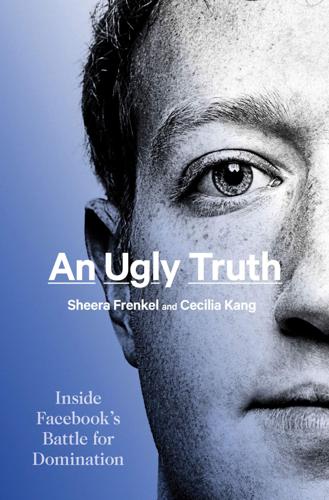
An Ugly Truth: Inside Facebook's Battle for Domination
by
Sheera Frenkel
and
Cecilia Kang
Published 12 Jul 2021
“It is beyond disturbing to learn”: John Herrman and Mike Isaac, “Conservatives Accuse Facebook of Political Bias,” New York Times, May 9, 2016. 6. rumored to be on a short list for a cabinet position: Zachary Warmbrodt, Ben White, and Tony Romm, “Liberals Wary as Facebook’s Sandberg Eyed for Treasury,” Politico, October 23, 2016. 7. On May 18, sixteen prominent conservative: Mike Isaac and Nick Corasaniti, “For Facebook and Conservatives, a Collegial Meeting in Silicon Valley,” New York Times, May 18, 2016. 8. Beck later wrote on his blog: Brianna Gurciullo, “Glen Beck on Facebook Meeting: ‘It Was Like Affirmative Action for Conservatives,’” Politico, May 19, 2016. 9. Beck had falsely accused a Saudi national: Daniel Arkin, “Boston Marathon Bombing Victim Sues Glenn Beck for Defamation,” NBC News website, April 1, 2014. 10. “We connect people”: Ryan Mac, Charlie Warzel and Alex Kantrowitz, “Growth at Any Cost: Top Facebook Executive Defended Data Collection in 2016 Memo—and Warned that Facebook Could Get People Killed,” Buzzfeed News, March 29, 2018. 11.

How Long Will Israel Survive Threat Wthn
by
Gregg Carlstrom
Published 14 Oct 2017
An adviser to the Jewish Agency noted in 2012 that these Russian immigrants made up an overwhelming share of the Israelis leaving the country for good. “Because they are not considered Jewish here, it is much more difficult for them to feel a part of the country,” he said.6 The gaps have shrunk over the years, partly due to affirmative action programs (which are class- rather than race-based), partly due to marriage between Ashkenazi and Mizrahi Jews. But they remain stark. The curriculum is deeply skewed towards European history. A state commission that issued a 360-page report in 2016 offered some bleak conclusions. “The dominant stream in Israeli life still does not know the Mizrahi identity.”

Enlightenment Now: The Case for Reason, Science, Humanism, and Progress
by
Steven Pinker
Published 13 Feb 2018
* * * Racial and ethnic prejudice is declining not just in the West but worldwide. In 1950, almost half the world’s countries had laws that discriminated against ethnic or racial minorities (including, of course, the United States). By 2003 fewer than a fifth did, and they were outnumbered by countries with affirmative action policies that favored disadvantaged minorities.27 A huge 2008 survey by the World Public Opinion poll of twenty-one developed and developing nations found that in every one, large majorities of respondents (around 90 percent on average) say that it’s important for people of different races, ethnicities, and religions to be treated equally.28 Notwithstanding the habitual self-flagellation by Western intellectuals about Western racism, it’s non-Western countries that are the least tolerant.
…
Because of changes in definitions and coding criteria, those data are not commensurable with the series plotted here in figure 15-4. 25. Cooperation breeds sympathy: Pinker 2011, chaps. 4, 7, 9, 10. 26. Justification as a force for moral progress: Pinker 2011, chap. 4; Appiah 2010; Hunt 2007; Mueller 2010b; Nadelmann 1990; Payne 2004; Shermer 2015. 27. Decline of discrimination, rise of affirmative action: Asal & Pate 2005. 28. World Public Opinion Poll: Presented in Council on Foreign Relations 2011. 29. Council on Foreign Relations 2011. 30. Council on Foreign Relations 2011. 31. Effectiveness of global shaming campaigns: Pinker 2011, pp. 272–76, 414; Appiah 2010; Mueller 1989, 2004, 2010b; Nadelmann 1990; Payne 2004; Ray 1989. 32.

Europe old and new: transnationalism, belonging, xenophobia
by
Ray Taras
Published 15 Dec 2009
Emphasizing markers, distinctions, and borders in the enlarged EU is unlikely to produce personal gains. This is not to say that they do not remain salient and influential, only that using them is not a good game plan. Saying you are Welsh or Latvian or Slovene is unlikely to impress anyone in a Europe become more knowledgeable about itself. There are no affirmative action considerations to speak of and it is the marketplace that determines one’s place in the enlarged community. As one esoteric example, Latvia has become a favorite destination for people from England because they can throw cheap stag and hen parties there—not because they are Latviaphiles. Despite, or perhaps precisely because of, such travel, it is sometimes said that old Europe still knows little about its new counterpart while eastern Europeans for many reasons have had to learn about the advanced western states.

The Docks
by
Bill Sharpsteen
Published 5 Jan 2011
Her anger fueled her, kept her strong. “I had other things in mind that I wanted to be doing. [But] I had to be here and now for this thing. And to be threatened at the same time. So by then I was hot.” And yet incredibly, in the end, Williams tells me without a hint of irony, “This has been the most successful affirmative action program in the country. Ever.” As for the Golden Consent Decree, Judge Takasugi ruled in 1999 that his 1983 court order had done its job. Women were now a permanent part of the waterfront workforce. Williams agrees. Now a ship planner, working in an office before a computer for the most part, she says women have been largely accepted at the docks.

Dear Fatty
by
Dawn French
Published 8 Nov 2011
That was the first of many times I saw a glimpse of that stubborn chap who lives inside you and is, I suspect, constantly screaming ‘For fuck’s sake, hurry up, catch up and get it, then just say yes, then you’ll see, you cretin!’ inside your head. Am I right? You ran out of patience with me and my procrastination quite quickly and sent me a list of other, more talented and available actresses including Miriam Margolyes, Alison Steadman and Julie Walters. That certainly jolted me into affirmative action. Thank God I said yes, because honestly, making that series for the next 13 years with you was some of the most fun I’ve ever had. For me, coming to work with you every day was the ultimate lure. I suspected it would be fascinating to watch you sculpt the scripts with Paul, at close hand. I suspected I would learn a lot about teamwork and tolerance and keeping an open mind.
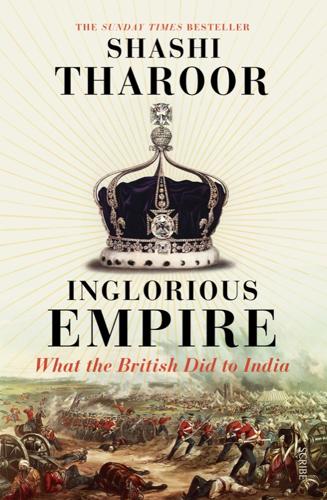
Inglorious Empire: What the British Did to India
by
Shashi Tharoor
Published 1 Feb 2018
Under a political compromise, known as the Poona Pact, that year separate electorates for the Depressed Classes were abandoned but additional seats were reserved for them in the provincial and central legislatures—an increase from 71 to 147 in the former and to 18 per cent of the Central Legislature. (Interestingly enough, the leader of the Dalits who clashed with Gandhi over the issue, Dr B. R. Ambedkar, went on to serve after Independence as chairman of the Drafting Committee for India’s Constitution, and ensured that his country would have the world’s first and farthest-reaching affirmative action programme for his community. Though separate electorates were dropped for good, 85 seats in independent India’s 543-seat lower house were reserved for Scheduled Castes and Tribes, as were a quota of places in government service and universities—guaranteeing not just opportunities but assured outcomes.)
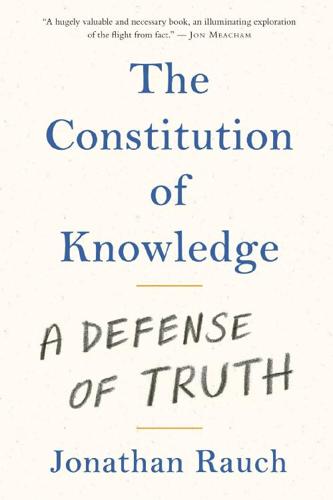
The Constitution of Knowledge: A Defense of Truth
by
Jonathan Rauch
Published 21 Jun 2021
News stories abounded about incidents like one at Sarah Lawrence college: when a professor wrote a New York Times op-ed piece arguing that college administrators lacked ideological diversity, students mobilized to demand his firing (euphemized as “tenure review”), saying his presence on campus threatened their “safety and well-being.” A professor I met, who taught sociology at a university widely regarded as conservative-leaning, told me, “Everyone is ‘careful’ on campus these days. Including me: I have not and will not discuss my research on affirmative action and diversity outside my own classroom.” At one private university, a young neurobiologist told me she had dropped a module on autism from her course on brain development. A student had complained that the module might be interpreted as demeaning to the autistic. Her dean had dismissed the complaint, she told me.

Rage Inside the Machine: The Prejudice of Algorithms, and How to Stop the Internet Making Bigots of Us All
by
Robert Elliott Smith
Published 26 Jun 2019
It is also necessary for those responsible for the world’s algorithmic infrastructure to engender a dedication in algorithm designers to eliminate obvious biases, whether they are human designed (e.g. the omission of women’s health issues in medical apps) or data driven (e.g. the failure of image recognition systems to detect people of colour). Those writing the algorithms that influence our lives will also need to invest in straightforward technology that attempts to overcome biases, for instance by adding ‘algorithmic affirmative action’ that explicitly checks for discrimination against underrepresented groups, particularly in critical decisions in public services, finance, jurisprudence and the like. However, these straightforward steps aren’t likely to be enough. Algorithms that act without human intervention are most likely a permanent part of our global infrastructure.
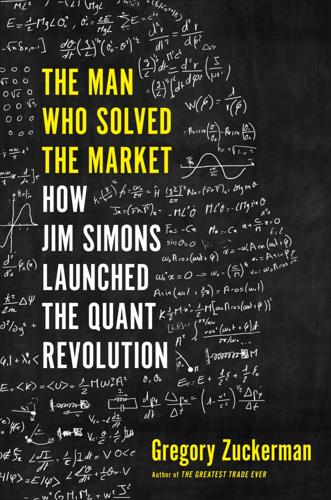
The Man Who Solved the Market: How Jim Simons Launched the Quant Revolution
by
Gregory Zuckerman
Published 5 Nov 2019
A few days later, Mercer sent Magerman a book called Civil Rights: Rhetoric or Reality? written in 1984 by Hoover Institution economist Thomas Sowell that the New York Times had called “brutally frank, perceptive, and important.” The book argues that minorities began moving into higher-paying jobs in large numbers years before the passage of the Civil Rights Act, and that affirmative action had caused the most disadvantaged segments of the minority population to fall behind their white counterparts.5 Sowell’s argument “focuses on narrow financial measures, but ignores overall human factors,” Magerman says, citing one of many criticisms he and others have of the book. Magerman was unsettled by the conversation with Mercer.
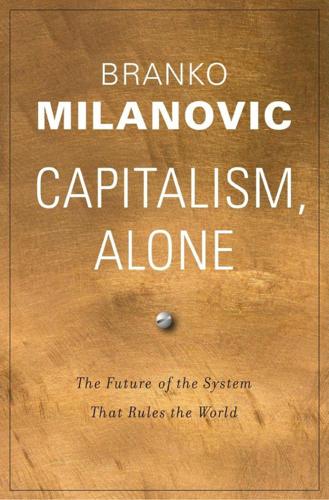
Capitalism, Alone: The Future of the System That Rules the World
by
Branko Milanovic
Published 23 Sep 2019
The Chinese Communist Party (CCP) advocated and implemented, first in the areas that it controlled in the 1920s–1930s, and then after its victory in 1949 throughout China, a comprehensive land reform, the abolition of quasi-feudal relations in rural areas, and a weakening of clan-based social relations, which were replaced by a more modern nuclear family structure and gender equality. It also promoted widespread literacy and education with “affirmative action” in education and employment in favor of children from peasant and workers’ families. This was no less than a complete overturning of historical hierarchical relationships.17 It all went together with the rejection of Confucianism, which, through its emphasis on filial piety, unquestioning respect of authority, and meekness, permitted such iniquitous structures to endure for centuries.

Custodians of the Internet: Platforms, Content Moderation, and the Hidden Decisions That Shape Social Media
by
Tarleton Gillespie
Published 25 Jun 2018
They tend to build tools “for all” that continue, extend, and reify the inequities they overlook. What would happen if social media platforms promised that for the next decade, all of their new hires, 100 percent, would be women, queer people, or people of color? Sounds like an outrageous exercise in affirmative action and social engineering? It sure is. Slight improvements in workplace diversity aren’t going to make the difference; we’ve seen what corrosive environments some of these companies can be for those who do show up. But I suggest this not only for the benefit of the new employees but for the benefit of the platform and its users.
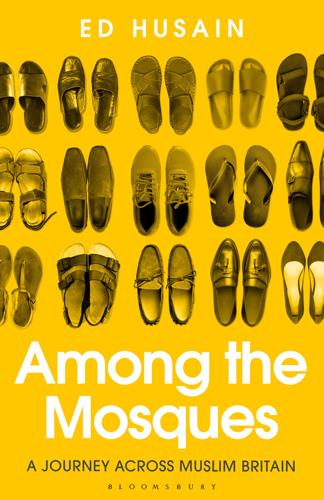
Among the Mosques: A Journey Across Muslim Britain
by
Ed Husain
Published 9 Jun 2021
If not for Britain and her allies we would today be living under a different world order, led by German Nazis. Ours is not a nationalism of blood and race. I could live for decades in Turkey, China, Nigeria or Japan, but I would never be accepted as Turkish, Chinese, Nigerian or Japanese. In ‘moderate Muslim’ Malaysia, the law contains a ‘sons of the soil’ affirmative action policy, favouring native Malays over members of other ethnic groups, even if these arrived centuries ago. In Britain, by contrast, newcomers can become British. Here they can become lawmakers, cultural icons, corporate leaders and scientific innovators. Here, they can thrive. How did Britain become this special place?
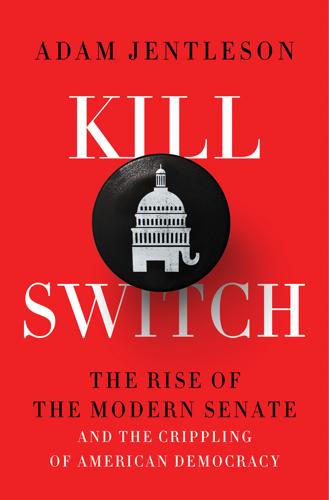
Kill Switch: The Rise of the Modern Senate and the Crippling of American Democracy
by
Adam Jentleson
Published 12 Jan 2021
At the time, the threshold was set on a sliding scale according to the number of senators voting, so senators who did not vote lowered the threshold. 20.Ibid. 222. 21.Proposed Amendments to Rule XXII. 292. 22.Caro, Robert. Master of the Senate. New York: Vintage Books, 2002. 90. 23.See, e.g., Katznelson, Ira. When Affirmative Action Was White. New York: W. W. Norton, 2005. 24.McIntosh, Kriston; Moss, Emily; Nunn, Ryan; and Shambaugh, Jay. “Examining the Black-White Wealth Gap.” Brookings Institution. February 27, 2020. 25.Fite, Gilbert C. Richard B. Russell, Jr., Senator from Georgia. Chapel Hill: University of North Carolina Press, 2002. 226–31. 26.Lawrence, W.
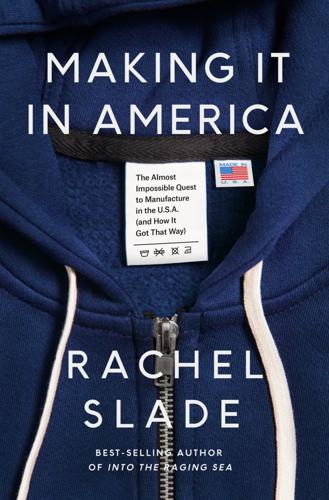
Making It in America: The Almost Impossible Quest to Manufacture in the U.S.A. (And How It Got That Way)
by
Rachel Slade
Published 9 Jan 2024
With more people involved in the process of making, innovation in every sector will surely follow. The American Roots factory is stronger for the mix of skills, education levels, cultures, and ages of its employees. I can’t think of a more twenty-first-century work environment than the Westbrook factory. While the U.S. Supreme Court has abolished affirmative action in higher education, factories provide an environment where nearly all Americans could find satisfying work—from designers to marketers to machinists to accountants to logistics managers. By reviving manufacturing, Americans will also have more control over the quality of the things they wear, use, and put in their bodies, a decision that will have life-or-death consequences.
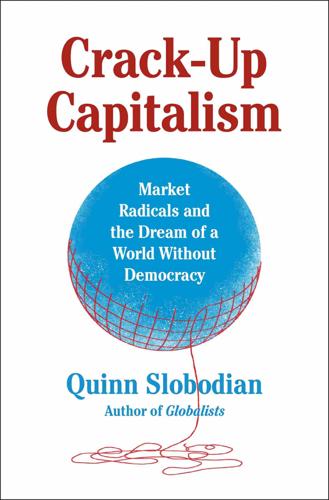
Crack-Up Capitalism: Market Radicals and the Dream of a World Without Democracy
by
Quinn Slobodian
Published 4 Apr 2023
Blacks should work with Blacks, he thought, just as it was “the responsibility of whites to build the white movement.”13 The deviation of the New Left from his preferred script of racial exit turned Rothbard violently against it by the early 1970s. Their dogged egalitarianism was an affront to his belief in the biologically hardwired hierarchy of talent and ability in both individuals and groups.14 He condemned affirmative action and quotas for underrepresented groups, comparing them to a British dystopian novel called Facial Justice, in which the state dictates medical operations to ensure that “all girls’ faces are equally pretty.”15 What was needed, he thought, was a countermovement—a revolt against human equality.
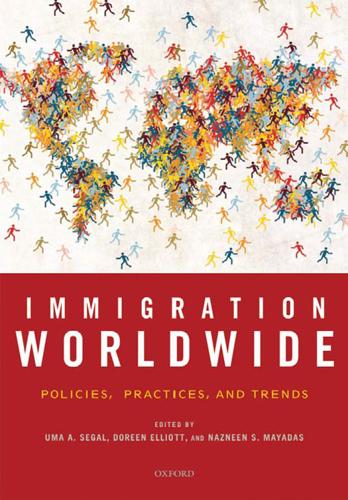
Immigration worldwide: policies, practices, and trends
by
Uma Anand Segal
,
Doreen Elliott
and
Nazneen S. Mayadas
Published 19 Jan 2010
The history of migration teaches that not only immigrants but also their descendants confront social inequalities (limited professional Germany opportunities, negative stigmatization). It takes time—sometimes up to the fourth or fifth generation—in order for these negative consequences to vanish. However, the public debate on the introduction of affirmative action, a decidedly controversial measure aimed to create equal opportunities, is still in its infancy in Germany. The question if an implementation of such measures for certain sectors could make sense in Germany and has yet to be widely discussed. Even the antidiscrimination law that passed in 2006 does not play a decisive role in the National Integration Plan (Nationaler Integrationsplan).
…
While many critics expected the new center-right government to abandon what is called in France ‘‘the fight against discrimination’’ (la lutte contre les discriminations) this turned out not to be the case. Instead, the center-right government set up the High Authority for the Fight against Discrimination (HALDE) as required by the European directives. In addition, Nicolas Sarkozy turned out to be open toward measures of affirmative action as well as other measures to increase diversity and repeatedly started a national debate on the issue, which many French consider to be in complete contradiction with the republican ideals. A few years earlier, a heated academic debate between Michèle Tribalat and Hervé le Bras, the first in favor of and the latter against the introduction of ethnic categories to the French census, showed just how emotive the subject of the public recognition of ethnic difference in France really is.
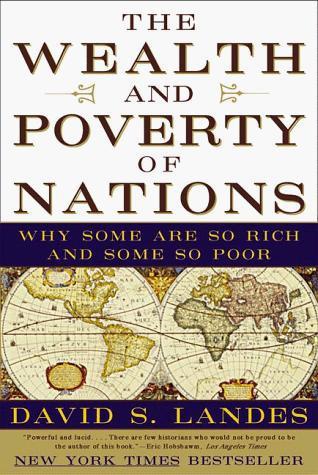
The Wealth and Poverty of Nations: Why Some Are So Rich and Some So Poor
by
David S. Landes
Published 14 Sep 1999
When an Indian villager came to see him, he received the petitioner with every courtesy, sat down beside him, patted him on the back, radiated interest and warmth. But let a landowner or bourgeois seek an audience, and Dr. Francia had him cool his heels and drum his fingers, eventually to be admitted into a disdainful, impatient presence. This was class discrimination (affirmative action), but also racial: the lines of division in Paraguayan society were the same for both. The Dictador Supremo wanted to build on the special Guarani character of the society, to subdue the old Spanish and Creole elite. To this end he forbade the whites to marry among themselves, requiring them rather to take their spouses from among Indians, mulattoes, and blacks.36 How strictly this rule was enforced is hard to say; but it showed an awareness of racial realities and signaled a deliberate effort to avoid the color-based segmentation that marked the rest of Latin American society.
…
They continue to thrive in the successor states.7 International partnerships have developed along ethnic lines. Thus Hong Kong, Taiwan, and Singapore are launching platforms to Thailand, where many Chinese have taken Thai names, the better to fit in;* and to Malaysia, where the Chinese run the business show, although affirmative action and smart politics urge them to adopt Malay partners.’† Thailand prides itself on transcending differences, in part by strongly discouraging separate Chinese schooling. The Chinese smile politely, publicly approve, but often supplement the Thai curriculum with school abroad. The community balances “on an invisible see-saw between two or more identities.”8 In economic matters, that means that the Chinese know who they are and can work with one another.

Corduroy Mansions
by
Alexander McCall Smith
Published 1 Jan 2009
From his position on the pavement, seated at the feet of a human being whom he had only just met but instinctively liked, Freddie de la Hay, Pimlico terrier, sniffed at the air. He had a very good nose—a trained nose, in fact, because before he had been acquired by the opinionated columnist Manfred James, he had been employed as a sniffer dog at Heathrow Airport. He had been good at his job, but had been dismissed as part of an affirmative action programme when it had been discovered that all the dogs at the airport were male. After this matter had been raised by a local politician, it was announced that there would be a policy of equal opportunity for female sniffer dogs—an absurd notion that had provoked outraged rants in those newspapers given to such things.
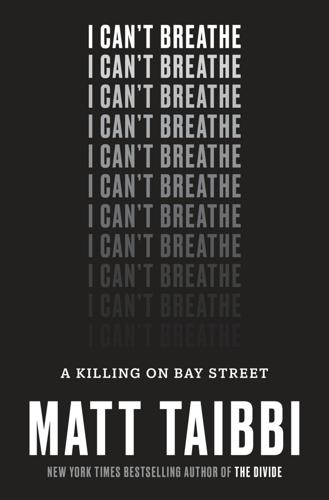
I Can't Breathe
by
Matt Taibbi
Published 23 Oct 2017
On the other side sat an increasingly impatient population of white conservatives that was being squeezed economically (although not nearly as much as black citizens), felt its cultural primacy eroding, and had become hypersensitive to any accusation of racism. These conservatives blamed everything from the welfare state to affirmative action for breeding urban despair and disrespect toward authority—in other words, these conservatives saw themselves as victims of malevolent systems and threatening trends but thought that nonwhite Americans were fully responsible for their own despair. This basic disagreement animated virtually every major political controversy in America, from immigration to health care to welfare reform.

Cuckoo's Egg
by
Clifford Stoll
Published 2 Jan 1989
It was an all-day feed, starting with fresh oysters from the San Francisco wharf, moving on leisurely to Martha’s wild mushroom soup, then the goose. Then we lay around like beached whales until we worked up the energy to take a short walk. Over pie and herbal tea, the talk turned to law, and Martha’s friend Vicky held forth on environmental regulation while a couple of professors argued over affirmative action. Finally, too full and contented for intelligent conversation, we lay in front of the fire and roasted chestnuts. Vicky and Claudia played piano duets; Laurie sang a ballad, and I thought about planets and galaxies. Worries about computer networks and spies seemed unreal in this warm world of friends, food, and music.

A Demon of Our Own Design: Markets, Hedge Funds, and the Perils of Financial Innovation
by
Richard Bookstaber
Published 5 Apr 2007
Nor, as Jack Grubman surmised, would making a well-directed contribution. The competitive nursery school phenomenon is a New York singularity that is difficult for normal folk to fathom. Many of those parents fiercely competing for spots for their children are simultaneously pushing for diversity, affirmative action, and social equality on many fronts; it’s just that the public school down the street is not one of them. We have had friends implore us to donate to school fund-raisers they were sponsoring so that they could demonstrate their worth as a valuable asset for the “parent body”—the first time I had heard that term. 131 ccc_demon_125-142_ch07.qxd 2/13/07 A DEMON 1:46 PM OF Page 132 OUR OWN DESIGN These nursery schools are also a feeder for the next rung up the New York private school ladder, which also wrangles the affluent parent body.

Leaving Orbit: Notes From the Last Days of American Spaceflight
by
Margaret Lazarus Dean
Published 18 May 2015
This man and I are far apart on pretty much everything else (he tells me later that women are genetically disabled in terms of our spatial relations, especially at night, a disability responsible for as many traffic accidents as alcohol; when I ask him politely why, if this is so, women have successfully landed the space shuttle—the most difficult feat any pilot or astronaut can face—including twice at night, he answers, “affirmative action”), but we have spaceflight in common, and so today we share binoculars, information, and snacks. We look off agreeably into the sky together, and our companionship today, the companionship of many unexpected groupings and pairings like this one, is one of those things the space program has given us that is hard to put a value on.

The Evolution of Everything: How New Ideas Emerge
by
Matt Ridley
The counterfactual, in which education continued to be a private affair after 1870, but with the state providing grants to those who could least afford the fees, would almost certainly have continued to provide an expanding and evolving education system, in which innovation and competition produced a curriculum and standards that improved just as fast as they actually did, perhaps much faster. Instead, the myth grew up that the British state stepped in where there was no education and caused the education of succeeding generations. Such a system might well have avoided the recent deterioration of standards in state education, which has led to ever more desperate calls for affirmative action so that children from state schools can get into the best universities. Private schools disproportionately supply the best candidates for Oxford and Cambridge, a state of affairs that either indicates that the rich are innately cleverer than the poor, which seems generally unlikely, or that private schools are providing a better education, which is a shocking indictment of the quality of state education.

The Economics of Enough: How to Run the Economy as if the Future Matters
by
Diane Coyle
Published 21 Feb 2011
Laws passed throughout the developed world since the pathbreaking civil rights legislation in the United States have increasingly required both public and private sector employers and civic institutions to ensure members of a range of social groups are not disadvantaged. The ebb and flow of the heated debate over affirmative action and the “political correctness” wars are testament to how divisive these laws are in fact. Again, liberal-minded people would prefer not to acknowledge that there is real opposition to mandatory diversity of this kind, but it certainly exists. Thomas Frank argues that the left’s failure to take cultural concerns of a large group of Americans seriously led them to repeated electoral defeats, at least until Barack Obama’s election as president in November 2008.35 The weight this should be given in explaining the pattern of election results is debatable, given the range of other factors at play.
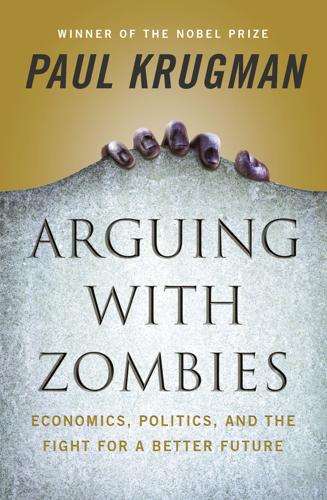
Arguing With Zombies: Economics, Politics, and the Fight for a Better Future
by
Paul Krugman
Published 28 Jan 2020
For the most part, however, opponents of reform didn’t even pretend to engage with the reality either of the existing health care system or of the moderate, centrist plan—very close in outline to the reform Mitt Romney introduced in Massachusetts—that Democrats were proposing. Instead, the emotional core of opposition to reform was blatant fear-mongering, unconstrained either by the facts or by any sense of decency. It wasn’t just the death panel smear. It was racial hate-mongering, like a piece in Investor’s Business Daily declaring that health reform is “affirmative action on steroids, deciding everything from who becomes a doctor to who gets treatment on the basis of skin color.” It was wild claims about abortion funding. It was the insistence that there is something tyrannical about giving young working Americans the assurance that health care will be available when they need it, an assurance that older Americans have enjoyed ever since Lyndon Johnson—whom Mr.
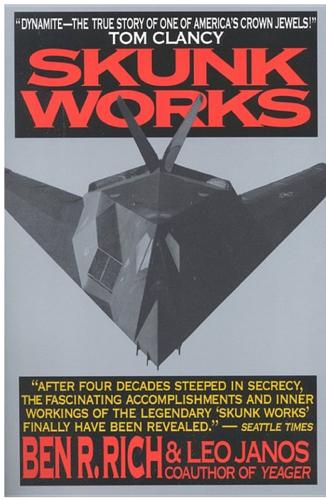
Skunk Works: A Personal Memoir of My Years of Lockheed
by
Ben R. Rich
and
Leo Janos
Published 1 Jan 1994
I had to laugh thinking how Kelly would have reacted not only to the security headaches but to the exasperating management regulations that never existed in his day. I might be cleared for top secret, but I was also on a government contract and that meant conforming to all sorts of mandatory guidelines and stiff regulations. Kelly had operated in a paradise of innocence, long before EPA, OSHA, EEOC, or affirmative action and minority hiring policies became the laws of our land. I was forced by law to buy two percent of my materials from minority or disadvantaged businesses, but many of them couldn’t meet my security requirements. I also had to address EEOC requirements on equal employment opportunity and comply with other laws that required hiring a certain number of the disabled.
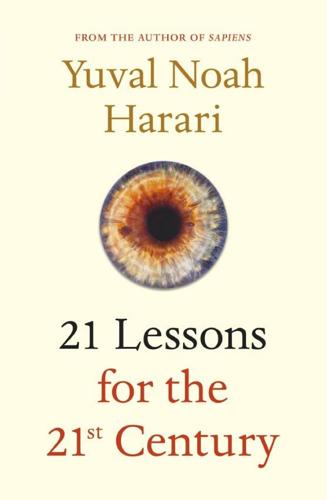
21 Lessons for the 21st Century
by
Yuval Noah Harari
Published 29 Aug 2018
If we look at statistics and discover that Warmlander firms have few Coldians in senior positions, this may result not from racist discrimination, but from good judgement. Should Coldian immigrants feel resentment at this situation, and claim that Warmland is reneging on the immigration deal? Should we force Warmlander firms to hire more Coldian managers through ‘affirmative action’ laws, in the hope of cooling down Warmland’s hot-tempered business culture? Or perhaps the fault lies with Coldian immigrants failing to assimilate into the local culture, and we should therefore make a greater and more forceful effort to inculcate in Coldian children Warmlander norms and values?
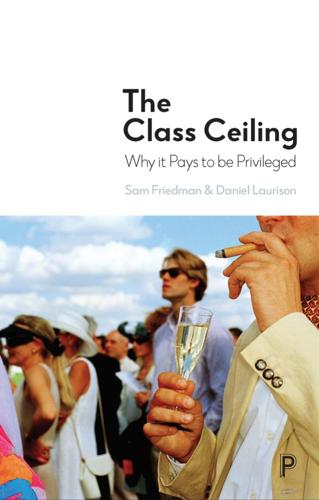
The Class Ceiling: Why It Pays to Be Privileged
by
Sam Friedman
and
Daniel Laurison
Published 28 Jan 2019
Stanworth, P. and Giddens, A. (1974) Elites and power in British society, 8, Cambridge University Press Archive (http://books. google.co.uk/books?hl=en&lr=&id=Syg4AAAAIAAJ&oi=f nd&pg=PR7&dq=Stanworth+and+Giddens,+1974%3B&o ts=4hIfX8nZvS&sig=2pdEVgm8oGgapvHOczsZoISS_hQ). Steinbugler, A.C., Press, J.E. and Johnson Dias, J. (2006) ‘Gender, race, and affirmative action: Operationalizing intersectionality in survey research’, Gender & Society, 20(6), 805-25 (https:// doi.org/10.1177/0891243206293299). Steinmetz, G. (2006) ‘Bourdieu’s disavowal of Lacan: Psychoanalytic theory and the concepts of “habitus” and “symbolic capital”’, Constellations, 13(4), 445-64 (https://doi. org/10.1111/j.1467-8675.2006.00415.x).

New Laws of Robotics: Defending Human Expertise in the Age of AI
by
Frank Pasquale
Published 14 May 2020
To help identify and deter such manipulation, both social networks and search engines should crack down on manipulative bots. If they fail to do so, laws should require every account to disclose whether it is operated by a person or a machine. All users should be able to block bot accounts as part of their user settings—or better, such settings should default to blocking bots, with affirmative action required to open a user’s feed to their automated emissions. Some technophiles worry that such restrictions could interfere with free expression. But a purely automated source of information and manipulation, with no humans directly taking responsibility for it, should not enjoy such rights.
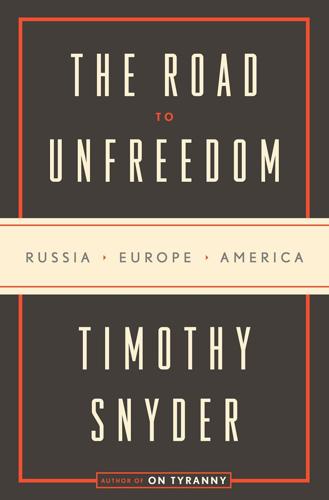
The Road to Unfreedom: Russia, Europe, America
by
Timothy Snyder
Published 2 Apr 2018
Nationalist political economy: Timothy Snyder, “Soviet Industrial Concentration,” in John Williamson, ed., The Economic Consequences of Soviet Disintegration (Washington, D.C.: Institute for International Economics, 1993), 176–243. Within the Soviet Union The locus classicus on the national question within the USSR is Terry Martin, The Affirmative Action Empire: Nations and Nationalism in the Soviet Union, 1923–1939 (Ithaca, NY: Cornell UP, 2001). Invaluable on the relationship between 1989 and 1991 is Mark Kramer, “The Collapse of East European Communism and the Repercussions within the Soviet Union,” Journal of Cold War Studies, vol. 5, no. 4, 2003; vol. 6, no. 4, 2004; vol. 7, no. 1, 2005.
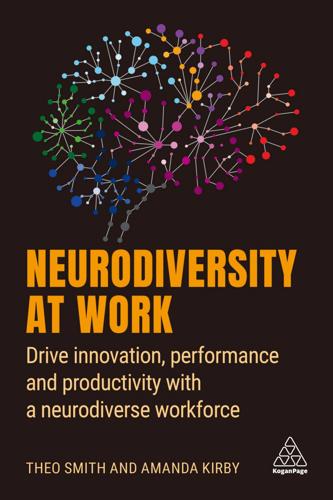
Neurodiversity at Work: Drive Innovation, Performance and Productivity With a Neurodiverse Workforce
by
Amanda Kirby
and
Theo Smith
Published 2 Aug 2021
An employee may disclose their disability: in application form; at the interview stage; when they first start in their role; during their employment; when they receive a diagnosis. What is positive action? ‘Positive action’ means the steps that an employer can take to encourage people from groups with different needs or with a past track record of disadvantage or low participation to apply for jobs. Reverse or affirmative action is illegal in the UK. Putting something in place The Code of Practice (6.19) in the UK advises that, for the purposes of making reasonable adjustments ‘the employer must, however, do all they can reasonably be expected to do to find out whether [a worker is disabled and subject to a substantial disadvantage]’.8 What is reasonable will depend on the circumstances.
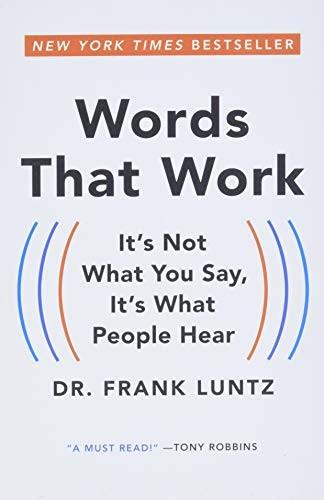
Words That Work: It's Not What You Say, It's What People Hear
by
Dr. Frank Luntz
Published 2 Jan 2007
This is the one area where politicians often have the edge over the corporate community. It’s very difficult to craft advertising language that touches people at the most fundamental, primal level, by speaking to their deepest hopes, fears, and dreams. Not many products or services have an impact as serious and significant as abortion, affirmative action, immigration, taxation, and the other topics most often addressed by political figures. The key to successful aspirational language for products or politics is to personalize and humanize the message to trigger an emotional remembrance. As Warren Beatty, perhaps the best student of the human condition in Hollywood, once told me, people will forget what you say, but they will never forget how you made them feel.
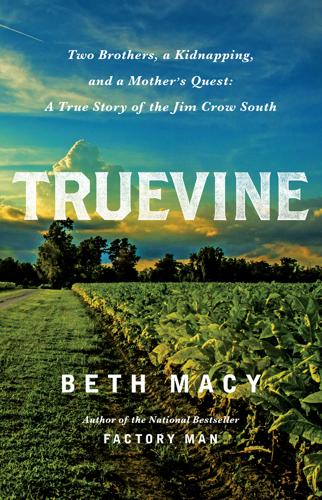
Truevine: Two Brothers, a Kidnapping, and a Mother's Quest: A True Story of the Jim Crow South
by
Beth Macy
Published 17 Oct 2016
Barnes Dies,” Around the White Tops (Circus Fans of America publication), September 1931; on file at Circus World Museum, Baraboo, WI. “his zest for life”: “Al G. Barnes Dies; Noted Circus Man,” New York Times, July 25, 1931. George and Willie feigned servitude: Stanley Elkins’s views were influential during the development of affirmative-action programs designed to counteract the lingering effects of slavery on black culture; Quarles, Negro in the Making of America, 74–75, and Elkins, Slavery: A Problem in American Institutional and Intellectual Life (Chicago: University of Chicago Press, 1959). frustration behind a façade of happiness: Paul Laurence Dunbar, “We Wear the Mask,” Lyrics of Lowly Life (New York: Dodd, Mead, 1896).
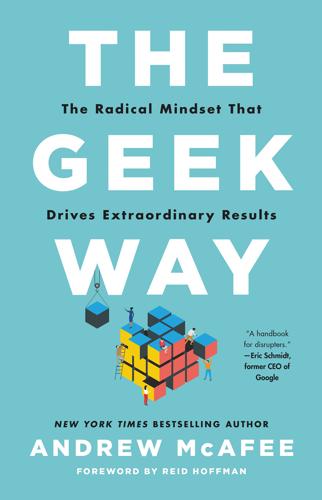
The Geek Way: The Radical Mindset That Drives Extraordinary Results
by
Andrew McAfee
Published 14 Nov 2023
But replace the word people there with press secretaries, and the risk becomes clear: the press secretary module will pick out the most self-serving bits and use them to draft even more convincing memos. This is not just a hypothetical risk. In one study, people who were well-informed about contentious issues like gun control and affirmative action couldn’t come up with even a single argument against their own position. People with less knowledge, meanwhile, could articulate multiple opposing points. As philosopher Michael Hannon summarizes, “The most politically knowledgeable individuals tend to be the most partisan, and… the most knowledgeable and passionate voters are also the most likely to think in corrupted, biased ways… Attempts to remedy voter ignorance are problematic because partisans tend to become more polarized when they acquire more information.”
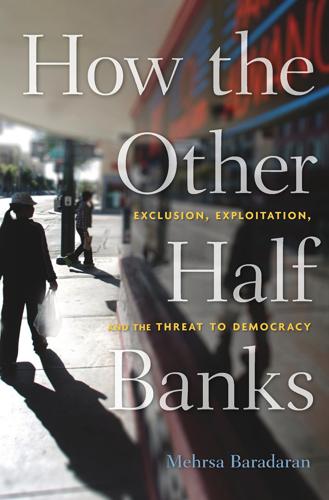
How the Other Half Banks: Exclusion, Exploitation, and the Threat to Democracy
by
Mehrsa Baradaran
Published 5 Oct 2015
The most expansive and controversial of all such efforts is the Community Reinvestment Act (CRA).64 The CRA was created to respond to banks fleeing from low-income neighborhoods, a process labeled “redlining,” or drawing a literal or figurative line around geographic areas and refusing to lend there either because of profitability concerns or racial discrimination.65 The CRA responds to this phenomenon much the same way that affirmative action laws respond to discrimination: it imposes duties on banks to lend to underserved communities even while recognizing the economic barriers involved.66 This law is the very embodiment of the tension at the heart of the banking industry. The CRA’s genesis, application, and vilification are where banking past meets banking present—where the public nature of banks is asserted and then rejected.
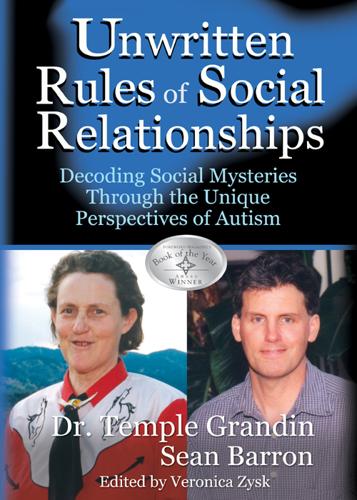
The Unwritten Rules of Social Relationships: Decoding Social Mysteries Through the Unique Perspectives of Autism
by
Temple Grandin
and
Sean Barron
Published 30 Sep 2012
Unfortunately, today, that environment has changed, which places an even greater responsibility on parents and educators to artificially create a new environment that meets the needs of children with the social, sensory, language and perception impairments that are characteristic of autism-related disorders. While affirmative action and special education laws have been instrumental in bringing needed services to people with disabilities, the flip side is that it has also fostered a “handicapped mentality” in some really brilliant people. They feel “entitled” to assistance and are increasingly blaming their success or failure on the world at large, rather than taking personal responsibility for their actions and the consequences of those actions.
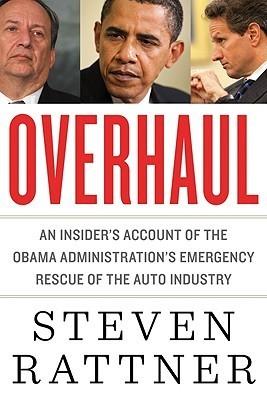
Overhaul: An Insider's Account of the Obama Administration's Emergency Rescue of the Auto Industry
by
Steven Rattner
Published 19 Sep 2010
He liked to compare his style to that of the patient in a dentist's chair who grabs the dentist by the genitals and says, "Now, let's not hurt each other." His sense of humor extended to himself. "I get it," he said one day early in his tenure, as the team was filling with Wall Street veterans, "I'm affirmative action." Like me, Ron was used to running his own show. Yet I liked him and we had a lot in common. We'd both been through many restructurings. Like me, he was soft-spoken and fact-based. We shared a firm capitalist perspective: companies had to be viable, and saving loss-makers was pointless. And we agreed on another key issue that Ron raised.
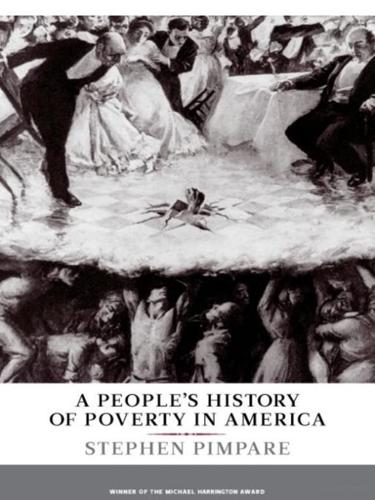
A People's History of Poverty in America
by
Stephen Pimpare
Published 11 Nov 2008
I’m the person that is supposed to drink. I’m the person that is supposed to smoke weed. I’m the motherfucker that is supposed to fill your jails. I’m the person that you make examples to your kid of what not to be like. I’m supposed to be a basketball player. I’m supposed to make it only because of affirmative action. I’m not supposed to be positive. I’m not supposed to be educated. I’m not supposed to know what I know. But I do.39 When we home in only on the dark side of areas of concentrated poverty, we fail to appreciate what a life lived there is really like. Most descriptions of our early slums and of poor neighborhoods since then have been through the eyes of the middle-class observers who have focused on the worst in them.
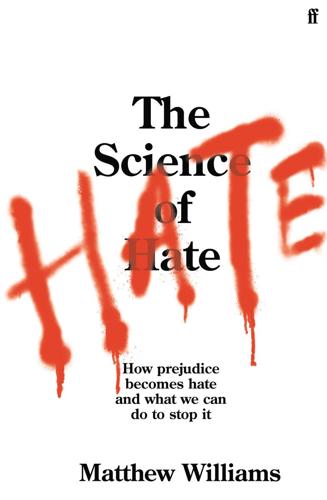
The Science of Hate: How Prejudice Becomes Hate and What We Can Do to Stop It
by
Matthew Williams
Published 23 Mar 2021
McLaughlin et al., ‘Stereotyped Identification: How Identifying with Fictional Latina Characters Increases Acceptance and Stereotyping’, Mass Communication and Society 21 (2018), 585–605. 14. S. Ramasubramanian, ‘Television Viewing, Racial Attitudes, and Policy Preferences: Exploring the Role of Social Identity and Intergroup Emotions in Influencing Support for Affirmative Action’, Communication Monographs 77 (2010), 102–20. 15. P. E. Baker, Negro–White Adjustment, New York: Association Press, 1934; H. A. Lett, Techniques for Achieving Interracial Cooperation, Proceedings of the Institute on Race Relations and Community Organization, Chicago: University of Chicago and the American Council on Race Relations, 1945. 16.

San Fransicko: Why Progressives Ruin Cities
by
Michael Shellenberger
Published 11 Oct 2021
The latter saw a decline of 36 percent in the last thirty years, from 1,305 injuries per 100,000 people in 1990 to 835 per 100,000 people in 2019, the latest year for which numbers are available.29 It was wrong that the federal government channeled black families into rental apartments and white people into subsidized homeownership after World War II, but few argue that racism increased since then, and on many measures it declined significantly in the period that addiction worsened. The 1964 Civil Rights Act mandated desegregation by institutions that received federal money. In 1968 the Fair Housing Act closed loopholes on discriminatory lending. And governments, universities, and firms have used affirmative action programs to promote people of color to positions of power within organizations since 1965. America’s social safety net has expanded dramatically over the last half century. New programs included Supplemental Security Income (SSI) program (1972); the Women, Infants, and Children (WIC) nutrition program (1972); Pell Grants (1972); the Earned Income Tax Credit (1975); the child support program (1975); Low Income Home Energy Assistance Program (1981); Children’s Health Insurance Program (1997); Medicare Part D subsidy for low-income Americans (2003); and the Affordable Care Act (2010).
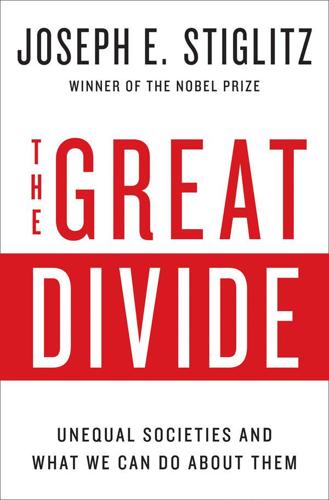
The Great Divide: Unequal Societies and What We Can Do About Them
by
Joseph E. Stiglitz
Published 15 Mar 2015
These grow larger over time, as the children of the rich, living in rich enclaves, get a better education than the one received by those attending schools in poorer areas. Economic segregation has become the order of the day, so much so that even those well-off and well-intentioned selective colleges that instituted programs of economic affirmative action—explicitly trying to increase the fraction of their student body from lower socioeconomic groups—have struggled to do so. The children of the poor can afford neither the advanced degrees that are increasingly required for employment nor the unpaid internships that provide the alternative route to “good” jobs.

The Job: The Future of Work in the Modern Era
by
Ellen Ruppel Shell
Published 22 Oct 2018
Birch, Job Creation in America: How Our Smallest Companies Put the Most People to Work (New York: Free Press, 1987), https://ssrn.com/abstract=1496185. anachronisms but veritable job generation machines For an eye-opening look at the rise of the small business myth, see Jonathan J. Bean, Big Government and Affirmative Action: The Scandalous History of the Small Business Administration (Lexington: University Press of Kentucky, 2001). Start-ups, by his reckoning Tim J. Kane, “The Importance of Startups in Job Creation and Job Destruction,” Kauffman Foundation Research Series: Firm Formation and Economic Growth, 2010, http://dx.doi.org/doi:10.2139/ssrn.1646934.
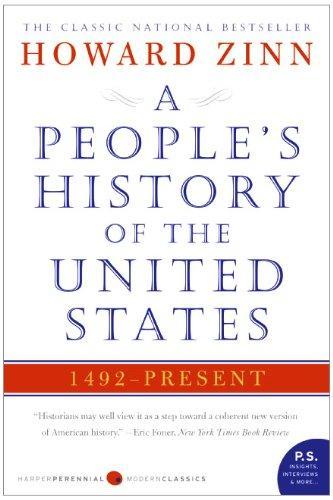
A People's History of the United States
by
Howard Zinn
Published 2 Jan 1977
In the seventies, with liberal justices William Brennan and Thurgood Marshall in the lead, the Court had declared death penalties unconstitutional, had supported (in Roe v. Wade) the right of women to choose abortions, and had interpreted the civil rights law as permitting special attention to blacks and women to make up for past discrimination (affirmative action). William Rehnquist, first named to the Supreme Court by Richard Nixon, was made Chief Justice by Ronald Reagan. In the Reagan-Bush years, the Rehnquist Court made a series of decisions that weakened Roe v. Wade, brought back the death penalty, reduced the rights of detainees against police powers, prevented doctors in federally supported family planning clinics from giving women information on abortions, and said that poor people could be forced to pay for public education (education was not “a fundamental right”).
…
abolitionists, 117, 120, 121, 122, 124, 155, 181–90 passim abortion, 574 Abrams, Elliot, 586, 590 Acheson, Dean, 438 activism, after 1960s, 565 Adamic, Louis, 399–400 Adams, Henry, 258–59 Adams, John, 67, 68, 70, 77, 100, 109, 110 Adams, Mrs. John (Abigail), 109–10 Adams, John Quincy, 130, 132, 153 Adams, Samuel, 60, 61, 66, 93, 95 affirmative action, 574 Afghanistan, 572, 604–05, 659, 678–81 Africa, 363, 429–30 black civilization and culture, 26–27, 28 economic importance, 569 slavery and slave trade, 26, 27–28, 32 African National Congress, 608 Agency for International Development (AID), 569, 658 Agnew, Spiro, 544, 545 Agricultural Adjustment Administration (AAA), 393, 397 Alabama, Indians in, 127, 128, 133, 136, 137, 141–43 Albright, Madeleine, 659, 666 Aldrich, Nelson W., 351 Allan, Robert, 291 Allen, Ethan, 63 Allen, Robert, 465 Allende, Salvadore, 548, 554 Alliance for Progress, 438 Alperovitz, Gar, 423 Al Qaeda, 678 alternative media, 624–25 American Anti-Slavery Society, 119, 155 American Civil Liberties Union, 436 American colonies, 12–17, 21, 23–25, 29–58 banking and finance, 70, 90, 91–92, 93, 97 business and industry, 48, 49, 51, 52, 65, 84 children, 43, 44, 49, 55 indentured servants 42–47, 23, 25, 32, 37, 42–47 slavery, 23, 27–38 passim, 43, 46, 49, 11, 53–58 passim, 72, 103, 105–06 rebellions, 32–38 passim, 53, 54, 55, 56, 59, 72 taxation, 39, 40, 41, 48, 52, 61, 63, 65, 66, 69, 71, 72, 109 women, 43, 44, 49, 72, 73, 102, 104–11 passim see also Revolutionary War American Federation of Labor (AFL), 251, 269, 306, 307, 328–30, 335, 352, 377, 380, 381, 385, 399, 401, 417 American Indian Movement (AIM), 534 American Revolution, see Revolutionary War American Tobacco Company, 254, 260, 310 American with Disabilities Act, 629 Ames, Oakes, 255 Amherst, Jeffrey, 87 Anderson, John, 611 Angola, 618 Anthony, Susan, 342–43 Anti-Imperialist League, 311, 314–15, 317 antinuclear movement, 601–05 passim Aptheker, Herbert, 36, 174, 176, 194, 209 Arab-Americans, 600, 680 Arawak Indians, 1–7 passim, 9, 10, 11 Armour, Philip, 255 Armour and Company, 309 Aspin, Les, 584, 652 Astor, John Jacob, 305 Astor family, 238, 242 Atlantic Charter, 412 Attica prison riot, 520–21, 523 Attucks, Crispus, 67 Avillo, Philip, 621–22 Aziz, Tariq, 596 Aztecs, 11–12 Bacon, Nathaniel, 39, 40–41 Bacon, Robert, 351 Bacon’s Rebellion, 37, 39–42, 45, 54, 55, 59 Badillo, Herman, 566 Baez, Joan, 537 Bagley, William, 263 Bailyn, Bernard, 101 Baker, Ella, 404 Baker, James, 596 Baker, Polly, 107 Baldwin, Hanson, 422 Baldwin, Samuel, 52 Ball, George, 561 Ballard, Martha Moore, 111 Baltimore, Lord, 84 Baltimore (Md.), 88, 222–23, 245, 246 Bancroft, George, 90 banking and economy, 101, 130, 189, 206, 224, 238, 242, 254–58 passim, 277, 284, 287 Colonial era; 70, 90, 91–92, 93, 97 crises and depressions, 224, 225, 242–43, 260, 277–78, 323, 386–94 foreign investment capital, 427, 561 international regulation, 349, 414, 561 Banneker, Benjamin, 89 Barbados, 44 Barbot, John, 28 Barnet, Richard, 427 Barlett, Donald, 580 Barsamian, David, 624–25, 671 Baruch, Bernard, 363 Beard, Charles, 90–91, 98, 371 Beecher, Catharine, 116 Beecher, William, 605 Belcher, Andrew, 51 Bellamy, Edward, 264, 278 Bellush, Bernard, 392–93 Belmont, August, 246, 256 Benavidez, Roy, 578 Benin, 26 Benjamin, Judah, 195 Bennett, Gwendolyn, 445–46 Bennett, William, 629 Benston, Margaret, 506 Berger, Victor, 353 Berkeley, William, 41, 42, 44 Berkman, Alexander, 272, 277, 321, 372, 375 Bernstein, Barton, 392 Bernstein, Carl, 545 Berrigan, Daniel, 488–89, 602 Berrigan, Philip, 488, 601, 602 Berthoff, Rowland, 84 Beveridge, Albert, 299 Billings, Warren, 359 Bingham, Eula, 575 bin Laden, Osama, 678, 679 Blackett, P.
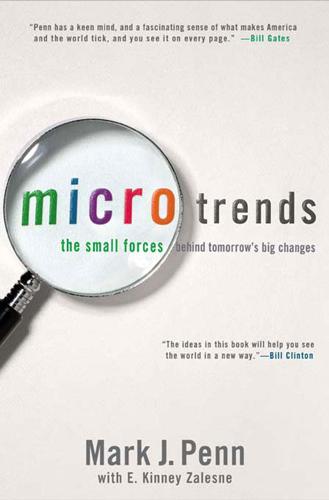
Microtrends: The Small Forces Behind Tomorrow's Big Changes
by
Mark Penn
and
E. Kinney Zalesne
Published 5 Sep 2007
White parents who want to adopt a black child in America are still subjected to “cultural competency” training—a nod to the days (from the 1970s through the early 1990s) when transracial adoptions were denounced as “cultural genocide.” But apart from needing our respect and support, interracial families of all sorts are owed our attention, because very quietly they are eroding the assumptions that have guided America’s race-related policies, customs, and habits for decades. For example, what does affirmative action mean, in an era when people’s ancestors were both victims and oppressors? Do such people get preferential treatment, or not? How long will we adhere to the “one drop” rule in identifying people’s race? Illinois senator Barack Obama has a white mother, who raised him exclusively, but does anyone (including the senator) tell his story without reflecting on his blackness?
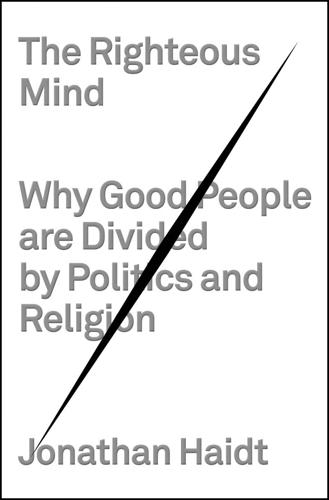
The Righteous Mind: Why Good People Are Divided by Politics and Religion
by
Jonathan Haidt
Published 13 Mar 2012
If people can see what they want to see in the figure , just imagine how much room there is for partisans to see different facts in the social world.38 Several studies have documented the “attitude polarization” effect that happens when you give a single body of information to people with differing partisan leanings. Liberals and conservatives actually move further apart when they read about research on whether the death penalty deters crime, or when they rate the quality of arguments made by candidates in a presidential debate, or when they evaluate arguments about affirmative action or gun control.39 In 2004, in the heat of the U.S. presidential election, Drew Westen used fMRI to catch partisan brains in action.40 He recruited fifteen highly partisan Democrats and fifteen highly partisan Republicans and brought them into the scanner one at a time to watch eighteen sets of slides.

House of God
by
Samuel Shem
Published 1 Jan 1978
You get to know them by their particular shrieks. But what diseases does your gomere have?" "I don't know. I haven't seen her yet." "Doesn't matter. Pick an organ, any organ." I fell silent, so scared that I was having trouble thinking of an organ. "What is this? Where did they get you from? On quota? Is there affirmative action for Jews? What lies inside the chest cavity and beats?" "The heart." "Good. So the gomere has congestive heart failure. What else?" "The lungs." "Terrific. You're really cooking now. Pneumonia. Your gomere has CHF and pneumonia, she's septic from her indwelling catheter, refuses to eat, wants to die, is demented, and has an unobtainable BP.
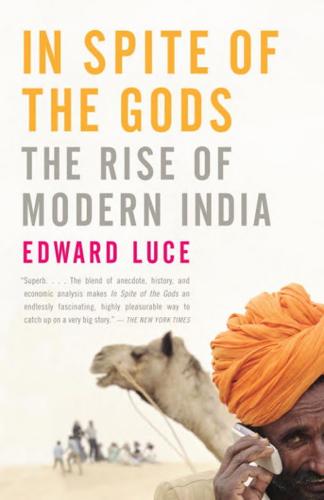
In Spite of the Gods: The Rise of Modern India
by
Edward Luce
Published 23 Aug 2006
But in the political world, India’s lower castes move in the opposite direction from “Sanskritization,” which many now follow in their personal lives. Instead of seeking to emulate their Brahmin role models as they do in their cultural and religious behavior, the lower castes use politics to play out their revenge against the upper castes and to extract compensation for their low social status. Usually they get what they want. India’s affirmative action program is the largest in the world. It is far larger and more extensive than that of America. In India, half of all government jobs are reserved for three separate categories of underdog: Adivasis, who are Indians of tribal origin, making up almost 10 percent of the population; Dalits officially accounting for 12.5 percent of the population; and “Other Backward Classes,” which include castes such as the Yadavs, accounting for 27 percent of the population.
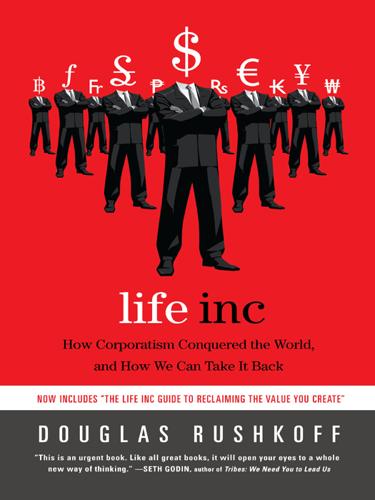
Life Inc.: How the World Became a Corporation and How to Take It Back
by
Douglas Rushkoff
Published 1 Jun 2009
Even most progressive journalism—just like the kind that emerged in the early 1900s—tends to frighten and isolate the middle classes rather than bring them out of their homes to improve their communities. Populists such as CNN’s Lou Dobbs, and others speaking out on behalf of working stiffs, stoke more rage and discontent than thoughtful engagement. In the isolation of our living rooms and surrounded by bills, the menaces of immigrants willing to take our jobs for less pay and affirmative-action candidates offered our jobs with fewer qualifications feel all too real. Experiencing all this through the sensationalist lens of Big Media only reduces our connection to the real world in which all this stuff is supposedly occurring. We seek to take on our institutional enemies vicariously through our late-night comedians, or “directly” through our laptops.
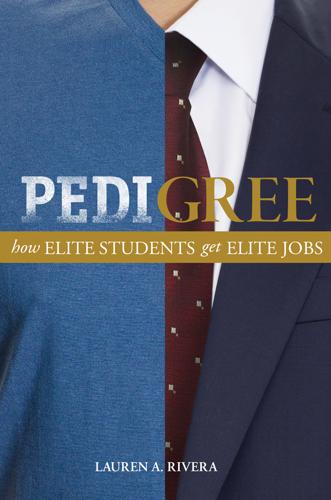
Pedigree: How Elite Students Get Elite Jobs
by
Lauren A. Rivera
Published 3 May 2015
—Brent, law firm hiring manager The nearly exclusive focus on students at listed schools tilts the playing field by socioeconomic status. My research shows that it also limits competition by gender and race.28 As federal contractors, most of the firms I studied are required to demonstrate that they are taking “affirmative action” to increase their representations of qualified women and minorities.29 Compared to many other types of white-collar, high-prestige employers in the United States, these firms devote significant monetary and human resources to attracting and retaining diverse talent. Many have diversity councils, full- or part-time diversity staff, and nearly all participate in targeted recruiting programs aimed at increasing the demographic diversity of applicant pools.
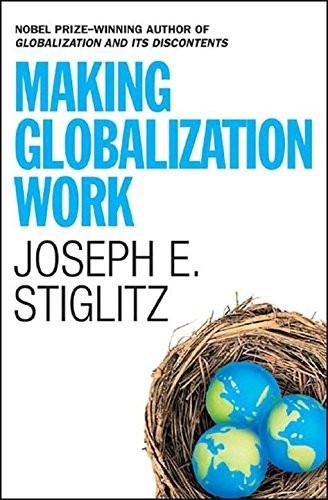
Making Globalization Work
by
Joseph E. Stiglitz
Published 16 Sep 2006
East Asian nations feel that it is their responsibility to maintain full employment and actively promote growth, and their governments remain concerned about inequality and social stability. In Malaysia, the role of government has extended in yet another direction. For decades, the Malaysian government has carried out an aggressive affirmative action program to help the ethnic Malays. This was an important part of nation building; the view that all groups would benefit from a more stable and equitable society was widely accepted, even though some members of Malaysia’s ethnic Chinese community may have lost opportunities as a result. However, because the government made sure that all shared in the fruits of development, ethnic conflict has largely been avoided.

Stamping Butterflies
by
Jon Courtenay Grimwood
Published 1 Jan 2004
"Oh, and organize a secure video link to all the section chiefs for six p.m. Eastern Standard Time. Okay, Steve? I want hearts and minds for all areas on local responses... "No," Paula said heavily. "Not the execution. The equations." Steve Duffy was pretty, enthusiastic and ticked off the boxes for a handful of the government's affirmative action requirements, being trailer poor, dyslexic and gay. Unfortunately he was also none too bright. "And get me Professor Mayer on the secure line, then Vice Questore Pier Angelo... the Italian," she said, "and the President's private secretary. In that order." CHAPTER 46 Zigin Chéng, CTzu 53/Year 20 [The Future] "I'm winning," Zaq said.
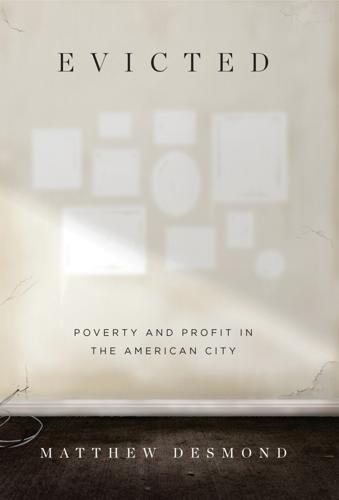
Evicted: Poverty and Profit in the American City
by
Matthew Desmond
Published 1 Mar 2016
Beryl Satter, Family Properties: How the Struggle over Race and Real Estate Transformed Chicago and Urban America (New York: Metropolitan Books, 2009), 6; see also Spear, Black Chicago, 148; Trotter, Black Milwaukee, 180. 20. Michael Bennett, When Dreams Come True: The GI Bill and the Making of Modern America (McLean: Brassey’s Publishing, 1966); Ira Katznelson, When Affirmative Action Was White: An Untold History of Racial Inequality in Twentieth-Century America (New York: Norton, 2005). 21. At 43 percent, blacks have the lowest homeownership rates in the country today. At 73 percent, whites have the highest. Robert Callis and Melissa Kresin, Residential Vacancies and Homeownership in the Third Quarter 2014 (Washington, DC: US Census Bureau, October 2014), Table 7; Ta-Nehisi Coates, “The Case for Reparations,” The Atlantic, June 2014. 22.
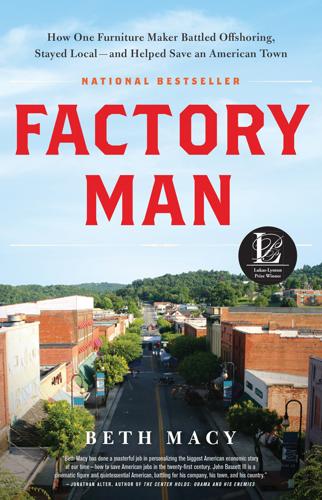
Factory Man: How One Furniture Maker Battled Offshoring, Stayed Local - and Helped Save an American Town
by
Beth Macy
Published 14 Jul 2014
Chapter 9: Sweet Ole Bob (SOB) Interviews: Frank Snyder, Maury Hammack, Naomi Hodge-Muse, Reuben Scott, Garet Bosiger, Bob Merriman, Howard Altizer, Joe Philpott, Jim Philpott, Junior Thomas, Bill Young, Coy Young, James Riddle, Rob Spilman, Jerry Epperson, Carolyn Blue Segregated factory departments: Bassett wasn’t alone in its discriminatory practices. According to a 1998 analysis by Harvard sociologist Frank Dobbin, at the time, just 20 percent of American employers had established affirmative-action policies. By 1976, more than 80 percent of large firms had equal-employment policies, according to the Bureau of National Affairs. First to make alcohol and “do it legal!”: Dwayne Yancey, “Hey, Sugar, She’s No Average Republican,” Roanoke Times, October 20, 1991. Naomi Hodge-Muse family: Her husband, William Muse, got his Imperial Savings and Loan federal insurance during the Nixon administration—via a connection with a White House cook (Naomi Hodge-Muse, interview with the author, September 18, 2012).
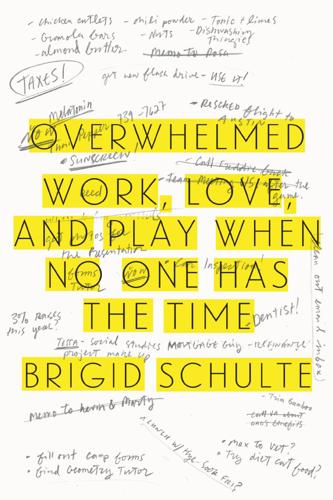
Overwhelmed: Work, Love, and Play When No One Has the Time
by
Brigid Schulte
Published 11 Mar 2014
“She had domestic help … She wouldn’t have called them nannies, but she had people in her home,” Schlafly’s niece, writer Suzanne Venker, told the Los Angeles Times. “Did she mention that fact enough to get her point across to young people about how she managed to do it? No, she did not.”12 10 NEW DADS Were I Queen, my principal affirmative action plan would have three legs. First, it would promote equal educational opportunity, and effective job training for women, so they would not be reduced to dependency on a man or the state. Second, my plan would give men encouragement and incentives to share more evenly with women the joys, responsibilities, worries, upsets, and sometimes tedium of raising children from infancy to adulthood.
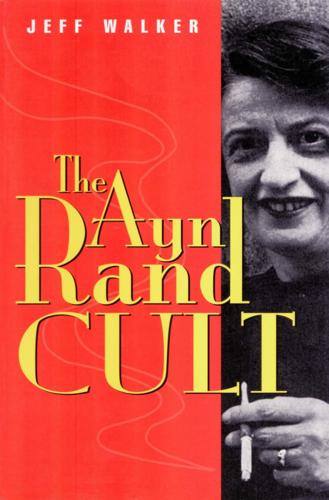
Ayn Rand Cult
by
Jeff Walker
Published 30 Dec 1998
For example, a few years after IOS pulled the plug on its weekly radio show In Focus with co-hosts David Kelley and Raymond Newman, Peikoff began hosting a daily one-hour talk show on KIEV radio in Los Angeles. Students of Objectivism can obtain audiocassettes of the first year of programs for a mere $750. It is unlikely however, that the following KIEV incident will make it onto an audiocassette for sale: In February 1998, a liberal organization ran a pro-affirmative-action ad in The New York Times featuring this quotation from Alan Greenspan: “It is good for business. It is good for our society, and it is the right thing to do.” Ever since Greenspan’s favorable comments on The Passion of Ayn Rand, he had been disdained by ARI and its affiliate newsletter, but Peikoff had never personally performed the excommunicatory rites.
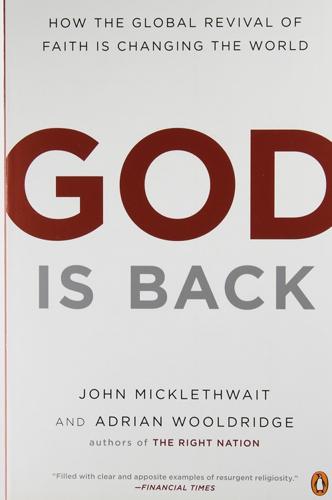
God Is Back: How the Global Revival of Faith Is Changing the World
by
John Micklethwait
and
Adrian Wooldridge
Published 31 Mar 2009
According to McKinsey, the Gulf economies need to create 280,000 jobs a year to employ their young people. But despite some of the lowest student-teacher ratios in the world, the religious schools give their students few marketable skills: indeed, foreign firms are forced to take quotas of the locals through affirmative action programs. McKinsey reckons a quarter of native employees in Bahrain, Saudi Arabia and the UAE fail to show up for work.22 As for the southern Mediterranean, it has a lot of catching up to do. The MEDA ten (a group of southern and eastern economies) have an average income per head of only $6,200, putting them roughly where Western Europe was in 1950 and Romania was in 1975.

The Search for Life on Mars
by
Elizabeth Howell
Published 14 Apr 2020
The eventual choice of the name Sojourner Truth had less to do with political correctness than a desire by Shirley to get young people involved. The fact that it was named after an African American reformer from the time of the Civil War who traveled the country advocating the right of people to be free was an incidental benefit. Some of the older people at JPL disagreed. “I’d had enough of all this affirmative action crap about blacks and minorities,” said one veteran JPL flight engineer (in the hearing of the older author) who was taking early retirement in the early 1990s. Today, it is doubtful that those who have followed in his footsteps would think such a thing, let alone articulate it. Where once Donna Shirley had been the only female engineer on staff at JPL, the situation for women has markedly improved.
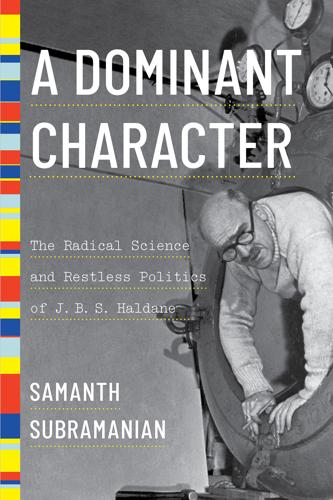
A Dominant Character
by
Samanth Subramanian
Published 27 Apr 2020
For all his declamations against hierarchies, he had also never fully expelled the aristocrat within him. Visiting India as a young soldier, he had observed scathingly: “The Hindu caste system is the greatest glorification of snobbery that the world has ever known.” Now, living in the country as an older man, he still censured the indignities of caste regularly; even if affirmative action enrolled lower-caste students at the expense of deserving Brahmins, he wrote, for example, it was “a rough kind of justice. It certainly does not outweigh the huge injustices which the ancestors of Brahmins inflicted on their fellow Indians in the past.” But Haldane also admitted to a “sneaking sympathy” for the Brahmin class.

The Price of Silence: The Duke Lacrosse Scandal
by
William D. Cohan
Published 8 Apr 2014
And there is no reason. There’s no reason unless I said, ‘I want to hook up with you in the bathroom’; there’s no reason to make that assumption. But it happens all the time.” Christopher and Williams recalled a letter to the Chronicle, in December 2003, from Duke junior Paul Musselwhite, who argued that affirmative action was detrimental to the student population, especially to some minority students whose SAT scores were found to be some two hundred points lower than their peers’ and yet were still admitted to the university. “Having a group of clearly identifiable students that are part of an educational cohort that is considerably lower than the general population of the school is bound to lead to ghettos, socially and academically,” he wrote.
…
“Having a group of clearly identifiable students that are part of an educational cohort that is considerably lower than the general population of the school is bound to lead to ghettos, socially and academically,” he wrote. “Making academic excellence, as opposed to academic competence, a universal standard will encourage beneficial interaction. The end of affirmative action would allow students to interact with each other as true peers, and thus increase the chances for racial mixing. Try ending institutionalized discrimination before killing frats and selective living groups.” They still remembered Musselwhite’s provocative letter. “When people got offended, all you heard was ‘Black students just complain all the time, all you do is complain and self-segregate,’ ” Christopher said.

Wall Street: How It Works And for Whom
by
Doug Henwood
Published 30 Aug 1998
Things were a bit less lopsided between the 1962 and 1983 surveys; the upper middle class (the 90th to 99th percentiles) did notably better and the bottom 80% even gained wealth rather than losing it. Even so, wealth concentrated between 1962 and 1983. It seems to be in the very nature of wealth to concentrate, much as interest compounds over time. Despite myths of affirmative action and upward mobility, the tendency of wealth to concentrate, for advantage to breed advantage, makes it hard on people who start with nothing. Quite surprisingly, economists don't really have a very solid idea of what share of personal wealth comes from savings during individuals' lifetimes, and what share is inherited.
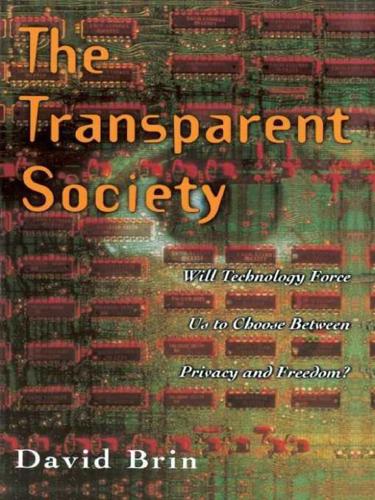
The Transparent Society: Will Technology Force Us to Choose Between Privacy and Freedom?
by
David Brin
Published 1 Jan 1998
Impatience with difficult stages in the process can lead to dramatic or violent episodes of social criticism. Even people who agree on the fundamental desirability of tolerance frequently deride each other over differences in preferred technique for achieving the same end (for example, whether affirmative action programs redress old injuries or serve to perpetuate racialism as an unfair means of judging people). Today, large segments of the population push inclusiveness further still, calling it “murder” to slay a dolphin, or an ape, or members of a threatened species—even species that our hard-pressed ancestors considered vital food sources.
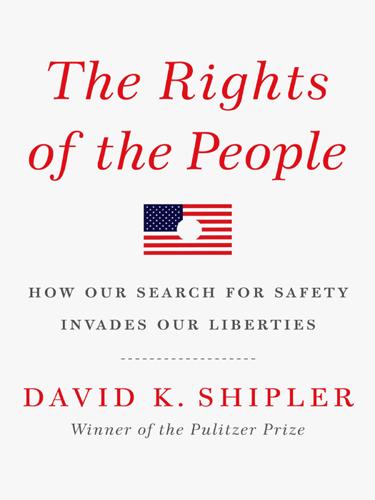
The Rights of the People
by
David K. Shipler
Published 18 Apr 2011
When they seize narcotics, the campus cops don’t get prosecuted for drug possession themselves, he noted. The warrant directed at DSS is designed “to ‘legalize’ the process by cloaking the search with judicial approval.” The prosecutor appealed successfully to the New Hampshire Supreme Court. Without proof that a private party’s search was induced by prior “affirmative action by a governmental official,” it said, no agency relationship could be shown. The court found multiple facts establishing the independence of the college security officers: They were not asked by the police to do the search; they received no equipment, information, or assistance in the case; and they neither trained with, took instructions from, nor formulated policies jointly with the police.

London: The Autobiography
by
Jon E. Lewis
Published 25 Aug 2009
The forces of error, doubt and despair were so firmly entrenched in British society, as the ‘winter of discontent’ had just powerfully illustrated, that overcoming them would not be possible without some measure of discord. The election of a Conservative government under Margaret Thatcher had profound implications for London. The Greater London Council (GLC, the successor to the LCC) was headed by Ken Livingstone, a populist Labour politician bent on pursuing affirmative-action programmes for ‘minorities’ and a subsidized ‘Fares Fair’ transport policy that slashed Tube and bus fares. Mr Livingstone also had the pronounced habit of using the GLC as a platform to criticize the Conservative government’s policies on nuclear armament and Northern Ireland. All of the above were anathema to Margaret Thatcher, doyenne of traditional values and free enterprise.
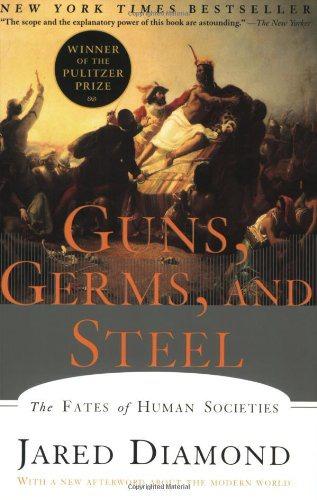
Guns, germs, and steel: the fates of human societies
by
Jared M. Diamond
Published 15 Jul 2005
The people who did create a society in Australia were Aboriginal Aus- tralians. Of course, the society that they created was not a literate, food- producing, industrial democracy. The reasons follow straightforwardly from features of the Australian environment. Guns, Germs and Steel CHAPTER 16 How CHINA BECAME CHINESE I MMIGRATION, AFFIRMATIVE ACTION, MULTILINGUALISM, ethnic diversitymy state of California was among the pioneers of these controversial policies and is now pioneering a backlash against them. A glance into the classrooms of the Los Angeles public school system, where my sons are being educated, fleshes out the abstract debates with the faces of children.

The Sovereign Individual: How to Survive and Thrive During the Collapse of the Welfare State
by
James Dale Davidson
and
William Rees-Mogg
Published 3 Feb 1997
This will lead to some surprising twists. In the United States, for example, nativist sentiment has historically been tinged with more than a slight tincture of racism. This is a tradition that began with the nineteenth-century "White Caps" and Ku Klux Klan. Yet blacks, as a group, are major beneficiaries of income transfers, affirmative action, and other fruits of political compulsion. They are also disproportionately represented in the U.S. military. Therefore, they are likely to emerge, along with blue-collar whites, as among the most fervent partisans of American nationalism. Politicians willing to cater to the insecurities of those whose relative talents fall well down on Ammon's turnip will come noisily to the fore in almost every country.

Connectography: Mapping the Future of Global Civilization
by
Parag Khanna
Published 18 Apr 2016
This gives Dubai’s authorities the right to send anyone packing. The rulers’ top priority is, rightly, the Emirati nationals who have been loyal subjects for generations. They are given lavish subsidies to maintain their contentedness, forcibly promoted in foreign companies through an upscale affirmative action program known as Emiratization, and hold the upper hand in the all-important real estate market. But extreme wealth has meant the onset of serious lifestyle diseases such as obesity for men and plummeting fertility for women (now among the lowest in the world). As the relentless demographic dilution of Emiratis continues, the U.A.E.’s most noted intellectual dissident, Abdulkhaleq Abdulla, speaks of the “agony of being a minority in my own country.”4 He laments that Emiratis are too few in number and powerless over the forces reshaping the country to enjoy for much longer the global phenomenon Dubai has become.
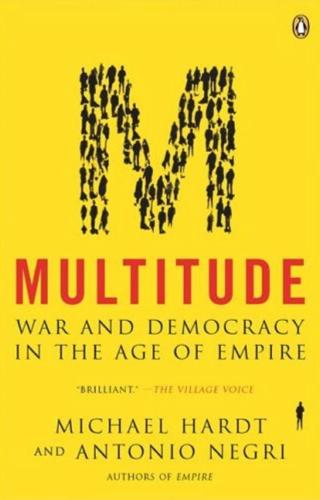
Multitude: War and Democracy in the Age of Empire
by
Michael Hardt
and
Antonio Negri
Published 1 Jan 2004
GRIEVANCES OF RIGHTS AND JUSTICE Rights and justice have traditionally been guaranteed by national constitutions, and thus protests have been cast in terms of “civil rights” directed to national authorities. Significant grievances in terms of civil rights continue to be expressed today, particularly among minority groups in the dominant countries, such as struggles to maintain affirmative action for women and people of color in the United States, for the rights of Muslims in France, and for native populations in Canada and Australia. Increasingly, particularly in the subordinated countries, where the nation-state is not capable of guaranteeing rights, protesters appeal directly to international and global authorities, shifting the discussion from “civil rights” to “human rights.”

The State and the Stork: The Population Debate and Policy Making in US History
by
Derek S. Hoff
Published 30 May 2012
Gillon, “That’s Not What We Meant to Do”: Reform and Its Unintended Consequences in Twentieth-Century America (New York: W. W. Norton, 2000), chap. 4. Also see David M. Reimers, Still the Golden Door: The Third World Comes to America, 2d ed. (New York: Columbia University Press, 1992), chap. 3; and Hugh Davis Graham, Collision Course: The Strange Convergence of Affirmative Action and Immigration Policy in America (New York: Oxford University Press, 2002), chap. 3. 149. Carl Bon Tempo, Americans at the Gate: The United States and Refugees during the Cold War (Princeton: Princeton University Press, 2008). 150. For example, a recent summation by a leading immigration scholar— Roger Daniels, Guarding the Golden Door: American Immigration Policy and Immigrants since 1882 (New York: Hill and Wang, 2004)—includes nary a mention of overpopulation concerns. 151.
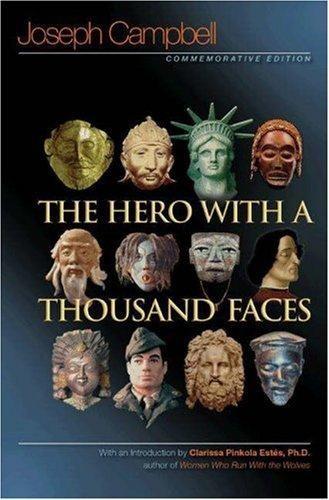
The Hero With a Thousand Faces
by
Joseph Campbell
Published 14 Apr 2004
Examples might be multiplied, ad infmitum, from every corner of the world.1" Refusal of the Call Often in actual life, and not infrequently in the myths and popular tales, we encounter the dull case of the call unanswered; for it is always possible to turn the ear to other interests. Refusal of the summons converts the adventure into its negative. Walled in boredom, hard work, or "culture," the subject loses the power of significant affirmative action and becomes a victim to be saved. His flowering world becomes a wasteland of dry stones and his life feels meaningless—even though, like King Minos, he may through titanic effort succeed in building an empire of renown. Whatever house he builds, it will be a house of death: a labyrinth of cyclopean walls to hide from him his Minotaur.
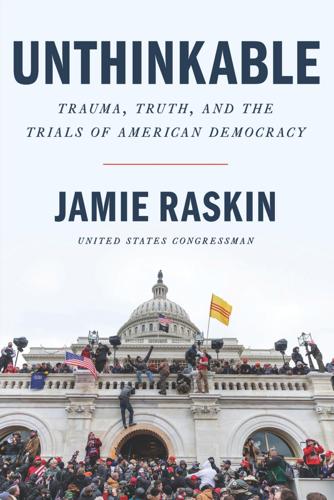
Unthinkable: Trauma, Truth, and the Trials of American Democracy
by
Jamie Raskin
Published 4 Jan 2022
In his gentlemanly and fair-minded manner, Tommy asked D’Souza whether his defense of the fairness of America’s racial hierarchy had properly accounted for the massive government discrimination in distributing veterans’ benefits and preferences after World War II to whites but not to African Americans and the accumulated disadvantages attached to such discrimination. The clarity and moral power of Tommy’s questions threw D’Souza for a loop, and he dodged the question. Then he struggled in vain to regain his footing and his audience, finally telling Tommy that if he really supported race-based affirmative action (which Tommy quickly pointed out he had never mentioned), he should walk over to the registrar’s office and give up his seat at Amherst, an argument that was an irrelevant distraction and a complete non sequitur on multiple levels that got the audience laughing in amazement. Tommy’s calm and thoughtful response put this ad hominem attack to shame.
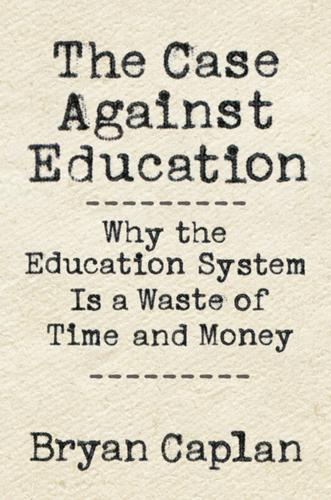
The Case Against Education: Why the Education System Is a Waste of Time and Money
by
Bryan Caplan
Published 16 Jan 2018
January. http://www.cbo.gov/sites/default/files/cbofiles/attachments/01-30-FedPay.pdf. Fang, Hanming. 2006. “Disentangling the College Wage Premium: Estimating a Model with Endogenous Education Choices.” International Economic Review 47 (4): 1151–85. Fang, Hanming, and Andrea Moro. 2011. “Theories of Statistical Discrimination and Affirmative Action: A Survey.” In Handbook of Social Economics, vol. 1A, edited by Jess Benhabib, Matthew Jackson, and Alberto Bisin, 133–200. Amsterdam: Elsevier. Farber, Henry, and Robert Gibbons. 1996. “Learning and Wage Dynamics.” Quarterly Journal of Economics 111 (4): 1007–47. Farrell, Edwin, George Peguero, Rasheed Lindsey, and Ronald White. 1988.

The Rough Guide to Cape Town, Winelands & Garden Route
by
Rough Guides
,
James Bembridge
and
Barbara McCrea
Published 4 Jan 2018
Apart from between 2002 and 2006, when Capetonians elected an ANC mayor and administration, the Western Cape and its capital have bucked South Africa’s trend of ANC dominance, by repeatedly electing the National Party and, after its dissolution, the Democratic Alliance (DA). During the ANC’s first term in national government under Mandela (1994–1999), affirmative action policies and a racial shift in the economy led to the rise of a black middle class, but even so this represented a tiny fraction of the African and coloured population, and many felt that transformation hadn’t gone far enough. Indeed, after twenty-five years of non-racial democracy, Cape Town is still a very divided city.

Evil Geniuses: The Unmaking of America: A Recent History
by
Kurt Andersen
Published 14 Sep 2020
His administration created several whole new regulatory bureaucracies targeting business, between 1970 and 1972 alone establishing the Consumer Product Safety Commission, the Occupational Safety and Health Administration, and the Environmental Protection Agency—the last empowered by two expansive new laws that set strict standards on air and water pollution. After he signed the Equal Employment Opportunity Act to root out racial and gender discrimination, his administration quadrupled its staff and increased its enforcement power, almost tripled the budget for civil rights enforcement, and instituted the first affirmative action policies throughout government to hire more nonwhite workers. “I am now a Keynesian in economics,” the president said in 1971, officially surrendering to the New Deal consensus, certifying his rejection of the Goldwater right. He proved it beyond doubt that summer by undertaking a radical intervention in the free market, ordering a three-month freeze of all U.S. prices and wages in order to slow inflation—a year after Milton Friedman himself had warned there was “nothing that could do more in a brief period to destroy a market system” than imposing “governmental control of wages and prices.”

Your Computer Is on Fire
by
Thomas S. Mullaney
,
Benjamin Peters
,
Mar Hicks
and
Kavita Philip
Published 9 Mar 2021
The strong emphasis on the nuclear family in West German legislation must be seen in the larger Cold War context. The East German government gave women full equal rights in 1949, and the 1950 Law for the Protection of Mothers and Children created social services for working mothers, expanded women’s opportunities to work, and mandated equal wages and affirmative action programs. In West Germany, by contrast, the notion of the “family as a refuge” from outside influences (Fluchtburg Familie) promoted the idea that families provided security against the intrusions of (Communist or National Socialist) totalitarian governments as well as against the degrading forces of individualism, materialism, and secularism.22 Labor Organization in IBM’s German Subsidiary Of course, there was no such thing as an IBM family.
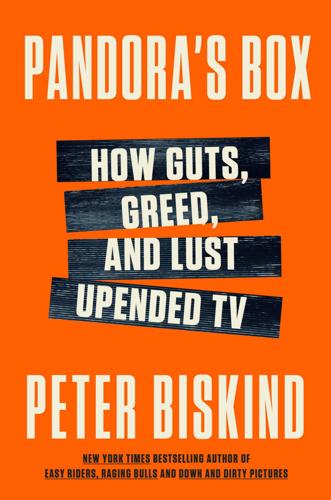
Pandora's Box: How Guts, Guile, and Greed Upended TV
by
Peter Biskind
Published 6 Nov 2023
She hungers for controversy, and if none is available, she creates it herself. She is always ready to say the impolitic thing, to roil still waters by heaving a stone or two into the pond. As she puts it, “I have this deep-rooted ‘fuck you’ nature.”9 As befits the queen of political incorrectness, Kohan is a fierce enemy of quotas, affirmative action, and conventional pieties of any kind, left or right. The #MeToo orthodoxy is no different. She’s not interested in diversity in the writers’ room, and believes a good writer can portray any color of any gender. “It’s always about talent,” she says. “If you can find talent with tits, terrific, [but] it’s hard enough to find a good writer, so I don’t care what’s dangling.”10 She adds, “I would never want anyone to tell me I couldn’t write male characters because I have a vagina.”11 Far from hung up on likability, Kohan revels in the flaws of her characters.
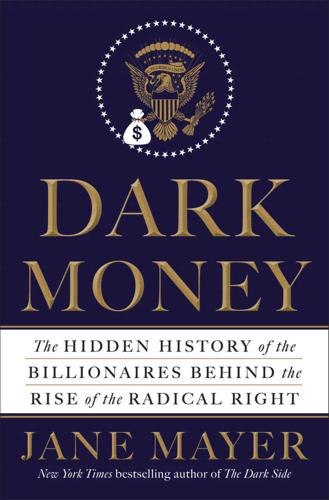
Dark Money: The Hidden History of the Billionaires Behind the Rise of the Radical Right
by
Jane Mayer
Published 19 Jan 2016
In 1966, a federal judge sided with a group of female employees who sued the company for paying them lower wages than male employees operating the same machinery. Then, in 1968, federal authorities targeted the company for racially discriminatory hiring policies. In response, the company agreed to institute an affirmative action plan. Meanwhile, unionized employees at the plant went on strike, causing an eleven-day work stoppage. The combination of antitrust, race, gender, and labor disputes at the company provided fertile ground for the politics of backlash building in the executive suite. — The Bradley Foundation, meanwhile, also became increasingly politicized.
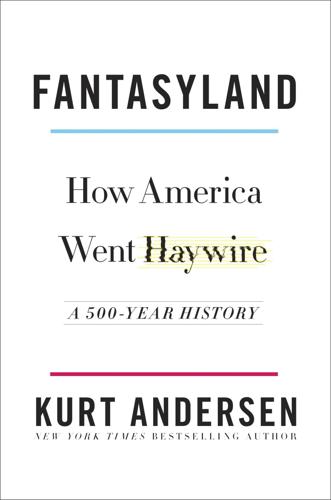
Fantasyland: How America Went Haywire: A 500-Year History
by
Kurt Andersen
Published 4 Sep 2017
It was reasonable, wasn’t it, to be concerned about violent crime spiraling upward from the 1960s through the ’80s? We don’t want social welfare programs to encourage cultures of poverty and dependency, do we? Although the dog-whistled resentment of new policies disfavoring or seeming to disfavor white people became more audible, Republican leaders publicly stuck to not-entirely-unreasonable arguments: affirmative action is an imperfect solution; too much multiculturalism might Balkanize America; we shouldn’t let immigrants pour into the U.S. helter-skelter. But in this century, more Republican leaders started cozying up to the ugliest fantasists, unapologetic racists. When Congressman Ron Paul ran for the 2008 GOP nomination, he appeared repeatedly with the neo-Nazi Richard Spencer, who was just coining the term “alt-right” for his movement.

The Power Elite
by
C. Wright Mills
and
Alan Wolfe
Published 1 Jan 1956
In his emphasis on politics and economics, Mills underestimated the important role that powerful symbolic and moral crusades have had in American life, including McCarthy’s witch-hunt after communist influence. Had he paid more attention to McCarthyism, Mills would have been more likely to predict such events as the 1998–99 effort by Republicans to impeach President Clinton, the role played by divisive issues such as abortion, immigration, and affirmative action in American politics, and the continued importance of negative campaigning. Real substance may not be high on the American political agenda, but that does not mean that politics is unimportant. Through our political system, we make decisions about what kind of people we imagine ourselves to me, which is why it matters a great deal at the end of the twentieth century which political party is in power. 5 How, then, does The Power Elite stand in retrospect?

A Generation of Sociopaths: How the Baby Boomers Betrayed America
by
Bruce Cannon Gibney
Published 7 Mar 2017
Legacy preferences, racial restrictions, Jewish quotas, and other systems that had perpetuated the old order began giving way to more merit-based criteria, while generous subsidies ensured that admissions offers were more than notional promises. Colleges may not have been as diverse as they are now in absolute terms, but the midcentury revolution in admissions makes today’s affirmative action (partly eroded by Boomer courts and legislatures) seem timid. Having supplied adults with college degrees, jobs, roads, and homes, all of great but sometimes indirect benefit to the Boomers, the nation began to care expressly for its newest citizens—a debt the Boomers never seriously considered repaying.
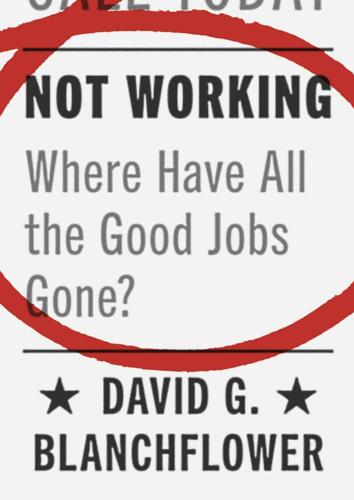
Not Working: Where Have All the Good Jobs Gone?
by
David G. Blanchflower
Published 12 Apr 2021
Le Pen, Brexit, and Trump provided alternative narratives for those who were left behind by economic change. They were told it wasn’t their fault. These were the people who were bypassed by the march of progress, globalization, and technology. The elites told them they were ignorant, racist bigots. They needed to get with the program and to get with gay marriage and affirmative action and Black Lives Matter. Arguments in the United States over LGBTQ bathrooms were the last straw. Everyone in their town thought Hillary Clinton was a crook. It was the fault of immigrants, job-killing regulations, Muslims, trade deals, TPP, NAFTA, and the EPA. The mainstream media, what Rush Limbaugh calls the “drive-by media,” and their fake news were culpable.
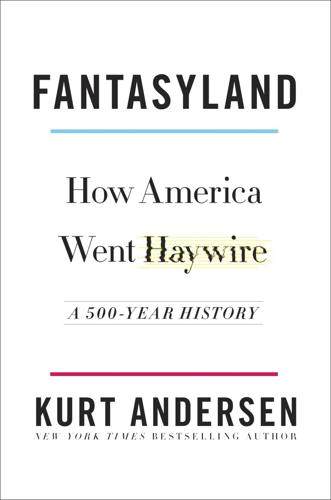
Fantasyland
by
Kurt Andersen
Published 5 Sep 2017
It was reasonable, wasn’t it, to be concerned about violent crime spiraling upward from the 1960s through the ’80s? We don’t want social welfare programs to encourage cultures of poverty and dependency, do we? Although the dog-whistled resentment of new policies disfavoring or seeming to disfavor white people became more audible, Republican leaders publicly stuck to not-entirely-unreasonable arguments: affirmative action is an imperfect solution; too much multiculturalism might Balkanize America; we shouldn’t let immigrants pour into the U.S. helter-skelter. But in this century, more Republican leaders started cozying up to the ugliest fantasists, unapologetic racists. When Congressman Ron Paul ran for the 2008 GOP nomination, he appeared repeatedly with the neo-Nazi Richard Spencer, who was just coining the term “alt-right” for his movement.
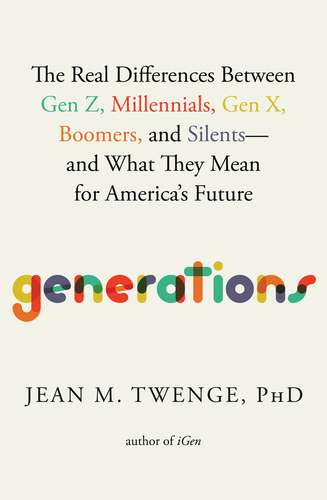
Generations: The Real Differences Between Gen Z, Millennials, Gen X, Boomers, and Silents—and What They Mean for America's Future
by
Jean M. Twenge
Published 25 Apr 2023
A geophysicist at the University of Chicago, Abbot was scheduled to speak about his research on climate change and the potential for life on other planets. Before long, however, controversy arose. Abbot had written an op-ed and recorded some videos proposing that university admissions be based solely on merit and thus both affirmative action and legacy admissions should be abolished. The op-eds and videos were not connected to his geophysics research or his planned lecture. A group of MIT students and alumni took to Twitter to demand that Abbot be disinvited, saying that his invitation to speak was “unacceptable,” “infuriating,” and inconsistent with the department’s DEI (diversity, equity, and inclusion) efforts.

The WikiLeaks Files: The World According to US Empire
by
Wikileaks
Published 24 Aug 2015
Carter argued that his foreign policy was based on an historical vision of the US role in a changing world: “Our policy is rooted in our moral values, which never change. Our policy is reinforced by our material wealth and by our military power. Our policy is designed to serve mankind.” These policies were reflected in Carter’s Foreign Service appointments. Secretary of State Cyrus Vance practiced affirmative action, increasing the proportion of minorities from 6 to 11 percent and of women from 10 to 14 percent in the Foreign Service. Black ambassadors, a rarity during the Nixon years, were appointed to serve all over the world, not just in black states. By the end of his term, Carter had appointed a record fourteen black ambassadors.

Thank You for Being Late: An Optimist's Guide to Thriving in the Age of Accelerations
by
Thomas L. Friedman
Published 22 Nov 2016
You always see things you had no idea were possible. I had that experience in 2014, when I decided to write a column about General Electric’s research center in Niskayuna, New York. GE’s lab is like a mini United Nations. Every engineering team looks like one of those multiethnic Benetton ads. But this was not affirmative action at work; it was a brutal meritocracy. When you are competing in the global technology Olympics every day, you have to recruit the best talent from anywhere you can find it. On that trip I was given a tour of GE’s three-dimensional manufacturing unit by its then director, Luana Iorio. In the old days, explained Iorio, when GE wanted to build a jet engine part, a designer would have to design the product, then GE would have to build the machine tools to make a prototype of that part, which could take up to a year, and then it would manufacture the part and test it, with each test iteration taking a few months.

Extreme Money: Masters of the Universe and the Cult of Risk
by
Satyajit Das
Published 14 Oct 2011
Richard Fuld, CEO of Lehman Brothers for almost two decades, was “neither a leader nor a dazzling intellect.”21 In the culture of the deal, banks endlessly copy each other’s strategies or products, chasing the same customers, competing on price and the ability to take risk. Complex systems of fealty exist within firms. Fiercely secretive, bankers are reluctant to share information, seeking an edge over their internal and external competitors. People eat what they kill. Despite affirmative action programs and considerable lip service to modern employment practices, the firms are backward in their treatment of women, minorities, and cultural differences. A proudly misogynist culture dominates at every level. Joseph Akermann, head of Germany’s Deutsche Bank, thought that adding women to the firm’s men-only management board would make the forum “more colorful and prettier.”22 In 2007 Morgan Stanley agreed to pay $62 million to settle a number of gender discrimination claims bought by female employees.
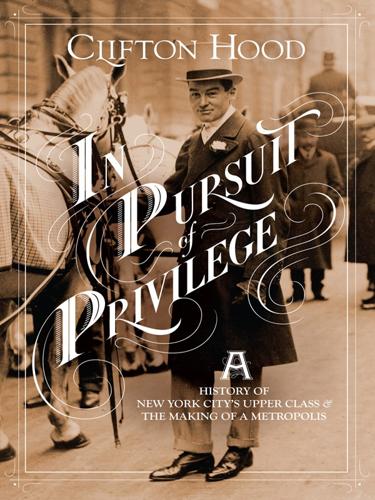
In Pursuit of Privilege: A History of New York City's Upper Class and the Making of a Metropolis
by
Clifton Hood
Published 1 Nov 2016
Princeton University, Department of Public Information, press release, April 17, 1972, Folder 1, Box 1, Series 1, Admissions Office Records, PU; The Freshman Herald, Class of 1976 (Princeton University: n.p., 1972), 89–95; Untitled document. C. 1947, Folder 2, Box 1, Series 1, Admissions Office Records, PU. 114. “Interviews: Shelby Cullom Davis, ’30,” Daily Princetonian, October 4, 1974; T. Harding Jones, “Opinion: The Importance of Seeking Conservatives,” Daily Princetonian, May 29, 1974; Paul Mogin, “Opinion: Affirmative Action,” Daily Princetonian, March 12, 1975; Sonia Sotomayor, “Opinion: Anti-Latino Discrimination at Princeton,” Daily Princetonian, May 10, 1974; Paul Horowitz to the chairman, Daily Princetonian, April 14, 1975; Ken Foote to the chairman, Daily Princetonian, April 13, 1976; and Daily Princetonian, October 16, 1973, February 20 and April 29, 1976. 115.

The Generals: American Military Command From World War II to Today
by
Thomas E. Ricks
Published 14 Oct 2012
After retiring as chairman of the Joint Chiefs of Staff in September 1993, he had veered onto the thin ice of an old general involved in politics. Like Douglas MacArthur, he delivered the keynote address at a Republican National Convention. Just as the Chicago convention of 1952 had soured on MacArthur in response to his talk, the San Diego convention of 1996 was unhappy with Powell’s speech, in which he emphatically supported affirmative action and abortion rights. (In another odd parallel, the 1952 Republican convention had been the first to nominate a World War II vet, Eisenhower, while the 1996 convention would be the last, selecting another Kansan, Sen. Bob Dole.) Had Powell left for private life at that point, his reputation would have remained unblemished.
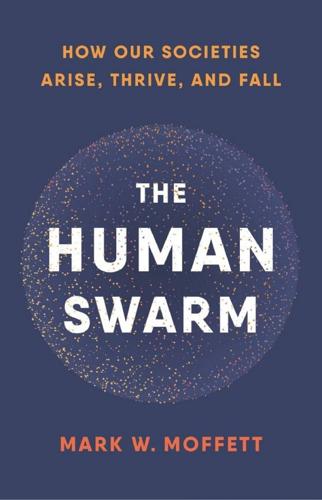
The Human Swarm: How Our Societies Arise, Thrive, and Fall
by
Mark W. Moffett
Published 31 Mar 2019
Such inequalities ensure that when a society is under pressure, the feeling of unity is brought to bear with most conviction among the majority, who have more to lose, and more feebly among any ethnicities treated as second-class citizens.47 This disparity between majority and minorities in their perception of proprietorship over the society is the Achilles heel of nations. Even in cosmopolitan America, where all men are created equal by decree, respect for citizenship is one thing, for the diversity of those citizens another. Though minorities can have clashing interests and prejudices about each other, support for pro-diversity policies such as affirmative action is greater among them, with diversity reinforcing diversity in ways that bring discord with the monolithic majority.48 In such matters both the minorities and the majority can be equally self-serving. NATIONALISTS AND PATRIOTS Not only did Paleolithic societies lack ethnicities, but their people would not have abided the emergence of radical groups such as the American Tea Party and Occupy Wall Street movements.
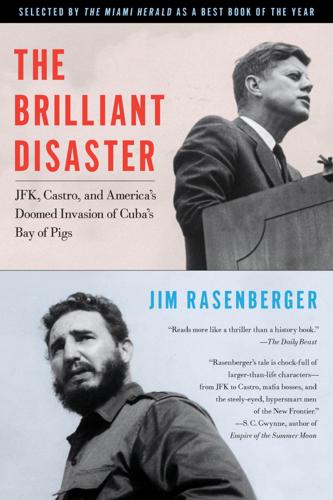
The Brilliant Disaster: JFK, Castro, and America's Doomed Invasion of Cuba's Bay of Pigs
by
Jim Rasenberger
Published 4 Apr 2011
“What would you do?” “I would find a proper legal cover and I would go in.” Kennedy shook his head. If he moved on Cuba, Khrushchev might move on Berlin. “I just don’t think we can take the risk.” When the subject turned to another front in the war against communism, Laos, Nixon again suggested “affirmative action.” Again, Kennedy demurred. “I don’t see how we can make any move in Laos, which is five thousand miles away, if we don’t make a move in Cuba, which is only ninety miles away.” Nixon assured Kennedy that if he did take action in either Cuba or Laos, he could count on Nixon’s support, even if they faced each other again in 1964.

Lonely Planet Kenya
by
Lonely Planet
At the Lancaster House conference in the early 1960s, where Kenya’s independence constitution was negotiated, just one out of around 70 Kenyan delegates was a woman and the resulting constitution made no mention of women’s rights. Under the 2010 constitution things improved, at least on paper: women are described as a disadvantaged group, and the bill guarantees equal treatment for men and women, protects against discrimination on the basis of gender, calls on the state to undertake affirmative-action policies and sets aside 47 special seats for women in parliament – as a result, 19% of MPs in 2014 were women, compared with 1% in 1990. Even so, major discrepancies remain in the ways in which women and men have access to essential services and resources, such as land and credit, while traditional gender roles still largely prevail.

Slouching Towards Utopia: An Economic History of the Twentieth Century
by
J. Bradford Delong
Published 6 Apr 2020
For the right wing also embraced a cultural critique, one squarely aimed at the very advances in racial and gender equality sketched above. Social democracy, conservatives declared in a Polanyian backlash, was flawed because it treated unequals equally. Remember University of Chicago economics professor and Nobel laureate George Stigler, who wrote in 1962—before the Civil Rights Act, before the Voting Rights Act, before affirmative action—in his essay “The Problem of the Negro” that, as he saw it, Blacks deserved to be poor, to be disliked, and to be treated with disrespect: “The problem is that on average,” Stigler wrote, “he lacks a desire to improve himself, and lacks a willingness to discipline himself to this end.” And although prejudice might be part of the problem, “the Negro boy,” as Stigler put it, “is excluded from more occupations by his own inferiority as a worker”: “Lacking education, lacking a tenacity of purpose, lacking a willingness to work hard, he will not be an object of employers’ competition.”

Ghost Train to the Eastern Star: On the Tracks of the Great Railway Bazaar
by
Paul Theroux
Published 9 Sep 2008
‘They worry about democracy, as I do,’ he said. ‘The scheduled classes, for example.’ By scheduled classes he meant the lowest castes in India – the Dalits, the so-called Untouchables, whom Mahatma Gandhi called Harijans, Children of God. What Kuldeep was questioning was a system that had its American parallel not only in affirmative action programmes for minorities, but also in the stubborn resistance by the rest of the populace to the preferential fast track. ‘They are now better-off than we are. They have so many advantages. These advantages were written into the law, to lift them up, and these laws have never been taken off the books.

The Mad Man: Or, the Mysteries of Manhattan
by
Samuel R. Delany
Published 1 Jun 2015
He was here the night it happened. I mean, we must have talked about it nonstop over the whole next three weeks! He doesn’t come in a lot anymore. But he drops in from time to time. You say this is going to get you your Ph.D?” “Well, it’ll make my getting it a little easier.” “Okay. I’m going to do my bit for affirmative action. Look, write your phone number down here.” He handed me a card. “Next time Blossom comes in, I’ll ask him if he wants to talk to you about it. And if he says okay, I’ll give you a call, and you can set up a time to talk.” “He was in the bar? When it happened.” “He said he saw the whole thing.
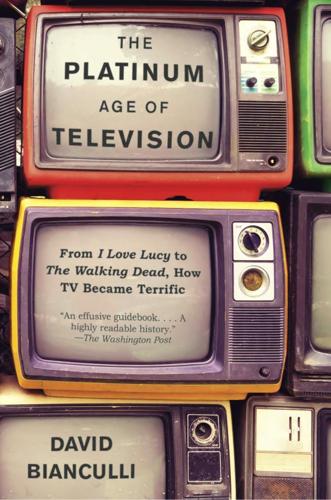
The Platinum Age of Television: From I Love Lucy to the Walking Dead, How TV Became Terrific
by
David Bianculli
Published 15 Nov 2016
Archie was highly opinionated but rarely came out on the winning end of an argument, whether with a close friend who came out as gay or the celebrity Sammy Davis Jr., who, visiting the Bunker home to retrieve a briefcase left in Archie’s cab, put his own stamp on a good-bye photograph by kissing Archie on the cheek just as the picture was taken. It was one of the series’s most famous episodes, but from the very start, with a premiere episode that talked about religion and atheism, affirmative action, and several different minority groups, All in the Family was intentionally inflammatory. And according to creators of other groundbreaking TV series, it was influential as well. “All in the Family was extraordinary,” says James L. Brooks, whose own controversial sitcom, The Mary Tyler Moore Show, was part of a 1973–74 CBS Saturday night schedule that began with All in the Family, followed by M*A*S*H, The Mary Tyler Moore Show, The Bob Newhart Show, and The Carol Burnett Show.
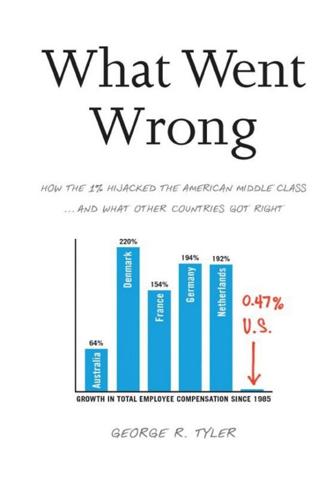
What Went Wrong: How the 1% Hijacked the American Middle Class . . . And What Other Countries Got Right
by
George R. Tyler
Published 15 Jul 2013
Republicans of that era—Dwight Eisenhower, Nelson Rockefeller, Everett Dirksen, Howard Baker, and Charles Percy—reflected what historians such as Sean Wilentz and Douglas Brinkley term the socially progressive “heart and soul” of the pre-Reagan-era Republican Party.6 They joined Harry Truman, John Kennedy, and Lyndon Johnson in expanding the American social safety net. Community-focused Democrats like Hubert H. Humphrey were supported by centrist politicians such as Percy and Dirksen who represented the Republican Party in Washington. President Nixon, for example, supported: affirmative action and wilderness preservation; Indian tribal autonomy; Supplemental Security Income for the disabled and elderly poor; and the antipoverty Family Assistance Plan. He also quadrupled the staff of the Occupational Safety and Health Administration and established the Environmental Protection Agency and the Consumer Product Safety Commission.
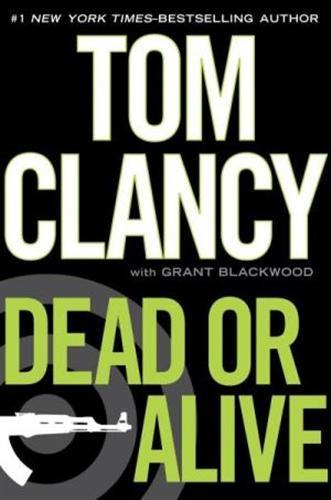
Dead or Alive
by
Tom Clancy
and
Grant (CON) Blackwood
Published 7 Dec 2010
Reynolds was well spoken and had a good academic mind, of that there was no question, but after nearly a year on the job, she was still far, far down the wrong side of the learning curve and realizing, McMullen suspected, that the real world and the world of textbooks had little in common. And what about you, Wes, old buddy? he thought. A black man, under thirty, a Yale-graduated lawyer with half a dozen years of quasigovernmental think-tank service under his belt. He had no doubt the media and gossip mavens said the same thing about him: He was an affirmative-action choice and in way over his head, which was partially true, at least the last part. He was in over his head but learning to swim quickly. The problem was, the better his backstroke got, the dirtier the pool seemed. Kealty was a decent enough man, but he was too concerned with the big picture—about his “vision” for the country and its place in the world—and less focused on the “how” of making it happen.
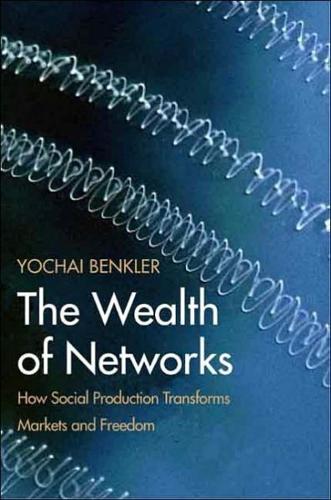
The Wealth of Networks: How Social Production Transforms Markets and Freedom
by
Yochai Benkler
Published 14 May 2006
As the following three decades unfolded and the South was gradually forced to change its ways, the cultural domain continued to work out the meaning of race relations in the United States and the history of slavery. The actual slogging of regulation of discrimination, implementation of desegregation and later affirmative action, and the more local politics of hiring and firing were punctuated throughout this period by salient iconic retellings of the stories of race relations in the United States, from Guess Who's Coming to Dinner? to Roots. The point of this chapter, however, is not to discuss race relations, but to understand culture and cultural production in terms of political theory.
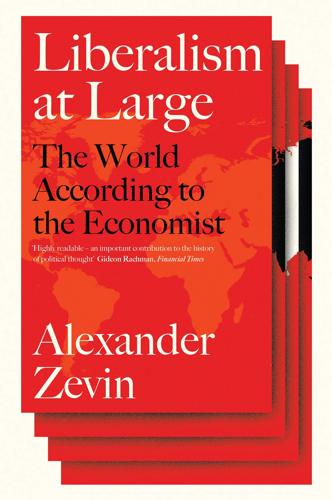
Liberalism at Large: The World According to the Economist
by
Alex Zevin
Published 12 Nov 2019
The first stemmed from a fascination with rightwing American intellectuals: William Buckley at National Review, Milton Friedman and the Chicago boys, and the neoconservatives, including Irving Kristol, Daniel Bell, Seymour Lipset and Nathan Glazer. Aside from the admirable ‘cutting edge’ they gave to US foreign policy, the neocons were also ‘muckrakers of the Right’, ‘discrediting government’ by exposing affirmative action and welfare dependency. In fact, they were quite close to the philosophical traditions of the Economist. ‘As they grew older, neocons embraced old-fashioned liberalism – the liberalism of meritocratic values, reverence for high culture and a vigorous mixed economy.’ Looking past the misleading label, ‘America’s conservatism is an exceptional conservatism: the conservatism of a forward-looking commercial republic rather than the reactionary Toryism of old Europe.’
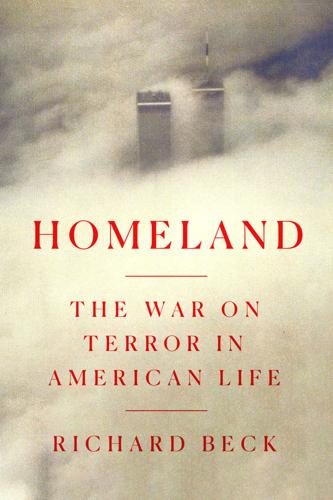
Homeland: The War on Terror in American Life
by
Richard Beck
Published 2 Sep 2024
“The incompetence was color-blind,” he said.[34] When right-wing shock jocks such as Rush Limbaugh went on the air and called him “Osama Obama,” he thought it better to shrug and “let them have their fun” rather than send even more media attention their way by responding.[35] He told voters that inner-city poverty was just as much a problem of indifferent parenting as it was of intentional government neglect, he sympathized with white people who thought affirmative action was unfair, and he was even willing to admit to racist views of his own. “If I’m honest with myself,” he wrote in his campaign book The Audacity of Hope, “I must admit that I’m not entirely immune to…nativist sentiments. When I see Mexican flags waved at proimmigration demonstrations, I sometimes feel a flush of patriotic resentment.
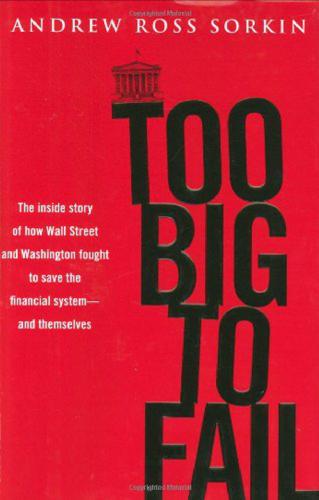
Too big to fail: the inside story of how Wall Street and Washington fought to save the financial system from crisis--and themselves
by
Andrew Ross Sorkin
Published 15 Oct 2009
In the early 1980s, the Dartmouth campus was a major battleground of the culture wars, which were inflamed by the emergence of a right-wing campus newspaper, The Dartmouth Review. The paper, which produced prominent conservative writers such as Dinesh D’Souza and Laura Ingraham, published a number of incendiary stories, including one that featured a list of the members of the college’s Gay Students Association, and another a column against affirmative action written in what was purported to be “black English.” Taking the bait, liberal Dartmouth students waged protests against the paper. Geithner played conciliator, persuading the protesters to channel their outrage by starting a rival publication. After college, Geithner attended the Johns Hopkins School of Advanced International Studies, where he graduated with a master’s degree in 1985.
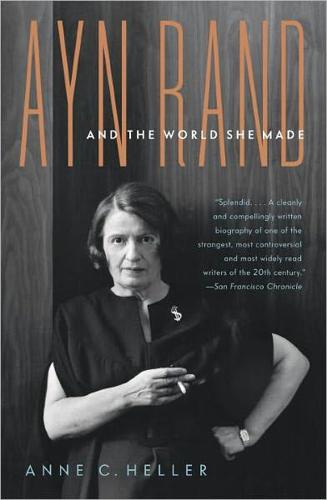
Ayn Rand and the World She Made
by
Anne C. Heller
Published 27 Oct 2009
“I am tired of saying ‘I told you so,’” she wrote. The essays she contributed to almost every issue were not the sweeping policy statements of the 1960s; they were sometimes illuminating, more often bitter assessments of current events. She published position papers against the war on poverty, “selfless” hippies, affirmative action, government funding of the arts, international relief aid, the Watergate Committee—as well as in opposition to the Vietnam War and a wave of 1970s anti-obscenity legislation. She crafted a brilliant and farsighted critique of B. F. Skinner’s 1971 behaviorist manifesto, Beyond Freedom and Dignity, in which she aptly quoted Victor Hugo: “And he [the student Marius in Les Misérables] blesses God for having given him these two riches which many of the rich are lacking: work, which gives him freedom, and thought, which gives him dignity.”
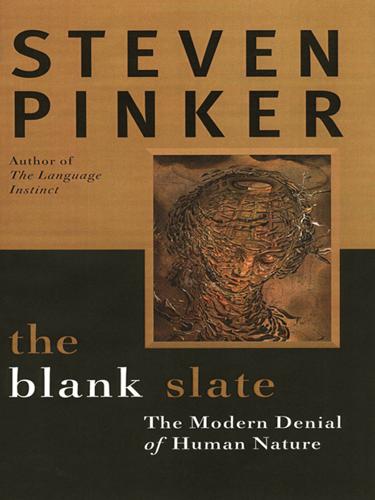
The Blank Slate: The Modern Denial of Human Nature
by
Steven Pinker
Published 1 Jan 2002
Proponents of a laissez-faire economic policy tend to value patriotism and the family, and they are more likely to be old than young, pragmatic than idealistic, censorious than permissive, meritocratic than egalitarian, gradualist than revolutionary, and in a business rather than a university or government agency. The opposing positions cluster just as reliably: if someone is sympathetic to rehabilitating offenders, or to affirmative action, or to generous welfare programs, or to a tolerance of homosexuality, chances are good that he will also be a pacifist, an environmentalist, an activist, an egalitarian, a secularist, and a professor or student. Why on earth should people’s beliefs about sex predict their beliefs about the size of the military?
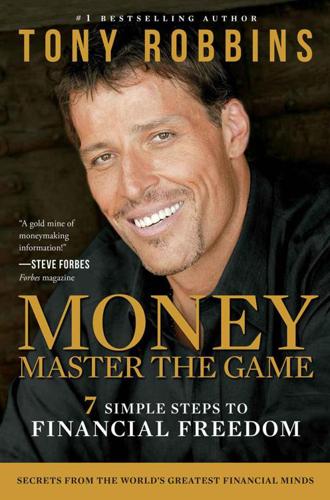
MONEY Master the Game: 7 Simple Steps to Financial Freedom
by
Tony Robbins
Published 18 Nov 2014
When he returned with his fistful of diplomas, they told him they weren’t hiring Americans due to the recent reduction of financial support from Washington to the World Bank. It was a punch in the gut for him. Not knowing where to turn, he responded to a newspaper ad from UC Berkeley. After they hired him as a professor, he later found out that they ran the ad to comply with affirmative action, but had no intention of getting qualified candidates to respond. Years later he moved on to Wharton to teach multiple subjects related to finance. But he isn’t just a bookworm. A paper he had written on how to reduce risk in bond portfolios caught the attention of Goldman Sachs. He took a leave of absence and spent seven years running the risk management and insurance division at Goldman Sachs (while still holding down a part-time professorship at Wharton).

Global Catastrophic Risks
by
Nick Bostrom
and
Milan M. Cirkovic
Published 2 Jul 2008
Gathering more evidence may not bring biased reasoners to agreement. (2) People who are more skilled sceptics - who know a larger litany of logical flaws - but apply that skill selectively, may change their minds more slowly than unskilled reasoners. Taber and Lodge (2000) examined the prior attitudes and attitude changes of students - when exposed to political literature for and against gun control 1 00 Global catastrophic risks and affirmative action, two issues of particular salience in the political life of the United States. The study tested six hypotheses using two experiments: 1 . Prior attitude effect. Subjects who feel strongly about an issue - even when encouraged to be objective - will evaluate supportive arguments more favourably than contrary arguments. 2.
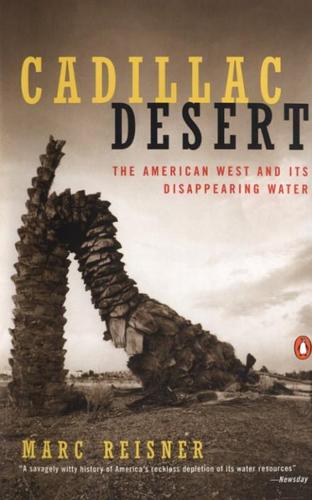
Cadillac Desert
by
Marc Reisner
Published 1 Jan 1986
Loewenthal was, of course, enough of a cynic to know exactly why they had. The participants, taken together, represented the power establishment of southern California with an exquisite sense of proportion. Railroads, banking, newspapers, utilities, land development—it was a monopolists’ version of affirmative action. Besides, William Kerckhoff was a prominent conservationist and friend of Gifford Pinchot, the chief of the U.S. Forest Service, whose influence with President Theodore Roosevelt could prove invaluable. Harriman’s railroad owned a hundred miles of right-of-way along the aqueduct path that the city would need permission to cross, and Huntington owned the building that housed the regional headquarters of the Reclamation Service!

The Atlantic and Its Enemies: A History of the Cold War
by
Norman Stone
Published 15 Feb 2010
Myron Magnet, a scholar of English literature who knew his nineteenth century, wrote (in 1993) The Dream and the Nightmare and it was easy for him to catalogue the failures of the ‘Great Society’: as Reagan said, ‘We declared war on poverty, and we lost.’ There was also a failure, though a more complicated one, as regards America’s racial problem. ‘School bussing, more public housing projects, affirmative action, job-training programs, drug treatment projects . . . multi-cultural curricula, new textbooks, all-black college dorms, sensitivity courses, minority set-asides, Martin Luther King Day, and the political correctness movement at colleges’ had only led, all in all, to rather greater apartheid than before.
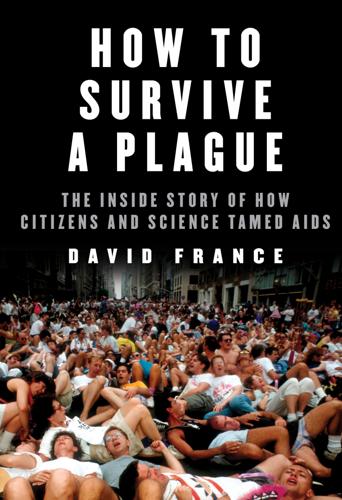
How to Survive a Plague: The Inside Story of How Citizens and Science Tamed AIDS
by
David France
Published 29 Nov 2016
As a consolation, early on he issued an executive order barring discrimination on the basis of sexual orientation or “affectional preference,” bringing New York in line with a number of other progressive cities. But his measure was decidedly limited, covering only the agencies under his direct control, including the police, but specifically barring any affirmative action on the grounds that intentionally reaching out to the community would be, as he tactlessly put it, “insane.” Nonetheless, the executive order was hugely controversial. Anita Bryant’s anti-gay religious coalition, which she called Save Our Children, helped foment a frothy backlash across the country.

How the Mind Works
by
Steven Pinker
Published 1 Jan 1997
One might argue that it is unfair to deny a social benefit to individuals because of factors they cannot control, or that a victim of discrimination experiences it as a uniquely painful sting, or that a group of victims is liable to react with rage, or that discrimination tends to escalate into horrors like slavery and genocide. (Those who favor affirmative action could acknowledge that reverse discrimination is wrong but argue that it undoes an even greater wrong.) None of these arguments is affected by anything any scientist will ever claim to discover. The final word on the political non-implications of group differences must go to Gloria Steinem: “There are really not many jobs that actually require a penis or a vagina, and all the other occupations should be open to everyone.”

Clear and Present Danger
by
Tom Clancy
Published 2 Jan 1989
Clipped to his belt was a portable telephone whose electronic chiming was noticeable over the rumble of the tractor. Jack switched off as he hit the activation button on the phone. "Hello." "Jack? Rob." "How you doing, Robby?" "Just got myself frocked." "Congratulations, Captain Jackson! Aren't you a little young for that?" "Call it affirmative action, lettin' the aviators catch up with the bubbleheads. Hey, Sissy and I are heading over to Annapolis. Any problem we stop by on the way?" "Hell, no. How about lunch?" "Sure it's no trouble?" Jackson asked. "Robby, give me a break," Ryan replied. "Since when did you get humble on me?" "Ever since you got important and all."

The Bonfire of the Vanities
by
Tom Wolfe
Published 4 Mar 2008
“Jimmy,” Andriutti said to Caughey, “did you know that Jewish guys—Larry, I don’t want you to take this personally—did you know that Jewish guys, even if they’re real stand-up guys, all have one faggot gene? That’s a well-known fact. They can’t stand going out in the rain without an umbrella or they have all this modern shit in their apartment or they don’t like to go hunting or they’re for the fucking nuclear freeze and affirmative action or they wear jogging shoes to work or some goddamn thing. You know?” “Gee,” said Kramer, “I don’t know why you thought I’d take it personally.” “Come on, Larry,” said Andriutti, “tell the truth. Deep down, don’t you wish you were Italian or Irish?” “Yeah,” said Kramer, “that way I wouldn’t know what the fuck was going on in this fucking place.”

1967: Israel, the War, and the Year That Transformed the Middle East
by
Tom Segev
Published 2 Jan 2007
This attitude still prevailed in 1966. “We must try and bring European culture to the Mizrahi communities,” said the writer Haim Hazaz. The story of this attempt is one of accomplishments and errors, illusion and sobriety, goodwill and arrogance to the point of racism, deliberate and nondeliberate discrimination, and affirmative action both useful and harmful. Above all, it is a story of alienation: the Ashkenazis found it difficult to live with the Mizrahim, who in turn found the Ashkenazis trying. The intermarriage rate in 1967 was approximately 15 percent. A study conducted among young people revealed that Ashkenazi youth felt alienation, and even hostility, toward Mizrahim.

Gorbachev: His Life and Times
by
William Taubman
In 1950 it was clear to Gorbachev what an ambitsioznyi country boy should do next—“apply to nothing less than the most important university of all, Moscow State University.”4 MGU was to the USSR what Harvard is to the United States—except that in the Soviet Union there was almost nothing else, no Yale, Princeton, or Stanford, no Ivy League, no equally distinguished state universities, no elite liberal arts colleges. Moscow the city was itself unique: Washington, New York, Chicago, Los Angeles all rolled into one, the seat of government, industry, culture, even the film industry: the place to shine if you wanted to rise. To be sure, the Soviet Union had its own version of “affirmative action”: students like Gorbachev of working-class origin enjoyed special favor in university admission. Although he was from a peasant family, his father’s job as a combine driver lifted him to “most-favored” proletarian status. And his Order of the Red Labor Banner certainly wouldn’t hurt; in fact, in the end he was admitted without having to take the required entrance examination.

Before the Storm: Barry Goldwater and the Unmaking of the American Consensus
by
Rick Perlstein
Published 17 Mar 2009
“Father-son” decision is in NYT, August 25, 1964. “He exploded”: Martin to Moyers, September 22, 1964, LBJWHAM53. The AFL-CIO budgeted $12 million: Joel Seldin, “The AFL-CIO’s $12 million Backlash Cost,” NYHT, September 8, 1964. For 53 to 47 poll, see Pam Rymer state-by-state summary, AHF, Box W¾. For Cornell affirmative action experiment, see Donald Alexander Downs, Cornell ’69: Liberalism and the Crisis of the American University (Ithaca, N.Y.: Cornell University Press, 1999), 49. For Salinger: Pierre Salinger, With Kennedy (Garden City, N.Y.: Doubleday, 1966), 390. 419 For “frontlash” hear, for example, LBJT, 6408.39/5.

Surfaces and Essences
by
Douglas Hofstadter
and
Emmanuel Sander
Published 10 Sep 2012
Below are listed some concepts — just a minuscule subset of the concepts that our culture abounds in — the possession of which would seem to give us a substantial leg up on people from previous generations or centuries: Positive and negative feedback, vicious circle, self-fulfilling prophecy, famous for being famous, backlash, supply and demand, market forces, the subconscious, subliminal imagery, Freudian slip, (Edipus complex, defense mechanism, sour grapes, passive-aggressive behavior, peer pressure, racial profiling, ethnic stereotype, status symbol, zero-sum game, catch-22, gestalt, chemical bond, catalyst, photosynthesis, DNA, virus, genetic code, dominant and recessive genes, immune system, auto-immune disease, natural selection, food chain, endangered species, ecological niche, exponential growth, population explosion, contraception, noise pollution, toxic waste, crop rotation, cross-fertilization, cloning, chain reaction, chain store, chain letter, email, spam, phishing, six degrees of separation, Internet, Web-surfing, uploading and downloading, video game, viral video, virtual reality, chat room, cybersecurity, data mining, artificial intelligence, IQ, robotics, morphing, time reversal, slow motion, time-lapse photography, instant replay, zooming in and out, galaxy, black hole, atom, superconductivity, radioactivity, nuclear fission, antimatter, sound wave, wavelength, X-ray, ultrasound, magnetic-resonance imagery, laser, laser surgery, heart transplant, defibrillator, space station, weightlessness, bungee jumping, home run, switch hitter, slam-dunk, Hail Mary pass, sudden-death playoff, make an end run around someone, ultramarathon, pole dancing, speed dating, multitasking, brainstorming, namedropping, channel-surfing, soap opera, chick flick, remake, rerun, subtitles, sound bite, buzzword, musical chairs, telephone tag, the game of Telephone, upping the ante, playing chicken, bumper cars, SUVs, automatic transmission, oil change, radar trap, whiplash, backseat driver, oil spill, superglue, megachurch, placebo, politically correct language, slippery slope, pushing the envelope, stock-market crash, recycling, biodegradability, assembly line, black box, wind-chill factor, frequent-flyer miles, hub airport, fast food, soft drink, food court, VIP lounge, moving sidewalk, shuttle bus, cell-phone lot, genocide, propaganda, paparazzi, culture shock, hunger strike, generation gap, quality time, Murphy’s law, roller coaster, in-joke, outsource, downsize, upgrade, bell-shaped curve, fractal shape, breast implant, Barbie doll, trophy wife, surrogate mother, first lady, worst-case scenario, prenuptial agreement, gentrification, paradigm shift, affirmative action, gridlock, veganism, karaoke, power lunch, brown-bag lunch, blue-chip company, yellow journalism, purple prose, greenhouse effect, orange alert, red tape, white noise, gray matter, black list… Not only does our culture provide us with such potent concepts, it also encourages us to analogically extend them both playfully and seriously, which gives rise to a snowballing of the number of concepts.

Fodor's California 2014
by
Fodor's
Published 5 Nov 2013
The park changed hands several times in the following tear-gas-filled months, with the fence coming down for the last time in 1972. A colorful mural on the side of Amoeba Records (Haste Street at Telegraph Avenue) offers the protestors’ version of park history. Although the area around People’s Park and Sather Gate may seem quiet now, issues such as affirmative action and tuition increases still bring protests to the steps of Sproul. Protests over civil rights, war, and other inequities march through the center of the campus, though students also gather to rally for sports events, social gatherings, and shows of school spirit. –Chris Baty * * * Getting Here and Around BART is the easiest way to get to Berkeley from San Francisco.
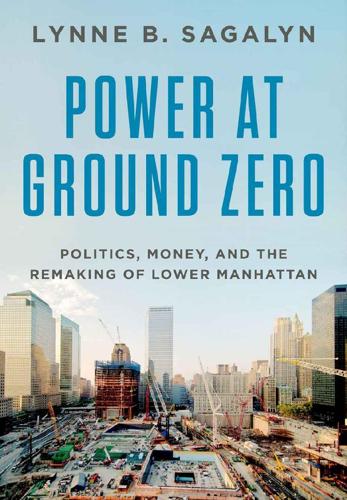
Power at Ground Zero: Politics, Money, and the Remaking of Lower Manhattan
by
Lynne B. Sagalyn
Published 8 Sep 2016
Jick, a social scientist specializing in leadership consulting, to serve as a facilitator among the many stakeholders involved with the memorialization process. He worked closely with the drafting committees, which were “struggling with the question of how to create a memorial that will take all of us through an arc of emotions ranging from the darkest moments of gloom and loss to heroic and life-affirming actions.”17 Contini also put together a series of talks for the families and the community on memorial-related topics to provide insight into the process of commemoration and present for discussion a variety of historical, social, and artistic perspectives, “fabulous talks and open discussions that touched on sensitive issues,” she said.18 Paul Goldberger was among the six19 asked to speak to the group, and his words, some of the most moving of his writings, addressed the paradoxes and contradictions and things that are not quite as they appear at Ground Zero.

The Best of 2600: A Hacker Odyssey
by
Emmanuel Goldstein
Published 28 Jul 2008
Equal Access Clearly, the emerging long-distance companies have to be protected against AT&T, so that they can have a fighting chance. If AT&T were to lower its rates, everyone would use them. Because of AT&T’s position, it’s much easier for them to do this, and reestablish a monopoly. This is prevented by the divestiture agreement, which regulates AT&T more than the other companies. In a weird way, it’s kind of like affirmative action. Another way of protecting the new companies is to give them equal access to the network that AT&T built. What good is it to be allowed to compete for long-distance customers if by the time the customer gets to your dial tone, it sounds like it’s on another planet? Not to mention the fact that to use your service, the customer has to use a touch-tone phone and key in a whole lot of extra numbers to identify himself, since 83 94192c03.qxd 6/3/08 3:30 PM Page 84 84 Chapter 3 your company isn’t able to identify him as soon as he picks up the phone, like AT&T can.
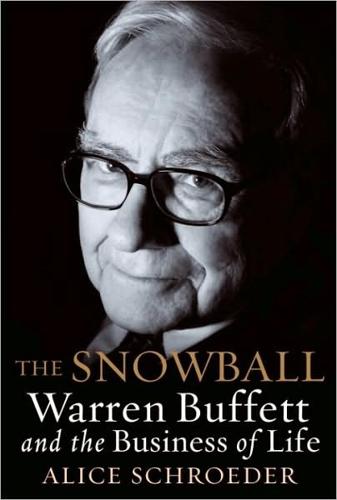
The Snowball: Warren Buffett and the Business of Life
by
Alice Schroeder
Published 1 Sep 2008
He just said, ‘Lookit, Warren. In Wall Street still, the “white-shoe” firms, the big investment banks, they don’t hire Jews. We only have the ability to hire a very few people here. And, therefore, we only hire Jews.’ That was true of the two gals in the office and everybody. It was sort of like his version of affirmative action. And the truth is, there was a lot of prejudice against Jews in the fifties. I understood.” Buffett found it impossible to say anything that could be interpreted as critical of Graham, even decades later. Of course, it must have been incredibly disappointing. Couldn’t Graham have made an exception for his star student?